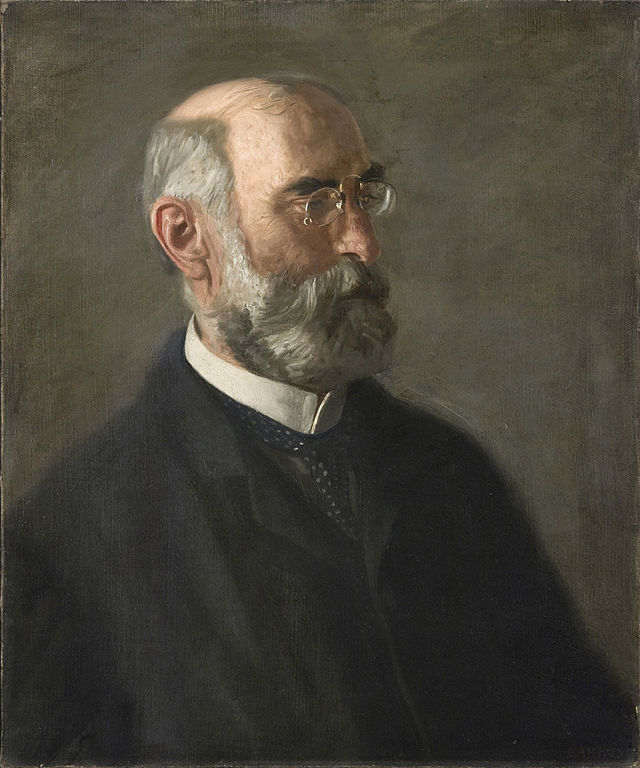CHAPTER I
THE FIRST PICTURE IN SPANISH
It was on October 26, 1866, that Thomas Eakins, then twenty-two years old, wrote home to his father the good news that he, Tom, had been admitted at last to study with Gérôme in Paris, adding that he had yet to receive his first letter from home. Later Tom sent the details of his admission and of the hazing he had undergone at the hands of the other students. The day before being admitted Tom Eakins had met Harry Moore; they had exchanged cards and discovered that they had both studied at the Academy of the Fine Arts in Philadelphia. Harry Moore and his uncle went to see Gérôme and explained how far Harry had come just to study with the great master. They were so convincing in regard to Harry's eagerness and sincerity that Gérôme wrote personally to the Minister and to the Inspector of the School. Even so, when Tom Eakins got his card of admission on a Friday, Harry Moore still had none. However, Tom decided after Friday's hazing in the studio that he had better hunt up Harry and give him some advice about the students. Harry was not in the Latin Quarter but in the American part of Paris near the Arch of Triumph. And it turned out that instead of having a little chamber, Harry was living with his whole family; they had all come over with him. They could hardly believe that Tom Eakins had really been admitted to the Imperial School, and Harry Moore became downcast and fearful for himself. Consequently, the next day the two went together to the school where Tom Eakins was told that Harry Moore also would be accepted. Harry was so afraid he had been refused that he had great difficulty in finding his pencil and paper on which, since Harry was deaf and dumb, Eakins finally wrote the happy word, "admitted." Then they went to Gérôme's together. Since Harry Moore knew very little French, Tom took him around and bought all his paints and things for him. Also Tom explained to the students about Harry's being deaf and dumb, and fortunately they respected his infirmity. Although the official card of admission did not reach Harry until Tuesday, both boys started sketching the day before so they could commence at the beginning of a pose. It was for them the beginning of three years of study in Paris.
Eakins learned the deaf and dumb sign language to be able to talk with Harry Moore. Often Tom Eakins would be invited to the Moores for Sunday dinner. He thought them fine people and enjoyed hearing them talk about all the old families of Philadelphia, especially the Quakers. The fault that Tom disliked in the Moores was their passion for relics. One Sunday before dinner they all went together to the Garden of Plants where Tom particularly enjoyed the elephants, camels and monkeys, especially the little baby elephant; but later in the Museum old Mrs. Moore tried to take some bark from a cedar of Lebanon and the other Moores tried to break a piece off a quartz crystal to send to a son in California. After that they were all closely watched by a guard in a soldier cap who followed them about until they left.
When the Christmas and New Year holidays came around, the Moores invited Tom Eakins for elaborate dinners. He wrote home about the good turkey with potato filling and the absence of cranberries. "You can have no idea of the trouble one has in France to get things done in American style. Mrs. Moore had to show the girl constantly what she must do and watch her closely that she didn't get any chestnuts into the bird, so strong was her desire to do so. The mince pie was to be cooked at a confectioner's about a half mile off. An hour before dinner a little boy came in bearing a portable oven in which the pie was cooking all the time. He wanted Mrs. Moore to see if it was all right."
For his part, Tom Eakins heard Mrs. Moore say she had seen some statuettes in a store window and had not gone in to buy them only because she had feared her French was not equal to the transaction, so Tom bought them for her as a New Year's Gift. He made a date with Harry Moore's sister to go to a Catholic Cathedral on the Feast of Kings.
During his first summer in Paris, Tom Eakins had to escort a visitor from home thru the Louvre, a man who feared he might possibly not appreciate all the old masters and who wanted therefore to take notes. Tom would remark, "Now this picture tells a story; there is an idea in it." At this the guest would call his wife back and say, "Anna, I tell thee there is an idea in this picture," speaking always in such a loud voice that the party attracted great admiration. What the guest managed to get really interested in was a pair of vases which threw sound from one to another with the effect of a whispering gallery.
Eakins lived in Paris with a Monsier Crépon, No. 64 Rue de 1'ouest, to which he had early moved from a hotel. In the fall when Tom had first arrived there, he had written home to his mother:
"Have you been out on the river? It must be very beautiful now with the red and yellow leaves of the trees. The leaves are all changing here too, but they do not grow bright; they only fade and die. Since I left America I have not seen the sun except two or three days in mid ocean, and although the weather is not positively bad, it is far from good. It is always cloudy, sometimes it drizzles a little, sometimes it is foggy. Crépon says the winter is commencing and this is a specimen of it. It never gets very cold here. The Seine does not freeze. The snow is seldom more than an inch deep. We sometimes see such days at home in November. The spring however is said to be very beautiful here and I shall await it with some impatience."
When Eakins wrote letters home from France he took great care to tell those things that would be of particular interest to the person he was writing. His letters to his mother and to Aunt Eliza, who lived with the Eakins family, are charming. In the letter below, the Zane Street School he mentions was the public elementary school in Philadelphia, between Seventh and Eighth on Zane Street, which is between Arch and Market Streets, from which he had gone on to high school.
Paris, July 17, '67
Dear Aunt Eliza:
"I am sending again by mail another batch of stupid grammar stuff and I am sorry that I did not learn dressmaking as well as grammar in my Zane St. school.
"I have never seen a long frock in the streets or a gaudy one, but they all dress very plain. At church the only perceptible difference between the duchess and the laborer's wife is that the duchess is the cleanest of the two. Pews are unknown but each one takes her little praying stool and all sit together. But the washwoman goes home in an omnibus and my lady in a state carriage mounted by flunkeys. These footmen and coachmen dress up like monkeys always with long white stockings and high hats with pompoms in them and they often powder their hair. They are low dogs and very insolent to honest people. They put on great airs and when they stare at me I always laugh in their faces. They are the only men I can never respect.
"The ladies of the court are said to dress very grand and to wear very low dresses which commence somewheres below the breasts but I have never been there. There are not wanting too stories of immorality connected with this court.
"I have seen the Empress a great many times and once when she came to the school I could have touched her had I reached out my arm. Her frock was short so that we saw her legs when she got in her carriage. I have a sneaking idea that her frock was cut bias fold."
Eakins knew well what fashions would mean to his Aunt Eliza. She and his mother, Carolyn Cowperthwaite, were both daughters of Margaret Jones Cowperthwaite, who was very little and plump and lived on Mt. Vernon Street with them. Sallie Shaw, a friend of theirs, remembered it as a very harmonious family. But in youth Margaret Jones, herself an Episcopalian, had married a stern Quaker, and her Cowperthwaite daughters, Eakins' mother and Aunt Eliza, had had a difficult time being fashionable. Eliza would have to take her scarlet crepe dress and jewelry out of the house in her reticule and. put them on at a friend's. Another sister was permitted a few tucks in her bonnet and used to wear a pink bow on the side of it that would be away from her father as they sat in meeting house. Thomas Eakins must have known the tale when he chose to write his Aunt Eliza about the fashions in Paris.
Tom could be charming too when he was writing his Dad, although most of the letters to his father Tom made very practical. However, their house at home in Philadelphia was almost itself a menagerie, so that it is not surprising on one occasion Tom wrote from Paris:
Dear Daddy,
"There is a great big garden at Paris with cages and wire fences in it and these are full of animals, so that it is like a menagerie, only you don't have to pay to go in. There are elephants, lions, tigers, bears, hippopotamusses, rhinocerusses, camels, snakes, wolves, monkeys and a great many other kinds of beasts. I went there last week, and saw some boys throwing bread in to the zebras. A zebra is a horse with stripes all over him so that he looks as if he was painted. There are a great many little birds at Paris that are very saucy. When the boys would throw the bread the zebras would run after it as fast as they could but very often the little birds would be flying off with it before they got to it and this made them very mad and the boys always threw it near the birds on purpose to make the zebras mad. When the zebras would see the little birds flying away with the bread they would turn around and kick at them. Once the boy broke off a very nice little piece of bread and showed it to the zebra for a long time and made him anxious. Then he threw it way off and the zebra ran after but a little bird was flying off with it up above his head when he got to the place. He was so mad at the bird that although it was so high he kicked after it, and he reared up so much to do it, that he kicked himself over and fell down so that all the people laughed at the foolish zebra."
One year in May Tom wrote his father and Margaret about a walk in the Park:
Dear Daddy and Maggie,
"Last evening after dinner I was taking a walk along the garden of the Luxemburg and when I came to the end I saw a crowd of men and little boys and girls and little babies and their nurses. I went up to see what they were looking at and found out it was a man who had a little dog and a monkey.
"The little dog would stand up on his hind legs and dance for a very long time that way, while the man played on a whistle and beat a drum, and afterwards he would be horse for the little monkey and would turn to the right or left and would walk or trot or gallop just as the man would say. When any one gave the man a penny the man would throw it to the monkey and the monkey would catch it in his hand and put it in his little pocket and then turn around and take off his hat and bow to the person that had given it.
"His name was Funny. His master gave him a little sword and then fenced with him for some time, but when he stopped to look round at something Funny hit him as hard as he could and made all the little children laugh. One time his master said, "Funny, how do the naughty little children do when they don't want to go to school," and Funny put his little hands over his eyes and hollered as loud as ever he could and then all the nurses laughed and some of the children too but not all.
"Funny had a little fiddle to play music on but it was not as good music as Fanny makes on her piano. When he was done his master said he had not played well and told him to give him the fiddle, but the monkey gave it to him over his head and he had to say it was a good tune and ask him please before he could get it away from him. Funny played the tambourine too and rung a bell while he galloped around dog-back and when he dropped his bell and his master told him to pick it up without getting off of the dog's back he reached out his long tail and picked it up with that. At halfpast eight o'clock it was beginning to get so dark that Funny couldn't see to catch the pennies and so the man stopped and little Funny jumped up into his master's arms and kissed him and they went away. The little dog wagged his tail and barked and ran on before, and I hope they had all a good dinner after they got home."
Tom's oldest sister Fanny, Frances Eakins, loved music all her life; Margaret (Maggie), the next in age, was a close companion for Tom; Caroline (Caddy), who completed the family, was a child with toys when he was studying in Paris.
By November of 1867 Eakins was writing Mommy and Aunt Eliza that he had no fashions to tell about just then because the people were thinking more of bread and prison than of fashion.
"So I will tell you about my housekeeping for I have again moved. My first studio was on the pavement one step below the ground paved with brick and the walls with dark bluish color. It was a nice large studio and I thought I could live there very well, but it was impossible to keep it clean. I bought a big broom but the way the dirt would stick in those bricks was a caution. I had spread a piece of carpet down by my bed to tread on for if I trod on the bricks I had to go wash my feet. Then I had to be very careful to tuck in the bed clothes well at night for if they touched the bricks they were soiled too. One day I found that the wall had the same effect on them and then I made up my mind to wash the wall where my bed was. Sculptors had had my studio before me and a sort of dust had settled all over the wall. It took me nearly all day to scrub a place big enough for my bed and I think that after I had worked for about two hours right hard and had skinned my little finger that if any one had come to me and offered to clean house for me and all for nothing I would not even have got mad. Crépon came in and put up a big curtain all around my bed for me so that I was not on the whole very uncomfortable, but my trouble after all was to keep dry. I thought it would be very easy with a fire, but the fire would go out sometimes at night or I would be away all day and although I never got a cough or other sickness I was apt to have a cold in the head. Crépon's little baby got sick and the doctor told him he must get away from his quarters to an upstairs place, that besides the danger to his wife and child he might find himself some day with rhumatism. Crépon told the doctor how he kept fire going all the time but the doctor said that that did not do much good although some one told him no one ought to live on a ground floor. When I heard all this I began to think of myself and concluded I had better leave my quarters too. So I have taken in place of my old studio an upstairs one in the same building. I am now rather more 64 than 62 rue de 1'ouest. Crépon is looking around for a new house but has not yet been as lucky as I was. Having a child it is very hard to rent a room in Paris. Children interfere with the comforts of close neighbors and children seem to have no business to be in Rues for it is not the fashion. They should be given to common ignorant strange women to nurse, one of whom has just been sentenced to prison for killing little babies and keeping on charging for them weekly months after their death when she pretends they are just dead.
"The place I am in now is perfectly dry and comfortable. It has a nice wooden floor of oak which may be waxed if one likes it but I'm sure I'll never take that trouble; but what is so good about it is that when one takes the broom the dirt dont stick fast but slips easy along the floor and is put all in a pile. The studio is not so large as the other one but plenty large enough. Over the entry is a little room just big enough for my bed and then another place for my clothes and writing materials. I go to bed up a little ladder and there is a door and balcony which will prevent me from falling down into the studio if I should take to sleep walking. This little room is papered and I can easily keep my bed and everything perfectly nice."
In a previous letter Tom had even made drawings of his furniture, including the enormous bed with heavy curtains for all four sides, curtains hung from a substantial frame and draped over the footboard in the drawing. All French bedsteads seemed to have curtains which were an advantage for those who didn't have to get up early and Tom would like to know when his mother would ever be up. if she had long curtains to her bed. As for himself, he was glad he was living across from the old palace of Luxembourg with an arsenal or something right back of his place, because the soldiers from both with their trumpets and drums managed to wake him up at the right time every morning. He was careful to include a drawing of his bureau so Aunt Eliza would rest easy in her mind about his having a place to put his clothes. However, the bureau was supplemented by wooden pegs on the wall with a curtain to pull over his things to protect them from the smoke from the fireplace. The drawings included the wash stand with its pitcher and basin. He was delighted that there were no bugs and not even any fleas.
Also during his second November in Paris Tom wrote:
"Dear Father,
"I thought my studio down stairs would do but not keeping dry I have changed to one upstairs which costs however 200 francs more although considerably smaller, and my rent is 850. I received your cheque for 1000 francs for which I feel extremely grateful and I will be careful not to waste any of it. I will soon send you another account of my expenses. I am right well and hard at work but in the dumps the last of the week, for I made a drawing on my canvass according to Gérôme's directions for Wednesday and then he said not bad, that will do, now I will mix your colors which you will put on. I have not been able to make them gee together and have got a devil of a muss and will get a good scolding tomorrow morning.
"Crépon has furnished my studio completely with Saute's things and some of his own as he will not probably have room for them when he takes an up stairs place. He even had a bedstead so that all I have bought is my bed mattress and covers. I am perfectly comfortable and would be happy if I could make pictures.
"About that I am not so down hearted as I have sometimes been. I see much more ahead of me than I used to, but I believe that I am seeing a way to get at it and that is to do all I see from memory. I believe I am at least keeping my place in my class and have made friends with the best painters. Gérôme is very kind to me and has much patience because he knows I am trying to learn and if I stay away he always asks after me and in spite of advice I always will stay away the antique week and I often wish now that I had never so much as seen a statue antique or modern till after I had been painting for some time."
Samuel Murray, the most intimate friend of Eakins during the last twenty-five years of the latter's life, remembered that Eakins had always said his father had told him when he went abroad to study, "You learn to paint the best you can, Tom; you'll never have to earn your own living." Nevertheless, while he was abroad, Tom Eakins sent his father meticulous detailed accounts of his various expenses. In the spring of '68 one such itemized list contained the purchase of a copy of Rabelais for 1.75 francs. Eakins was not a reader, and there is no way of knowing if he read much of this book after he had bought it.
However, if he did read the book by Rabelais, admiration for that monk's great knowledge of anatomy would have predisposed Eakins to take well in his stride the absence from Rabelais of all Victorian standards of modesty. With his own knowledge of anatomy Eakins would, with the rest of the world, have enjoyed the manner of Gargantua's birth; with his knowledge of French, Eakins must have smiled at the naming of the giant from the phrase "Que grand tu as"; and Eakins must have been glad for his Latin when he bought Rabelais, since so often the point of Rabelaisian joking lies in the small Latin comment that ends a story. It is of interest that when he was forty-six Rabelais fled from his convent of Fontenay where thru fifteen years he had laid the foundations of his great learning, fled from the persecution of fellow priests who feared the effect of the Latin and Greek he was learning. Eakins could not have foreseen that when he himself was forty-four he too would be forced out, in a manner that seemed to him very unfair, from a place of learning that had meant much to him thru years. Except for the New Testament in the Latin translation, Eakins read very little.
His expense accounts shed amusing light on the way Eakins lived in Paris.
"Monday night Aug. 3d '69
"Dear Mommy,
"My accounts I let run on without setting to work at them for a long time but to night Bill and I had a settling between us and that gave me a good chance to send you my expenses. But I forget where I left off when I last sent you my accounts so I will commence a little way back and you will see as where to commence.
| Kindling and charcoal (my half) | 1.00 |
| Hammer and broom and tacks (ditto) | 1.80 |
| Head and a hand plaster casts | 5.00 |
| Pair of shoes | 20.00 |
| Photograph of Gérôme | 1.00 |
| Opera of Martha | 2.00 |
| Another photograph | 1.00 |
| Hair cut | .50 |
| 4 Photographs life studies | 8.00 |
| 1 group of students | 1.50 |
| 10 postage stamps | 8.00 |
| Canvasses sent from Crépon's old studio | 5.00 |
| Shoes | 12.00 |
| Saturday April 17. I draw from bank 300 francs having only 25 in pocket | |
| Rent of chamber | 69.00 |
| Colors and brushes | 2.00 |
| Photographs from nature | 4.00 |
| " " " landscape | .80 |
| Colors and brushes and canvas Chenoz' bill | 23.00 |
| Washing from April 1 | 10.00 |
| Petroleum and chimney | 2.00 |
| Cravate | 1.80 |
| Photographs | 4.20 |
| Comic opera the daughter of the regiment | 1.50 |
| Palette knife | 1.50 |
"Saturday May the 8th 1 draw from the bank 300 Fr. thinking I was most run out but find afterwards money in my drawer.
"Such is my entry in my book but I found out tonight that I had not remembered to put down a bill for a suit of clothes I got. I remember I went up to see Homer that Sunday that I paid the bill and so it must have been about that time. So I guess 1 drew out the money because I would not have enough to pay that bill and having the money forgot what it was for. I can't find the bill either but I know it was about 135.00
"I remember now that when I first went to pay the bill his wife couldn't tell me what it was and told me to wait till he was over this side of the river and he would bring it that must be how I paid it when Homer was here for it must have been about June 6 when Homer was here but I remember wearing my good clothes in May but I will leave my account now as I have set it down in my book as if I paid it when I got the clothes.
| Coat vest pantaloons and darning old ones | 135.00 |
| Circus | 1.00 |
| Shinn's catalogue and sending it on | 2.75 |
| Modeling wax and tools | 4.75 |
| Saloon extrance | 1.00 |
| Chamber | 55.00 |
| Waiter | 5.00 |
| Plaster cast anatomical figure and Houdons cold girl | 8.00 |
| Du Bouchet 8 plugs | 160.00 |
| Washing | 1.00 |
| Petroleum | .80 |
| Du Bouchet still another tooth | 20.00 |
| Circus | 1.00 |
| Circus Napoleon the Japanese | |
|
Friday June 4, Having in pocket
only 26 fr. I draw out 300. There remains 2053.55 ---------------------------- | |
| On Account of Poole | |
| A Postage stamp pour 2000 fr. | 1.00 |
| 2 pairs kid gloves | 9.50 |
| 2 more pairs kid gloves | 10.00 |
| Poole was down in the country and got me to attend to his things. He will pay me when he comes back. | |
| Circus 2 and Japanese once | 3.00 |
| Grand Opera Faust | 3.00 |
| Brushes Colcombs | 13.50 |
| Colors at studio | 3.00 |
| Canvass | 1.75 |
| Monday I draw from bank 300. It was smart in me to put down Monday instead of the day of the month. However it don't matter much. | |
| Straw hat | 22.00 |
| Cure Sauvage Bill and me to the Japanese | 5.00 |
| Postage stamps | 8.00 |
| Hair cutting | .50 |
| Charcoal | 1.00 |
| Fourth of July (Barometer Aunt Eliza's money) | 100.00 |
| Chamber | 60.00 |
| July 11. I again draw 300 fr. | |
| Showing Mrs. Schmitt around | 20.00 |
| Canvass and brushes | 11.00 |
| Big palette | 5.00 |
| Bill at Chenozs' | 61.00 |
| July 26. I again draw 300 to meet rent bills. | |
| Rent of chamber and water | 60.00 |
|
Rent of my studio for the three months up to the 15th of October 127.75 and 2.25 to the doorkeeper | 130.00 |
| Pincers to stretch canvas | 1.60 |
| Loan to Bonheur | 40.00 |
| I could write you a whole French novel about that which I will do some time or other. He will pay me back in September or Oct. | |
| Twice to the circus | 4.00 |
Tom Eakins seems not to have spent very much money for travel thru Europe. He was there to study seriously with Gérôme, and he spent his time doing that. However, during the summer of 1868, his father and sister Frances came to Paris in July and Tom travelled with them thru France, Switzerland, and Italy (to Florence, Rome, Naples) and to Munich in Germany. His father and Frances were back in Philadelphia by September, and Tom himself was there for Christmas, spending two months at home before returning to Paris in March. The Crowell family remembered a walking trip on the continent; Will Crowell, Bill Sartain and Tom Eakins tramped thru Germany, Switzerland, and perhaps France. They would start out with their knapsacks, separate, go different ways and meet again later on. The only record of the trip is an undated letter from Switzerland, written to his father from Zermat by Tom. He thought Zermat
"the most God forsaken place I ever saw or hope to see. The people are all either cretins or only half cretins with the goiter on their necks. They live in the filthiest mariner possible the lower apartment being privy and barn combined and they breed by incest altogether. Consequent goiters and cretins only. If I was a military conqueror and they came in my way I would burn every hovel and spare nobody for fear they would contaminate the rest of the world. When you ask them a question they grin and make idiotic motions. Jesus Christ on the cross are at every 50 yards with lots of blood and agony. We saw a congregation waiting for church. This is a week day. They go to church every day. The women were laughing as usual and picking the lice off the children's heads till the priest came. The hats the women wear are as stupid as possible, a band with gold or silver edge surrounding the crown. They all have big faces and the heads run lower than those of the flat head Indians but don't stick out behind like theirs. They are dirty as they can be and so have become contented as they can never become dirtier. The women aforesaid are not contented no more than the men. Their minds are not even capable of this sentiment. I mean to say their ancestors were contented to be as dirty as possible and they are as dirty as possible only because their ancestors were and they never would think of a change even if no trouble to make. Even the children are frightfully ugly. When a woman comes along leading a cow or sheep of ordinary intelligence you ought to see how intellectual looking and spirited the animal is alongside of the woman by contrast. They stink their houses stink worse, the water of the valley stinks, and the valley itself stinks except in a few places for instance the big French hotel we are now in. Out in Poland and down in Italy they have the cholera. It is to be hoped it will get up some of these valleys. An earthquake some years ago was a godsend in destroying half of them. The rocks thrown down the mountain sides are the biggest loose rocks I ever saw almost young mountains in themselves. We meet of course crowds of Englishmen. The only bearable ones are those who have lived in Australia a long time and were fetched up at Cape of Good Hope in Africa or the little girls too young to be prudish and English. The latter might be tamed if got away from the disagreeable associations, but it would not be worth the trouble unless to one who could find neither an American, French Italian Spanish or Chinese. Now it is raining worse then ever and the hotel is full of English. They are great hogs, so different from the French. …Chamonix is in French Switzerland nothing like this dutchwalley we're in now."
The three travellers had come from Geneva to the eastern end of the lake of that name, and here they had stayed all night at Villeneuve; then by rail, part way at least, they had continued southeast to Martigny. The third day they had "got to the top of Col de Baume by walking on our way to Mount Blanc". The fourth day they had walked to Chamonix and after dinner had gone up to the big glacier, Mer de Glace, which they had crossed, getting down by nine o'clock next day and coming back to their starting point, Martigny, by another beautiful route. It was necessary to loaf a day at Martigny, for both Bills had sore feet. After the day of ease Tom Eakins, Will Crowell and Bill Sartain went by rail to Visp and on foot to Stataen where they slept the night. The next day they reached Zermat and were forced by rain to stay there. Eakins wrote his father that "Geneva and its lakes and mountains are beautiful and as far as French is spoken so are the people, as well as intelligent", and then Tom added that frank opinion of Zermat.
Tom was blessed with a father who believed in him. Even when Tom was a little boy, his father, Benjamin Eakins, had saved his drawings and had believed the lad had talent. One of the things so treasured was an oval map of Switzerland divided into Lucerne and other districts painted pale green, pale blue and pale yellow. The printing is very straight and accurate, there is e decorative feather scroll border in tan-gray, and the map is signed "by Tom G. Eakins, Zane St. Grammar School." The C is for Cowperthwaite, his mother's maiden name. The map is a remarkably good piece of work for a child, and on it appear Martigny and Villeneuve, the latter as Volleneuvre. When he was in his teens Tom had made with white chalk or paint on manila paper a drawing probably copied from a lithograph of a dozen or so figures grouped around stone ruins. This he had signed "La Bum de Eakins". At the bottom of an accurate mechanical drawing of a worm screw Tom had sketched amusing figures of little men in odd poses. A perspective drawing of a lathe done when Tom was sixteen – his father, Benjamin Eakins, treasured such things and for the rest of his life backed Tom in his resolve to be a great painter.
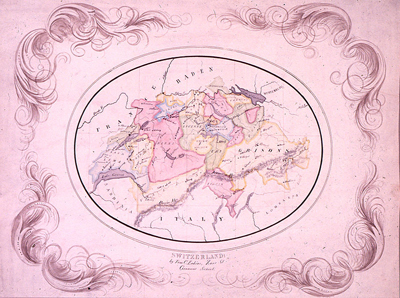
|
| Map of Switzerland |
| ca.1856 |
Always Eakins was glad that he had gone abroad to study, particularly that he had had the chance to study with Gérôme, for Gérôme was a lover of great painting and a despiser of mediocrity. He wrote in the preface for his life and works by Hering: "It is austere and profound studies that make great painters and great sculptors; one lives all one's life on this foundation, and if it is lacking one will only be mediocre". He himself has been praised for his ability to portray motion and for his great success in the use of foreshortening. But in one respect Eakins and Gérôme had little in common. Gérôme travelled often – in Egypt, Arabia, Palestine, Turkey, Russia, Italy, Algeria, Morocco, Spain. Nearly two hundred of his things are travel pictures. Eakins after nearly three years of Europe swore that if he ever got home to Philadelphia again, he'd stay there the rest of his life, which is what he did. However, both Thomas Eakins and Gérôme, who was of Spanish descent, admired the Spanish painters, particularly Velasquez, Ribera.
Much as he sincerely admired the genius of Gérôme, Thomas Eakins must have found uncongenial the elaborateness of Gérôme's establishment, the glass doors hung with Persian fabrics, the lavish curios, the marble staircase with the massive red and shining cobra coiled about the newelpost, the marble walls covered with bronzes, masks and plaques all the way up to the fourth floor which was reserved by Gérôme for studios and for his own private apartment. To offset the jarring of such ornateness, there was his love of animals, a love which equaled Eakins' own. Two favorite greyhounds of Gérôme's which he modeled in red clay appeared in his pictures. He kept hunting dogs and fine horses and was an excellent horseman. He made studies of camels and monkeys. But the animals Gérôme most enjoyed sketching were the lions; such nice lions he made them, especially when they were sleeping. His notebooks are full of lions and lion cubs in ingratiating poses, one forepaw flipped over the other, or head resting on forepaw dog-fashion, or head prone sideways on the ground. In the painting, "Love, the Conqueror", a whole cage of lions and tigers are succumbing to little winged Love, are rolling over and licking his feet. It may have been his love of lions which led Gérôme to paint "The Christian Martyrs", though in this picture of the early Christians being sent to a bloody death in the Circus Maximus he could scarcely have made his lions other than ferocious. The impossibility of putting into such a picture a cuddly lion in an endearing pose is somewhat understandable. Many of Gérôme's paintings are classical in subject; he particularly liked gladiators, which gave him an excellent opportunity to work on anatomy.
Some time after he had gotten home again to America, Thomas Eakins sent a watercolor back to France, to Gérôme. His former teacher wrote Eakins appropriate thanks for "A Rower" and sent also a telling criticism: The rower was very well drawn piecemeal but the figure as a whole lacked movement because it was arrested in the middle of a stroke; hereafter Eakins would please paint his rowers in two positions only, either at the very beginning of a stroke or at the very end of one. Gérôme was pleased to praise the general quality of the painting, the firmness and lightness of the sky, the well planned background, the charmingly executed water, exactly right, which he could not praise too much. Eakins sent Gérôme another watercolor in which the rower was bent well forward and the oars were well back, and for this he got from Gérôme the unstinted praise that it was altogether good.
Perhaps as a result of Gérôme's enthusiasm for Spain and for the Spanish painters, Tom Eakins and Harry Moore spent some time in that country after they had left Paris and before Eakins left Europe for good to come home to Philadelphia. Eakins had not been well and he wanted to go where there was sun. He considered Algiers but went instead to Madrid in the center of Spain and from there down to Seville almost in the southern tip.
"Fonda del Peninsular Madrid
Thursday Dec. 2, 1869
"Dear Father,
"I suppose and hope you got my last letter telling you of my progress my determination to come hone to stay, early this summer. I left Paris Monday night in a pouring rain of course. All my friends came to see me. If it had not been winter time and if I had not known and feared the Atlantic voyage, not being well, I would have come home straight, but since I am now here in Madrid I do not regret at all my coming. I have seen big painting here. When I had looked at all the paintings by all the masters I had known I could not help saying to myself all the time, its very pretty but its not all yet. It ought to be better, but now I have seen what I always thought ought to have been done and what did not seem to me impossible. O what a satisfaction it gave me to see the good Spanish work so good so strong so reasonable so free from every affectation. It stands out like nature itself. And I am glad to see the Rubens things that is the best he ever painted and to have them alongside the Spanish work. I always hated his nasty vulgar work and now I have seen the best he ever did I can hate him too. The best picture he ever made stands by a Velasquez. His best quality that of light on flesh is knocked by Velasquez and that is Rubens' only quality while it is but the beginning of Velasquez's. Rubens is the nastiest most vulgar noisy painter that ever lived. His men are twisted to pieces. His modelling is always crooked and dropsical and no marking is ever in its right place or anything like what he sees in nature, his people never have bones, his color is dashing and flashy, his people must all be in the most violent action must use the strength of Hercules if a little watch is to be wound up, the wind must be blowing great guns even in a chamber or dining room, everything must be making a noise and tumbling about there must be monsters too for his men were not monstrous enough for him. His pictures always put me in mind of chamber pots and I would not be sorry if they were all burnt.
"Tuesday afternoon at 2½ o'clock we started into Spain. It was still raining. The night was very cold in the mountains. At daylight we were crossing mountains with snow covering them all. At 10 minutes of seven we commenced descending. The sun got up in a clear sky a thing I had not seen for a very long while and at half past nine we were in Madrid. I was pretty weak and sick from my diarrhoea but the sight of the sun did a great deal to cure me and now I feel right well and almost as strong as ever. The sky here is a very deep blue the air is dry mountain air and the temperature 40 Fahrenheit. The people all cover the nose and mouth and wrap themselves very warm and I do the same thing. My appetite which I had lost entirely is as entirely come back again. Tomorrow night I will start to Seville where I will try to stay some time. Madrid is the cleanest city T ever saw in my life. The ladies walk the promenades with long trains like in Philadelphia and just as rich dresses what is never seen in Paris, and I don't think they are much more soiled when they come home than if they had been to a ball. The hotels are clean the privies are large commodious and built on the American not French pattern and the floors are everywhere covered with carpet or thick matting even in the picture galleries. The peasants and muleteers have very bright pretty colored dresses sometimes though they are dressed entirely in skins with the wool left on or worn off by age. There are a great many ink shops in Madrid and where a man sells a great many kinds of things he still advertises and pays most attention to his ink. What in the world the Spaniards want with ink I don't know unless for their generals to write pronouncements and proclamations with. I went to church this morning to hear mass. The music on the organ is the queerest I ever heard. It is the quickest dance nigger jig kind of music then its echo in the distance. Then another jig and it comes so sudden each time or you can't get accustomed to it. The whole cathedral floors are covered with thick matting and there are no seats. The people all keep on their knees men and women and from time to time fell their face on the ground like a Hindoo sticking the backside up in the air and then back on the knees again. Friday afternoon. The ladies of Madrid are very pretty, about the same or a little better than the Parisians but not so fine as the American girls. A good many of them are fair but the proportion is not so great of fair ones as in America. The country women are often coarse with that ugly hanging of the eye that is often supposed to represent the whole Spanish type. I have been going all the time since I have been here and I know Madrid now better than I know Versailles or Germantown and tonight I leave for Seville. I have seen the big work every day and I will never forget it. It has given me more courage than anything else ever could. The cooking is very nice here with one exception I don't like stinking fish cooked in garlic egg and oil with fresh lemon juice squeezed over it although the Spaniards even the delicate ladies seem very fond of it. The Spaniards as far as I have seen them seem to be a very good average sort of people, with good ideas or none at all.
"I would not tell anyone about my coming home. Bill Sartain thinks best too. I would not want any one to make plans hanging on my coming, and I do not care for Schussele or the young artists to know of it."
Once settled in Seville, Eakins was soon joined by Harry Moore with whom he made a habit of tramping the countryside late afternoons, getting back to the pension in time for dinner, after which the two would sit by the dining room fire and converse in the deaf and dumb language which both of them knew. They liked the Spaniards, kind and courteous people who were careful not to let their children show too much curiosity at the performance of those who used the sign language. Eakins had also studied Spanish. Will Sartain arrived in time for all three of them to enjoy some gallops on horse back during the spring. The southern climate agreed with Eakins and he felt on top of the world. He was fascinated by the Spanish gypsies and street dancers and quiet gentle-looking bull fighters, and he wanted to paint them. However, with the latter he got no further than indicating on the wall before which dancers are performing in his painting called "Street Scene in Seville" the elements of a bull fight.
|
|
This "Street Scene in Seville" is the first really ambitious painting in oils that Eakins ever did. Over five feet in height and nearly four wide, it presented the problem of color under the warm southern sun. Eakins had approached his training as an artist by the route of drawing, and he had found in Paris that the problems involved in the use of brilliant color were difficult indeed. About Christmas time in Spain he had painted head and bust of seven year old Carmalita Requena, and it was she and her parents who posed in their usual role of street dancers for this larger painting. Carmalita strikes a pose with the toe of her left ballet slipper well pointed forward, and she shakes tambourine and castanets. To Carmalita's left her mother sits on the drum she is tapping; to Carmalita's right her father stands, playing one of the horns, a cornet probably, while above his right shoulder a woman holds a child to the grilled window to watch them. In the upper right hand corner of the picture is a rectangular view of sunlit sky and palm tree and walls beyond the wall. Thomas Eakins did the painting with mixed feelings of pleasure and pain, pleasure because of the conviction that he was no longer a student now but was getting started on his career as an artist, pleasure because he could work with beautiful models right in the sun on the roof of the hotel. But he found the painting took weeks longer than he had expected it to. He could not yet work fast, and his inexperience made it necessary to keep changing his calculations drastically. Eventually it was finished. He was back in Paris in June and home in Philadelphia in the States by July 4.
Harry Humphrey Moore remained in France for most of his life, but when the First World War caused the request in 1916 for all foreigners to leave, Harry Moore in a dark French beard came back to Philadelphia and looked up Thomas Eakins fifty years after their original meeting in Paris. Eakins was still living in the three and a half story red brick house at 1729 Mt. Vernon Street in Philadelphia to which he had returned at the end of his student days and where he had found that his father had fitted up the third floor back as a studio for Tom.
Home at last from years abroad that seemed long, Eakins couldn't get enough of his family. For a year or two he spent his time painting them. He painted his three sisters: Frances, with a scarlet ribbon about her neck and a scarlet sash over a white dress, Frances playing a grand piano; Frances playing the piano with her sister Margaret listening; Margaret seated at the piano and looking down at young Caroline, who is drawing on a slate on the floor. He painted his father bending over his writing. Then Eakins painted Margaret in the buff corduroy jacket and black hat that she wore skating, and painted a head and bust study of Margaret leaning back against a cushion in a chair, and did another head and bust sketch of Margaret. The only romantic paintings which Eakins ever attempted he did, about this time, of Hiawatha in a cornfield. A water color of standing corn with heads in the tassels was ruined by accident and destroyed. An oil on canvas was also of a field, but without corn, in which the dark figure of Hiawatha stands looking down at a shadow figure stretched out on the ground, the figure of Mondamin, friend of man, whom Hiawatha faint with fasting had fought, wrestling at sunset, and had overthrown. From Longfellow's Song of Hiawatha it was Hiawatha's Fasting that Eakins was depicting, the Indian legend of the coming of the corn. Hiawatha made a grave as he had been commanded, placed Mondamin in it with earth "soft and loose and light above it," kept it "clean from weeds and insects" and kept driving off the ravens until at last a "small green feather" shot up above the ground, announcing the arrival of that great gift, corn, for man. In the sunset sky are clouds shaped like animals – bear, buffalo, antelope, turkey. Then Eakins painted the Crowells, who were practically part of the Eakins family. His portrait of Katherine Crowell is sixty-two and a half inches by fifty, three times as large as the other portraits he had done so far and those he did immediately after that. She wears a white dress and is sitting in the high backed chair in which Eakins afterwards often posed his sitters. She holds an opened red fan in her right hand while with her left she plays with a brown kitten in her lap. Dr. Henry Ritter has noticed the arthritic fingers. It is a warm painting in mahogany red and golden brown and warm flesh colors. Whether Eakins painted it before or after he and Katherine became engaged nobody seems to know. He painted, too, Katherine' s younger sister Elizabeth with her school books and brown poodle; and he painted their mother, Mrs. James W. Crowell. It was their brother Will Crowell who had taken the walking trip in Europe with Eakins and who later married Eakins' oldest sister, Frances.
|
|
| |||||||||
|
|
|
|
|
|
|
|
Then on June 4 of 1872 Thomas Eakins' mother died and abruptly Tom stopped painting the family.
Going outdoors he became interested in the problems of perspective as presented by the difficulties of trying to paint a boat in motion. He tackled those problems so effectively that while he was still in his twenties he developed a valuable and original contribution to artist's perspective, which he later taught to his own students but which he would never give to anyone else to teach.
For Eakins, the mathematical sciences held a charm of security, a charm of dependability, which they have held for many before him and after. He saw more clearly than most that mathematics is the foundation of all beauty because mathematics is the science of proportion, and therefore even beauty can be somewhat stated in scientific terms. As for perspective, you must choose the point of view from which to depict the world as you see it, or you depict distortion.
Eakins was deeply interested in photography, and he was interested in the difference between a photograph and a painting. A photograph habitually distorts the thing in the foreground, partly because a camera has only one eye. Holiday-makers at the shore get themselves photographed on the sand with their feet stuck out before them just to have the fun of seeing themselves with enormous feet. A camera always distorts. There is a startling difference between a photograph and a painting by Monet of his lily pond and willows; there is a startling difference between a photograph and a painting by Thomas Eakins of a seated figure. It was an age in which artists were becoming interested in expressing with exactness the ways in which things appear to the human eye. In 1874, a few years after Eakins had returned from France and about the time that he was working out his method of perspective, the word Impressionists was coined to fit those artists who were trying to catch the instantaneous impression of variously reflected points of light. Eakins was more enchanted with the marvels of human anatomy than with reflections on a lily pond, more enchanted with the sweep of a boat in motion than with the iridescence of a cathedral seen through snow. But like the impressionists he was aware of an inner necessity to picture things as they truly seem to the two eyes of man. To Monet the solution was the skillful catching of reflections that changed with a moment of time; to Eakins the solution was found in a perspective that corrected the distortion of photography and reduced to a minimum the necessity of depending on estimated dimensions. To present the truth in a light that shows it without distortion is no mean achievement.
Eakins wanted a more exact way then the method of foreshortening based on rough estimates by the human eye to show the apparent change in the shape of things which occurs with a change in their distance from the beholder. The system of perspective used in mechanical drawing makes no provision for an unlimited number of changes in this distance. When you make a mechanical drawing, you choose the distance which will show the object without distortion, which will make the object appear as you know it to be from direct measurements. But when you paint a picture, you must take into account the distance from which you mean the picture to be seen, even though that is not the distance which would naturally show the objects without distortion. Eakins worked out his own one point perspective to solve this problem.
There are today books that point out as error the supposing that there is any truth in a painter's perspective; point out wrongly that there can't be and give as reason the fact that things are seen differently by an observer as he changes his distance from them. They recommend that the artist turn from perspective to use instead foreshortening, based on estimation of distances and of relative proportions. It was exactly this necessity of relying on estimates only that made Eakins work out his own method of one point perspective. Any perspective is relative, and Eakins chose to base his with mathematical exactness on the view that gave no distortion.
|
| ||||||
|
| ||||||
|
| ||||||
|
| ||||||
|
| ||||||
|
|
Although Eakins was very fond of sports, it was not so much a passion for boating which excited him to his series of boats on the river as it was this passion for perspective. He did perspective drawings for "The Pair-Oared Shell" in 1872 and from then on until 1876 he painted pictures which involved progressively more difficult perspective problems. The boats are turned at angles progressively more difficult to deal with. The problems are more fun when there are a lot of boats, sailboats, on the Delaware than when there are only a couple of boats on the Schuylkill, even though the sculls on the Schuylkill offer rowing oars and ultra-narrow seating spaces to be dealt with. Finally the canvas "Sailing" is the ultimate in handling the problems of perspective involved in boating. The sail-boat is travelling obliquely left away from us; it is so much in the foreground that we look down on practically its entire floor; the boat is riding up the side of a swell or wave; the wind is tilting the boat sharply over to the left and the two men in the stern (one has muscles taut with effort to control the situation) are leaning hard to the right to establish balance. Even the waves are in perspective. Eakins must have revelled in the various strains and slants and proportions presented for his mathematical mind to figure accurately. In time he brought the problems indoors by painting "The Chess Players" in which on a small bit of wood not quite twelve by seventeen inches he painted a crowded room. Two men are playing chess; chess board and chess men are in perspective. Eakins' father, Benjamin, stands watching them, his left hand on his hip, the right on the back of a chair, which is in perspective. To the left an elaborately carved table holds a glass decanter and a glass bottle and three glass wine goblets all of which are partly, colorfully, full, and all of which are in perspective. To the right the cat, which is in perspective, is busy washing itself. As far as painting in perspective goes Eakins had reached the limit. He made no further elaborations on that theme. Eventually he gave the "Chess Players" to the New York Metropolitan Museum of Art which subsequently bought the perspective sketch made for the painting.
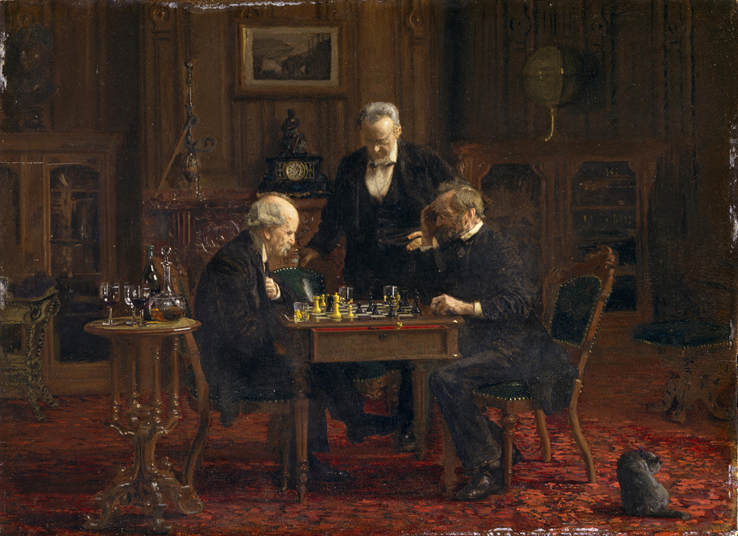
|
| "The Chess Players" |
| 1876 |
However, Eakins continued to use simply in his own paintings the method of perspective he himself had evolved. Even in his portraits, Eakins would put the chair in perspective and that would put the seated figure in perspective, too. As a teacher Eakins was very insistent that all of his students study this field and he gave them a course of twelve lectures with copious exercises from original notes which he always meant to publish but never did.
Henry Ritter, as a lad one of Eakins' students, ever afterwards claimed it was the thoroughness and precision of the perspective taught him by Eakins that made possible Ritter's later work in the drawing of crystals. Although Dr. Ritter was told on all sides verbally and in print that it was impossible to draw crystals as they appear in three dimensions, told that by people who thought they knew, he proceeded to do so. The drawings are very impressive shaded color studies of atomic or molecular groupings, determined by X-ray, in crystal structures; you see space solids developed upon a totally flat surface. By accurate mathematics Dr. Ritter allowed for the difference in the views of the thing as seen by the right eye and as seen by the left, so that the crystal drawings when put into a stereoscope give true pictures of the depth, width, height and general structure of the crystals. Several of the drawings give the effect of fourth dimensional perspective, for as you look at the color shaded molecular crystal structure, it seems to move out into space toward the beholder. The drawings themselves are delicate and beautiful, with various sized colored balls to mark the intersections of the lines of the lattice planes, and the sizes and positions of the atoms.
It was not alone in thoroughness and precision that Eakins' teaching was valuable. He made an original and telling contribution to the problem of perspective as the artist needs to use it.
The Perspective of Thomas Eakins
Eakins used as a control set of circumstances typical conditions that would show objects without distortion; for example, he let the object be 12 feet from the beholder and the eyes 60 inches from the floor. Acting this out, he would place a vertical stick 12 feet away from the spot on which the beholder was standing and on the stick would mark a point of sight, directly opposite the eyes, 60 inches from the floor. If these two dimensions gave an un-distorted view of the object, the dimensions to represent changes in its distance from the beholder could be worked out proportionally. For example, suppose the object is to be seen from a distance of 3 feet but without distortion. If you are 3 feet away, you are one fourth as far away as you were when the distance was 12 feet. Since you have divided the distance by 4, you must also divide the other dimension (the 60 inches to the point of sight) by 4 if you want to keep the same proportions you had in the first problem; 60 divided by 4 gives 15, and the point of sight is marked 15 inches from the floor on the vertical stick when it is 3 feet away. The problem is essentially one in ratios, 3:12::X:60, and X is seen to be 15.
In drawing after drawing Eakins used his one point perspective. He would draw with chalk a line on the floor of his studio and represent this on his paper by a vertical line down the center. Then he would place on the floor in their proper positions the things he was going to paint; for his "Chess Players", for example. It was the floor of the studio, squared off on his canvas, which Eakins put in perspective, parallel perspective, the lines that formed the sides of the squares fanning out to the base line at an angle determined by the height of the point of sight. The base line was made to cross at right angles the vertical line down the center at the point from which was measured the height of the point of sight. On this base line, a series of points was laid out at regular intervals, say an inch apart for example. Each of these lines was connected by a slanting line to the point of sight marked off on the vertical line that went down the center. The slanting lines represented the sides of the hypothetical squares on the floor. The distance to mark off the point of sight above the point at which the base line crossed the vertical was determined by the height of the eyes from the floor, or by that height as determined by Eakins' own method which has just been described. If we use the control problem we started with, the point of sight would be 60 inches above the point of intersection if the picture was to be seen 12 feet away; the point of sight would be 15 inches above the point of intersection if the picture was to be seen 3 feet away. The perspective drawing for one of these two sets of circumstances would look very different from the perspective drawing for the other set, because the slant lines representing the sides of the squares on the floor would fan out in one drawing at an angle very different from the angle at which they would fan out in the other. On his studio floor, Eakins measured for each object to be painted the distance from the chalk line. Then he blocked each object in on his perspective drawing a proportionate distance from the vertical line down the center. The vertical line on the floor was the guide for placing each of the objects in a relative position on the squares drawn in perspective.
An article of furniture that had irregular lines was always drawn first as though it were enclosed in a box; the box in proper position was first drawn in perspective and then the details of the object were put in afterwards. A mechanical drawing can be made only of things that are mechanical, not of living creatures such as moving animals and people. Eakins got around this difficulty in his portraits by putting in perspective the chair in which a person sat, using the chair as a frame of reference.
In his perspective drawings, Eakins got his horizontals in the manner usual for parallel perspective. He drew thru the point of sight a line at right angles to the vertical, and he measured off from the point of sight, to the right or left, on this horizontal the distance of the beholder from the point of sight. A diagonal was drawn from the point on the horizontal across the vertical to some point on the base line. At the intersection of this diagonal with each of the slant lines running from the point of sight to the base was drawn another horizontal. The series of horizontals gave in correct perspective the tops and bottoms of the squares. If the point on the first horizontal came inconveniently far from the point of sight, Eakins reduced the distance between the two points, but this gave a proportionate change in the distance represented between each two horizontals. For example, if he reduced the distance of the point on the horizontal from the point of sight by one fourth, then the distance between each of the other horizontals and the one next to it would be four squares instead of one. In making the drawings on paper, Eakins used three inks, red, blue, and black, to prevent confusing the many lines.
For the rest of his life Eakins taught his own pupils the theory of perspective as he had worked it out. Among the series of problems Eakins required of his students were problems dealing with objects that were tilted at some angle. A simple way to get the tilt was to draw a square divided by horizontals and verticals into smaller squares. If an object was tilted at an angle of 1 to 3, that could be represented by a line which passed diagonally through the height of three blocks. The diagonal would represent a line that could be drawn through the center of the object. The students were instructed to use a brick or a cigar box and place this in position with the necessary tilts. Eakins was particularly fond of the problem in perspective presented by a vessel sailing and would instruct his students to take into careful consideration the three tilts a sailing vessel was almost sure to have. She would probably not be sailing in the direct plane of the picture; she would be tilted by the wind; she would be riding a wave either up or down. The box or brick that stood for the vessel must be given all three of these tilts before the resulting drawing was placed in one point perspective.
Eakins was also fond of setting other problems that involved angles of tilting. The final and hardest problem his students had to do was to put in perspective a spiral stairway, but some of the other exercises could scarcely be called easy. For example, his students were required to do this particular problem of drawing a wheel in motion.
Hoop, Tilted
| Picture from eye 3 feet |
| Horizon 64 incites |
| Diameter of wheel 52 inches |
| Center 41 feet 1+ inches forward |
| To the right 6 inches |
| Tilt of wheel 1 to 3 |
| Running at an angle of 2 to 3 |
A mechanical drawing of a wheel 52 inches in diameter, tilted, seen from a distance of 3 feet gives an egg shaped distortion somewhat reminiscent of effects achieved by later artists in their experiments to depict exactly what they saw. Eakins worked out the problem by first drawing the wheel, tilted at two different slants, on a ground plan marked off in squares. This drawing, placed in Eakins' one point perspective, resulted in a wheel that was seen without distortion from a distance of three feet. The squares of the ground plan were the things put in perspective and used as guides for sketching in the tilted wheel, the lines of the wheel being made to touch the squares on the perspective drawing at points corresponding to those at which the lines of the wheel touched the squares on the ground plan. Inaccuracy in placing the points could be reduced to a minimum by subdividing the squares until they were so small that a possible error could be made to be less than any given amount.
Here again Eakins was master in his use of the problem. The oval plaque, "Knitting," shows a middle-aged woman in old fashioned dress seated beside a table with a tipped top. Modeled in high relief, the edge of the round table shown thus in a vertical plane is seen as an oval extending out from the plaque into space. The table slants away from the plaque at a sharp angle, giving Eakins his chance to use complicated perspective. For a companion piece, "Spinning," an oval in high relief, a young girl in short waisted dress sits on a stool at a spinning wheel. Both plaques were modeled about six years after Eakins had done the "Chess Players" in perspective, were modeled while Eakins was at the Academy of the Fine Arts as teacher in the 1880's.
|
|
End of Eakins' Perspective
* * * * * * *
When Eakins was thirty, in 1874, he was writing to Kathryn Crowell, his fiancée, rather gentle, formal little letters. One of Kathryn's best friends was Sallie Shaw and another was Thomas Eakins' sister Maggie, all three about the same age. Over seventy years later Sallie Shaw remembered Kathryn well, remembered her as very short, with medium brown hair, "just a good decent girl" and not a tom-boy like Sallie herself. Kathryn played the piano but "nothing special;" she was not artistic. Although she enjoyed fun, she herself did not make much fun. Sallie thought Katie Crowell was rather exclusive, not associating with many. As Sallie Shaw remembered it Thomas Eakins associated with a great many, with so many girls in fact that his father, Benjamin Eakins, put his foot down and told Tom he had to get engaged. It was his father who had really engineered Tom's engagement to Kathryn Crowell. The father, Benjamin Eakins, was Sallie Shaw's great uncle, and she thought him a wonderful looking man who held himself with great dignity. His hopes for his son Tom's marriage were abruptly ended. Kathryn Crowell, in 1879 when she was twenty-seven, died of meningitis; the dates of her birth and death were recorded in the Crowell family Bible.
As Sallie Shaw saw matters, his family thought that Thomas Eakins was very domineering. His older sister Fanny gave as her reason for not having gone to high school the fact that Tom didn't approve of higher education for women. Sallie Shaw herself was very proud of having gone to the Girls' High School, then near Tenth Street between Vine and Race. Fanny, however, had been well trained in languages and music, and the two younger sisters, Margaret and Caddy Eakins, went to the high school. Sallie Shaw thought Tom Eakins ruled his mother as well as the rest of the family. Tom Eakins was always teasing Sallie Shaw about her going to church and to Sunday School. It got to be very annoying. Once when he did that at the dinner table, his father lit into Tom and lectured him so that he never did that again.
Thomas Eakins painted a portrait of his mother, but he painted it about two years after her death, about 1874, from a photograph. Her brown hair, parted in the middle, is drawn down smoothly into a knot, and a narrow white collar edges the throat of her black dress. The next year, in 1875, Eakins painted Katie Crowell's sister Lizzie, "Elizabeth at the Piano". She was younger than Kathryn and very vivacious as well as pretty. Rumor had it that she was the one Eakins loved but never won.
|
|
In 1873 and 1874, Eakins went to the Jefferson Medical School to study anatomy, a subject which became for him the love of a lifetime. For Thomas Eakins,real romance lay in this, the study of anatomy. Once he had found it absorbing, to Eakins no one was a bore, for every one had muscles and no two people were built alike. One of the astonishing things about the study of muscles is the extent to which they vary. Take the sartorius muscle which flexes the leg upon the thigh. Its variations included slips of origin and the ability to split up with a large selection of choices for insertion. Or it may just be absent. There is a surprising amount of absenteeism among muscles. The bodies most often available for dissection purposes are those that are to be buried at public expense and are therefore those most likely to have poorly developed muscles with many missing completely. Once after Eakins had been dissecting for years, a huge and muscular stevedore was killed by some accident. This was a bonanza. The man had been killed in some way by which he was not mutilated. Eakins and his students, able to obtain the body, gleefully made casts of section after section in the dissection room at the Academy of the Fine Arts. The casts were nicely colored in different shades of red and kept for years as models for the other students to work by. Those casts were among the many things that had belonged to Eakins which, after his death, were treasured by his wife, who had them cast in bronze. Throughout his life Eakins insisted his students should study anatomy, for to cite a book on the subject already in existence when Eakins went to Jefferson, the famous "Gray's Anatomy," it is impossible for a person to throw just one muscle into action; it is movements, not muscles, that are represented.
Eakins shared the admiration for the human body which Oliver Wendell Holmes expressed in the "Autocrat of the Breakfast-Table" by "The Living Temple or the Anatomist's Hymn." Eakins realized with Holmes that "we find a mathematical rule at the bottom of many of the bodily movements," and that the pelvis is the center of the body around which all the rest is built. Wrote Holmes the Autocrat: "You think you know all about walking, – don't you, now? Well how do you suppose your lower limbs are held to your body? They are sucked up by two cupping vessels, ('cotyloid' – cup-like – cavities,) and held there as long as you live, and longer. At any rate, you think you move them backward and forward at such a rate as your will determines, don't you? On the contrary, they swing just as any other pendulums swing, at a fixed rate, determined by their length. You can alter this by muscular power, as you can take hold of the pendulum of a clock and make it move faster or slower; but your ordinary gait is timed by the same mechanism as the movements of the solar system."
Eakins himself once wrote that he had "taught in life classes and lectured on anatomy continuously since 1873." However, this could not have been at Jefferson for he would have needed a degree in medicine to have taught there. He never registered in the Medical School but simply sat in on the lectures. In 1874 Eakins did a portrait of one of the Jefferson professors, Benjamin Howard Rand, professor of chemistry and for some years dean of the College. Professor Rand had taught at Central High School when Eakins was there as a student. Later Dr. Rand was for years secretary of the Philadelphia Academy of Natural Sciences before which eventually Eakins presented his original findings on those muscles that passed two or more joints. It was in this paper on muscles that Thomas Eakins finally articulated his philosophy of painting. It was much earlier when he was only thirty that Eakins asked Professor Rand to pose for a portrait.
In this first portrait of a man of science, Eakins painted Professor Benjamin H. Rand seated behind a table rather over-full of a surprising collection of things. On the left stand a microscope, test tubes and other instruments, setting a precedent Eakins followed the rest of his life of including in a portrait something to suggest the achievements of the person posing. The liquid in one test tube is a brilliant red, and the brass of the microscope shines. On the right of the table is a black cat which Professor Rand holds by the back with his left hand while with his right he points to a page of an open book. A spot of color is achieved by a pink rose, green leaves, lying on the book, a piece of bluish crinkled paper hanging down from the table over a blue cover, and a vivid piece of reddish purple cloth with tassels over a chair in front of it. These props from the artist's studio thrust onto a man of science created an effect which Eakins never strived for again. They are conspicuously absent from his other portraits.
|
|
In 1875 Eakins painted the "Gross Clinic," and in 1876 the portrait of Dr. John H. Brinton, also of Jefferson, the surgeon who succeeded to the chair of Dr. Samuel D. Gross. The "Gross Clinic" was destined to become one of the most famous of the paintings by Thomas Eakins. It is, as its name suggests, more than a single portrait. In the foreground Dr. Gross, scalpel in hand, explaining, stands to the left of an operating table around which are grouped four assisting physicians. At the far end of the table the patient's head is covered with a towel, and in the foreground the upper part of the left leg is exposed for the operation. Dr. James M. Barton is probing the wound and behind him, leaning against the wall, is Professor Gross's son, also a doctor. Each figure in the painting is a portrait. In the matter of color the painting is somber, relieved by the high lighted woodwork across the front of the tier of students attending the clinic, three of whom are asleep, and by the warm flesh tints of the portraits. The instruments in the tray in the lower left-hand corner are also high lighted and placed on a towel with a lavender-reddish border and yellowish white fringe. A blue towel folded is under the patient. Blood red is so tellingly used on Dr. Gross's fingers, the patient's wound, and the linen, that it caused considerable agitated comment.
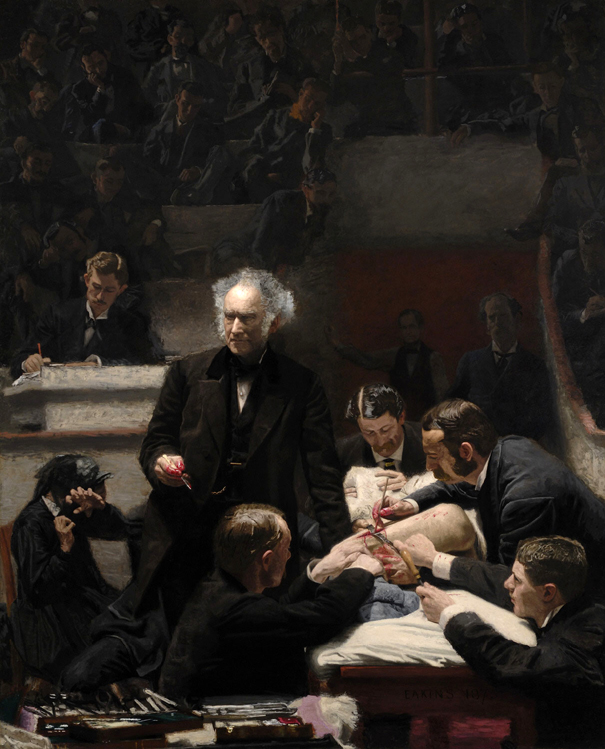
|
| "The Gross Clinic" |
| 1875 |
With penetration Eakins painted Gross as capable of being completely oblivious to the horror agonizingly endured by the woman seated at his elbow, the patient's mother. In speaking of his many fruitful experiments in vivisection, Professor Gross had written that they had "involved a great sacrifice of feeling on my part." He had become a doctor in days when heroism was the quality most needed for the task. Anaesthetics came into use only during Professor Gross's own lifetime, and his early practise belonged to the time when it was a feat of endurance and bravery just to reach a patient's bedside at night over impossible roads. Dr. Samuel D. Gross had himself gone to New York City and faced the cholera epidemic of 1832 when it was at its height in midsummer. The violent contortions of bodies after death struck him as primarily odd, with "legs thrown about in different directions, literally kicking the air and everything else coming within their reach." He found the medical treatment of his own day very unsatisfactory, remarking in his autobiography, "I, however, soon carved my own way." This he did in part by writing his own elaborate "System of Surgery."
There is no greater contrast than that between Dr. Samuel D. Gross of the "Gross Clinic" and Dr. D. Hayes Agnew of the equally famous "Agnew Clinic" painted by Eakins some years later. Dr. Agnew, a very gentle person who observed the Sabbath Day religiously, had been impelled to become a great doctor by his conviction that in healing men he was serving God Himself the Lord. Not only the sick whom he healed but also the many doctors who consulted him remembered Dr. Agnew for his marvellous kindness. Also he had come to his profession when it was somewhat less grim than it had been shortly before. Dr. Samuel D. Gross had been driven by a relentless ambition which succeeded directly a boyhood made miserable by blushing shyness and timidity. Dr. Gross had deliberately and grimly set out to be a great doctor, and had succeeded. Whereas Dr. Agnew was mellow, Dr. Gross, much the older of the two, was smart. The latter became a Unitarian because "many of the most distinguished men that ever lived were Unitarians, or upheld Unitarian doctrines," and he regretted that he was so busy professionally on the Sabbath that he could attend but few services. But Dr. Agnew and Dr. Gross were alike in this: however different the motives which urged them on unceasingly, both were in truth great physicians. Eakins showed by his expert characterizations that he knew them well.
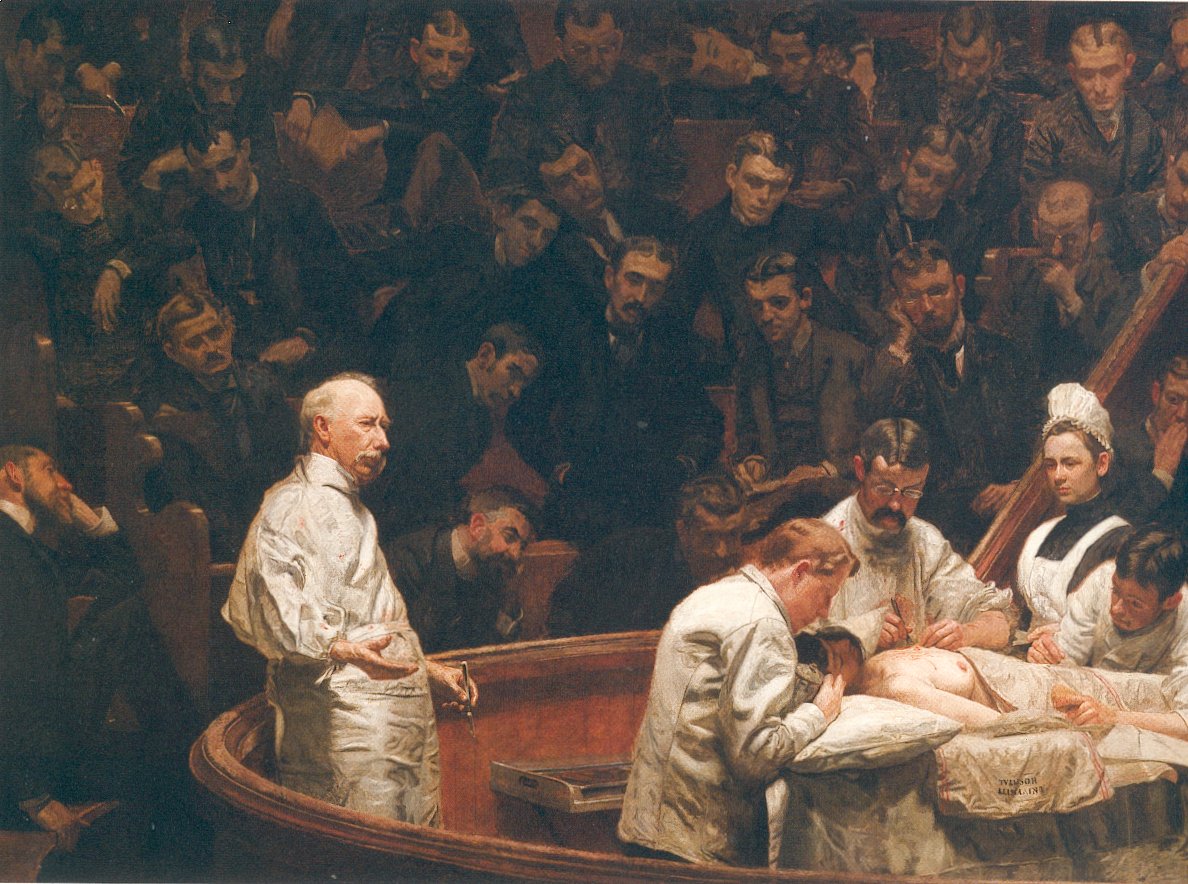
|
| "The Agnew Clinic" |
| 1889 |
Some years later Eakins painted two other professors of the Jefferson Medical School, Professor James W. Holland with his marvellously characteristic and expressive stance, a painting titled "The Dean's Roll Call"; and Professor William Smith Forbes, his hand on "The Anatomy Act" which he drew up for Pennsylvania.
|
|
It was at the Philadelphia Centennial Exhibition of 1876 that the "Gross Clinic" was exhibited. Eakins, to his disgust, was unable to get it hung in the section devoted to art because of his choice of subject. The painting was placed instead in the room for the display of medical supplies. There it hung on the west wall and dominated the place.
Although the two "Clinics" were painted in Eakins' studio, his anatomical drawings were made in the dissecting room. Some elaborate human anatomical drawings made by Eakins are dated 1878.
The year that Eakins was forced to place the "Gross Clinic" in the medical section at the Centennial Exhibition, he designed a study of Columbus very sad in prison. The white haired explorer sits on a prison bench and head in hand wearily meditates upon a globe. But the study was never completed. The next year Eakins produced instead some of his most decorative work; a painting of William Rush carving an allegorical figure of the Schuylkill River, and several charming little water colors.
|
The painting of Rush carving is primarily a study of a nude figure as she poses on a block of wood; she turns slightly to the left with her back to the beholder, and she balances with her right hand "Webster's Unabridged Dictionary." Her colorful clothes are on a chair in the foreground and at the right sits the chaperone knitting. In the left background the first native-born American sculptor, William Rush, dressed in the breeches and waistcoat of 1809, is carving out of wood his statue, "Water Nymph and Bittern", which was for the new Center Square Water Works on the spot which is now City Hall Plaza in Philadelphia. His water nymph is clad in classic draperies and she has a classical hair-do. The bittern on the right shoulder is an American bird familiar to the marshes that bordered the Schuylkill in Philadelphia where later grew up Boat House Row. The up-raised neck and beak of the bird form the fountain. Thomas Eakins himself wrote of Rush's statue: "A withe of willow encircles her head, and willow binds her waist, and the wavelets of the wind-sheltered stream are shown in the delicate thin drapery, much after the manner of the French artists of that day whose influence was powerful in America." In the painting by Eakins a rich background suggests the achievements of the sculptor Rush, the scrolls and designs for the figure-heads of ships, ships that went to London and drew crowds to see his work. In the painting the figure of Washington, whom William Rush knew as a personal friend and served during the Revolution, represents Rush's statue of him long in Independence Hall. Its place on the rostrum of the Senate Chamber where Washington was inaugurated, on the second floor of Congress Hall, is appropriate. It is appropriate, too, that in time Horace T. Carpenter, who had been a pupil of Thomas Eakins at the Pennsylvania Academy of the Fine Arts, became curator of the five buildings which make up Independence Hall, having as his office the John Adams Room directly next to the Senate Chamber with its statue by Rush. To add one more link with Eakins, the latter's maternal grandmother, Margaret Jones, had as a child been picked up and kissed by Washington on his triumphal entry into Trenton.
Thomas Eakins first made for himself wax models of these two statues, "Water Nymph and Bittern" and the "George Washington," before painting them into the "William Rush Carving His Allegorical Figure of the Schuylkill River."
|
|
|
Actually Rush did the "Washington" and "The Schuylkill Freed," also in the background, some years after he had carved the fountain. The Center Square Water Works, which had replaced private wells in 1800 after the two Yellow Fever epidemics, was itself replaced by the Water Works at Fairmount a quarter of a century later. For over the doorways of these new buildings Rush carved his "Schuylkill (Chained)'' and "Schuylkill (Freed)". Fairmount became the fashionable promenade for Philadelphians and "the most photographed spot in Philadelphia" even after the water works was turned into an aquarium and the reservoir on the hill became the foundation of the Philadelphia Art Museum. It was this museum which eventually housed sixty-six of the works of the great painter, Thomas Eakins. It also came to house many of the original statues by Rush, including "The Schuylkill Freed." In this wood carving a woman in the classical mold sits on a piece of machinery and turns with her left hand a wooden wheel while behind her, water flows from a pipe which slants back to pour it overflowing into a Grecian vase. Some of the carvings by Rush in wood are anatomical models which must have excited the admiration of Eakins.
When Thomas Eakins was in his sixties he came back to this subject of Rush carving the allegorical figures and used it for a painting very similar to his earlier one and for several studies and sketches.
|
|
Although Eakins thought the nude the most beautiful of subjects, the Rush picture never sold. In 1878, the year after he had painted this, Jefferson Medical College bought the "Gross Clinic" for two hundred dollars; and the same year Eakins had some other good fortune. A water color called "Seventy Years Ago" sold for a hundred and thirty-five dollars, the subject being a seated middle-aged woman, in lace cap and gray old-fashioned dress, knitting. A small canvas called "The Courtship" was bought by Dr. Horatio C. Wood soon after it was painted. Two other water colors which Eakins sent, priced, to the Massachusetts Charitable Mechanics' Association, though not sold, brought him his first silver medals. It was fifteen years before there was another recognition of this sort, a bronze medal won at the 1893 World's Fair in Chicago by the "Agnew Clinic" and other paintings by Eakins.
|
|
One of these two water colors sent to the Mechanics' Association Exhibit is sufficiently decorative to answer forever critics who claim Eakins could not do decorative work. Called now "Young Girl Meditating," it has somewhat Chinese coloring. The dress, old-fashioned, high-waisted, is a rich old gold satin. A ribbon in her hair, which is piled on top of her head, matches the crimson geraniums in pots on the floor before the young girl. On a chain around her neck is a small piece of stone, Chinese blue-green in color. Her sleeves are long and full enough to wrinkle. The sash and cord around her waist fall down her left side nearly to the hem. A three legged table of the period about 1750 with the round top vertically tilted stands back of her and a little to the right. The girl is completely relaxed, head bent slightly down toward the geraniums, eyelids lowered, hands clasped easily with elbows only just slightly flexed. The effect is altogether charming and very decorative.
|
|
The other of the two water colors sent to Boston is "Negro Boy Dancing." In it Eakins used all his knowledge of anatomy, a knowledge much more profound than that he had had eight years before in Spain, to catch the rhythmic action of the dancing boy. A young Negro seated to the left plays a banjo, and behind the boy stands an aged Negro, watching. The water color well deserves the silver medal accorded it. The year of 1878 for Eakins was a good one.
CHAPTER II
SUSAN HANNAH SEES THE GROSS CLINIC
It was during the year 1878 that Eakins also illustrated for "Scribner's Monthly Magazine" a story and a poem. The poem by Bret Harte, "The Spelling Bee at Angel's," appeared that year in the November issue. Eakins pictured for it the bar-room "up to Pete's" with men sitting on a barrel, on boxes, on a chair "around the bar-room stove" with the bar itself in the background. This is the setting for the spelling bee about which the poem was written.
|
|
The second illustration by Eakins suggests general destruction. Beside a door off its hinges stands the man who is telling the tale; the poem is written in the first person. In tattered shirt, muscular and brawny, clutching a knife in his left hand, with his right he is firing a gun through the doorway into the bar-room strewn with corpses. It is the kind of tale with which Bret Harte was trying to bring the West to all of America. The group around the bar-room stove had scoffed at Smith's new game of "Spelling Bee" until Lenny Fairchild, the school master, volunteered to give instructions, starting out by asking who could spell separate. Not one in eight could do it and the game was under way. It was touching to see those men with beards and weapons play like school boys until Brown objected to being asked to spell incinerate, claiming school never taught such a word as that. At phthisis all the men sprang up and threatened to hang the one who had the nerve to ring in another word in Greek. When Brown could not spell gneiss, he made some comments on dyed hair, causing the Chair to try in vain to end the Spellin' Bee. Poker Dick would not permit it, insisting on his turn, but when the Chair said eider-duck Dick started off with I. Bilson smiled, but then he shrieked. Some gents got up to go, but Three-fingered Jack, he locked the door and said eider-duck must be spelled. At that he groaned and sank, felled with a volume of Webster. Dick dodged behind the bar; Brown, behind the stove, till the stove upset and the cinders rolled freely down his legs. When some gents shouted, "Order", Smith began to spell it, and events moved rapidly forward to the state of things shown graphically in the Eakins' illustration which suggested general destruction.
In June 1879 "Scribner's Monthly Magazine" carried a story by Richard M. Johnston, "Mr. Neelus Peeler's Conditions" with an illustration by Eakins. The story concerns a lazy good-for-nothing husband who insists to his industrious wife, pictured busily sewing, that she must admit there are calls. Presently Neelus Peeler himself feels a call to the ministry and as an itinerant preacher gives forth pathetic sermons, dwelling overlong on the sad conditions of his life. Aware his following is shrinking, he surprises a congregation by preaching in lively fashion of our Lord's entry into Jerusalem, putting the emphasis on the wildness of colts, especially mule-colts, and of the risk of riding without a saddle when the rider is inexperienced. The sermon reaches its climax when Neelus Peeler describes the multitudes strewing branches and clamoring noisily with the one intention of scaring that young unbroken mule-colt. This powerful sermon did not in the least alter the conditions which made Neelus Peeler dependent for his living on the exertions of his family; and the story ends in a burst of sentimentality in which Mrs. Peeler, her long hair about her shoulders, weeps, in the manner of the more hysterical saints, at the reformation of Neelus, and goes hand in hand with her brother to sit at the graves of her parents. It was the kind of sentimentality against which Eakins was always rebellious, and he chose to illustrate the beginning of the story.
|
Eakins was tactful enough not to illustrate the sermon of the skittish colt but took instead the opening of the tale. Neelus Peeler insists to his wife across the table, while their boy Elijah sprawls in the foreground, that there's such a thing as calls. The illustration, an indoor piece, gave Eakins a splendid chance to use his one point perspective: table, chair at either end, foot stool, wide floor boards, fireplace in the background.
|
|
For an article in the July issue of "Scribner's Monthly" for 1881 Eakins supplied two illustrations. One, a drawing called "Rail Shooting", was a copy of the oil painting done in 1876, "Will Schuster and Blackman Going Shooting". The other, "A Pusher", was a drawing of the Negro to the left in the oil painting, "Pushing for Rail", which Eakins had sent to be exhibited in Paris back in 1875. At that time, he wrote in French an account of rail shooting in America.
|
Letter by Eakins, from the French: "I am sending you two little paintings and one water color. The first represents a delightful hunt in my country, a hunt arranged so that one arrives at the edge of the marsh two or three hours before the height of the tide. As soon as the water is high enough for the boat to be floated on the marsh, the men get up and begin the hunt. The pusher gets up on the deck and the hunter takes a position in the middle of the boat (so as not to have his head buried), the left foot forward a little. The pusher pushes the boat among the reeds. The hunter kills the birds which take wing. I show in my first boat the movement when a bird starts to rise. The pusher cries, "Mark," and being on the pusher's deck, stiffens up and tries to stop the boat or at least to hold it firmer. He gains a new equilibrium, for the inertia of the boat makes considerable pressure against the thigh, pressure which he resists with his weight. The pusher always cries out on seeing birds, for during most of the season when the reeds are still green, it is he who sees first because of the more elevated position of the deck. He often sees it and the hunter doesn't see it at all, the reed is so high and thick. I have chosen to show my old codgers the season when the nights are fresh with autumn, and the falling stars come and the reeds dry out. (Insert – unreadable). But the hunter cries out just the same from habit. When a bird is killed, the hunter fires his gun if he is going to discharge his second barrel and then the pusher, having well in mind the place where the bird fell, goes there and picks up the dead bird by means of his net. Sometimes in going to see the dead bird, he sees a number of birds take the wing and there will finally be a dozen dead birds shot down before the pusher can reclaim one, although a person can kill only one at a time. It is principally in recalling well the exact locations of all our new ones alike after just one turn of the head that the good pushers distinguish themselves.
"The pusher's pole is eleven feet long. At one end is a fork to deal with the roots and the reeds and to prevent them from striking too hard in toiling through. At the other end is a knob so that the pole will not slip from between the hands. The pusher always looks ahead and plants his pole in such a way that the resistance of the boat will be equal against both his feet. Thus the least extra pressure on one or the other foot will turn the nose of the boat to the opposite side."
Both the skiff and the punt are used in rail-shooting, the wooden piece across the stern of the skiff being called a deck, that across the stern of the punt being simply the rear seat. The article which Eakins was illustrating was an account by Maurice F. Egan of "A Day in the Ma'sh", and there were other illustrations by J. W. Pennell and H. R. Poore. Egan described "The Neck", that part of Philadelphia from Broad Street to the Delaware River just before you get to League Island Navy Yard, as a picturesque section devoted to truck farms, cabbages, pigs, dogs, dikes, reed-birds, smells, oil refineries and the refuse from soap factories. There is a charming sketch by Pennell, "At CLXIV Canal Boat Street." The author of the article points out that rail-shooting can be enjoyed in the Ma'sh, as well as hunting reed-birds, but only at high tide as the boat must be pushed over the reeds, and that the flat bottomed skiff is predominant in the region.
In September of 1879 "Scribner's Monthly" contained an article on "The Art Schools of Philadelphia" by Wm. C. Brownell (with illustrations by the pupils). The writer began his article by the admission that the schools of the Pennsylvania Academy of the Fine Arts were conducted on a much more elaborate scale than were those of the National Academy of Design and other New York schools; that West, Stuart, and the Peales were somewhat associated in memory with Philadelphia; that the Academy of the Fine Arts, the oldest in America, possessed a permanent collection; that the famous private galleries in Philadelphia contained decidedly the best works by a number of the modern masters in America. Mr. Brownell pointed out that in spite of these admissions, Philadelphia was perhaps looked down on from the aesthetic heights of New York as being a bit provincial, managed in artistic matters by its "leading men" more from the standpoint of Maecenas than from the government standpoint as in Paris or from that of the New York plutocracy which was content to let art outside private galleries take care of itself. Mr. Brownell concluded, however, that there were advantages in this provincialism in a country where beneficent supervision of art by the government was a thing not to be hoped for; in practise the enthusiasm of Philadelphia's "leading men" made possible much that New York painters themselves could not accomplish. The illustrations by pupils, black and white studies, included two by Susan Hannah Macdowell.
The story goes that Miss Susan Hannah Macdowell, who was studying at the Pennsylvania Academy of the Fine Arts in 1876, when Eakins was teaching in the night school, saw the "Gross Clinic" by Eakins exhibited that year at the Centennial Exposition and promptly fell in love with the artist who could paint such a picture. A portrait of Dr. Gross by Eakins was exhibited at the Academy itself in 1879. At any rate when Susan Hannah came there to study again, Eakins was teaching at his Alma Mater, this Academy of the Fine Arts, as an act of kindness, taking classes for the elderly Christian Schussele under whom he had studied. Dr. Schussele was ill, and in taking over his classes Eakins refused to accept any part of the salary, sending it all to Dr. Schussele until the letter's death in the summer of 1879. That fall Eakins was regularly appointed his successor, and the same autumn Brownell's article on the Academy appeared in "Scribner's Monthly", with two illustrations by Susan Hannah Macdowell. Records of the school show that she was there in 1880, '81 and 1882; Susan Hannah was in some of the classes taught by Thomas Eakins, who considered her one of his most promising pupils; Sue won the first Mary Smith prize at the Academy of the Fine Arts. It was probably in these classes she developed that sure faith in him which led her later to record, meticulously, every exact detail of the dates of her husband's work as being matters of ultimately great importance.
In 1881 Eakins painted "The Pathetic Song", in which Susan Hannah is seated at the piano accompanying a Miss Harrison, who is singing.
|
Thomas Eakins was forty and Susan Hannah was thirty-three when they were married in 1884. Bans were published in the newspapers, and the home wedding was witnessed by Friends in the usual Quaker manner. Shortly afterwards Tom painted a portrait of Sue.
Thomas Eakins named the portrait "A Lady with a Setter Dog." Susan Hannah, whom he called Susie, sits on a straight old-fashioned chair. She wears a costume not then in style, a light blue, high-waisted flowing dress that comes all the way down to her ankles, showing a bit of red stocking and one soft slipper, black, the kind of slipper she always did wear. The portrait shows Sue with a rather golden complexion, blue eyes that are almost black. Murray pointed out that the painting was done under a sky-light, which gave Sue's eyes shadows. Her expression is dreamy but thoughtful. The book which lies open on her lap is of pictures so that the blue of the dress and the tones of the flesh are repeated on the page as they could not be on a page of print, and Susan Hannah's hand lies across the open book. Eakins knew hands and painted them superlatively well. Those of Susan Hannah are not hands that have been inactive; they are rather large; and the wrist is strong with visible veins. The sleeves, short enough to show considerable wrist, are finished with tight-fitting deep lace cuffs. Sue's body is rather angular and her half smile slightly weary. Beside her chair lies the setter Harry, reddish-brown with a black nose tip, a small pink spot above it. Thomas Eakins loved Harry too and carefully painted-in the tiny white hairs that are below the black tip of the nose. A white band, narrow between the eyes, goes up the center of the face and the dog's right paw is white. The ears are cocked somewhat forward, the pads of his hind feet show, and his coat has a silky sheen. Harry looks golden brown against the warm reds of the rug and against the drapery in which there are splashes of reds and yellows and greens. In the background above the dark wood secretary the walls are covered with pictures; on one wall, a light-colored frieze.
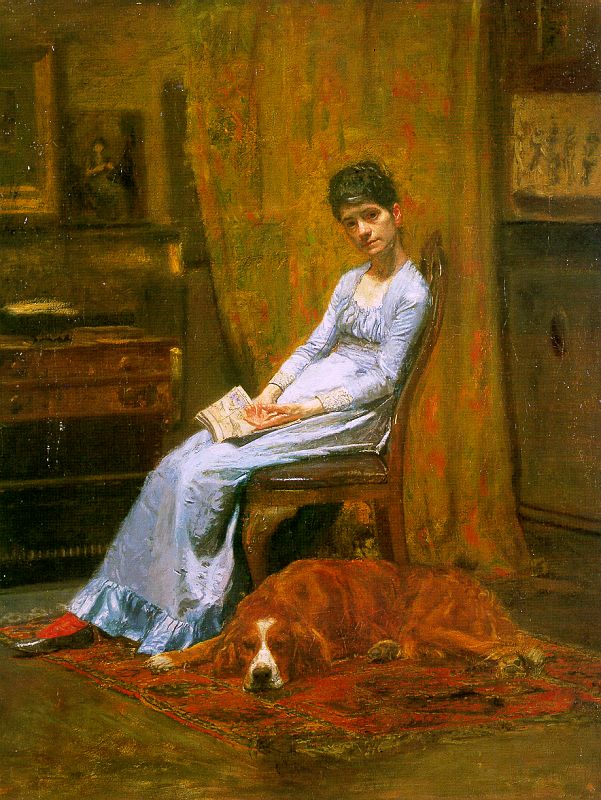
|
| "A Lady with a Setter Dog" (Susan Hannah Eakins) |
| ca. 1885 |
|
|
A year before his marriage Eakins had been modeling at the Academy his "Arcadia," a relief that resembles the "Frieze of the Parthenon." A young lad, nude, plays the pipes to the right; to the left facing him is a procession of several figures in classic draperies; a dog sits directly in front of him. A few years later Eakins was making sketches for a painting he dreamed of doing (but never did) that would show the sculptor Phidias modeling the "Frieze of the Parthenon" itself. Eakins had come to love the grandeur of the horses, shown to marvellous advantage in that famous frieze. Another five years and Eakins embodied in a paper on the muscles of the horse his philosophy of art – and gave praise to the old Greek sculptors.
The active interest Eakins took in the anatomy of the horse had begun even before he went to teach at the Academy, even before the commission given him by Fairman Rogers to paint his four-in-hand. Fairman Rogers was a member of the Academy Board of Directors and he was also chairman of the Committee on Instruction. The commission to paint the four-in-hand Thomas Eakins executed in 1879, the year he was first regularly appointed instructor at the Academy. He had made a study in relief, a skeleton, and two ecorche studies of the mare "Josephine" the preceding year. Now for the painting of the four-in-hand he did first four models in hard wax, wax which Eakins made himself (Bregler had the recipe) from beeswax and coloring matter. He afterwards painted these models red, one of each of the horses, about 11 x 9 inches in size. These he used for study; the painting itself was made from life. He paid particular attention to the intricacies of the horses' legs. In the painting the horses, bays, the harness and the coach shine with good care. Fairman Rogers and his wife sit on the box seat, and one of the ladies with them has raised a little parasol, red like the red on the wheels of the coach and on the axle. The men wear high hats. They drive in Fairmount Park near Horticultural Hall, and behind them all the woods are green. There are preliminary sketches of the landscape and the horses. A black and white drawing of the "Fairman Rogers Four-in-hand" is an illustration for the book by Fairman Rogers, a "Manual of Coaching," published twenty years later.
.jpg)
|
| "Fairman Rogers Four-in-Hand" (May Morning in Park) |
| 1880 |
Fairman Rogers wrote in 1881 for the "Penn Monthly" an account of "The Schools of the Pennsylvania Academy of the Fine Arts," of which a reprint appeared in the same format as that used for the school's circulars of instruction. It is essentially the aims of Thomas Eakins that Fairman Rogers presents in this account of the schools. It is even generally believed that Eakins himself wrote most of the pamphlet, which reads in part:
"Following the strongly expressed preference of the present professor, the students, almost without exception, paint in the life class instead of drawing, as is used in most schools.
"Mr. Eakins teaches that the great masses of the body are the first thing that should be put upon the canvas, in preference to the outline. It is, to a certain extent, an accident, rather than an essential; and the students build up their figures from the inside, rather than fill them up after having lined in the outside. The practise of modeling leads the painter-student in this direction also, as the outline is not that which strikes the students forcibly. It is not believed that the difficulties of painting are either lessened or more quickly surmounted by the substitution of arbitrary colors, black and white, for the true color; and as a painted study is more like the model than a translation into black and white can be, the comparison with nature is more direct and close, and an error in drawing is more manifest. The materials for drawing on paper, except charcoal, which is dirty and too easily rubbed off, do not admit of the strength, breadth and rapidity of treatment, which are considered important; so that an oil paint and clay are the real tools of the school.
"Great stress is laid upon the weight and solidity of the figure, which must stand upon its legs and show exactly what part of the general movement each portion of the body is bearing, and must look as if it is made from a real living figure, not from a paste-board silhouette.
"The accurate knowledge of the anatomy obtained through lectures, and dissections, forms a strong basis for the intelligent rendering of these qualities. An accurate representation of the model in all its peculiarities is insisted upon. The character must be caught and something more than a superficial resemblance be evident. Conventionalizing, or improving upon the model, is discouraged, as the object is study, and not picture making; and the use of a variety of models familiarizes the student with many different types.
"From time to time athletes, trapeze-performers, and the like have been secured. Originally the number of male models was greater than that of female models, as they are rather more instructive as to muscular development; but because the male figure is more familiar to the male students, at least, than that of the female, through opportunities afforded in swimming, for the past two years the sexes have been alternated so that the class sees the same number of each during the season. Standing poses seem to give the best results. Poses representing action are difficult to keep and the moving of the model confuses the student. A proposition to use the last half hour of each pose in noticing and perhaps sketching the action in various poses of the model whose conformation has become familiar during the work of the week, may be carried out in future.
"One peculiarity of the school, which has been unfavorably criticized, is that in one sense there is little variety in the instruction; that is, the students' work is through casts, which are almost universally of the nude human figure; they then enter the life class and continue to work from the nude human figure, usually in simple poses, and then they work in the dissecting room, also from the human figure. They do some work in the sketch class from a draped figure, and in the portrait class from the head and face; but the main strength is to paint the nude figure. There is the objection that the school does not sufficiently teach the students picture-making, and it may be met by saying that it is hardly within the province of the school to do so. It is better learned outside, in private studios, in the fields, from nature, by reading, from a careful study of other pictures, of engravings, of art exhibitions, and in the library, the print room and the exhibitions which are held in the galleries, all freely open to the student; the Academy does as much as it can in this direction. Loan collections of the best pictures available, American and foreign, are among the most useful educators of this kind. It must not be supposed that broad culture is unnecessary; on the contrary, it is of the greatest importance, but it should be attained as far as possible before or after this particular period of work.
"When the school is richer, it should add to its course instruction on many subjects connected with art, of great means in themselves, a knowledge of which, however, does not appear, judging by a study of the successful, to be essential.
"During the past season, for the first time, a horse was used as the model for a six weeks' pose, the men's and women's class working together for this purpose. Wax was used as more convenient than clay, the size of the studies being about eight inches in height to the withers, where a horse is usually measured. It is proposed to devote one pose each season to the horse or some other animal. Although at sight it might seem easy for students, while in the country for the summer, to obtain facilities for working from so common an animal as a horse, there are in reality great difficulties in getting control of one not owned by the student, for a period long enough to enable him to make a careful study, and in getting proper places to work with any kind of comfort; and as a dead horse, properly prepared, was in the dissecting room at the time that the living horse was in the modelling room, unusual opportunities were offered. The horse enters so large into the composition of pictures and statuary, especially in the works of the higher order, such as historical sets, and is generally so badly drawn, even by those who profess to have made some study of the animal, that the work seems to be of value. Like the work from the human model, it is intended more to give an accurate fundamental knowledge of the animal, than to teach how to portray him in his varied movements, which are only studied out of doors.
"The anatomical study is so much more complete than in other art schools, that it requires special notice. Acting upon the principle that everything that can be should be learned through the original source, the advanced students are encouraged to dissect and examine for themselves, thus becoming familiar with the mechanism of the body; without such knowledge it is impossible to portray correctly those poses which, from their nature, a model cannot readily assume at will or hold. Dr. W. W. Keen, Professor of Artistic Anatomy, lectures to the drawing class two times a week for eighteen sessions a year. These are illustrated by a skeleton, the cadaver, which is prepared by proper dissection for the subject of each lecture, and by the living model. The framework to which the muscles are attached, the form and the action of the muscles, are thus clearly exhibited. The cadaver is used in preference to a manikin, since it is the original material.
"Some of the students content themselves with this information, some go further. Advanced members of the class dissect animals for the purpose of the study of comparative anatomy, and the demonstrators use largely the nude living model, along with the dissected body.
"These facilities are superior to those possessed by any school, and the school is indebted to Mr. M. L. Shoemaker, who allowed a large class from the Academy to dissect and cast horses at his oil factory."
There is no doubt that this account expresses with exactness the views of Thomas Eakins and that Fairman Rogers heartily approved them. For Eakins personally it was unfortunate that shortly after the writing of the article, Fairman Rogers, a civil engineer with many civic interests, brought to a close his active association with the Academy of the Fine Arts.
Eakins had attended life classes when he himself was studying in the old building of the Academy. Mrs. Murray thought, however, that the sketching was from draped models until Eakins as instructor insisted on the nude, and Charles Bregler remembered it was Eakins who had instituted mixed classes with boys and girls in the same class. As a student, Eakins had sketched in charcoal the nude figure, and the model was modestly draped by a black scarf covering her face. While he was in France in the 1860's, he had gotten a letter from Charles Fussell which was all about how much the boys at home missed Tom and which contained sketches meant as a momento for Eakins of the life class they had gotten up, sketches to show him the class hadn't changed much since he had been gone. Fussell was one of the friends Eakins had kept from boyhood. Tom Eakins had gone from the Zane Street Grammar School to the Central High School of Philadelphia, the city's one high school for boys at that time. It has always boasted that it is the oldest high school in the United States outside of New England, that many of its former students have won distinction and renown, and that the school was empowered to confer on the graduates academic degrees in the arts. The first student on the roll was the father of Edwin Austin Abbey; the son later studied at the Pennsylvania Academy of the Fine Arts, as did Fussell and Eakins. The latter two had gone to the Central High School building on the east side of Broad Street above Market when there were some 600 students, Tom Eakins graduating a couple of years after Charles Fussell. They were both elderly when Eakins painted Fussell with full and long white beard. Two other friends whom Eakins kept from his high school days were William Crowell and William Sartain, who is listed in the "Hand Book of Central High School" as president of the New York Art Club.
|
|
All three of them graduated in the class of June, 1861, with morning exercises in July at the Academy of Music at Broad and Locust Streets, the Rev. Phillips Brooks being the commencement clergyman. Eakins, with an average of 88.40, ranked fifth in the class of fourteen graduates and was rewarded for his four years of study by receiving an A.B. in Art. Will Crowell, Eakins' future brother-in-law, placed tenth with an average of 83.85, while Billy Sartain was twelfth with 80.99. The three must have had fun recalling their high school days when they later tramped Europe together.
In 1902 Eakins painted from a photograph a portrait of John Seely Hart, who had retired as president of Central High School while Eakins was a student there. The portrait was presented to the school at the dedication of the new building on the west side of Broad Street almost opposite the old Central High School.
After graduation Eakins assisted his father at making copper plate engravings of documents in Spencerian script and perhaps at teaching penmanship. Benjamin Eakins did by hand the diplomas for the University of Pennsylvania, and for his own pupils at the Friends' school and elsewhere he lettered decorative copies of the Lord's Prayer as graduation presents. The lettering is truly beautiful and artistic as well as elaborate and painstaking. One such gift, cherished by Mrs. Will Crowell, Jr., has the head and wings of an angel at the top, a feathered oval border, and at the bottom a bird beneath which is "Ingleside Seminary." In the lower right corner is written "Lulu F. Hersh 1876."
Besides assisting his father, Tom Eakins also enrolled at the Pennsylvania Academy of the Fine Arts, another Philadelphia school which is proud of its history. The Pennsylvania Academy of the Fine Arts at that time was located on the north side of Chestnut Street between Tenth and Eleventh in a building which duplicated the one that had burned down in 1845. First had come the drawing school started in 1791 by Charles Wilson Peale, succeeded by the Columbianum, from which had descended directly the oldest institution in the United States dedicated to the fine arts, this Pennsylvania Academy. To get it started, Peale had gotten together in Independence Hall in 1805 seventy-one founders, forty-one of them lawyers. Among the group Joseph Hopkinson, who wrote "Hail Columbia," had considerable influence. Before the building itself was put up, the first directors wrote to the American ambassador in Paris asking that he send copies of suitable casts for the Academy. The ambassador delegated the task to his secretary, Nicholas Biddle, who was eighteen at the time, and Biddle had the good judgment to suggest and send copies of the famous pieces which Napoleon had just captured from the Vatican and sent to Paris, works of art with which Eakins became thoroughly familiar. The casts were shipped from Bordeaux and arrived in Philadelphia the February before the Academy received its charter in March of 1806.
The building itself was well proportioned and classic, in the style of the Pantheon, with a pillared portico leading into a circular room topped by a dome beneath which stood an enormous statue group, "The Battle of the Centaurs." The opening exhibition included paintings on Shakespearean subjects by West and paintings from Europe. The character of the statuary made it seem advisable to reserve Monday for ladies only. When Thomas Eakins studied there in both the antique and the life classes in the 1860's, the first Academy had been replaced in duplicate after the fire of 1845. The building later became Fox's Theatre when the art school moved out about 1870, going in time to the west side of Broad Street above Arch, almost across the street from the Central High School to which Eakins had gone as a boy. The "Ceres" over the door of the new building on Broad Street had stood in the courtyard corner of the old Academy, shaded by the largest hawthorn tree in America.
In the act to incorporate the Academy in 1813, Article VII reads:
"Until the funds of the Institution will admit of opening a school on a more extensive plan, persons of good character shall be permitted to attend, to make drawings from the statues and busts belonging to the Academy."
Later, instructors had been appointed and a real school established. Eakins studied in the 1860's under Professor Schussele, who became director of the Academy while it was still on Chestnut Street. A few years after Eakins had been a student there, while he was in France, Edwin Austin Abbey entered the Academy of the Fine Arts in this same building. Years later, when the Academy awarded Abbey the Gold Medal of Honor in 1908, Abbey wrote the president, Mr. E. H. Coates, and in his letter praised "the science of constructive drawing as taught by Mr. Schussele." Edwin Austin Abbey continued: "I can truthfully say that I owe whatever of science I have to the groundwork of advice I had at Mr. Schussele's hands" and "I have never studied under any other master."
At noon on April 22, 1876, the Academy building on Broad Street was officially opened; Fairman Rogers, Professor Schussele, and Thomas Eakins established there the new Academy school. It was three years later, after Eakins had for some time been taking Professor Schussele's classes for him because the latter was ill, that William C. Brownell wrote on the Academy in Scribner's Monthly for September, 1879, the account that had the title of "The Art Schools of Philadelphia." Mr. Brownell seemed much impressed by the collection of casts from the antique, larger than any in New York, and by the fact that one entire room was devoted to casts of the Parthenon and marbles ranking next to these. His article was illustrated by drawings of the antique and sketch classes, the male life class and the women's life class, the men's modeling class, the dissecting room and an anatomical lecture. Included were a drawing by Charles Fussell called "Anatomical Studies"; one by Susan H. Macdowell, "Differentiating the Muscles of the Face"; and a reproduction of Susan Macdowell's painting, "Portrait of Gentleman and Dog", the gentleman being her father. The drawing showed that the muscles were differentiated by an electric current applied to the facial nerves of the model seated on a chair on the platform while an interested class before him watched the appropriate facial muscles jump. Sue's model doesn't look too happy about the demonstration.
To Eakins the thing that was beautiful was the marvellous way in which man is put together. Since in 1882 Eakins became Director of the School, his emphasis on anatomy and dissection carried considerable weight.
There is a story about Eakins and a Whistler which is told by Beatrice Fenton, the sculptress. A loan exhibition at the Academy of the Fine Arts included a painting by Whistler of a little girl. John E. D. Trask, secretary of the Academy, saw Eakins standing in front of the picture, practically on top of it, and finally asked what Eakins thought of the thing. Eakins "turned around on him" and said, "I think it a very cowardly way to paint". Asked if he didn't think the picture had a charm, a beauty, Eakins turned back, looked it all over again, and said he'd never thought of that. The episode happened when Eakins was older. It was when he was sixty that he painted Beatrice Fenton, then a girl in her teens. He painted her in a white silk dress an aunt had persuaded her mother to have her wear, with a long string of coral beads. Mr. Eakins had wanted her to wear a red sailor suit which was more in keeping with her character; she never liked parties. At fourteen she had begun to want to be a second Rosa Bonheur and her Great-aunt Mary Holmes had sent Tom Eakins down to advise her family what to do. Mary and her husband, George Holmes, had an art school. The latter was a life long friend of Tom Eakins' father; in Eakins' painting, "The Chess Players", it is George Holmes who is seated to the right. At the request of Mary Holmes, Tom Eakins came down to the Fenton house, bringing Sam Murray along with him, both riding bicycles. Beatrice Fenton had been going to the zoo after school to sketch but had not had any instruction. At the suggestion of Thomas Eakins she went in the fall to the School of Industrial Art to model and the following year to the Pennsylvania Academy of the Fine Arts. She thought Tom Eakins looked very unconventional. He wore carpet slippers when he came down to her house, but his father, Benjamin Eakins, was always very courtly and affable. Once Thomas Eakins went to the Mint to have a gold medal which had been given him by the Academy long after he had left there turned into money, and he looked so disreputable the people at the Mint phoned the Academy to ask if this really was Eakins. Dr. Fenton, Beatrice's father, ignored the carpet slippers, but not everybody did. Beatrice Fenton went to Sam Murray's studio to get started as a sculptress. He showed her how to set up an armature and so forth. Later Sam Murray was a patient of Dr. Fenton, who was an ophthalmologist, and who was also secretary and afterwards president of the Art Club of Philadelphia. Eakins painted his portrait about 1905. Several years later Beatrice Fenton sent Eakins a card from Athens, Greece, a card on which were a rearing horse and a man from the Frieze of the Parthenon. Although the episode related by Beatrice Fenton about the Whistler and Eakins concerned him when he was elderly, it throws a revealing light on Eakins' attitude even when younger toward painting and the arts.
|
|
|
Thomas Eakins and Sue, married in 1884, took over then the studio rooms of the artist, A.B. Frost, the Frost who did the drawings for the "Uncle Remus" tales. About the same year Eakins painted a head and bust portrait of Frost. He was a pupil under Eakins at the Academy of the Fine Arts. His rooms were at 1330 Chestnut Street, and after Tom and Sue had occupied them a year, they moved back to the home of the Eakins family, 1729 Mt. Vernon, where they lived the rest of their lives. However, Eakins kept the Chestnut Street studio for a while. Susan Hannah Eakins gradually gave up painting, saying there was room for only one artist in a family. But for the rest of his life Thomas Eakins could count on understanding, devotion, and moral support from his wife. Thirty-two years later at his death Eakins was cremated and the ashes stayed in the Mt. Vernon Street house with Susan Hannah until in 1938 the ashes of both of them were buried together in Woodlands Cemetery, Philadelphia.
There was a difference between the way Thomas Eakins saw himself and the way his wife saw him. She painted her husband at his easel, serious, eager, intent to see, absorbed. He used adroitly his high lights. In his self-portrait he carefully highlighted a tuft, a very small tuft, of unruly hair sticking out in all directions above his left temple. One thin streak of light down the center of his goatee gives it point. Both Susie's portrait of Tom and his own self-portrait were painted years after their marriage, the latter when Eakins was fifty-eight for presentation to the National Academy of Design in New York to which he had just been elected associate.
|
|
|
The year Tom and Sue were married, the year Eakins painted A. B. Frost, 1884, Eakins heard from another of his students, J. Laurie Wallace, who had been chief demonstrator of anatomy at the Academy in 1882 and '83. Wallace had just recently gone on a portrait barn storming trip west of the Mississippi.
"Feb. 27th 1884
1330 Chestnut St.
Philadelphia.
"My dear Johnny:
"I have just received today your second letter and I am mortified to think how I have delayed answering you for I myself know well the pleasure of a letter from home when away. Of course you are very much missed by the whole gang.
"Wagner became our prosector and chief demonstrator of anatomy on your retirement, and gave satisfaction to all the school. Dr. Keen having commenced his lectures so early this year finished sooner that my course might commence and I am now already on my third lecture on perspective and composition. The school is fuller than ever. There was a great deal of careful work on the horse made in the dissecting room this year, Tommy Anshutz, Harmer Godley, MacLean and McCormick working every night.
"A good class worked from the live horse in the modelling room and we will follow up the horse with a cow as last year. A new life modelling class has been started at night for the girls on the boys painting nights and we have at least our still life class going in the little room. There is solid work going on there all day. I am glad to say the oldest and best pupils patronize it largely and they are painting from eggs to learn nicety of drawing and from pure colored ribbons and muslins the range of their colors.
"I have been carpentering and tinkering ever since I have been here but hope soon to get at pictures again.
"Sue sends you her love with mine and although I approve very much of the course you have marked out for yourself, that is to earn money at portraits, yet I still hope you will pay us an occasional visit and when you do there is no place barring your mother's where you will find so hearty a welcome as here.
Yours truly,
Thomas Eakins."
Wallace had posed for Eakins several times, notably for the "Crucifixion" for which he did the preliminary posing near Pensauken Creek in New Jersey opposite Kensington, Philadelphia. Later he posed strapped to a cross on the roof of Eakins' third floor back studio while Eakins painted from the studio which formed the fourth floor at the front of the Mt. Vernon Street house and which extended over only part of the depth of the house from front to back. "The Crucifixion" always hung in the downstairs hall and the portrait of "Elizabeth at the Piano" used to be over the living room mantle piece. In "Arcadia", a pastoral scene in the classical manner, Wallace had posed for the youth playing the pipes; he is one of the swimmers in "The Swimming Hole." Eakins himself in the lower right hand corner is shouldering his way thru the water toward his dog Harry. Wallace had posed for the zither player in "Professionals at Rehearsal", and in 1885 when he was in Philadelphia for a short while after his barn storming tour, Eakins painted a three-quarters length portrait of Wallace. Shortly afterwards Laurie Wallace went to teach at the Chicago Art Institute on Eakins' recommendation.
|
|
|
|
|
In 1886, when Eakins was forced out of the Pennsylvania Academy of the Fine Arts, two years after his marriage, he wrote again to Laurie Wallace, Johnny.
"1330 Chestnut. Phila.
Feb. 23, '86
"My dear Johnny,
"Your good letter came to me betimes, and I thank you very much for it. Your confidence in me and my good intentions has not been misplaced. I have often thought differently from others but my heart was open to my friends.
"I never deceived any one or tried to. I have put myself out to help along in their work my worthy students. Such as you have always known me, such I am now and will be.
Yours truly,
Thomas Eakins"
"Susie was as pleased as I was with your letter."
And in June Eakins wrote again:
"1330 Chestnut St.
Philadelphia
6-24-86
"Dear Johnny,
"I am ashamed to see the date of your letter to me. I was very busy when I received it and so Susie commenced to answer it for me, but her letter seemed to her not good and she tore it up to let me write instead. I am very glad you want something of mine and shall send you the first sketch I may make that may seem to me worth your having.
"As regards the infamous lies that were circulated and which imposed upon some people who should have known better, any of them are easily disproved to any one who takes the trouble to find out.
Yours truly,
Thomas Eakins."
Eventually J. Laurie Wallace settled in Omaha, Nebraska, where he established his own studio, painted portraits and taught painting. Nearly fifty years after Eakins had painted the portrait of Wallace, that painting was bought by the Joslyn Memorial in Omaha, Nebraska.
Another student of Eakins who came to know him well was Charles Bregler, who studied at the Pennsylvania Academy of the Fine Arts during the last two years or more that Eakins was there, and who went with Eakins when he left the Academy in 1886. Years later it was Charles Bregler who cherished in his studio for long after the death of Mrs. Eakins souvenirs of the great artist and mementos, many of them from 1729 Mt. Vernon St. In a hand that was almost manuscript writing, Bregler labeled meticulously every article, drawing and painting in his valuable collection, a collection exhibited in part at the Philadelphia Museum of Art on the Parkway as a portion of the 1944 Eakins Centennial Exhibit. It included a daguerreotype of Eakins as a child holding an enormous hoop, a child in curls and a lace collar and with buttons down the front; the little oblong painting box of wood Eakins had used as a boy; the elaborate map of Europe made at the Zane Street Grammar School; youthful exercises in mechanical drawing with amusing figures in the margins, for example the wash drawing made at Central High School of a worm gear with, underneath the rear view, sketches approximately those given here.
Bregler's collection includes studies in perspective; an admission card for Dr. Pancoast's anatomy class at Jefferson Medical College with unexplained dates in an unknown hand; small wooden cylinders flat at one end and egg shaped at the other which Eakins had made for his students to use as models for practice painting in place of real eggs; the original French in which Eakins described rail-shooting written very much in the rough in his own handwriting on one side of a sheet of ruled copy paper made up of one piece pasted to the bottom of another, with exercises in Spencerian script on the other side; anatomical drawings for dissections of the cat and horse (for studies of muscles) all having notations in French, for example, a list of muscles of the horse in French under the heading: "Tableau indicatif du nom des muscles du cheval d' après 1'anatomie de M. Girard. Voir mon cheval en plâtre peint"; a program featuring Sarah Bernhardt at the Chestnut Street Opera House in the "1st production in French of Cleopatra, drama in five acts and six tableau, by Victorian Sardou and Emile Moreau," Direction: Henry S. Abbey and Maurice Grow (Bregler remembered that he and Sue and Eakins sat in the top row and that the play was over at "a quarter after twelve"); the contract which Tom and his father drew up for the rental of the studio on the fourth floor of their home, agreed on in 1871 just after Tom had come back from abroad and put into writing in 1883, the year before Tom married. According to the contract, for Twenty dollars per month to be paid to Benjamin Eakins, "Thomas Eakins receives his board, lodging, and the exclusive use of the 4th story studio. Thomas Eakins will have the right to bring to his studio his models, his pupils, his sitters, and whomsoever he will, and both Benjamin Eakins and Thomas Eakins recognizing the necessity and usage in a figure painter of professional secrecy, it is understood that the coming of persons to the studio is not to be the subject of comment or question by the family." Bregler remembered that the fourth floor, made into a studio with large back windows that gave a north light, had been originally an attic with dormers. Bregler described, in a much quoted article called "Thomas Eakins as a Teacher", an article in two parts in "The Arts" for March and October of 1931, the methods by which Eakins had taught. Many times Bregler gives the exact words of Eakins himself, words taken from notes Bregler wrote down as Eakins was teaching: "Get life into the middle line"; "Go to the full extent of things"; "Get the forms flowing into one another, not jerky and disconnected"; etc. Bregler also went to anatomy classes at the Academy, but they were taught by Dr. Keen, not by Eakins. Charles Bregler knew much not only of what and how Eakins had taught but also of the city in which both of them lived their lives.
It was in a colorful city that Eakins lived, Philadelphia. Bregler remembered the streets in Eakins' time were of cobblestones, and so the streets could not be kept clean. There was earth in the crevices between the cobblestones, which were pounded down by hand with a tall rammer that had a handle. Over the cobblestones wagons in numbers rattled. Lower Girard Avenue used to be made into markets, and where some had been torn down, fakers would sell on a Saturday night patent medicines; or they would take little pieces of soap already wrapped up in paper and putting twenty-five cent or dollar paper money around them, would throw these into satchels hanging around their necks. After the bits of soap had in theory been stirred, they would be auctioned off to the highest bidder in the audience. Confederates of the sellers would bid first and draw the dollars, inspiring others to bid.
Eakins painted sailboats in the Delaware River just off that section of Philadelphia still called Kensington. There was a part appropriately called Fishtown, full of fishermen who caught cat fish, the only kind of fish sold from the wharf. The fishermen towed boxes or small boats about six feet long covered by tops or decks, boats full of holes which would keep them entirely under water except for just their tops. Into the center opening in each of these, an opening covered by a lid, the men would dump the cat fish from nets before hauling the fish to the wharves to be skinned; cat fish don't have scales. At Gloucester, New Jersey, on the Delaware, Eakins painted in the early 1880's men shad-fishing and hauling in the seine. For these paintings Eakins made first small oil studies of the individual men, but the studies, some of which became part of the Bregler Collection, were several times larger than the same figures in the finished landscapes. There were several such small studies made of sections of the larger landscapes and of an individual tree. All his life Eakins loved the outdoors and the river. He always had a sailboat which he kept up the Delaware at Cramps Shipyard where boats were made, and he and his sister Margaret used to sail all around that section.
|
| ||||||
|
| ||||||
|
|
Philadelphia is on two rivers, the Schuylkill as well as the Delaware. Overlooking the former is the Woodlands Cemetery in which is the Eakins burial plot, on the slope of the hill facing the river. There is a kneeling angel on a pedestal above the grave of the first Eakins to be buried there in 1851. Those of the family closest to Thomas Eakins in life are there: Caroline C. Eakins, his mother, 1872; his sister Margaret, who died of typhoid fever Christmas eve 1882 when she was twenty-nine (Eakins married Sue two years later); his father, Benjamin Eakins, 1899; Thomas Eakins himself was buried there in June of 1916 (he was born July 25, 1844); his wife Sue, 1938.
Although the things connected with Eakins which Charles Bregler cherished and preserved made a very valuable collection, even more valuable were his memories of Thomas Eakins himself, his family, surroundings and friends.
Charles Bregler loved and admired his great teacher, Thomas Eakins; but it was Susan Hannah, the wife of this Director of the Schools of the Academy, who gave Bregler's boyish heart a memorable thrill. While he was studying in his teens at the Academy of the Fine Arts, Susan Hannah deigned to take a walk with the young student. It was in the park; she was confidential; Charles Bregler was thrilled. Susan Hannah seemed very sad, and she told him why; she had been taught to be an artist and knew nothing about housekeeping. Her accounts wouldn't balance. Her housekeeping money never covered the things it was meant to cover. She was a failure. It was very sad. The young Charles Bregler was deeply moved. Fifty and more years later he was equally moved by her detailed journals, in his possession for a time after her death. They contained very valuable records of Thomas Eakins' pictures and the dates they had been painted and exhibited and sold. But to Bregler the things astonishing were the many exact entries of all the goings on around the Eakins household. If Sue had a plate of ice cream during the afternoon, the date and the time and the ice cream were reported in the journal. Monthly sums of money paid out to Addie Williams were carefully put down along with other household expenses. If Bregler'a sister, a dressmaker, made a shirtwaist for Mrs. Eakins, it was recorded in the journal. There was a comment that the setter Harry was really Margaret's dog. When the cat had kittens, when one of the many cats had kittens, there were elaborate entries noted in the journal. The diaries covered a period of twenty or twenty-five years and contained, in addition to detailed accounts of where Sue and her husband went, a strand of hair from Harry, the beloved Irish setter.
Deeply moved, Bregler himself matched Susan Hannah's thoroughness. For even before her death at the Mt. Vernon Street house, Charles Bregler labeled with care in ink in a square script many things that had belonged to the great Thomas Eakins. And after the death of Susan Hannah in December of 1938, Bregler gathered up articles that had been used by her and by her husband and treasured them in the studio of the Bregler house on Eleventh Street. He saved such things as a newspaper clipping for June 27, 1916, which said Eakins was the designer of the woman's head on the standard dollar and that he had selected Miss N. Williams' profile. Beneath this statement was a note in Sue's handwriting: "It is true that Mr. Eakins selected a model for the dollar coin. The work was executed by Mr. Morgan and in no manner resembles Mr. Eakins' work." This Miss Williams was not Addie. Among the paintings in his Philadelphia studio, Bregler cherished one which Thomas Eakins had painted of Sue some fifteen years after their marriage. A woman in her late forties, she appears a bit bitter, a bit resigned, a bit amused. It's a very strong painting.
"Mrs. Eakins was kinda killed when she married," Bregler thought. "She would have been a great painter if she hadn't married. She was a great help to him though, a sustaining influence." Bregler thought Mrs. Eakins had a great sense of color.
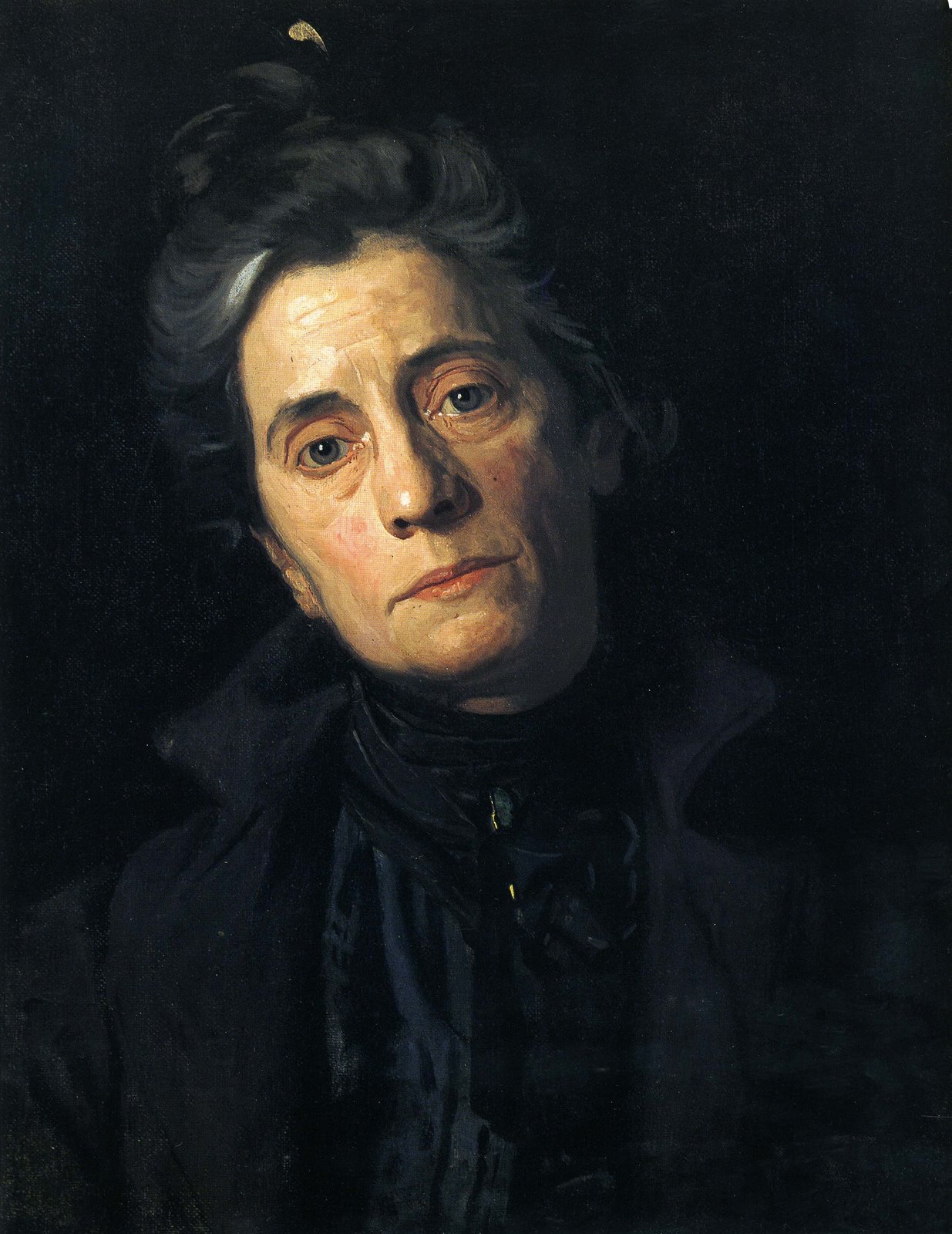
|
| Susan Hannah MacDowell Eakins |
| 1899 |
A note in Susan Hannah's diary told how she had dressed herself in some gay bright costume to tempt her husband Tom to paint her. But in the portrait she wears a dress of a rather dark green taffeta with soft folds of the material at the throat of the high necked gown. The portrait is rather ruthless and not at all romantic, a decided contrast to the one Susan Hannah did of herself. The latter, painted by her when she was elderly – in her eighties – is all softened with a tendency to suggest romanticism. The dress is black with a small insert of white in the narrow V neck, a deep wavering V. It's a portrait much romanticized; Bregler remembered Susan Hannah Eakins as very romantic. She read a great deal of fiction and Eakins never read any. Bregler couldn't remember if Susan Hannah had ever liked gardening, but photographs in his album pictured her when she was younger in the little garden back of the Eakins house on Mt. Vernon Street. It was a long narrow garden with enormous elephant ears along the high board fence on the Eighteenth Street side. There was much ivy for ground-cover, and there were potted plants in tubs set out along the walks which were paved with red brick. Across the garden was a trellis, and bird cages hung on a rope from this arbor to the wall of the house and elsewhere in the garden. Of one thing every one who knew Susan Hannah was certain; she was definitely always very fond of animals. For that matter Thomas Eakins was fond of animals himself. A photograph shows him holding a kitten gently over on its back in his lap where it looks contented. There were cats and dogs in numbers always around the house, and even after Eakins had died, the turtle stayed around. Pictures of the famous monkey, Bobby, show him manly, up-and-coming, and definitely emphatic. Mrs. Eakins used to feed the pigeons that had their nests across the way in a high church steeple; that's how she came to fall. She hurried home, being late one day to feed them, and up the back stairs, but in her hurry she fell and badly hurt her ankle. Bregler was always afraid she'd fall when she lit the gas lights. Susan Hannah would jump up on the newel post in the first floor hall and stand there to light the gas.
"My gracious alive, Mrs. Eakins," Charles Bregler would say, "one of these days you'll be falling down." It wasn't until after Thomas Eakins' death that electricity was put into the house on Mt. Vernon Street. However, Eakins fixed up some contraption under the carpet, a device that, when stepped on, went off by means of a battery. This was for the benefit of Aunt Liza, his mother's sister, who was so very old that she was in her second childhood. When she wandered out of her room, the bell notified the family. Murray remembered that once after Aunt Liza had reverted to childhood, one morning during breakfast Schenck, friend of the family, was waiting on the sofa in the living room. Aunt Liza threw her arms around him, kissed him, hugged him, then turned to Mrs. Eakins and remarked, "Hasn't he a dirty neck?"
Although in some sections of the city, Charles Bregler remembered, one hydrant in a court supplied water for several houses, the Eakins' house had two wood hydrants of its own, in the back garden close to the house. The hydrants had to be wrapped up in winter to keep them from freezing. Beneath each hydrant was a tub to catch the needed water; and for many years there was no running water in pipes. Virginia creeper climbed up the rear brick wall of the house, which in one photograph forms the background for Susan Hannah feeding four cats with one of those tubs behind her. Against a high board fence, the fence flanked by elephant ears, there were rambler rose bushes, and between the walks there were grass plots. In another photograph of the far end of the yard, against a background of cloth thrown over the high board fence at the back, a spaniel and Harry, the setter, lie on the brick walk.
One reason Eakins liked to have animals around the house was so he could study their muscles, watch their graceful motions. In particular Bobby the monkey he used for this purpose because the muscles of a monkey are so much like a human being's. Always Eakins kept his eager interest in anatomy. As he himself has said, in his portraiture the thing he cared about even more than the character of the person was the character of the muscles.
The greatness of Eakins' portraits depends to a large extent on his knowing the nice interaction among the many muscles and bones of human anatomy. If one facial muscle moves, then many other muscles more or less remotely connected accommodate themselves to the change. His students complained, as beginners do, that a model would not keep motionless until a sketch had been finished, and Eakins with scorn would issue instructions for the students to go to the zoo, sketch lions, and be sure to ask the lions to keep still till the sketching was done. But the art student feels the problem real and devastating. A model poses, say, for twenty minutes only, and you get down on paper the general contours of the face with the details of perhaps one fourth, the expression of the eyes perhaps and upper muscles of the cheek. After an interval of rest, the model poses again, trying conscientiously but with small success to assume the exact expression that she held before. But since her previous pose the model has heard of an opening in work that pays really well, and she can't help thinking about it. This time you get the chin, and you find you've achieved a caricature. The eyes are large and calf-like and the mouth leers in a smile that leaves the muscles of the upper cheek unmoved. The easy way and the cowardly for those with a facile brush is to achieve a likeness by painting the sitter showing no expression whatever, facing almost directly forward to avoid the more difficult of the foreshortening problems. Not many have had the courage to paint as Eakins did his father in the "Writing Master," whose head is bent over his work, who is concentrating intently, wearing glasses and so introducing a problem in refraction. The horizontal hand resting on the paper was difficult enough to do, but the right hand holding the pen shows the tips of the fingers toward the beholder. No accuracy of observation alone could enable a painter to achieve the "Writing Master." As Eakins was doubly sure, the only possible preparation for greatness in portrait painting must include an intimate knowledge of anatomy.
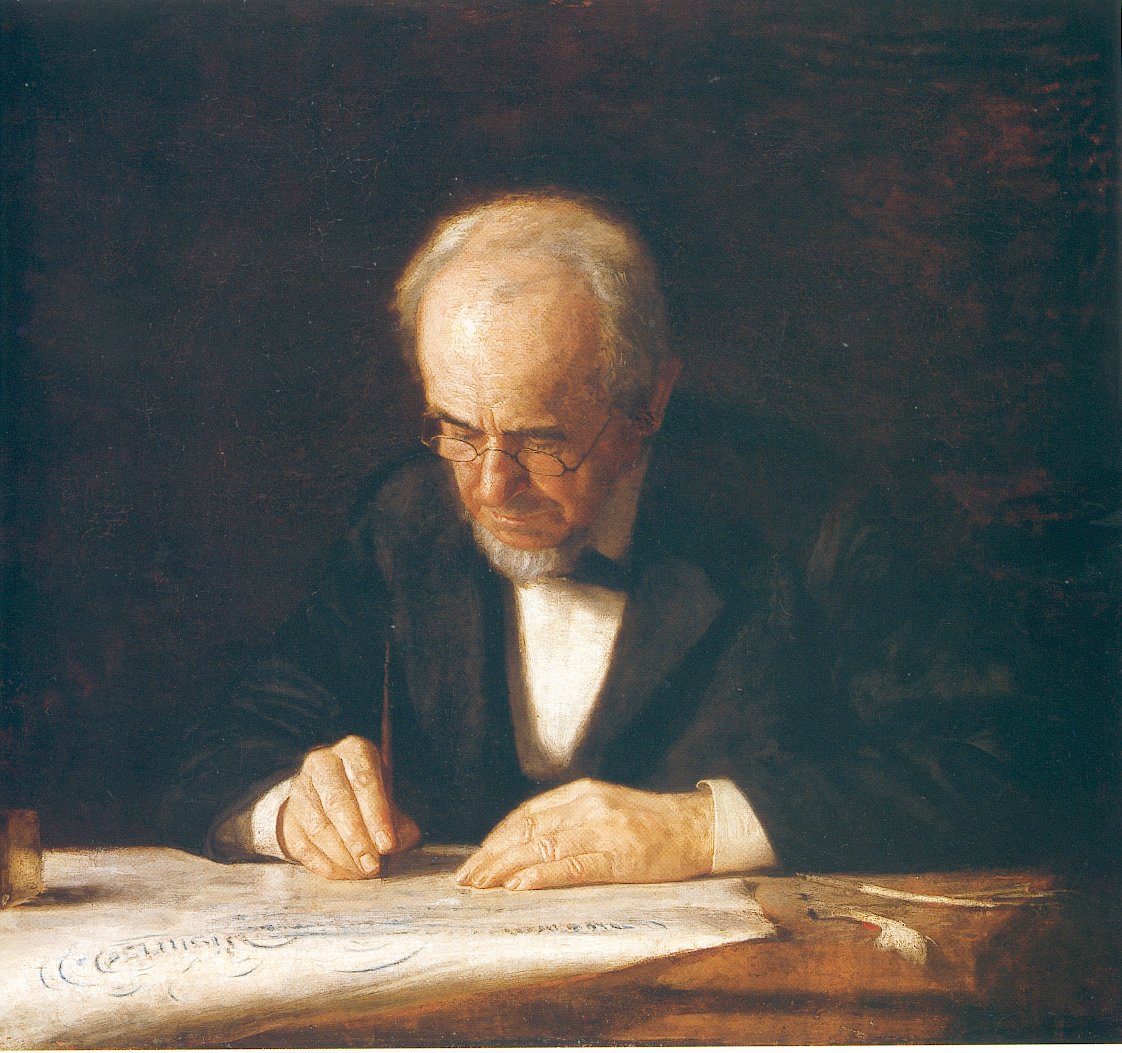
|
| "The Writing Master" (Benjamin Eakins) |
| 1882 |
Eakins was also sure that the aim of all his teaching was to make possible great painters, especially great painters of the human figure. Some of the faculty of the Academy of the Fine Arts felt that the school had a broader usefulness. They were aware that many students find a prime necessity the matter of earning their living by means of commercial art, and they also felt that very few will ever be great at anything. The Academy catalogues reflect this emphatic view point.
At the Academy of the Fine Arts, how Eakins would get along with an institutional treasurer is a skeptical guess. For Eakins was notoriously averse to giving time, attention, or even emphasis to financial matters. On the other hand, Edward H. Coates, treasurer, judged by his later career, had from the very beginning determined to make the Academy pay. Coates had been treasurer ever since Eakins had come to the school to teach. Regularly each year the financial deficit was one to worry a much concerned treasurer. Thomas Eakins insisted on teaching from the nude, which meant teaching from models paid for posing by the hour. There is no written record of what Coates thought of this; there is a written record of other threats to his peace of mind.
For one thing the City was planning to build an elevated car line, with Cherry Street proposed as the possible location. The windows of the Academy which gave a good north light were on the Cherry Street side and would face that elevated. The building itself was very new and also very expensive, much too new and expensive to be scuttled for another. The 1884 Report of the Directors contains an impassioned plea that all who can do anything whatever to ward off the elevated be active in doing that. For another awkward thing, on the death of James L. Claghorn, for years Academy president, the report concerned itself with his valuable print collection, but the possibility the prints might be bought by the Academy was not tentatively mentioned, was evidently out of the question. The report pointed out that art students had used to great advantage his engravings and etchings from periods throughout the entire history of art, that the collection should be kept intact and made permanently available. It was urged the government buy the prints for the National Museum of Anthropology being formed in Washington, D. C., by the Smithsonian Institution. The annual report is pathetically urgent, arguing the collection unique, important, indispensable. Another cause for worry was the fact that the Academy exhibits were always financial losses. Because the sales were usually small and the patronage meagre, no paintings from abroad were brought over in 1885. The year before, an exhibit of seventy paintings chosen by a Paris committee from works by American painters abroad had been an artistic success. But the paintings had been secured almost entirely at the expense of the Pennsylvania Academy. When Eadweard Muybridge had lectured in 1883 on "The Romance and Realities of Animal Locomotion" illustrated by the zoöpraxiscope, a subject with which Eakins had much to do, the lecture had netted nothing, for admission had been without charge.
The 1885 Report by the Directors announced with some emphasis the need for an endowment. By the following year the Endowment Fund was in process of formation. Although for a couple of years the school had charged tuition, the deficit announced for the year was over six thousand dollars. In January of 1886 Joseph E. Temple by a codicil to his will bequeathed $25,000 on condition that three times the sum was raised within three years. The following month, in February 1886, Thomas Eakins was asked to leave the Academy of the Fine Arts. The Annual Report for 1887 contains the following announcement:
"During the year a number of changes have been made in the School Department, which, it is believed, will be in every way an advantage. For some time prior to the year just closed, the Committee on Instruction were of the opinion that better results would be obtained, and a broader teaching follow, from the influence of several minds in the school rather than from the influence of one. In the early part of the year Mr. Thomas Eakins presented his resignation, and the office of Director of Schools, previously held by him, was abolished. ... In October, at the beginning of the school term, Mr. Bernard Uhle, whose work is widely known, was invited to accept the chair of Portrait Painting, and this new position has been most satisfactorily filled."
The Report for 1888 states these new arrangements have worked "harmoniously and satisfactorily and with encouraging results." The attendance is reported larger than in the preceding year but there is not the usual mention of the enrollment numbers. In 1889 Mr. Uhle's class waited to begin until January 2, "until a sufficient number of advanced students could be entered." And in 1890 Mr. Uhle resigned.
In 1890 also Edward Hornor Coates was made president of the Pennsylvania Academy of the Fine Arts. The office of Director was left vacant after Eakins' departure and finally abolished. A portrait of Coates by Vonnoh shows him with level eyebrows, with dark hair, a part in the middle, with bushy whiskers and side-burns graying off from auburn, and with the inscription, President, 1890-1906.
Two years after Coates had become president of the Academy, a business man, Harrison Morris, was made Managing Director. He had successfully advertised the Academy exhibit held during the year before his appointment. His nineteen years in the treasury of the Philadelphia and Reading Coal and Iron Company had prepared him for this new position, a position which brought him great wealth of contacts with many eminent artists and men of other talents whom he put into his autobiographical "Confessions in Art." He himself remembered being instrumental in inducing Eakins in time to exhibit once again at the Academy of the Fine Arts. Eakins painted a portrait of Harrison S. Morris about ten years after Eakins had been asked to send his resignation in to the Academy, a portrait Morris never liked and (as Sam Murray remembered) wouldn't allow to be hung.
|
|
At the time that Eakins left the Pennsylvania Academy, his leaving was played up as a grand matter for scandal. It would have been too much to expect that Academy finances would be either dramatic enough or available for newspaper discussion. Eakins in his insistence on teaching from the nude had been consistently tactless toward Victorian reticence. It was the age that condemned Walt Whitman to notoriety for his unwillingness to accept the Victorian speech taboos. There was something about the over-emphasis on decorum that made the Victorian period produce violent counter-reactions, and Eakins showed a determined Whitman-like lack of tact. But then his friends insisted that in this respect he always had been tactless. If the Academy wished to make an issue of the matter, it is odd it waited until Eakins had been Director several years. Probably Eakins himself never quite realized the whole reason for his being forced to leave the Academy.
The boys who were his students carried with them for life the feeling his resignation was an outrageous insult. Unaware of the intricacies of Academy finances and of the fact that Eakins as director had been expected to show in no small measure some interest in those finances, they thought the matter revolved around his having been wrongly accused of unbecoming conduct in the life classes. Their indignation was fostered by an older man among them, the student George Reynolds, whom Eakins later painted as "The Veteran." Reynolds urged the boys to secede from the Academy and to form a school of their own with him as the curator and with Eakins as instructor. The boys did their seceding rather vigorously. About forty of them got together and at ten o'clock at night marched down Chestnut Street from Seventeenth to 1330 Chestnut, to the studio of Eakins, where they stopped to cheer for him. Each of the students wore on the front of his hat a large letter E. When Eakins did not appear, the crowd broke up and left, but the performance was written up in the Evening Bulletin. The same issue of the paper, for February 16, 1886, carried an announcement about Queen Victoria; she had just sent 500£ to a relief fund for working men.
The Evening Star about that time carried the following paragraph:
"There is probably as strict an observation of their standards of virtues among naked savages as there is of ours by the members of our enlightened society. We may safely assume this, and deduct therefrom the fact that custom alone creates and maintains the barriers beyond which nobody dare go. If society accustoms itself to bare shoulders, society will cease to associate therewith any thought save such as a pretty face or a well-moulded figure in a street costume might inspire. So much for the moralities. But when we come to considerations of beauty, what angularities of bone, what deficiencies of adipose tissue, what appalling destruction of dreams of loveliness come with the hard, cold truths of the ball-room costume. False shapes, false teeth, false hair, false complexions, false eyebrows have grown out of the growth of civilization, to equalize all, despite natural disadvantages; but the startling candor of the low-necked dress has defied every artist in falsehood, and leaves the victims of harsh Mother Nature unprotected and unshielded to the gaze of the unpitying world. Art stands appalled at the task set it of inventing an undetectable pair of false bare shoulders for the dame or maiden who shudders at the unloveliness of her own neck."
About the same time the Evening Star also contained this:
"Miss Chamberlain, the beauty, just returned from Europe, has brought with her any number of elegant dresses. They were all made by Worth and a famous Cannes modiste, and will doubtless be the admiration and envy of every woman who sees them. In her wardrobe are no less than 58 handsome white dresses, each one different from the other.
"One which she wore at a recent entertainment in Cannes is of Valenciennes lace made by hand to fit her perfect form. The skirt has two deep flounces, and the sleeves reach to the elbow and are caught back by tiny diamond butterflies. Another white dress is of soft satin, combined with nut brown and russet velvet. The train opens over a petticoat of the russet velvet, vandyked with nut brown, and the bodice has a Medici collar edged with rubies.
"A different pair of dainty shoes, gloves, hat and wrap are worn with each costume. The beauty wears a size 2 shoe, and her little walking boots have the high French heel and the pointed box toes. For the house she wears house ties or slippers.
"She has brought with her two cases of fine perfume from Cannes which were presented to her by the Prince of Wales over a year ago."
In a period of such costumes and such climate of opinion, it is worth comment that the portraits of Eakins are free from coyness and from posing.
While Eakins had loyal supporters at the Academy, it is true not all of his students felt his instruction beyond criticism. There was comment that his emphasis on anatomy, drawing from life, and perspective omitted many things that the French masters were teaching. That Mr. Coates should have been sensitive on the subject of nudes was understandable; from the view point of finances life classes were expensive, for models were usually paid a dollar an hour to pose. Also Thomas Eakins must have made enemies by his Rabelaisian flair for a raucous practical joke. Murray told a tale of a cadaver of a horse that had served dissection purposes and was no longer wanted by the students. The boys dropped it down the stair well of the Academy at a time when the Masonics were having an elaborate entertainment. Fairman Rogers pointed out that Eakins had several times asked the janitor to remove the carcass; nevertheless, there are always people to whom a practical joke is offensively malodorous. In spite of such goings-on Eakins had the devotion of a large number of his students.
On the twenty-second of February, a date thereafter given birthday celebration, the boys founded the Art Students' League of Philadelphia with Reynolds as curator, on the second floor of a three story dwelling, the second house from the Northwest corner of Market Street and West Penn Square where the Pennsylvania Railroad Station was later built. After about two months, the school moved to 1338 Chestnut Street, on the south side of Chestnut Street between Juniper and Broad Streets and a few doors only from Eakins' old studio. A few months later Eakins was sent a testimonial written in copper plate writing on long foolscap paper, ruled, with names and signatures:
"The Art Students' League
Philadelphia
1338 Chestnut St.
Philadelphia, Pa.
June 1, 1886.
Mr. Thomas Eakins.
Dear Sir,
"We, the undersigned, have assembled this day, to thank you for your appreciation and kindness shown us during the past school season.
| Chas B. Cox | J. P. McQuaide | James Wright |
| Edw. W. Boulton | Albert W. Baker | Geo. Reynolds |
| Henry A. Nehmsmann | Eldon R. Crane | Chas. F. Fewier |
| G. H. Merchant | Rudolph Spiel | August Zeller |
| James J. Cinan | Thos. Eagan | Alex. Duncan" |
| Charles Bregler |
The name of one of these students sounded so much like his teacher's that "Tommy Eagan" was always used to distinguish it from "Tom Eakins."
Tommy Eagan remembered that among the students there was an Englishman from London who had studied under Gérôme, an Englishman who used to say, "If you boys knew how good your school is and the teacher you've got, you wouldn't waste a minute of your time," because Eakins was interested in the boys themselves and explained so simply they "could get it." Once when Tommy Eagan complained that in anatomy the Latin names were too hard, Eakins said the Latin was simpler than the English, and he described a muscle in English and then showed how easy the Latin was. Once when Tommy Eagan had painted a goose egg, Schenck, the curator who had succeeded Reynolds, tacked the painting up on the wall and said, "Wait till the boss comes." Then when Eakins came, Schenck said, "Tommy wasn't satisfied with a hen's egg, he's got a goose egg." The boys started to laugh but Eakins said, "There's good painting there. That's fine." Although often the boys raised a lot of noise, when Eakins came in it was "hats off," and everything got absolutely quiet. The boys had to have their recreation, but in spite of that they did a study every week, sometimes two a week. Once Eakins ignored Tommy Eagan for a whole year; one of the students told Tommy he ought to put on his hat and coat and leave. Then one day Eakins said the gladiator's chest in Tommy Eagan's figure was the best piece of painting by any student there, and Eakins brought Susie and two or three of the ladies studying at the school in to see Tommy Eagan's gladiator.
Tommy Eagan remembered doing exercises in perspective, a subject on which Eakins lectured quite a lot. Tommy Eagan had to put in perspective a large wheel going tilted round a corner. You could put a man on the wheel if you wished. He had to put in perspective twelve steps of a winding stair, and the only thing he got wrong was that he made his steps solid as though carved from stone instead of being frame work. "They all got it right finally." Eakins would refer the class to his own pictures as examples of the exercises on boats. People from outside used to come to the lectures on perspective; stone-cutters who worked on tombstones would come.
The boys could "go around any time" to Eakins' own studio, and Tommy Eagan used to watch Eakins painting the "Agnew Clinic." Later when a sketch for Dr. Agnew's head was hung in the Pennsylvania Academy of the Fine Arts, Tommy Eagan saw an old woman dressed in bonnet and shawl stand in front of the sketch for a very long time. "He was a gentleman," Tommy Eagan heard her say of Dr. Agnew. She had been a servant in Dr. Agnew's house and she very much admired the portrait by Thomas Eakins. "He must be a great painter to be able to paint him that way," she said.
Tommy Eagan remembered that Eakins once asked Agnew how many of his students turned out to be really fine. Agnew said one in 10,000 and then asked Eakins how many of his own students turned out to be really fine. Eakins said all his boys; they were all on the front line, all up in their work. "Eakins liked to see his boys do good work. It amused him more than anything I know of," said Tommy Eagan. Eakins liked to be with his boys. He enjoyed some people, but there were others he didn't like to be with. His boys he always enjoyed.
Tommy Eagan went regularly to anatomical school. One night he discovered in a leg a tendon for which there was just an indication that it might be a muscle. It ran from the ankle up the foreleg and turned out to be an extinct muscle formerly used in climbing trees. When Eakins was lecturing that evening on the subject of extinct muscles, Schenck said Tommy Eagan had shown him one of those found during the day's dissecting. "Come here, Tommy," called Eakins, and then Tommy Eagan had to go up in front of the class and explain about this extinct muscle which was like several fine thin tendons.
Tommy Eagan was a serious student who used to work all summer to get tuition for school from Christmas until May and who regretted he wasn't able to keep on at the art school longer. Nevertheless it was he who would put the big beautiful studio cat up on the pipes from the stove. It would run along the pipe until as it neared the stove the pipe grew hotter and hotter, and then the big beautiful studio cat would give a flying leap and land on one of the boys who were sitting by the stove.
Tommy Eagan remembered Eakins as a great ice skater. "He skated as he painted – broad," Tommy Eagan would say. "None of the boys could keep up with him." Eakins would come to the school and want the boys to go skating with him, but Tommy Eagan always felt he had to stay at the school and work. However, Tommy Eagan used to go to 1729 Mt. Vernon Street Saturday nights for dinner and he'd stay to talk until 10 P.M.
Tommy Eagan used to go sketching every Sunday and do snow scenes with hills and trees and the road into an old quarry hold near Conshohocken. He always intended to put a gunner with a dog on that road. Eakins told Tommy Eagan, "There's one nice thing about your snow pictures, Tommy. They don't look conventional. They look like snow." Years later, after Tommy Eagan had been a mechanical engineer for a shop in Conshohocken twenty-seven years, he was forced by a broken hip to retire, and he went back again to his painting. He did a study of fruit in a cut glass bowl, of an orange in front of a vinegar bottle, of a banana in front of a glass, as a study of lights on rounded objects. He did a self-portrait or two, studies of flowers, and landscapes around Plymouth and the Schuylkill River.
Tommy Eagan remembered that Eakins liked best of his own paintings the clinics, the Veteran, the Barker, and the portrait of his father; that he liked the Mrs. Eakins, the things of Schenck, the sketch for Gross, and the Walt Whitman. When it came to other painters, Eakins talked most of Gérôme (his choice), of Velasquez, Ribera, Fortuny, Corot, Millet. Tommy Eagan thought Eakins never spoke much of the Germans, but liked Corbet. Eakins described Rembrandt so well that when Tommy Eagan went to New York, he recognized Rembrandt's pictures before he read the names. Eakins particularly liked Rembrandt's "Portrait of a Man," and he liked Frans Hals and Phidias and the old Greek masters, but he never said much about Raphael. Tommy Eagan himself thought Raphael a sleek draftsman but didn't like his things. When Tommy Eagan saw the Brooklyn exhibit of old masters he was thrilled to see that Eakins, hung among them, held his own; the "Mrs. Frishmuth" and the "Thinker" were by Eakins.
|
|
Tommy Eagan was always glad that he had gone with Eakins, although at one time the League School dwindled down to four or five students. Quite a few who left the Academy to go with the League went back again to the Academy of the Fine Arts. Tommy Eagan remembered that the League room was hardly warm when he and Jack Wright posed for each other's benefit. However, it was an excellent school: "Most thorough; no tricks; everything had to be just so."
Reynolds and Schenck seemed to Tommy Eagan the two neatest characters in the school. Reynolds did a fine oil painting of a Long Island interior with a fire place, a painting that used to hang in Eakins' studio for years. After he had left the school, Reynolds went to New York City for the rest of his life. Schenck not only played the guitar but he also sang well, especially songs in German. He would sing Schubert's Serenade first in German and then in English. He and Tommy Eagan used to go to the opera together. Tommy Eagan thought, "Schenck was very paintable, and he was very nice too, quite a character." Schenck stayed at the school long after Tommy Eagan and then went to Brooklyn where he painted little landscapes. Finally Schenck went down on Long Island and camped for years till his death.
The League School was started in February of 1886. Charles Bregler long cherished a piece of folded foolscap with the bottom torn off. On the second page was written in Eakins' hand: "The Art Students' League of Philadelphia is an association formed for the study of painting and sculpture. The basis of study is the nude human figure. Regular criticisms will be given to all the pupils by Thomas Eakins, as also a series of lectures on artistic anatomy and perspective. Its second season begins September 1, 1886."
That fall on election night while the boys were haranguing outside the building, a shy lad seventeen edged up to them and asked if this was the Art Students' League. Tommy Eagan said it was and told him to come on up. Only by much urging and by arguing politics they finally got the newcomer up the stairs and into the school. It turned out that his name was Sam Murray, and he decided that he belonged. His wealth of hair was brown; his eyes were brown; his wit was Irish. It was Murray who cut the cat's whiskers off, but he blamed it on Tommy Eagan who was therefore the one who got scolded by Susie. From the first Tommy Eagan thought Murray seemed very much advanced, and Tommy Eagan remembered that Murray worked very hard indeed. Eakins, himself in his forties, could not then have forseen that this new student would be his most intimate friend for twenty-five years. At forty-two Eakins saw more clearly the bitterness of being ex-Director of the Pennsylvania Academy of the Fine Arts.
CHAPTER III
EAKINS PAINTS WALT WHITMAN
In that long year and a half between the beginning of 1886 and the autumn of 1887, the year and a half that followed the forced resignation of Thomas Eakins from the Academy of the Fine Arts, just six pictures are listed in the catalogue of his paintings: one of Professor Barker and a sketch for it, one of Professor Marks and a sketch for that, two of Susan Hannah's brother, Frank Macdowell. It must have been a difficult time for Susan Hannah Eakins who herself loved painting but had given it up for herself because she believed there wasn't room for two artists in one family, and who believed unreservedly that Tom was a great artist. That a person as active as Eakins could have sat doing nothing, or that a wife such as his could have helped him do that, seems possible but difficult to believe. The school of the Art Students' League took up some of his time; he was conscientious in the extreme in his attentiveness to his students. But the real key to what Eakins was doing may be in a letter written in the fall of 1886 by Edward Hornor Coates to Dr. William Pepper, then provost at the University of Pennsylvania, a letter preserved in the manuscript room of the university library. Part of the letter reads:
|
"116 Chestnut Street
September 27/86
Monday
"Dear Dr. Pepper:
"Your favor of 22d was duly received and remarks have full attention. Of the series photographs by Muybridge there are in all 781, roughly classed as follows:
| Figures - 562 | |
| Horses - 100 about | |
| Various animals - 120 |
"Mr. Muybridge is at work upon a catalogue on a system of his own which may or may not be best. The proof will be ready in about a week.
"Am I correct in supposing that all printing should be and is to be done by the J. B. Lippincott press? The human figure series should I think be carefully examined and considered. If the work is to be published at all the usual question as to the study of the nude in art and Science must be answered Yes. Otherwise the greater number of the 562 series would be excluded. At the same time there are probably some lines to be drawn with regard to some of the plates. That there will be objection in some quarter to the publication would seem to be most likely if not inevitable. Mr. Dickson may be quite right as to the undesirability of conciliating one enemy but I am inclined to believe this point worthy of consideration at least. ...
"As I understand you will write the preface to the work. It was stated at one time that Dr. Allen would write a history of the undertaking giving diagrams and description of instruments used. Will this be covered by the paper which Mr. Muybridge has in hand and of which nothing has heretofore been said? Will Dr. Parker give a scientific account of the work and will this be possible until the plates are entirely completed by the photogravure Co? Will Mr. Eakins be ready with his treatise and the plates made? The latter are certainly of value in themselves. The negatives to be furnished as specimens will be ready from the Forbes Co. and the Photogravure Co. in about 10 days. ...
Very faithfully yours,
Edward H. Coates."
"Will Mr. Eakins be ready with his treatise and the plates made?"
In the autumn after Thomas Eakins had left the Academy, then, he must have still been interested in Muybridge and photography and the plates of instantaneous snap-shots which later became so famous and gave rise to so much discussion about who had invented the movies, since in the published account which came out a year or two after this departure some of the actual writing was done by Thomas Eakins. Lloyd Goodrich, his biographer, knew of letters about the photography work, but the letters all bore dates in 1884 and up to the fall of '85, none later. This made Goodrich feel Eakins had stopped his photographing motion in the summer of 1885. Goodrich remembered also that Mrs. Eakins, Murray, and Eakins' student Eagan all had said that Eakins had stopped working with Muybridge because the latter was trying to popularize the experiments and Eakins wanted to go at them in a more scientific manner. In a letter to J. Laurie Wallace in October, 1888, Eakins said he had recently had his negatives out, printing some, and the sight of them had brought back pleasant recollections, making him long to see Laurie Wallace again. A bet by ex-Governor Leland Stanford of California had started off the work of Muybridge on "Animal Locomotion."
Ex-Governor Stanford made a bet of $25,000 that a horse has all four feet off the ground at one time at least once in every completed series of movements made in trotting. Stanford met with such unanimous incredulity that he engaged Muybridge, who had been photographing for a geological survey and who had a photography studio in California, to take pictures of the famous horse Mahomet while it trotted. Stanford won. Muybridge placed a bright, white fence along one side of the race track. On the opposite side was arranged parallel to the fence a line of twenty-four cameras operated by strings. As Mahomet trotted past them, he broke one string after the other, taking a series of instantaneous photographs of himself. Since dry plates, although invented, were not yet on the market, the pictures were vague productions made by collodion -plates. But several of the twenty-four showed all four feet of Mahomet definitely off the ground at a single instant of time. This was in 1872, about the time that Thomas Eakins, who later was on the committee that supervised "Animal Locomotion", was studying human anatomy in Philadelphia. In '73 Muybridge figured out a way to project his series of images and showed them before huge crowds that gathered to watch these pictures of a horse that seemed to be running. In 1878 the Hon. Leland Stanford published "The Horse in Motion," made up of several series of Muybridge photographs. Muybridge showed his pictures and gave lectures about them before scientific and art societies in England, Trance and America. The public was hard to convince, so Muybridge used a zoëtrope, a toy, a revolving drum that could be watched thru slits in a cylinder inside of which was the drum. When the photographs of the horse were mounted on this drum, and the drum was made to spin round rapidly, sure enough Mahomet was seen to be trotting again. Laurie Wallace remembered that it was Eakins who worked out the pictures for the movement of the horse so that in the zoëtrope it ran smoothly. This was around 1881 and '82. Because of his success Muybridge was assisted by the University of Pennsylvania to make further photographs of animals in motion.
It was not until 1884 that the pictures of locomotion were made on the University of Pennsylvania campus. This finally came about because a group of guarantors were willing to sponsor the project, proposed by Muybridge himself, as an aid to the arts and sciences. Edward Hornor Coates was one of these guarantors; Provost William Pepper was another one; Charles C. Harrison, who succeeded Pepper as provost, Samuel Dickson and Thomas Hockley made up the list. The 781 plates produced by Eadweard Muybridge (he was really James Edward Muggeridge from Kingston-on-Thames, England) were published under the auspices of the University of Pennsylvania and under the title of "Animal Locomotion." The description of the method used in the experiments was published separately in the form of a small book to accompany the very large arrangements of the prints, horizontally in rows, with about six prints to a row. In these, the details were recorded very clearly, dry plates having been by this time made available, and the electric shutter control developed. Without having been retouched the finished plates were produced from the original negatives by photo-gelatine printing. The experiments were carried on in a group of frame buildings at 36th and Spruce on the university campus.
The account of "The Muybridge Work" gotten out by the university in 1888, the year after the prints were published along with the catalogue, contains pictures of the buildings put up for the experiments. The background was three sides of a shed 120 feet long in front of which were vertical and horizontal threads forming two-inch squares. Every tenth thread was twice as heavy as the rest. The shed was painted black so the threads would show up well. From one end to the other of the shed a low board fence, painted white on the inner surface, made a sweeping semi-circle. To the south directly opposite the open length of the shed was inserted at the mid-point of the semi-circular fence a low rectangular building that housed the table full of cameras. There were twenty-four of these cameras in a horizontal row, and another group of twelve for the purpose of taking "foreshortenings" was placed on a diagonal to the principal twenty-four. And there was a third, a portable battery made up of twelve cameras. Running in front of the long shed on which the cameras were focused was a corrugated rubber track about eight feet in width. It was over this track that men and women and domestic animals ran and leaped and performed for their photographers.
In addition to photographing athletes and horses in action, Muybridge chose some subjects that were amusing in the extreme. His strips of pictures on the jacket for the book, "Photography, a Short Critical History", gotten out in the 1930's by the Museum of Modern Art pictured a woman leaping, in the costume of the 1880's, gracefully over a stool. The hat and the shoes and the long skimpy ruffles seem superlatively funny. Also on the paper cover for "Photography" there is pictured a man, nude, riding horse-back; Murray thought it looked as though it might be Thomas Eakins. While the nudes are of more importance from the artists' point of view, the figures in costume are funnier to a later generation, for very much less is eternal in woman's get-up than in woman.
Among the subjects listed in the '87 catalogue put out to accompany the prints there were five hundred thirty-six posed by human figures, usually by athletes or professional models. Included were: walking – right hand at chin, one elbow or two bent, with high-heeled shoes on; carrying seventy-five pound stone on left shoulder; fourteen pound basket on head, hands raised; fifteen pound basket on head, hands raised; opening parasol; flirting a fan; turning round with bouquet in both hands; scattering flowers; running at a half-mile gait; turning around in surprise and running away; turning to ascend stairs with a pitcher and goblet in hands; ascending step ladder two steps at a time; twenty pound basket on head and hands raised; throwing handkerchief over shoulders; full demijohn on shoulder; jumping; pole vaulting; crossing brook on stepping stones with fishing pole and basket; dancing; courtesying; lifting child from ground; removing water jar from the shoulder to the ground; getting into hammock; throwing an iron dish; putting the shot; rowing; boxing; fix and unfix bayonets; back somersault; acrobat descending stairs on hands; farmer using a long- handled shovel; carrying hod of bricks up a ladder; washing clothes at tub; making up a bed; feeding a dog; two models, one chasing the other with a broom; child walking and crawling up-stairs; shoeing a horse; movement of hand drawing a circle. There was a series of photographs of abnormal movements, and the series of animals included the horse's various paces and pictures of the mule, ass, ox, sow, goat, orex, Virginia deer (no antlers), Fallow deer, elk, eland, antelope, buffalo, gnu, dog, of two dogs racing, of a cat, lion, lioness, tigress, jaguar, elephant, Egyptian camel, Bastrian camel, guanaco, racoon, capybara, baboon, sloth, kangaroo. Also there were birds: the pigeon; cocatoo; red-tailed hawk; fish hawk; vulture; American eagle; ostrich, adjutant: stork; swan; and chickens, scared by torpedo.
They had a most astonishing time who worked on "Animal Locomotion"! Some of it must have been exceedingly hilarious, and some of it also must have been laborious and fatiguing. At the end of the three years' project, those responsible felt the outcome well worth the effort spent and the near thirty thousand dollars. The project had produced valuable studies of motion, which would be useful not only to artists, but also to physicians.
Exactly how much Eakins had to do with the Muybridge project no one seems to know. J. Laurie Wallace remembered fifty years later that he and Eakins and Anshutz had assisted Muybridge in making many of these photographs. Eakins was on the commission to supervise this work on Animal Locomotion and there is no reason to believe that he resigned from the commission. However, Eakins did branch off into another phase of photography. Samuel Murray remembered that Eakins used to photograph to detect spinal diseases for the university doctors. A thing like a Christmas ball would be fastened over the spine of a patient's back, and while he walked, Eakins would photograph his motions. Eakins was deeply interested in the time measurements involved in instantaneous photographs of animals in motion.
The volume on the Muybridge work includes a detailed account by William Dennis Marks of the apparatus used by Eakins in making his experiments. Goodrich in his life of Eakins states that Eakins himself wrote part of this account; Mrs. Eakins owned the manuscript. The volume has for title "Animal Locomotion: The Muybridge Work at the University of Pennsylvania: The Method and the Result," and in that the account by William Dennis Marks is called "The Mechanism of Instantaneous Photography." He points out that Professor Eakins followed the Marey method in which the subject to be photographed in sunlight moved in front of a dark background, which if possible consisted of a recess, deep and painted black. Then a disk with one or more openings was made to revolve with rapidity in front of the lens in a camera. Each time a hole in the disk came directly in front of the lens, an exposure was made; a photograph was taken. Eakins improved on this Marey method by using two disks with a hole in each and by making one disk revolve eight times as fast as the other. The slower disk determined the length of time between exposures, since every time the hole in the slower disk made one revolution and returned to its position exactly in front of the lens, in the same length of time the faster disk made eight revolutions and returned to its position exactly in front of the lens. In other words each revolution of the slower disk ended by bringing all these three things into line – the lens, the hole in the larger disk, and the hole in the smaller disk. These three things in line constituted an exposure.
The faster disk determined duration of time for each exposure. The hole in the faster disk passed the lens eight times as fast as did the hole in the slower, shutting the light out that much sooner. In other words the use of one disk eight times as fast as the other cut the length of time the plate was exposed to one eighth of what it was when only the slower disk was used.
Among the plates which Thomas Eakins made by this method were one of a female model walking, scarf around her face; one of pole jumping, one of a dissected leg illustrating motion. Charles Bregler presented a number of these Eakins plates to the Franklin Institute on the Parkway in Philadelphia. As an illustration of the entire technique, there was reproduced in the 1888 account of the experiments a photograph Thomas Eakins had taken of a boy doing a broad jump. The method of making the print itself is now a lost art. It was done by wood engraving; the picture was photographed on the wood which was then engraved. Several distinct figures at precisely determined intervals appeared on one and the same plate with occasional overlapping of the arm and leg images. The interest of this achievement to professional physicists lay partly in the exactness of the timing of the intervals, making it possible to figure the velocity of motion and of the relative motions of the different parts of the body. Professor Marks pointed out that this entire process should also prove of interest to physiologists.
|
The Professor William Marks who wrote the explanation of "Instantaneous Photography" was the one who designed the chronograph to measure with exactness the time between exposures. He described the way in which his chronograph, composed of a stylus attached to an electro-magnet set-up, would record on a smoked drum a series of dots that would be one one-hundredth of a second apart. This provided the regular time-comparison intervals while a like electromagnet recorded the exposures.
While Mr. Coates in the fall of 1886, some months after Eakins had left the Academy of the Fine Arts, was apparently eager to publish the plates made by Thomas Eakins with his camera and this chronograph, Professor Marks was forced to state that unfortunately the plates had not been finished in a form ready for publication.
It was this William D. Marks, Whitney Professor of Dynamical Engineering at the University of Pennsylvania, whose portrait Eakins painted in 1886. The chronograph invented by Marks and used in the Eakins photography is on the table at which Professor Marks is sitting. He holds a cigar in his left hand and a quadrant in his right. On the table are other engineering instruments, and behind Professor Marks shelves of books are the background. Marks was on the commission appointed to supervise the work on Animal Locomotion. There were nine on this commission, which included Thomas Eakins, Coates and Provost Pepper. Harrison Allen, one of the nine and its secretary, a decade later provided notes for a paper Eakins presented on the "Muscles of the Horse" before the Academy of Natural Sciences in Philadelphia. To the account of the Muybridge work Allen contributed an article entitled "Materials for a Memoir. An analysis of the movements of the racoon, the baboon, and the sloth." Some of the animal pictures had had to be made at the Zoo, or as Professor Marks in his article had put it, photographs of the birds and wild animals had been made at the gardens of the Zoological Society, those of the thoroughbred horses at the Gentlemen's Driving Park. Another of the nine on the supervisory commission was George F. Barker, Professor of Physics, whose portrait also Eakins painted in 1886. Dr. Barker was the first person in America who exhibited radium in radio-active bodies. Of the six portraits Eakins made that long year and a half after he had left the Academy of the Fine Arts, two were of professor Marks and two of Professor Barker.
|
|
|
Samuel Murray remembered the episode several years later when Thomas Eakins offered the Barker picture to Provost Harrison. The picture at the time was in the Haseltine Art Gallery, then on the south side of Chestnut Street between Fifteenth and Sixteenth. Murray and Eakins were riding down Chestnut on bicycles near there when they saw Provost Harrison walking down the street. Impulsively Eakins jumped off and handing his bike to Murray, ran across and offered the provost the portrait of Dr. Barker as a gift to the university. In a letter to Dr. Pepper written about this time, Mr. Harrison pointed out that he had little reserve strength and that the financing of what was planned for the university was pressing heavily on him. This was scarcely surprising since Mr. Harrison was just at the beginning of his career as provost and during his career he was responsible for adding thirteen buildings and several departments to the university campus. At any rate on the day that Thomas Eakins stopped him, Harrison was preoccupied and in no mood to discuss pictures. He was gruff in his refusal to go look at the painting of Barker and left Eakins crestfallen and "like a wet rag" said Murray. Samuel Murray was furious and insisted that Thomas Eakins write him out an order to get the portrait from the gallery before there was any chance for the provost to change his mind. Eakins did and Murray went immediately for the picture, paid a boy a quarter to carry it back to the studio. That night the Haseltine Gallery from which the Barker had been retrieved burned to the ground along with every picture that was in it.
One series of the prints gotten out by Muybridge dealt with abnormal movements; single amputation of leg, hopping with crutches; double amputation of thighs – (boy; A, moving forward; B, getting on chair; C, down from chair) – bow-legs; spinal caries, spastic gait (hysterical); lateral curvature of the spine. "The Muybridge Work" which was published in 1888 contained in addition to the articles by Professors Marks and Allen, another by Francis X. Dercum, Instructor in Nervous Diseases at the University of Pennsylvania. He described in detail several abnormal gaits, locomotor ataxia, infantile paralysis, artificially-induced convulsions, tremors. In his list of acknowledgments to those doctors who had permitted the photographing of patients who were under their care, he included Dr. Horatio C. Wood, Professor of Nervous Diseases at the University of Pennsylvania. In the summer of '87 Thomas Eakins went west to the Bad Lands to a ranch in which this Dr. Wood had a financial interest.
By June Eakins was writing Laurie Wallace in Chicago of the proposed trip West. There was to be a stop off in that city from 7 A.M. to 12:15 Tuesday morning, July 26, and perhaps they could get together. Eakins was glad to hear Wallace was well and had gotten himself established. Later in the summer Eakins wrote again to Wallace, this time from the B-T Ranch near Dickinson, North Dakota, sorry to have missed him on the trip coming out but almost certain to see him on the way back East. Eakins was in perfect health and therefore "moderately happy," sleeping out on the ground with the boys, living and working with them, trying to learn their ways so that he might paint some. Although the blankets they slept in had frequently been through the river, he had not caught a single cold and had not had one bilious spell. Eakins had never "met with" "a nicer set of fellows." He was planning to take home his bronco and little Indian pony, riding in a caboose with them and some cattle to Chicago. By helping to care for the cattle, he could ship his horses with them; and cattle trains, since they had air brakes, could go faster than passenger trains. However, cattle trains had to stop once every twenty-four hours for the rest required by law.
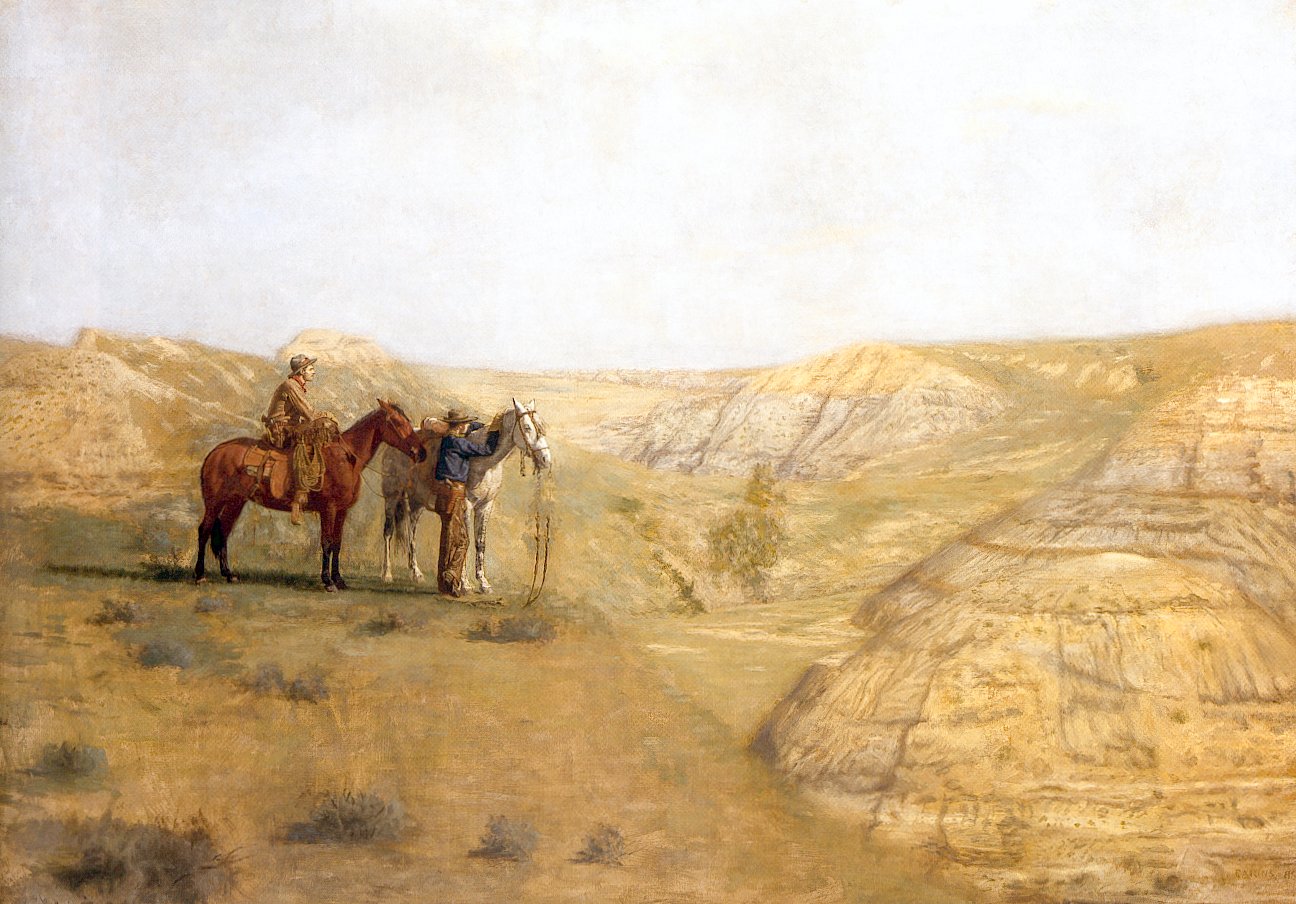
|
| "Cowboys in the Bad Lands" |
| 1888 |
It was an active life that Eakins led out there in the West. The costumes of the cowboys and the splendor of the horses made Eakins want to get out his sketching pad again, and he took a great many photographs. The B-T Ranch in northwestern Dakota was about forty-five miles from the railroad town of Dickinson in the Little Missouri Bad Lands, the foothills, twenty or thirty miles from Teddy Roosevelt's Elk Horn Ranch. Dr. Wood's son Jim had been a friend and student of Eakins at the Academy of the Fine Arts; James Wood had later gone to be in France three years and to study with Gérôme. It was George, a younger son of Dr. Horatio C. Wood, who was at the ranch the summer that Thomas Eakins was there. Later a physician, George B. Wood was then sixteen, and he remembered Eakins that summer of '87 as always busy with his pencil sketching the cowboys and the Bad Lands and the picturesque costumes. Over fifty years later George Wood wrote of Eakins: "Ranch activities were an entirely new episode in the life of Eakins and if it had not been for his geniality and generosity his ignorance of the customs of the country would have made him an open mark for the cowboys' sense of humor." For example once a cowboy who didn't belong to the B-T Ranch remarked he had laid his gun down somewhere and asked Eakins to lend him his. Eakins was naive enough to have handed his own gun over if he hadn't been prevented by his more experienced friends. George Wood remembered Eakins constantly went painting, and sometimes Wood went along with Eakins when he painted. Eakins would hand Wood canvas and paints and tell him to go ahead. George Wood thought painting looked easy when he was watching Eakins but regarded his own attempts at the artistic game as funny. Wood couldn't remember that Eakins ever went out to work the cattle, but Eakins wrote back to Sue that he had taken part in the round ups, one time riding all of sixty miles in one day; had taken part in all the work a cowboy does in the life on a ranch, so much so that he hadn't been permitted to pay his board though he'd wanted to. Eakins bought George Wood's little Indian pony Bally. White down the face and around both eyes with the eyes themselves white made the pony's eyes look like balls, but when the horse belonged to Eakins, it came to be called Baldy.
Baldy too was sixteen, a perfectly trained cow pony that knew all the tricks in working cattle and was the quickest turning horse on the ranch. Baldy had been trained to bite steers, and he would pick a dog up by the tail and chuck it. Also Baldy knew well how to run beyond the reach of man by running with his head to one side to drag on the reins. Most horses when the reins are thrown down in front of them, step on the reins and can't run. George Wood would go down and do some disciplining before he could get Baldy bridled for Thomas Eakins. Over fifty years later George Wood wrote of that pony: "Although with the children 'Bally' was gentle and tolerant, he had a vicious streak and would run any stranger out of the orchard in which he was pastured with a squealing ferocity that made him a most valuable 'watchdog'."
George Wood remembered another thing about the artist, Eakins. A couple of years later when he painted the "Agnew Clinic," he asked George Wood, who happened to be in the studio at the time, to jump up on the trestle to pose for some knees. All the knees in the extreme upper part of the picture are George Wood's.
October 4, 1887, Eakins was writing Laurie Wallace from the Union Stock Yards in Chicago where he had arrived "all safe and sound" with the broncos. He was staying at the Transit House and couldn't leave the Yards because he was looking for a chance to ship his horses with some one else's. He hoped Wallace could come to see him; he planned to breakfast about 7, dine about 12:15, and eat supper about 6, and for the rest he would be around Keenan and Hancocks in the Stock Exchange Building. He hoped Wallace would come in the morning for a few minutes at least, and would at any rate keep Sunday for him, for Eakins wanted to see Laurie Wallace "ever so much."
After he had gotten back to Philadelphia, Eakins wrote again to Wallace of the trip. Coming East said Eakins he had been entirely comfortable, more comfortable than he could ever have been in just a sleeper. He could climb onto the top of his car to enjoy the scenery. In the car he could lie down; he could go back to the caboose. He had passed Harper's Ferry shortly after sunrise and it was memorable in country as pretty as any he had seen. The only unpleasantness had been a little delay around Baltimore, a delay which was probably fortunate since it meant he'd arrived home late. Riding up Mt. Vernon Street on his bronco, leading the mustang packed with his blankets and his traps, he had been glad he had arrived in the middle of the night. If he had gotten home "when school was out," his progress would have been as bad as any circus. As it was, his trunk arrived before his clothes. He stabled the horses, got into the bath tub, and so to bed. Next day he "rigged up in a biled shirt etc."
After Eakins had come back from the West, in 1887, more than a year and a half after he had left with fanfare the Academy of the Fine Arts, he went over the river to Camden and hunted up Walt Whitman.
Some of the things in the West that Eakins had found congenial he found in – not Whitman, for Whitman was paralyzed – but in some of the many things Walt Whitman had come to stand for. The open largeness, the robust living, the standing up to life – these Eakins caught and recorded in his bust portrait of Whitman. The actual painting was done in Whitman's house in Camden, since Walt was, by that time, unable to leave his room. Samuel Murray remembered Whitman used to get out of bed with difficulty and pose in his chair by the window for Murray to make photographs and a bust, while Eakins painted the portrait. They worked in the front bedroom made famous by Traubel's memoirs, a second floor room much larger than the outside of the house would suggest. Pictures of the place show a small frame house in a row, but the second floor front bedroom extends over both the lower floor and the passage-way to the right of the house, giving the room three front windows.
It is astonishing to find that in the account of Whitman by Traubel, who played the Boswell and noted detail after detail, there is not one mention of the visits of Murray and Eakins. Yet it stands to reason that Eakins, since he painted Whitman in his bedroom, must have been there often. Traubel's account, "With Walt Whitman in Camden," deals with the period between March 28 and July 14, 1888, and it is possible Murray and Eakins were not there during that time, except on the one occasion when Eakins went to the house and Walt Whitman regretted that his head was too sore for him to see Eakins, who was always welcome. Samuel Murray remembered their visits. Murray also remembered that it was he himself who had made a plaster cast of the hand and a death mask of Walt Whitman. Schenck used to go to see Whitman but had no part in making a death mask said Murray. O'Donovan, though, made a death mask. In Traubel's book of memoirs some of the quoted comment concerning the painting by Eakins is from remarks made to Traubel that Walt Whitman had indulged in on a particularly good day. The "Herald" had called for material on Arnold, who had just died. It was the same Matthew Arnold who had said that Lincoln "lacked distinction," and Whitman, who lectured annually on the revered Abraham Lincoln, was pleased with his own promptness in sending a reply. Also a hatchet lay ready for Traubel to open a box that contained a bust of Whitman by Morse.
The Eakins portrait almost finished there before them came up for discussion. Whitman said he hadn't liked it at first but the picture "grows on you." Shortly the bust of Morse was taken out of its wrappings and Whitman remarked of it also that the more you stayed with it, the more you were impressed with its points.
In a later conversation, reported also by Traubel, Whitman was more enthusiastic, declaring that of all the portraits done of him by artists, he liked Eakins' best; for although it was not perfect, it came nearest being Whitman. Eakins, declared Whitman, had almost achieved the desired balance between the spirit and the flesh, erring just a very little on the side of the latter – which certainly sounds like nothing at all that Eakins would ever have said. Again in a still later talk, also reported by Traubel, of the portrait by Eakins Whitman said that it fulfilled its purpose, getting him down without fuss or feathers, never fading, never weakening. Again Whitman expressed the view that only a few would like it, and those not artists. He proclaimed Eakins "a god man" rather than "a school man," not so much a painter as a force.
|
|
Eakins in 1890 painted Whitman's friend, Thomas B. Harned, in a head and bust portrait.
Whitman's outspoken preference for the photographs made of himself must have pleased Samuel Murray, who made many of these photographs. He used Eakins' camera with a very expensive lense which he believed Eakins had brought back with him from Europe. Years later Mrs. Eakins gave the camera to Murray. Samuel Murray remembered Whitman as "tender and nice," paralyzed but getting up in an arm chair to be photographed. Murray frequently went to take the pictures without Eakins.
Thomas Eakins preferred among the snapshots of the poet one that had been made in 1863, the war-worn one with the two inscriptions across it, the snapshot given to Traubel. The preference is revealing, for it is a picture of pain. The eyes are dead to the world, knowing it weighty and weary. Deep furrows cross the forehead and press upon the brow. Whitman is aware of war in that picture of '63. It is a picture that might be used to illustrate Whitman's "Specimen Days," the account of his ministrations in the military hospitals during his three years of voluntary service to a hundred thousand soldiers from both the North and the South, a service he felt was responsible for his later loss of health. He must have mentioned more than once in the hearing of Thomas Eakins something of those experiences in Washington during war days. And Thomas Eakins has caught in his famous portrait of Walt Whitman some of the war weariness in the expression of the eyes. Aptly enough it was during the tragic Second World War that the painting was sent by the Pennsylvania Academy of the Fine Arts to the great fair in California where thousands became acquainted with the portrait Eakins had painted of Whitman. The portrayal is not all tragic. Although painted in a sick room, there is life in the sweep and the slant of the beard and of the hair, managing to suggest the sea breezes of Whitman's Long Island. The Jovian head is thrown back, the cheeks are ruddy with outdoor living, the eyes look far across vast undefined vistas. The tragic side of Whitman John Singer Sargent also portrayed, the age and the pain without the sea breezes, the defiances; but Eakins had caught in addition the man's robustness of spirit.
There is a tale Samuel Murray remembered about Walt Whitman, a tale that concerned the tomb that Whitman was having built for himself in the Harleigh Cemetery a mile or two east of Camden. Whitman enjoyed driving out to see how the tomb was progressing, and indeed it was a very pleasant place to drive to. The tomb was built into a hill, or rather an embankment. The construction was of large rugged blocks of stone with a slab of stone for a door. Over the door the front of the tomb was triangular in shape. Some one knowing Walt's fondness for this place, suggested Walt should be photographed standing beside his tomb and left it up to Murray to make the suggestion to Whitman. Samuel Murray remembered that Whitman's reply was just, "I know this didn't emenate from you son." It was an eerie business enough that the date first put on the tomb was by a mistake of the workmen recorded as 1890. Since Whitman didn't die until 1892, it gave him the task of explaining that the cemetery people had gotten the idea the tomb was being presented by those of Walt's friends who had given him a birthday party; that the date of the presentation was the one to go on the tomb. Harrison Morris and Ann Harned both remembered that Eakins, who was not socially inclined, was absent from the several birthday dinners given Whitman. Eakins went to the funeral itself, and Murray and Bregler were there.
Eakins was not only present at the funeral of Walt Whitman about four years after the painting of the Whitman portrait, but he was also listed as an honorary pall bearer together with John Burroughs, George W. Childs, Dr. Horace H. Furness, Harned, Julian Hawthorne, Ingersoll, Harrison Morris, Traubel, Talcott Williams and others. There was a great crowd at the cemetery and the scene was very impressive, for a huge tent had been erected and there were many flowers. Robert Ingersoll made the oration and Talcott Williams read from the Bible, from Greek philosophers, from Confucius, and from the Koran. A memorial pamphlet that was gotten out by Horace Traubel contained the readings and addresses at the burial.
Whitman himself had written lines of stirring beauty on the matter of death. "Out of the Cradle Endlessly Rooking," out of the sea, had come the mocking-bird that had sung, its mate gone from him, the songs that had wakened Whitman to write a thousand songs. And to the impassioned searching for the final, superior word, the word that should be the clue to his singing, the sea had whispered death. In his "Song of Myself" Whitman had written:
"All goes onward and outward, nothing collapses,
And to die is different from what one supposes, and luckier." 1
"When Lilacs Last in the Dooryard Bloom'd," written for Abraham Lincoln, recounting his funeral cortege as it wound through city streets that were lit by countless torches and crowded with long processions, contains the lovely lyric sung by a gray-brown hermit thrush:
"Come lovely and soothing death,
Undulate round the world, serenely arriving, arriving,
In the day, in the night, to all, to each,
Sooner or later delicate death."… 1
There is no record that Eakins ever read any of Walt Whitman's poems, but there is also no record that throughout sitting after sitting there was silence; there must have been talk, and in a room cluttered with Whitman's papers. A Philadelphia edition of his "Leaves of Grass," an edition brought out in 1882, had been a success. It contained several of his best poems revised in 1881: "Song of Myself" with its famous passage on the nature of grass; "Song of the Open Road," robust; "Out of the Cradle Endlessly Rocking;" "When Lilacs Last in the Dooryard Bloomed." Now Whitman was preparing "November Boughs" for the press. Surrounded by stacks of books and papers and magazines piled high on the floor and on anything available, he worked. He anchored the piles of papers with books and bottles of ink and empty drinking glasses – with anything. If he was tied to his room and his bed by paralysis, at least he had the things he needed for work within his reach. "November Boughs," containing reprints he'd sent the New York "Herald" and essays in prose on topics from "The Spanish Element in our Nationality" and "Slang in America" to "George Fox and Shakespeare," came out in 1888, the year Eakins finished the portrait. "November Boughs" also contains "Some War Memoranda, jotted down at the Time" and "Last of the War Cases, Memorandized at the time, Washington, 1865-'66"; and "November Boughs" includes "Sands at Seventy", poems appearing in 1888 as an "Annex" to "Leaves of Grass."
Granted occasional lines of power and of rare beauty, Whitman embracing the universe and all things without distinction achieved a bellow of praise that was undiscriminating. Whitman, inspired by Emerson, sang his doctrines of divinity to their logical conclusion in spite of Emerson's disapproval. Eakins, knowing animals well, must have wondered why Whitman in his wish to be "self-balanced" wanted to confront storms as the animals do, storms and hunger and accidents. Considering all things signed of God and nothing therefore evil, determining to love all things together without preference, Whitman arrived at an unrelieved monotone of hymning which scarcely left place in his scheme of things for the dramatic interest of contrast. Therefore much of Whitman seems decidedly out of place. But although he had been scorned by his fellow creatures, yet in the long run Whitman had triumphed in celebrating comraderie; and Eakins, shortly after his summer in the West, hunted up Walt Whitman of whom he painted a telling portrait.
There are lines of Whitman's which Eakins must have read with appreciation if he read any of the poet's poetry at all, lines which describe a horse in terms which show intimate experience and a love for the animal almost equal to Eakins' love for a horse.
| "A gigantic beauty of a stallion, fresh and responsive to my caresses, |
| Head high in the forehead, wide between the ears, |
| Limbs glossy and supple, tail dusting the ground, |
| Eyes full of sparkling wickedness, ears finely cut, flexibly moving. |
| His nostrils dilate as my heels embrace him, |
| His well-built limbs tremble with pleasure as we race around and return. |
| I but use you a minute, then I resign you, stallion, |
| Why do I need your paces when I myself out-gallop them? |
| Even as I stand or sit passing faster than you." |
| from "Song of Myself" 2 |
The year the Whitman portrait was being painted by Thomas Eakins, he was spending much of his time at his sister's farm in Avondale where he had taken the horses he had brought back from the West. In a letter to Laurie Wallace, Eakins told of the excitement the children on the farm were having with the horses. He had taken them down the Saturday after he had got home. To Laurie Wallace:
"1729 Mount Vernon St.
Philadelphia
(Date on envelope) Dec. 1887.
"Dear Johnny,
"On Saturday I got my father to ride down in the cars to Media and wait there for me to pass through on my way to the farm 40 miles down the road, W. S. W. from Phila. where my sister's husband's farm is. I started down on the broncho leading the pony. At Media where the prettiest country begins, my father got on Baldy and we had a ride down to the farm. At Kennett Square, six miles this side of the farm, we met Susie on horseback and all the little children and their father in the wagon coming out to meet us. Then my father got in the wagon and little Ben got on the pony, and little Ella on Susie's horse and we scampered home like cow boys.
"Little Baldy is ridden every day to school by one of the children at least an hour before school and then the school children are allowed to ride him by turns until Mr. Crowell returns with the milk wagon. Then he leads Baldy home unless another child coming in the milk wagon rides him home and in the village he is met by another crowd of children who would like to ride him as far as the farm. So I have been a public benefactor with the little beast besides giving the children the greatest happiness they have ever had. Nor is the pleasure confined to the children only. My sister is very fond of the little beast and often rides him in the afternoon when she has finished her work and Susie rides him whenever we go down to the farm.
"The other horse the broncho had a bad cold the first week he was here but got over it all right. He has the sweetest disposition that a horse ever had. He follows my sister around and the greatest trouble is to keep him from coming into the house after her. When the door is shut he puts his nose against the panes in the kitchen window. They wheel the baby coach under his nose for the baby to play with him.
"Although so rough gaited the children ride him too, but not so well as little Baldy the mustang. I hope when you come on you will find time to go down to the farm for a day or so and we can ride over and see Benny McCord the farmer artist or any where else."
All ten nieces and nephews used to like to be with Eakins; to them he was a hero of the most exciting kind. As Benjamin Crowell remembered, Eakins dressed in cowboy clothes and rode with a western saddle. He taught Benjamin Crowell to shoot with a rifle, and he went in swimming with them. Fourth of July Eakins would appear with a huge box of fireworks and direct the shooting them off. He would take Schenck, the curator, down to the farm, and the children adored Schenck. Murray went often to Avondale and Eakins took other guests, although the Crowell family was in itself rather large. All who came down to the farm were Art Students' League people who knew Ella and Maggie Crowell, although the visitors were strangers to the younger folk and to the adults. There would be kidney stew for breakfast. Eakins was in his element, entering into everything with boyish vim and zest. Mr. Crowell, although he liked farming, from Murray's point of view spent an impressive amount of time reading many books. At the table Papa Crowell would read out loud to the children, while Frances, the mother, would tend to the carving and the serving. Will Crowell, Jr. remembered that once Eakins wrote, in French, asking the Crowells to invite Schenck and a lot of people they'd never seen down to the farm for Christmas. Eakins seemed to feel if he sent down pumpernickle and a barrel of beer, that would make the expense easy. Will Crowell, Jr. remembered being told a tale by Will Hallowell of a picture Eakins had painted when he was down at the Fish House in New Jersey with a number of friends, painted of one of them in his stocking feet. Another of the group said Uncle Tom had it wrong; he should have put a hole in the toe of the stocking. Then Eakins had painted the hole. To quote Will Crowell, Jr.:
"Uncle Tom was a frequent visitor, usually alone. He would come on an evening train and sleep on a blanket on the floor in the Sitting Room by the open door. I think of him as with horizons always his own and not of the Farm. Painting, modeling, riding, shooting, swimming, the study of anatomy, spinning and dissecting animals, treating the skins, throwing the lariat, throwing half hitches, splicing rope, tying knots, tricks with rope and string, making plaster casts of different hands, were of the things he did on the Farm with the children, particularly with Ella, Maggie and Ben.
"He delighted in congenial grown-up company and I think of him of an evening at the Farm sitting talking, sitting cross-legged on the floor like a Japanese, ultimately subsiding from the conversation and going to sleep still sitting cross-legged on the floor.
"At home on the Farm in the evening, unless we had guests, Papa read aloud to the family. If Uncle Tom was with us there was no evening reading and we loved Papa's reading. Uncle Ton had no use for novels but sometimes would apparently lose himself in one. I remember his doing this with one of the Cooper novels, I think Deerslayer, and then expressing himself as thinking little of it!
"I remember at supper his speaking of Charles Dickens and that he remembered one of his novels as being about a boy "Pip"; then an instant exclamation from Ella – That that was Great Expectations, that Papa was reading it now and wouldn't he like to listen to it after supper? Most definitely he would not.
"I remember Murray as athletic, able to use his hands well and to cut straight with a saw, and that he was a fast runner; that he and Bolton ran a race in the Meadow against Ella or Ben on Baldy; that he was the quickest in starting and for a short distance kept ahead of Baldy.
"Baldy, considered by us utterly gentle when he first came to the Farm, before very long developed crossness when without rope or bridle, and would run at one approaching him, rear and strike with his front feet. I remember probably in the spring of 1888 with a little snow still on the ground that Murray was a visitor and his coming into the kitchen before breakfast and saying that 'Baldy had put his paws right up on his (Murray's) breast'.
"Uncle Tom must have been with us during the 1888 March blizzard for I remember that he was sitting on the Dining Room stove while I had managed somehow to crowd in under it. We had wood stoves. The blizzard had begun with a warm rain and our wood-pile had been first soaked and then frozen to a solid mass from which frozen blocks of logs were dug with a pickax and brought into the house to thaw, one frozen block of logs remaining unthawed after being all night in the oven, our fires only smoldering. I have no recollection of the cold, – but of the excitement of the storm, of the mere smoldering of the fires, of my squeezing in under the stove, of Uncle Tom coming and sitting on the stove with me under it and when the storm was beginning to subside I think of Ella and Ben going off through the wind and snow on the horses to investigate the country.
"With the cowboy horses Uncle Tom brought to the Farm firearms that he had had in the West, a 44 calibre Winchester rifle, a double barrelled shot-gun and a 22 calibre squirrel rifle. He may have given the 22 calibre rifle to Ben as it was Ben who mostly had it and who cared most about shooting. Also it was chiefly Ben or Uncle Tom who used the shot-gun. A few times, probably in the autumn of 1887, there was target practise with the Winchester at 100 yards by Uncle Tom, Papa and Mamma and, I think, also Ella and Ben, and for a while afterwards Papa shot poultry and pigeons with the Winchester, aiming only at the head.
"Schenck visited us first during the Christmas holidays I think of 1888. Uncle Tom probably had written to Papa asking if Papa would write to Schenck and invite him down. Evidently Papa would have preferred no guests for the holidays for he spluttered and fussed about strangers at Christmas being like a nail in one's shoe, but he then wrote to Schenck and read aloud to us what he had written, – an utterly courteous invitation.
"I think of Schenck as having a happy time with us, with happiness entering the life of the family without doing anything well, during the day skating on the Goose Pond and telling us of his own skating adventures with wolves, which we did not believe, and during the evening singing Gounod's Ave Maria and other songs with Papa and Mamma at the organ and piano.
"There were periods during which my father read aloud in German to my mother and other periods, longer periods, during which he read aloud in French.
"All our family have definite ideas, and are very hard to shift."
Among men Uncle Tom was fond of hearing and telling stories, and he was likely to be the life of the company or table although he was also a good listener. Once a Westgrove man who had brought some horses on from the West invited Uncle Tom and Ella over to see the colored man who had said he could ride anything that had skin and hoofs try to ride some of the unbroken horses. He rode them in a potato patch and the man was thrown with such force that his head as it hit the soft ground dug up enough potatoes for dinner, although he himself was not hurt. When Uncle Tom and Ella came back they talked much at dinner about the episode.
Frances Eakins Crowell was a musician, but for the first eight years at the farm she had no piano. Then she got a square one and every morning used to play, running thru her scales, then Brahms, Beethoven, Mozart, McDowell and many others, Will Crowell, Jr. remembered, from about 5 A.M. to 7. Frances Eakins Crowell taught her daughters to play, and from breakfast on they took turns so that some one was always practising. All of them played chess; even Caroline the youngest, who was much like Maggie Eakins, could play when she was four. When Carolyn was grown and a physician in Texas, and Jim was teaching Spanish at Pomona College, California, their mother Frances in her eighties went every winter to see them, the first time with a wheel chair strapped to the back of the car. Her namesake daughter took her and they camped out nights in the automobile. When the children were little, as Murray remembered, Frances used to send them to bed around nine or so, and each of them used to come in before bed to say prayers at her knee. This was to Murray surprising, since the Eakins family at home had never seemed very religious.
The children rode the horses for miles around the countryside, and the whole neighborhood began to call Eakins "Uncle Tom." He explained that the reason the horses would never cross a stream but would stop for a long drink of water at every creek across the road was that they were used to the Bad Lands. Murray remembered that to catch one of the horses, Baldy, you had to take a piece of string and pretend you were throwing a lasso; you had to go thru all the motions. And these western horses would shie at any haystack that looked like a bear. Murray remembered that one of the nieces used to climb up the front leg to mount the big horse Billy, but as Will Crowell, Jr. saw it, it was Ella's maltese cat Tessa that frequently ran up Billy's front leg to get to Ella on Billy. The little red Indian pony, much smaller than Billy the mustang, had a face that was white with a blue border to the white. Used for a little children's work with a small cart, it was also hitched to Eakins' horse power for shelling corn. George Wood came down to the farm to ride Baldy that used to be his, but didn't like to ride Billy because of Billy's rough trot. Arthur Crowell remembered fifty years later that officially Billy the mustang became his for a time; remembered Eakins and Murray often rode the two horses until very late in the evening (although Will Crowell, Jr. thought it was more likely to be his mother Frances or Ella rather than Murray), bringing home ice cream to some very sleepy children; remembered Murray as very athletic, able to run well and fond of jumping and swimming.
Among the ten children of Frances Eakins Crowell, a daughter Margaret was named for her Aunt Maggie, the sister whom Eakins had painted often: in skating costume, listening to Frances at the piano, at the piano herself in Home Scene, as a study, as a sketch. The namesake, Margaret Crowell, herself painted delicate snow scenes and woodland sketches and portraits, things which hung for years in the homes of her brothers and sisters. Charles Bregler saw some of her paintings exhibited at the Academy and they reminded him of Whistler because they were so delicate. The remarkably fine hand of Margaret Eakins, cast in bronze by Thomas Eakins, was cherished by the Crowell family. It was cherished all the more when the family discovered that in the third generation Frances the Second, Arthur's daughter, had a hand almost identical. Benjamin Crowell as a boy had idolized his Aunt Maggie Eakins because she took him to circuses and used to buy him presents and was altogether a grand person.
|
|
|
|
|
In 1940 Frances Eakins Crowell, then in her nineties, returned as usual to the farm from her winter in Texas and California. The younger Frances Crowell took care of her mother as she had been doing for years, and between times she hitched up the horse and graded the land between their home and Arthur's so that it sloped as if naturally down to a small stream that she had rerouted to flow in a graceful curve between the yards of the two houses. Along the banks she planted iris, many clumps of iris. Then she turned her efforts to building, with some engineering help from Arthur, an enclosed cement sun porch for her mother, switching the opening of the fireplace from the inside of the house to the outside. She was unable to get it finished before her mother died, nearly twenty-five years after the death of Thomas Eakins her brother. Pictures of Frances Eakins Crowell and of her daughter Frances show a great resemblance in the features of the two. The portrait by her brother of Frances Eakins as a girl, in a white dress of fine lacy texture, in a wide cherry sash with a bow at the back, wearing round her neck a cherry colored ribbon tied at the back in a bow, still hung downstairs in the living room of the farmhouse.
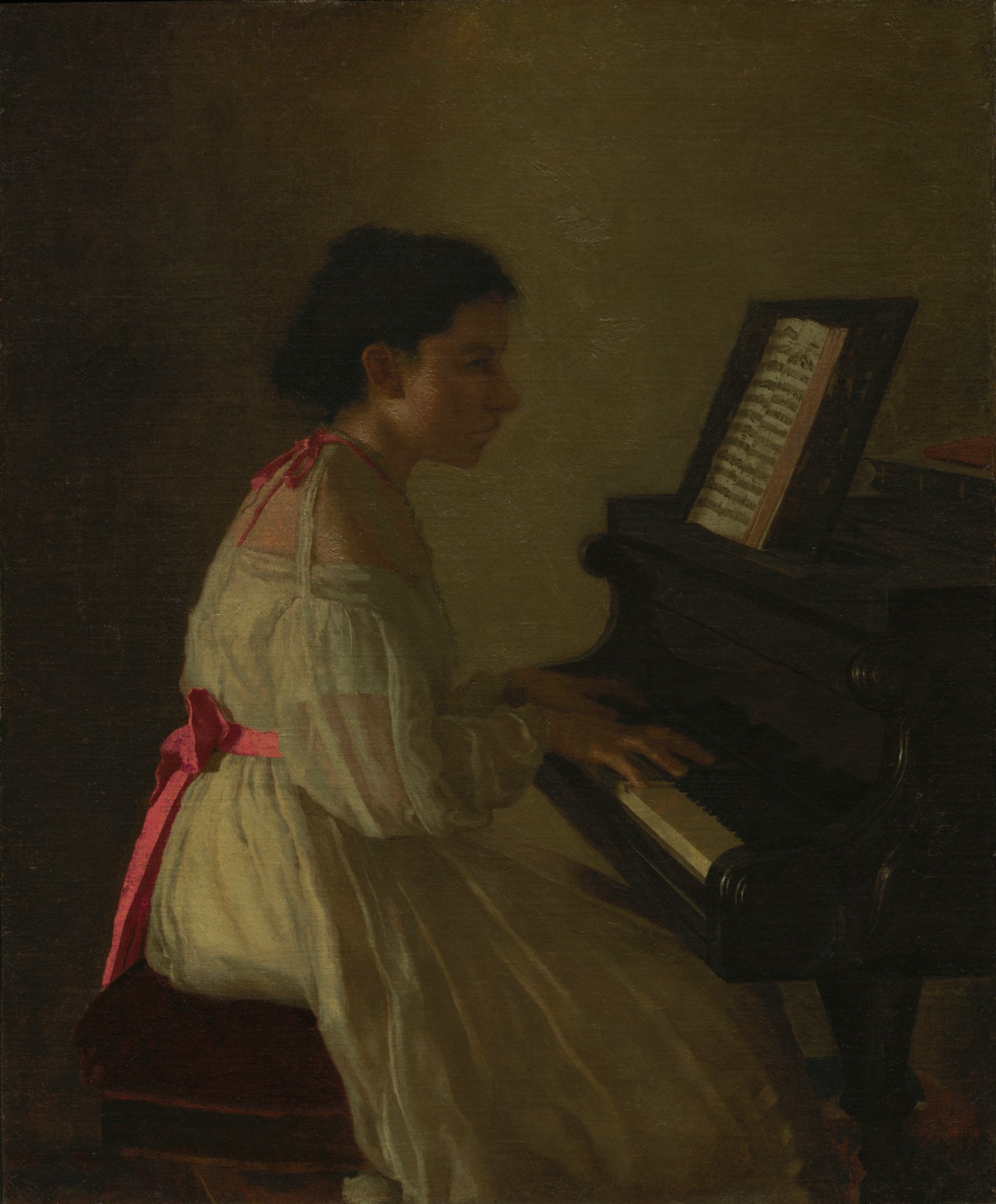
|
| Frances Eakins |
| ca.1870 |
Fifty years after Eakins had brought the horses down to the farm, Arthur Crowell well remembered that the field directly before his house, which had not yet been built, was the place where the modelling was done. Billy, the white mustang, was used as a model for Lincoln's horse in the Brooklyn Memorial Arch which Eakins and William Rudolph O'Donovan were working on together. The State of New York had commissioned O'Donovan to do the bas-relief panels, the equestrian portraits of Grant and of Lincoln, one for each side of the Arch. O'Donovan, aware of the adverse criticism which had been heaped on the horses turned out up to that time by American sculptors, got Thomas Eakins to share the commission, Eakins to do the two horses. At the farm in Avondale a large framework was built on the ground and in it Billy the horse would stand, with Eakins up on a platform above him, a platform fifteen feet high with ladder and trap door. By opening the trap door Eakins could look directly down on the back of the horse. The horse himself was marked off in sections by red ochre, and Eakins made a model of one section at a time, later shipping the sections in boxes to Philadelphia and doing the assembling there to make the completed horse. Eakins used a boy to sit on the horse as rider, but the children substituted for him, posing from time to time, or having apple fights with the boy. It was appropriate for Lincoln to be riding a western mustang, but there was considerable difficulty in getting a horse that would be suitable for General Grant to be riding.
After the statues were finished, McClure's Magazine brought out in an article on "Grant and Lincoln in Bronze," by Cleveland Moffett, interesting reproductions of photographs of Eakins. It came out in October of 1895. Among the pictures in the article is one of Captain Craig, West Point cavalry instructor, who had had his students demonstrate for Eakins and O'Donovan the positions a soldier takes, the paces, reining a horse for a quick stop, while Eakins took photographs. The cadets were taught to ride as Grant also had been taught, sitting almost as cowboys do but with stirrup straps a bit shorter, the soles of the feet kept level. The visit to West Point was made to find a horse for the Grant statue; horse shows, Newport and Long Branch were visited. In the end Eakins found the right horse for the Grant within riding distance of Avondale, near Devon on the Main Line, and there he modeled the horse. It was a short-coupled charger with room on his back for just the saddle; a broad chested, muscular, compact horse built for speed and endurance. On the 26 x 26 model which Eakins made of that horse is this inscription: "Clinker, charger belonging to A. J. Cassatt, Esq., Chesterbrook Farm, Berwyn, Penna." A model of Billy was made 25 x 26. Pictures of both horses were in McClure' s Magazine.
In the article also were pictures of Eakins while he was working. It explained for the bas-relief of the horse the frame was in ten pieces; a piece for each leg, a frame for the hind quarters, one for the head, one for the shoulders, and three for the body. The photographs show Eakins modeling on a frame set up on a box while Billy, the white mustang, posed. Clinker was black. Eakins knew the area to be modeled on each frame because he had first squared off a quarter size model as guide, which model had been preceded by one in wax a sixteenth the size of the finished statue. The magazine article gave an account of Eakins' "hour after hour, day after day" riding his Indian pony around the field to study Billy or Clinker in motion. There was a photograph entitled "A Consultation" picturing Murray, Eakins and O'Donovan having a glass of something at a drop leaf table in Eakins' studio on Chestnut Street, showing Harry the setter lying in the foreground. The most amusing picture is of the bronze casting; Lincoln, mounted on Billy, is not yet entirely assembled. His leg and arm and hat are propped up on the floor.
The horses when finished in plaster were sent to O'Donovan's studio on East l7th Street, New York, to be mounted with their riders. O'Donovan modeled Grant as he was before the end of the war, riding in leisurely fashion as if at the head of a column. Lincoln has reined in his horse and sits as if to review the troops. O'Donovan modeled him as he was at the close of the war; he holds in his right hand a tall hat, narrow brimmed, with a mourning band. Modeled in high relief, each on his own rectangular plaque, the horses by Eakins with their riders Grant and Lincoln stand on the inner walls of the Brooklyn Memorial Arch on Grand Army Plaza across from the Brooklyn Library, across from the entrance to Prospect Park.
| 'Lincoln and Grant', bronze sculptures by William Rudolf O'Donovan (men) & Thomas Eakins (horses), 1893-1894, Grand Army Plaza, Brooklyn, New York City |
| ca.1893 |
Eakins took dozens and dozens of photographs of the horses while they were walking and running and showing various paces. They always looked very different from the way you'd expect them to look, for example the two forepaws might both be up in the air and the horse on one hind leg. Eakins could not help thinking of the Frieze of the Parthenon on which the festal procession makes room for many horsemen with their steeds and an escort of cavalry which always took part in that procession held to honor the guardian deity of the Athenian Acropolis. When Eakins talked a few years later on the muscles of the horse to the Academy of Natural Sciences in Philadelphia,he led up by his analysis of the anatomy of the horse to his resounding declaration of his own artistic credo. And by his exacting standard of judgment he found he could pay tribute to only a few contemporaries but to "many an old Greek sculptor." He dreamed while he was studying the horses Billy and Clinker of making a painting of Phidias doing the Parthenon Frieze, and Eakins made sketches on a cardboard panel of the sculptor Phidias pointing out for the benefit of two nude youths beside him two others on horses that were rearing wildly, off in the middle distance. On the reverse side of the panel Eakins sketched two other youths nude on prancing steeds in attitudes so nearly identical with some on the Frieze of the Parthenon that Eakins must have been thinking of it. Fifty years later Murray, regarding this sketch by Eakins, said, "If Eakins had had a little encouragement there would have been some great things done," for Eakins was marvellously fitted to paint Phidias doing the Frieze but the undertaking would have been a very expensive one.
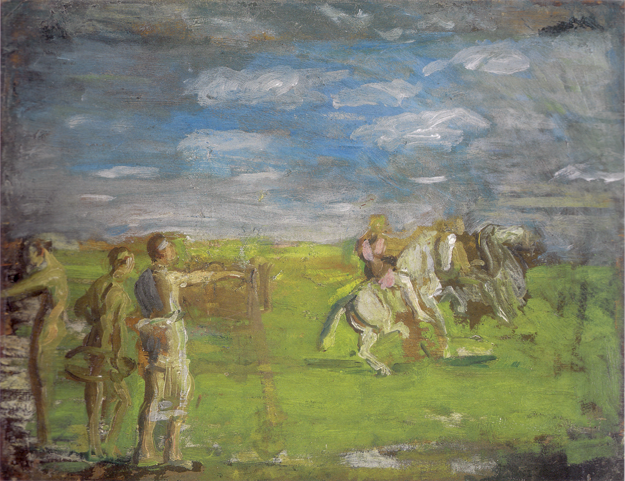
|
| Phidias Studying for the Frieze of the Parthenon |
| ca.1890 |
Eakins did carry through on the farm a project in mechanics, with the help of his father, Benjamin Eakins; he built the children a rotary horse power on the barn floor. He was working on it week-ends, and during the March blizzard of 1888 he was snowed in for a week, unable to leave the farm. The horse power was a six foot wheel with wooden pins for cogs geared to a shaft that turned the power wheel, and it took six months to build it as Arthur Crowell well remembered.
Whitman has written in his "Preface to the Leaves of Grass": "Of all mankind the great poet is the equable man... If the time becomes slothful and heavy he knows how to arouse it." 3
From the autumn that Eakins painted Whitman dates a burst of creative activity. The portrait of Whitman himself was finished the following spring, '88. Paintings done from the sketches of cowboys in the Bad Lands were made while his students posed for them or while Schenck the curator, dressed in cowboy outfit, played a guitar or a mandolin. Eakins did many portraits of his students at the School: Douglas Hall (who died in his twenties), Lillian Hammitt (Girl in a Big Hat), Samuel Murray, Francis Ziegler (who later did artistic book bindings), James Wright (whose portrait was one of the most colorful Eakins ever did; Wright wears a corduroy coat with enormous pockets, a coat of the kind he and Schenck had made especially to order); Amelia Van Buren (who had been Eakins' pupil at the Academy of the Fine Arts), William Maclean (sketched on the back of a portrait of James MacAlister). Samuel Murray remembered that the Art Students' League School was in existence about six years from its founding in 1886. During that time Eakins painted in addition to his students some of his greatest canvases: "The Agnew Clinic" in 1889, Dr. Horatio C. Wood the same year, Fetter in 1890, "The Red Shawl" (posed by a professional model) also in 1890, Talcott Williams in 1890 and his wife ("The Black Fan") in 1891, Professor Henry A. Rowland the physicist (holding a diffraction grating, the frame of the portrait being decorated with lines of the spectrum and with Professor Rowland's own coefficients and mathematical formulae concerning light and electricity), in the next year 1892 "The Concert Singer" posed by Weda Cook, Mrs. Stanley Addicks. Several years later Eakins also painted a head and bust portrait of Stanley Addicks, another of Weda Cook, and one of Maud Cook sometimes called "The Girl in Pink." Murray knew Weda Cook well, and he had vivid memories of the painting of all these canvases and of those that came thereafter, for Samuel Murray became increasingly the friend of Thomas Eakins.
|
|
| |||||||||
|
|
| |||||||||
|
|
| |||||||||
|
|
|
It was the large and lively Crowell family and their farm at Avondale that had helped bring Eakins healing after his break with the Academy. As the Crowell children grew older, they were much at the Eakins house on Mt. Vernon Street in Philadelphia. Ella Crowell and Maggie Crowell studied for a time under their Uncle Tom at the Art Students' League. Together with other students including Samuel Murray and with Eakins himself they went often to Frankford on the Delaware to the Shoemaker Manufacturing place where they dissected horses. It was a place where glue and oils were made from various parts of the horse, no one part of which was wasted, Murray remembered, impressed. "Horse heaven" they called the place. Eakins and Murray went there not only to work on anatomy but also to work with the glue, making glue molds for their statues.
Murray remembered Maggie Crowell as feminine, rather delicate, an excellent painter. He remembered Ella as more of a tom-boy, mannish, restless, who deserted art to take up nursing. It was Ella Crowell, the first born of Eakins' sister Frances, whom Eakins had painted under the title of "Baby at Play" back in 1876. In the painting the child is about two and is playing with toys on the brick walk in the back garden at 1729 Mt. Vernon Street. Sam Murray's sister, Gertrude, knew Ella very well and saw much of her while Ella was at the Presbyterian Hospital in training to be a nurse. In the agonized questioning on the part of the Crowell family into the causes of Ella's illness and of her early death, the Crowells came to experience so severe a bitterness that they saw no more of Eakins, and Eakins never went again to the farm in Avondale. Thomas Eakins turned to his friend and pupil, Samuel Murray.
|
|
|
Eakins painted Gertrude Murray in 1895. It was in 1896, ten years after his break with the Academy of the Fine Arts that he painted Harrison Morris, its managing director. Just as the leaving the Academy had been followed by a period in which Eakins had painted very little, doing not much more in a whole year and a half than the portraits of Barker, the physicist, and of Marks, the engineer, so in 1896, the year of Ella's illness, Eakins painted in addition to Morris only four other portraits: Mrs. James Mapes Dodge, at whose home on Sunday evenings Eakins had been meeting interesting friends of her husband's, some of them engineers; "The 'Cello Player", a portrait of Hennig, member of Thomas Orchestra and of the Mendelssohn Quintette; the mathematician, William Woolsey Johnson, professor at the U. S. Naval Academy, Annapolis; and Dr. Charles Lester Leonard, pioneer in X-ray. In 1897, the year of Ella's death, Murray took Jane Kershaw to Eakins' to pose for a portrait which Eakins never finished. The eyes in particular are merely sketched in, anatomical fashion. Ten years later Eakins left in an equally staring state the eyes of General E. Burd Grubb in another unfinished portrait. A second of Jane was also left unfinished. In 1903 Eakins painted her niece, Ruth Harding, then a little girl, and the same year he painted Mrs. Kershaw. In the latter, Eakins so emphasized the facial muscles that Jane felt this portrait of her mother showed her harder and more stern than she really was.
|
|
|
|
|
|
|
Murray had gotten in 1891, largely thru Eakins' recommendation, an appointment as instructor in sculpture at the Philadelphia School of Design for Women on Broad Street. Will Sartain's sister, Emily Sartain, whom Eakins painted, was for many years principal of this school. It was at the School of Design that Murray had met Jane Kershaw, secretary for the school, whose given name was really Jeanie Dean because her mother had always admired Scott's heroine of that given name in the "Heart of the Midlothian". Nearly twenty years after Eakins had painted Jane Kershaw's portrait, shortly before the painter's death, Jeanie Dean Kershaw became Mrs. Samuel Murray. Murray taught at the School of Design for over fifty years and then was succeeded after his death by Beatrice Fenton, whom he himself had taught.
Murray came to be rich in memories of the portraits painted by Eakins during the 1890's and the first of the 1900's; rich in memories of the Art Students' League where Murray had come to know Eakins.
CHAPTER IV
SAMUEL MURRAY REMEMBERED
The League School was very much like an art school in France. The students together rented the space, made the arrangements, in fact ran the school, and Eakins lectured there by invitation. He gave an enormous amount of time to this Art Students' League in spite of the fact that he gained nothing financially by it. There was no endowment of the school by honorary members; both students and teacher felt that while in truth financial backing would be very welcome; nevertheless, outsiders would be too likely to crowd in and want to manage. Samuel Murray, who remembered much about the League School, went there first in the year of 1887-88 when the school was already rather well established and had moved to 1338 Chestnut Street. By 1892 when the school went out of existence he had come to share the studio of Thomas Eakins himself.
Samuel Murray remembered that no weather kept Eakins away from the Art Students' League School, that Eakins took endless time to be thorough, and that although there was no cutting-up during the actual classes, afterwards there was much. Eakins was generous with his money as well as with his time, frequently paying students, including Murray, to pose. At one time the League had over forty members, twenty-one in the night class and twenty in the day. And the students themselves admired Eakins. They recognized his insistence on nothing less than the best as a passion for excellence, in itself a thing to admire.
"Nothing 'pretty good' would do," Murray used to declare when he thought of the statuette he himself had done of his own father when his father was eighty-seven. Every bit of the statue was his father in very truth, so that Murray had come to love it for that and for its reminder of Eakins.
Murray remembered that Eakins used a very small palette, mostly all earth colors. One white would be to the right, down rather near the thumb; the other all the way over to the left. The center would be saved for the tones that made the flesh, and across the top of the palette reading from right to left would be the following colors: cadmium yellow and orange, vermilion, light red, burnt Sienna, permanent blue, Van Dyke brown, and black. Eakins used to say that leaving out the black was like making music and leaving out the bass notes. In this he agreed with Gérôme who, high-strung and nervous, was more high-strung and nervous than ever when the contemporary vogue for omitting black was mentioned. Murray remembered that once Dr. Wood's son Jim, when studying with Gérôme, said he didn't like the color. Gérôme in excited disgust proceeded to kick the easel and in general to knock things all about the studio. Thomas Eakins used not more than ten colors in all. Eakins didn't use bitumen, which is fatal to pictures meant to last; and he never used lakes or other fancy colors that run and are not permanent – those synthetic, made from anilines. With the flesh tones Eakins was particularly careful. He mixed them with the palette knife and kept them very much guarded on the palette. His thoroughness extended even into the field of mathematics. He worked out problems of painting by trigonometry and algebra, and worked mathematical problems for fun with some of the greatest mathematicians, for example with Dr. Johnson of Annapolis and with the English Professor Glasier, astronomer physicist. Even in languages Thomas Eakins was an expert, speaking and writing them well and not as a "near linguist." Murray would tell Eakins a story and Eakins would read an earlier version of that joke from the Greek.
When Murray went to the League School at 1338 Chestnut Street, E. O. Thompson & Co. on the ground floor owned the place. The students had not much money and things in general were meager, which led to some very amusing episodes indeed. The school was up on the fourth floor. Eakins gave the students his discarded copper lined bath tub, and it was put in the front room where Schenck, the curator who had succeeded Reynolds, decided to take a bath. He plugged up the tub as well as he could, but the water leaked down on to some bags of flour on the floor below, and the irate proprietor berated the naked Schenck.
A more deliberate difficulty was made by the question of ashes that accumulated amazingly from the stove in the studio. It was forbidden to put the ashes out on Chestnut Street, so Eakins, the students, and the curator Schenck shoveled them into the storeroom. But the room was small, its capacity slight, and soon they rose to the ceiling. A conference became necessary on what to do with the ashes. Exacting obedience, Schenck promised to get rid of them if the students would only faithfully follow out an unnamed plan of his. With Schenck in the lead they industriously carted ashes up to the roof and got rid of them, rather finally, by stuffing them down all the chimneys. The fact that they filled the chimneys somewhat solidly was left as a problem to be dealt with later on by others.
Murray remembered these other anecdotes of the Art students' League. Eakins once sent the boys to Dr. Mary Fisher for a portion of a cadaver; she had kept the head and limbs. Carrying it home in a bag, the boys, singing lustily, were passing the cathedral when they were stopped by a policeman. Suspicious, he insisted on looking into the bag, and being somewhat startled asked considerable explanation. The episode prompted Eakins to tell the boys of his student days in Gérôme's Paris studio, when some of his fellow students played a prank on a man who was driving a horsecart into the city. The cart contained a load of obvious manure. The students stopped the driver and had him go very slowly while they took off their hats and with bowed heads and hands on hearts solemnly escorted the cart into the town.
The twenty-second of February was always a time for much fun, the anniversary of the founding of the Art Students' League. Usually the students produced a part of an opera, and the occasion was considered one for ludicrous costumes and for a spread. There would be a delicious ham, soaked in honey a week or so, then wrapped in dough and baked. There would be lemonade and all the usual trimmings. The Dodges would come from Germantown and Kolb of the Bakery would come.
Thomas Eakins himself came dressed as Little Lord Fauntleroy, escorted by Susan Hannah with her hair done up in gray curls. Or he came as a Scotsman in kilts with a whitewash brush for pouch, and did an effective sword dance in the very best Scottish manner. The curator Schenck was fun at the anniversary parties. Murray remembered the time that Schenck, "with a little fuzz around his middle" but with long beard and hair, came down to the door to say goodnight after the party was over. The door blew shut and Schenck was unable to get it open. Dressed as he was he had to go for the night to the Eakinses. To make matters worse his ballet shoes were much too small and his feet had swollen so that his shoes at least he had to wear all night.
Schenck lived at the Art Students' League while acting as curator and added much to its history both as model and as writer. With considerable talent he would write an amusing history to be given anniversary night when, dressed as a ballet dancer, he would call himself Pythagoras and reel off the composition.
Franklin L. Schenck, the curator, and his father were painted by Eakins. And although the curator, Schenck, had never been a cowboy, Eakins used the cowboy suit he had brought home from the West to dress Schenck up to have him pose for portraits of a cowboy. Schenck had never even been anywhere near the West, but he posed over and over and sang lusty cowboy songs. He was an excellent musician and made many an evening merry, although there were frequently visitors and then he had to be calmed down. The students loved him and indeed so did Thomas Eakins.
|
|
| |||||||||
|
|
|
Eakins painted Franklin L. Schenck in many of his portraits, as "The Bohemian," as "F. L. Schenck," in "Head of a Cowboy," in "Home Ranch," as "Cowboy Singing," and as a second "Cowboy Singing." In several of these, Schenck plays a banjo or a guitar. In "Home Ranch," Murray, fork in fist, sits dreaming at a table. Murray remembered the fringes on the cowboy pants Schenck wore. The fringes, needed by cowboys to drain water off the legs, had been copied from the shepherd dogs that helped the cowboys herd.
Schenck was there for dinner at Murray's house the night that Murray, suffering with an infected finger, stopped at the hospital to show it to Dr. Leidy. It was Murray who made the statue of Leidy which stands in Philadelphia outside of the Academy of Natural Sciences, a statue that shows Leidy wearing a sack coat because Leidy himself wanted the statue made that way, and holding a tiger jaw because Leidy was the one who had discovered the saber tooth tiger. However, on this occasion of Murray's infected finger when Leidy got out a knife and suggested cutting the thing open, Murray refused to let him and went back to the studio. There he found Dr. Agnew who was very sympathetic. Murray remembered Agnew as a "beautiful old man," simple, childlike, grand. By way of treatment Dr. Agnew handed Murray a dime and sent him down to Fluke's at Juniper and Chestnut to buy some vinegar which Dr. Agnew heated to soak the finger. Murray was delighted with the success of the treatment.
Dr. Agnew posed in Eakins' Chestnut Street studio near the League School, posed many times for the "Agnew Clinic." Here Eakins had put up benches so the students could pose in tiers, which the students did with much quarreling about who was to be in the picture. One or another "wouldn't pay" if so and so had to be in it. Since the medical students (who paid for the painting) were to present it at graduation, Eakins had a limited amount of time in which to paint it. However, Murray remembered that Eakins was never hurried. To use the light he would get up at 4 A.M. and retire at nine. Murray remembered as born doctors and set apart these three: Agnew, Wood and Osier. He remembered the wonderful eyes of Osier of Johns Hopkins. Horatio Wood he remembered as very nervous indeed, so nervous that in lecturing he would take out his watch and lay it down and pick it up right away again and then put it back. Murray used to go to listen to Dr. Wood, a great man, childlike, simple, very funny, humorous. Murray's sculptured portraits of Dr. Horatio Wood are in the College of Physicians and the University of Pennsylvania. Murray remembered that Dr. White, who in the "Agnew Clinic" is swabbing the incision, wore very, very thick glasses, went in for pugilism, played chess in the street car, and was much loved by Dr. Agnew. Later when Murray went to make a cast of Dr. White, Murray brought a razor to shave the chest but there was no hair. It was with Dr. White that Sargent stayed when he visited Philadelphia. Murray always felt that if Eakins had remained in Europe, he too like John Singer Sargent would have been world-renowned; but Eakins loved Philadelphia.
|
|
When Sargent was here on his visits, he and Eakins together would explore the foreign quarter in South Philadelphia. They used to admire the beauty of the young Jewesses and Italians. Once Sargent hired a theatre to paint marionettes of a puppet show, a show which took for usual subjects fine old Italian stories, stories of Charlemagne. The Italian Guiseppe, who had the puppet show, was always being threatened by a mysterious black hand and finally Guiseppe disappeared permanently. Then there was Madam D'Arza, Italian actress in South Philadelphia, whom Eakins often went to see perform in a down-town theatre. The audience during the show would eat and drink and drop bottles around; the place would be lit by gas; and the orchestra would consist of clarinet, guitar, violin. Even when old and ill Eakins remembered this about them: the violinist in the orchestra would bang over the head an Italian lad who meanwhile would be lighting his cigarette on the footlights. One hot night when the Eakinses were down at the D'Arzas' for dinner, Eakins kept backing away from a roach that was on the table. In a dreadful moment D'Arza swept it into the lap of Susan Hannah. The night was made memorable, too, by a terrible cesspool nearby. Madam D'Arza used to come to the Eakins house for dinner; very often it would be an Italian spaghetti dinner. The D'Arzas were very poor and the Eakinses, kind to them. Madam D'Arza taught Mrs. Eakins a recipe for kidneys and another for spaghetti, both of which became favorites. Frequently guests of the Eakinses were served these two dishes and red wine. When Mrs. Eakins served these, she added sliced oranges for dessert.
MADAM D'ARZA'S RECIPE FOR KIDNEYS:
| 4 kidneys cut up | |
| 4 onions | |
| ¼ lb. butter | } Stir it. |
| marsalla or claret | |
| red pepper and salt |
MADAM D'ARZA'S RECIPE FOR SPAGHETTI:
| Spaghetti dressing |
| 4 cans tomatoes |
| 2 lbs. spaghetti |
| 2 heaping tsps. basil |
| 4 lb. butter |
| 1 heaping spoon garlic |
When cooked to a mush, cold water to thin,
from Mrs. Samuel Murray (Jane)
|
Samuel Murray remembered that this was the same Madam D'Arza who had a little boy who used to use a long stiletto, the same Madam D'Arza whose portrait by Thomas Eakins went to the Metropolitan Museum, New York City. Signora Gomez D'Arza looks entirely aristocratic with her long and slender nose and her finely tapered hand. Her black hair, pulled directly back from her oval face, shows one red earring in a shapely ear, a long dark-skinned face above the lace and the silk ruching. Her sleeves, very full and dark above the elbows, are very full and fine below them. Eakins has hinted nowhere her harsh life of penury, unless in the slightly brooding look and the slight frown of the forehead.
Eakins was seeing often his students at the School. The spring that the boys were refused reduced rent for the summer, they moved to 1816 Market Street, the south side between 18th and 19th. The move, though advantageous, was also rather hilarious. It took place at the end of May, and they industriously carried down the art student's paraphernalia, lining things up on the pavement – anatomical casts, parts of legs, studies of nudes in clay, oils and easels and all the rest to be loaded onto the wagon. In a short time Chestnut Street held an interested audience, numbering into the hundreds and badly blocking traffic to the disgust of the police. It was hours before they were finally moved, and the episode was a gay one. Bregler remembered the League School had the second floor of the building at 18th and Market Streets where there was a lumber yard, and a fire destroyed all the boys' possessions. They made one more move, this time to the Dental College at 12th and Filbert Streets where they could use the dissection room. The School stayed until it finally broke up in this its fourth home about the time that Eakins was painting Madam D'Arza. Ziegler remembered that the Art Students' League was not incorporated. The lease was in his name and Boulton's. Ziegler went to the landlord and said he was going into the newspaper business, which he subsequently did, writing on art in the "Times". Boulton went to Mexico, and the boys drifted off leaving Ziegler holding the bag for the rent.
Ziegler was treasurer of the Art Students' League and Ted Boulton was the president. Ziegler remembered that the portrait of Boulton (Edward W.) by Eakins was lent to the University Club for an exhibit, and a waiter ran amuck and slashed it up. Eakins patched up the picture and Boulton took it home, where the house caught on fire and the portrait burned up. That was the end of that. Ziegler remembered that Eakins was undoubtedly very lovely to his students, but was rather eccentric. He wore corduroy breeches with a flannel shirt and a pea jacket. He wouldn't go to a barber, but always had his wife Sue cut his hair with a pair of clippers. Ziegler remembered that Sue did a very funny imitation of a man with two fans and a pitcher of ice water. Once Ziegler took a friend from the Beaux Arts in Paris to see the Art Students' League, and the guest said it was pretty good but it would knock out all except the strongest. The models usually posed two weeks, and the students had to hustle, since Eakins believed in modeling the figure in paint. John Wright brought Weda Cook to the Art Students' League to sing at birthday parties, and Eakins decided he wanted to paint her. He brought her over and "dumped her in the life class" where, since she was only eighteen, she was very much embarrassed. She would never pose unless Ziegler was with her, and Ziegler claimed he was in love with her all his life.
Thomas Eakins had many friends who were artists. Bontet De Monville, Sargent, Simon, Dègas – all of them used to visit the Eakins house for dinner. The Carnegie Institute (Eakins had often served on its jury) brought over these artists from Europe at its own expense. Murray never thought the technique of Eakins like that of Ryder. Murray compared it instead with that of Dègas, Dègas modeled his ballet dancers before he put them on canvas; Eakins made in wax, which he painted red, models of Fairman Roger's horses and then studied the wax models while he was painting the canvas. Chase, the American painter who had studied in Dusseldorf, ran over from the Academy of the Fine Arts to pose in the Eakins studio for a portrait which Eakins finished, Murray remembered, in three or four days; but this was later, about 1899. Eakins also did several years later a portrait of the Japanese artist Genjiro Yeto, who had studied three dimensional painting in France and who according to Murray showed Eakins how to cook rice.
|
|
The "Agnew Clinic" painted by Eakins in 1889 made him so famous in Philadelphia that the 1890 class of the Girls' Normal School in that city commissioned their principal's portrait, that of Professor George Fetter. Eakins pictured Fetter as benevolent, kindly, serious, with the grey hair and mustache of a man about sixty years of age. Murray remembered when Fetter came to the studio to pose, the girls from the school who came with him all seemed to idolize the man. In fact, a former Normal School student adored him to such an extent that four years after the portrait was painted she became his second wife. He had just retired as principal, and it had been seven years since she had graduated from the Normal School. For the rest of her life she remembered the fifteen happy years with George Fetter, her European wedding trip and their other three trips abroad. A few years after his death she became Mrs. Thomas Shallcross.
Murray remembered that when Fetter came to the studio to pose he always brought oyster crackers for the benefit of Harry, who was not allowed to eat them until an "H" had been made on the floor, and then the "H" of oyster crackers disappeared with alacrity. Eakins drew Harry, the "H" and the box of oyster crackers for the invitation cards for the 1890 Girls' Normal School commencement. For the exercises when the portrait was presented, the programs were diamond shaped, one blunted corner of the diamond being the fold of the program. The order of the exercises was printed on the inside. On the front was an outline drawing of the Fetter portrait itself; on the back, an outline drawing of Harry, the "H", and the crackers. Harry would toss these all the way to the ceiling and catch them. Eakins said he often bought a bag of crackers for Harry and had to eat them himself because they were stale. Once the girls brought stale crackers with just one that was fresh, identified by a pencil mark. Harry picked out the fresh cracker and ate it.
In the portrait, Professor Fetter sits at his roll-top desk, his left hand across a Bible of the kind used in the city schools. It is bound in black cloth and the edges are a brilliant red, repeating the bright reds in the oriental rug. The Bible suggests he presided at the school assemblies, a thing the girls remembered he did in a very fatherly fashion. The favorite legend about him relates that after assembly was over, he would go the rounds of the classrooms and take the roll-call himself. Each girl, as her name was called, was expected to answer, "Present. Did not speak," since she was not supposed to have talked in assembly. Occasionally a girl would cause dismay in the classroom by answering when Professor Fetter called her name, "Present. Spoke." In the portrait he sits in a swivel chair made of excellent, light colored wood, well carved – one of a set of several carefully cherished by the school, the Philadelphia High School for Girls, once the Normal School. It's a proud old school, with traditions and history and famous graduates, for girls the first in the city. Since the location was Spring Garden Street, at the corner of Seventeenth, Eakins could see the old building from his own home and studio on Mt. Vernon near Eighteenth, a few blocks northwest of the school. When the Colonial red brick building took the place of the old stone one, the large portrait of Fetter was hung in the new main office.
Murray remembered that Harry lived to be very old; the pads of his feet got sore. He slept by Eakins' bed and was much petted and cared for. He used to catch small birds and bring them into the house. Then they'd grow up and plague him while he lay there and trembled. He used to be all upset by mice that lived in a blown-out egg around which Eakins and Murray had put fortifying plaster. Eagan remembered that if a mouse ran behind a canvas, Harry would catch some one by the wrist and take him over to move the canvas; then Harry would go for the mouse. Harry had spoiled several canvases and then Eakins had taught him better. Murray was always amazed at the things that dogs would do. He remembered he'd given Eakins a shepherd dog that was sent to the shore, and the dog had found its way back on foot to the house in Philadelphia. Another time Eakins had shipped two setters in boxes by train down to Bridgeton in southern New Jersey; how they managed it no one knew, but the setters also found their way up home to Philadelphia.
The most famous of Thomas Eakins' pets was the dark red setter, Harry. The setter was not pure Irish, for he had some markings of white. Murray remembered that Harry would lie down in the watering troughs that in those days stood full of water in front of all the saloons. Harry went everywhere with Eakins and was loved by the whole household. Eakins painted Harry at the feet of Susan Hannah in the portrait of her that was later hung in the Metropolitan Museum, "A Lady with a Setter Dog". The painting was hung in the Metropolitan Museum of Art with the earlier portrait of Benjamin Eakins called "The Writing Master", and the face of Susan Hannah looks very golden indeed compared with the ruddy complexion of Thomas Eakins' father. Eakins' pupil Tommy Eagan remembered that when the hands in the painting had already been finished, Benjamin Eakins went fishing and consequently got sunburned, so that the face and hands in the portrait don't at all match.
Eakins was also seeing often his fellow members of the University of Penn Club: Professor Marks, engineer; Clarke, who taught harmony; Hennig, cellist; Stohl, violinist; Jarvis, pianist; Koenig, chemist; Thomas A. Edison, who was around the studio much. They met at each other's homes on many Sunday evenings and they went to Bar Harbor together summers up on the Maine coast. Murray was always exasperated in his thought that they undervalued the great genius of Eakins, the genius of the painter. All of them painted as amateurs, and Hennig in particular would say to a pupil who was doing badly in music, "I think you'd better study painting," as though that art required less of insight, of finesse, and of steadiness. Dr. Gross, too, came often to the studio for he had known Murray's father when the latter had been Foreman of the Woodlands Cemetery that adjoined the university; or else he came just because it pleased him to.
Murray remembered that Frank Hamilton Cushing came to his studio to have some pottery mended and to have casts made of some of the pieces. He was brought first by Stewart Culin, curator of the University Museum, for which Cushing was assembling an exhibit. Culin was friend of both Eakins and Murray. The three of them often went to the university faculty dinners at 36th and Locust Streets. Cushing wrote a pamphlet, "The Germ of Shore-Land Pottery", in which he commented that the Zuni used rotating base moulds so that the pottery product was convex-bottomed, and that the tempering material was sifted sand or ground stone for strength. In his painting of Cushing, Eakins had included a piece of turreted Zuni pottery on the slab above the fire. Murray remembered that a fire was built on bricks on the floor of the studio (the Cushing was painted on Chestnut Street) so Eakins could get the proper effect when the fire smoked. Cushing wears a buckskin suit with many necklaces of turquoise and turquoise in his large ear ring. Gertrude Murray remembered posing in Cushing's blouse so Eakins could paint the dark hair about the shoulders when Cushing himself couldn't be there. His legs below the knees are encased in decorated buckskin, and Murray remembered that Cushing, using a box of sand to get Eakins' leg-shape, made him buckskin moccasins out of soaked chamois skin.
|
|
Eakins also did a portrait of Mrs. Cushing (Emily Magill), one of the most charming of all his portraits. She's rather wistful, and below the short puffed sleeves her arms, high lighted and resting lightly in her lap, carry out the pattern of the neck and the square neck lines of the dark dress. The hair and the head are in shadow, but the head is bent slightly forward and the face is lighted. She seems small and fragile. Murray remembered her as "a peach" but also as cantankerous. She hadn't been able to stand the dirt and curiosity of the Indians when Cushing took her down to New Mexico to live; she was a "baby doll". This happened. Cushing hated his own stiff hat because he had headaches and he admired Murray's panama so much that Murray took him to the hatter's and had a big one made for Cushing. His wife was horrified; she liked him to dress in style. "When he came in with that, she just kinda danced a tattoo." Cushing said Murray wore one. She said, "Murray's a slouch." Murray said she didn't need to tell him; he knew that.
Murray liked Cushing very much and thought him a very beautiful character, gentle and reasonable with a beautiful voice. Bregler heard Cushing in Eakins' studio giving the Indian war cry in English, and it was like beautiful music. Bregler came to own the small sketch Eakins had made to be enlarged for the finished painting of Cushing, and Cushing himself had made the frame for the sketch, a frame which consisted of pieces of wood tied at the corners with leather thongs. There was a macaw carved on the frame because that was the bird of the Zuni Indians. Murray remembered that Cushing when he was sent out by the government to these Zuni took a phonograph with him. Cushing said the government used to send down cans of food, and the Indians would empty the cans to use them for decoration. Cushing himself had a terrible time with his stomach. He got to be full of tape worms that kept him awfully thin. That came from eating jerked beef, and he used to eat pumpkin seeds to get rid of the tape worms. Cushing also caught small pox which left his face much marked, as Eakins recorded in the painting.
In addition to pamphlets on the findings of his various expeditions, Cushing when he returned from New Mexico translated stories told him by the Zuni. His "Zuni folk tales, with a foreword by J.W. Powell and an introduction by Mary Austin" is a book that is altogether delightful, made up of native legends told with a charm and a poetry strongly reminiscent of Lafcadio Hearn. A Zuni tale will have its refrain of words, or its ending, "Thus shortens my story", "Thus long is my story". Cushing also wrote an account of his years with the Zuni Indians and of what he had found there. It appeared in three installments during 1883 in the "Century Magazine".
"My Adventures in Zuni" by Frank Hamilton Cushing, gotten out in 1941 in a very artistic deckle edged edition, beautifully illustrated by Fanita Lanier, contains reprints of these articles which appeared in the "Century Magazine" under that title. Cushing had been sent by the government with a party under the new Bureau of Ethnology in the summer of 1879 to Fort Wingate, New Mexico, and he remained with the Zuni five years except for one brief trip back to the East. The picturesque account of his adventures during these years put particular stress on his having been made a Priest of the Bow, since this admitted him to the rituals of the most secret of Zuni orders. The trappings of these rituals appear in the painting by Eakins. Cushing holds bunches of prayer feathers in his left hand. On the round shield hanging against the rear wall is painted the Zuni War God beneath whose feet is the jagged lightning. The Zuni War God was thought of as single in spirit but dual in form, as child or children of the Sun, given the cloud for shield, the rainbow for bow, and the lightning for arrow. Against the shield are the feathered spear and head dress of Cushing, who had also been awarded the permanent Head War Chieftaincy. In "My Adventures in Zuni" there are elaborate descriptions of ceremonial dances and trips to Thunder Mountain, rituals in which Cushing took part. Altogether, Cushing must have been one of the most colorful of those who visited the studios of Eakins and of Murray.
For a stretch of fifteen years that began when Murray was youngish and Eakins near fifty, the two used to bicycle out on Sundays to the St. Charles Boromeo Seminary. They were always cordially received and invited to stay for Sunday dinner. At first Murray used to dress with dignified formality for these weekly visits to St. Charles Boromeo, but Eakins, as one would expect, did not; he wore corduroy bicycle pants. Once the Archbishop said he admired Eakins' very informal costume, saying a costume was beautiful if it showed the human figure. After that pointed remark Murray too went on his bike. When Eakins was thirty-three, he had painted this Archbishop Wood in violet robes and lace apron against a dark brown background. First Archbishop of Philadelphia, he laid the foundations of the St. Charles Boromeo Seminary on the edge of Philadelphia, later a college of long white buildings set in spacious acreage on the other side Lancaster Avenue from the Overbrook Golf Club. In the older gray stone building with the wooden porch Murray and Eakins had their Sunday dinners. Samuel Murray's oldest sister was a nun, and Murray himself was Catholic. It was thru Murray that Eakins met the Roman Catholic prelates, many of whom he painted, often in crimson robes. Eakins enjoyed these prelates, for most of them were scholars. They were of divers nationalities in addition to the Irish – French, Italian, etc., and one, Murray remembered, Chinese. Eakins, an expert linguist, was able to talk to all of them; with the Chinese priest, to Murray's surprise, he conversed in Latin.
|
|
| |||||||||
|
|
| |||||||||
|
|
| |||||||||
|
|
|
In the evening, from the St. Charles Seminary in Overbrook, Murray and Eakins would bicycle to Germantown to the Dodges'. There the usual Sunday evening hospitality was extended to scientific men whom James Mapes Dodge found congenial. Mrs. James Dodge would sing and Mr. James Dodge told stories wonderfully well, but Mrs. Dodge considered Eakins not much of a talker. A Negro butler came regularly every Sunday night, and sometimes fifteen or eighteen people would be there for dinner. Mrs. Eakins was never at the house, but Tom came often. Mary Mapes Dodge (mother of James Mapes Dodge) was a person whom Murray enjoyed, and he loved her poem called "The Two Mysteries", one mystery being life and the other being death and the poem asking the question how we can expect to fathom death when we can do so little to explain the nature of life. Mary Mapes Dodge was editor for over thirty years of "St. Nicholas", a children's magazine and she wrote a book beloved by them, "Hans Brinker or the Silver Skates". She was an old lady when Thomas Eakins and Samuel Murray knew her. It was at the Dodges' that Murray met Mark Twain. Eakins never painted James Mapes Dodge, her son, for a while one of the directors of the Academy of the Fine Arts, a man whom Murray remembered as always full of fun. However, Eakins did a portrait of Mrs. James Mapes Dodge. She is wearing the evening dress which she wore in Washington, D. C., at the Cleveland Inaugural Ball, a light, rather olive green, velvet dress with a low V neck and with large puffed sleeves. Years later Mrs. Dodge remembered the painting of the portrait. It is only head and bust, yet she sat for what seemed forty hours by the long window in the parlor. Although the private crescent drive was between that and the street, the latter was too near the window for Mrs. Dodge to ignore it. She was aware the parlor shades and curtains were purposely missing so that the greatest amount of light could be had for Eakins to paint by, and she remembered rather vividly his thumping her chest in an effort to get the exact location of bones he knew must be there. Eakins painted Mrs. James Mapes Dodge as a forthright person, a youngish woman for whom the world was not at all too difficult. The portrait was done shortly after the birth of her daughter, Josephine. Samuel Murray used the features of another daughter, Fay Dodge, for his Gettysburg monument, and it was about Fay that Eakins said if Sargent had seen her he would have been crazy to paint her.
It was the son of Mrs. James Mapes Dodge, Kern Dodge, that Eakins painted under the title, "The Young Man", a portrait never quite finished because Kern Dodge got too busy to pose. It is a very thoughtful young man, who looks to be full of plans and who later became Director of Public Safety in Philadelphia. Eakins did two portraits in oils of his wife, Mrs. Kern Dodge, who was an active member of the Colonial Dames of America. Kern Dodge and his father did much photography together; a developer at their link belt place used to finish the films for them. Murray modeled portraits of most of the Dodge family, among them a portrait in bronze of young Dorothy Dodge, daughter of Kern, granddaughter of James Mapes Dodge, great granddaughter of the "St. Nicholas" Mary Mapes Dodge.
|
|
|
Mrs. James Mapes Dodge remembered many things about the visits of Thomas Eakins to her home in Germantown. One night he arrived wearing gray knee breeches and a very, very small sailor hat stuck on the top of his head. He carried a paper bag in which he had three box turtles that he wanted to show her husband, who, alas, was not at home. That same night, after Eakins had gone, Will Sartain arrived carrying a painted bird-cage, in it one small kitten. To Mrs. Dodge it seemed the kind of evening you don't forget. Will Sartain could put a pocket knife across the bridge of his nose and the pocket knife would stay there. Murray remembered the Dodges' as a place for fun, fun for the neighborhood children as well as for adults. The large, comfortable, Victorian house was of gray stone. It was on land that ran along McKean Avenue toward the Manheim Cricket Club, a very active club about a block away. At the end of the 60's the club had bought ground and put up a temporary building, followed by two that were frame but more lasting and at last by a Georgian in brick. The first international cricket match to be held in America was played with a team from England on the field in front of this building, then new, about the time that Eakins was going to the Dodges', 1891. Murray lived to see the time when the imposing fields and buildings of the Manheim Cricket Club were surrounded by a high brick wall which shut off the rows of two story houses which sprang up in the neighborhood. But Murray and Eakins went to the Dodges' when they were surrounded by open country. There was a hollow back of the house which Mr. Dodge used to have flooded and frozen for skating for his children and for their many friends. All his children had ponies and later they all had automobiles. Murray remembered Eakins once in white sailor cap, sweater and pants, sitting cross-legged under the trees in the half-circle in front of the house. Jamie Dodge saw him and called toward the house, "Josie, Josie, come here, see Tom. Doesn't he look just like a great big baby?"
Murray took Thomas Eakins to see a great many plays, for although Eakins said he had gone to the theatre some while ago in Europe, he had become a bit of a recluse for a few short years, and Susan Hannah was glad that Murray got him out more. "Beau Brummel" was one of the first plays they saw, and Eakins decided at once he must paint the leading lady, Suzanne Santje her stage name. She wears a long crimson robe and leans back in her high-backed chair in a rather theatrical manner. On the floor at her feet is a copy of the book "Camille". She played opposite Mansfield, but the portrait on the background wall of the painting is of David Jordan. Eakins did portraits of both him and his sister, Mrs. Letitia Wilson Jordan Bacon. Murray thought Mansfield made a better Beau Brummel than Hamlet, a not very good Julius Caesar. As a young man Eakins had seen Sarah Bernhard and Rachel he said, and while he and Suzanne Santje talked he had to work very fast painting, for her time was very much taken up with repeated rehearsals. She had required pursuing and pleading before she had posed at all. Murray remembered that when Madam Bernhard used to come to Philadelphia she and Eakins were great friends. This going to plays had been started by Murray's taking Eakins to see the variety show on Walnut at Eighth in a building that later burned down. They took their wives and Gertrude Murray and made a party of it and remembered a man who took off the saints with different musical instruments. Murray progressed from plays to prize fights and soon Eakins was painting wrestlers.
|
|
|
Admiral Melville went with them to a number of the prize fights. He came to the studio often with the father of Mr. Foltz who commissioned a portrait of his wife in bronze by Murray for the Lancaster General Hospital, an event which they later recalled at the Lancaster Exhibit. Murray's statue of Admiral Melville was made for the right side of the entrance to the League Island Navy Yard in Philadelphia. In two large portraits by Thomas Eakins, Melville, distinguished, impressive, is painted wearing his very impressive medals.
|
|
The medals of George Wallace Melville were arduously won, and the detailed story of their winning makes fascinating reading. "In the Lena Delta" is the tale by Melville himself. Courage and heroism, because the most necessary, are also the commonest virtues found among mankind; but in Melville were heightened to quite uncommon stature. Eakins admired him immensely and must have enjoyed his talk. "In the Lena Delta" concerns the Arctic Circle and the frozen north of Siberia; the fatal attempts of the ship Jeanette to get to the North Pole before being entirely crushed by ice; the later, successful expedition to the relief of Greely. Three groups of men left the ship Jeanette; Melville's alone got home. For his explorations, observations, and the handling of his men, the United States government was pleased to award Melville a gold medal and to advance him fifteen numbers in his progress as naval officer. All the way thru the book, "In the Lena Delta," there runs the sinister refrain of frozen and blistered legs unable to stand or go. Melville records stark statements of cracked and bleeding flesh. He notes that when new skin was formed, it too acquired large blisters, adding a terse and simple comment, just, "I emptied them." Thru hunger and lack of provisions and storms and impassable ice, Melville and his men consistently pushed forward. The thing that Melville really couldn't understand was that when one of the men had a big toe slough off with gangrene, the man became dispirited and didn't care to go on. Extremely authoritative, Melville had confidence that his government would pay for whatever outfitted sleds he ordered. Much of the time the party traveled from sunset until dawn for the double purpose of drying their clothes by the heat of the sun by day and of avoiding blindness caused by the glare of the sun on the snow. Melville records it all as done with roars of laughter and good humored banter no matter how worn the men. He was quite capable of firing rather low over the heads of natives who were not minded to take the risks he ordered; or of emptying a demijohn of alcohol into the fire to prevent the men from drinking a thing intoxicating; or of using the force of his fists on the bottoms of would-be deserters. Melville was also able to appreciate with humor the interest Siberian natives took in his red flannel underwear on occasions when the natives removed his outer clothes to dry them. But Eakins has pictured Melville as well groomed and polished, immaculate, able to grace with ease and pleasure a drawing-room. The dark blue navy uniform Melville wears in the portrait is all the more impressive for his height of six feet two. Thick white hair, moustache and beard add to the impression. Eakins painted him twice, the first time wearing three medals with the following lengthy inscription on the back of the painting:
"REAR ADMIRAL GEORGE WALLACE MELVILLE, U. S. N. BORN NEW YORK CITY JANUARY 10, 1841. ENTERED U. S. NAVY JULY 29, 1861. 1881 CHIEF ENGINEER. 1887 ENGINEER IN CHIEF. 1898 REAR ADMIRAL. 1904 RETIRED. MEMBER OF THE HALL RELIEF EXPEDITION 1873. CHIEF ENGINEER JEANETTE EXPEDITION 1879-82. CHIEF ENGINEER GREELY RELIEF EXPEDITION 1883. DEGREES, LL.D. (PA.) M.A.(GEORGETOWN) M.E. (COLUMBIA)".
The second time Eakins painted Rear-Admiral George Wallace Melville, instead of three medals on his chest, around his neck hung the gold one. This was the decoration for the order of St. Stanislaus, the highest Russian order, presented by the czar.
Melville talked of his experiences with Murray and with Eakins. Melville's party had among other things successfully set casks adrift to verify the idea that there was a current starting in a northwesterly direction from the Arctic Sea north of Bering Strait. By a sweeping clearly defined route the current eventually reached the sea between Greenland and Spitzbergen and so the North Atlantic. Jane Murray remembered that Melville always wore his hair long to his shoulders since he had gotten used to it that way while he was in the North. A very brusque man, Melville when he was with them at a prize fight happened to brush against the side of Thomas Eakins. Striking on something hard, Melville asked what the devil was that and discovered Eakins always carried with him a big revolver. Melville declared he'd been in nearly every port in the world and he'd never carried a gun in all his life.
|
|
| |||||||||
|
|
|
Some of the wrestling they saw was intentionally ludicrous. The wrestler, "The Terrible Turk", would fold up an opponent, lay him down on the mat, and proceed to sit upon him. Old Macdowell was always convinced that the man was a spurious fake; Murray considered Macdowell a pessimist and a sceptic. Eakins used to pay professional prize fighters to pose, and in painting "The Wrestlers" Eakins had a marvellous opportunity to say on canvas his unbounded admiration for man, his sense of the rhythm of muscles, his appreciation of strength. Eakins painted prize fighters in that spirit of love for anatomy in which his former teacher Gérôme had painted gladiators. One of the "simple factors" of Thomas Eakins himself was his ancestral heritage of strength and an admiration for strength. When the Academy of the Fine Arts decided to show "Between Rounds" after having rejected it for ten years, Eakins turned up at the event wearing red bicycle pants and riding a high bicycle. "The Wrestlers" was painted on a canvas 48 x 60 inches when Eakins was fifty-five, and it was given three years later to the National Academy of Design in New York City when Eakins was elected an Academician. Eakins also did a portrait of the painter Edward W. Redfield for him to present to the National Academy of Design when Redfield was elected an Associate.
|
In 1941, a quarter of a century after the death of Eakins, the National Academy opened its new building at 89th Street on Fifth Avenue with an historical exhibition of American art, "Our Heritage". On the ground floor the first gallery exhibited "The Wrestlers", filling the end wall with its five-foot canvas. In the foreground one of the wrestlers pins his opponent prone on the floor with a crotch and half-Nelson hold. The muscles are distended, yet the pose suggests the ease resulting from long practise. Ruddy necks and faces contrast with the black hair of the wrestlers, but the silver flesh tones blend with the silvery sandy coloring of the canvas as a whole. The lines of the bodies, the pulls of the muscles, the health of the firm flesh had for Eakins beauty of rhythm and exuberance of living. He was akin to the poet Browning in his deep breathed vigor, the Robert Browning who could write in "Saul" of
| " – the cool silver shock |
| Of the plunge in a pool's living water – " |
When Eakins painted Mrs. Frishmuth surrounded by musical instruments, it was not in the lines of the instruments that he found his values. That they formed a group with no pattern of rhythmical design, such as anatomy arranges for the joy of the human eye, was unfortunate but not to be helped at the expense of identity. It was more important a person see that the small bagpipes on the pianoforte were of dainty brocade for the ladies of the eighteenth century French court, brocade that was gold and green with ribbons that were henna. In the right background stands a tall, thin Lama horn of Tibet, a holy horn with a weird and penetrating tone. In the right foreground is an instrument with a crank, an organistrum, forerunner of the machine we now call a hurdy-gurdy. On the pianoforte the peacock vina comes from India. A set of sympathetic strings, attached to the side of the neck of the peacock, vibrate in unison with notes of the same pitch when the latter are sounded. In the lower right hand corner the name of Eakins is signed on the back of an upturned lute, a lute of the sixteenth century. There are bagpipes and cymbals and pipes and drums and an instrument shaped like a duck. In the midst of her collection sits Mrs. Frishmuth herself, on her lap an English viola d'amora, a tenor viol with seven gut strings and seven that are steel. Mrs. Frishmuth knew the histories of the instruments she had collected, and Eakins must have often listened to her talk about them. She posed in his studio and Eakins had the instruments there. For long the finished painting hung in the University Museum to which Mrs. Frishmuth had presented her unique collection. In the 1940's the instruments were lent to the Westminster Choir College, Princeton, where they were exhibited with descriptions by Dr. Boris Erich Nelson. By that time the painting itself had gone to the Philadelphia Museum of Art, on the Parkway in Philadelphia.
|
|
|
Helen Parker Evans remembered that Eakins was greatly moved by good music. Samuel Myers and Frank Linton used to give musicales on Saturday afternoons, and when Thomas Eakins came "he would sit in a corner and sob like a child". In his painting "Music" Samuel Myers is the pianist; the violinist is Hedda van der Beemt. Eakins painted this in 1904, the same year that he did a portrait of Myers and another of Frank B. A. Linton. The latter had been a pupil of Eakins at the Art Students' League. Three years later Eakins painted one more of his former students at the old school, Tommy Eagan.
|
|
Frank Linton went first to the Art Students' League when it was at 18th and Market on the south side, the place that later burned down. Quinn, Bregler, Murray, Ziegler were there when he began and when they moved to 12th and Filbert over the Philadelphia Dental College. Mrs. Eakins was studying there. Linton himself had gone because his family knew the Crowells. His mother had taken him to Eakins' house where Thomas Eakins had appeared in a red flannel shirt and house slippers, or at least loose shoes. He observed Linton "from head to foot", and the boy was told to take paints and a canvas 20 x 24 to the school and ask for Quinn, who was then curator. One day Eakins asked Linton to come to his studio and give his ideas on a portrait which turned out to be that of Weda Cook as the "Concert Singer". Eakins was a little in doubt about the foot, but Linton thought it fell in line. Eakins had other doubts about that particular portrait. The first person who posed for the hand holding the baton in the lower left hand corner held the stick as you would a pencil or a paint brush. In the small sketch for the "Concert Singer", a sketch which gives very anatomical emphasis to the singer's mouth and neck the hand is painted-in that way. Then Eakins decided he had better have some one who knew how hold the baton for the full length painting.
Linton remembered that he had studied five years at the League School and then had gone to Paris with a letter of introduction from Eakins to Gérôme. However, Linton had kept the letter until after he had passed the examination and had been admitted to the Ecole des Beaux Arts. When he finally presented the letter Gérôme asked, "Is not Mr. Eakins considered in your country a very great artist?" to which Linton had replied, "Oh yes". After Linton had studied, as Eakins had done, under Gérôme and Bonnat, he became a student at the Académie Julien under Constant, Laurens, Bougereau. Years later when Linton went back to this Académie Julien, he saw on the wall of a corridor his own "Christ Being Raised from the Dead", which had taken a prize when Linton was a student there. The curator took Linton up to his old studio and asked him to give criticism to a class of thirty-five, an event which he remembered to the end of his days.
Linton also remembered that he had never known a rejection in the Paris Salon, the original one established by Louis XVI from which the Beaux Arts had broken away; each year Linton had sent two pictures and each year both had been accepted. One of his paintings was bought for the Luxembourg, and he received the coveted decoration of Officier de l'Académie, sometimes called the "Palms of France", admitting him to the Royal Order originated by Napoleon I. The portrait of Linton by Eakins, which has a satiny quality, was painted after Linton had come back from France.
When Mrs. Eakins was asked to choose from among her husband's paintings given to the Philadelphia Museum of Art in 1930 one for presentation to the Paris Louvre, she chose the portrait "Clara". It is rather French in its verve. The sitter was a Quaker, Clara Janney Mather. When her daughter Louise had grown up and had become Mrs. Henry Wright Ridgway, she remembered Clara as a gallantly gay person to have had for a mother. The year Louise was born her mother had had an entirely yellow garden, and friends claimed that accounted for Louise's gold red hair. Clara had studied painting with Thomas Eakins as teacher, but she had had to leave art school on the death of her father and mother. After her children were grown and she had time again for painting, Clara couldn't bring herself to touch her brushes again. This distressed Louise, who nevertheless observed that Clara's feeling for line and for color had "come out joyously" in such things as arranging flowers, gardening, sewing, weaving. The portrait was painted about 1900. During the Eakins Memorial Exhibit at the Academy of the Fine Arts held at the end of 1917, Mrs. Mather gazed long and hard at this portrait of her youth, and a guard came over to her and whispered, "Hello Clara".
|
Frank Linton thought Eakins had taught some of the doctors at the University of Pennsylvania. At any rate, Eakins painted the portraits of a number of physicians in addition to doing the two big clinic pictures. When Professor Gross of the "Gross Clinic" was preparing a revised edition of his book on surgery, he asked Dr. William Thomson to go over the section on diseases and injuries of the eye and to provide for the preface some remarks on refraction and accommodation. Eakins painted this Dr. Thomson in 1907, and it is ironic that a half dozen or so years later Eakins, a short time before his death, became practically blind. Dr. Thomson was connected with the Wills Eye Hospital and taught at the Jefferson Medical College. The portrait, a canvas 74 x 48, came to be hung in the College of Physicians on 22nd Street above Chestnut in Philadelphia where it dominated the rear wall of Thomson Hall on the ground floor to the right of the marble stairway.
|
|
Below the University Museum on Thirty-fourth Street in Philadelphia is the Commercial Museum. Eakins painted the founder director of the Commercial Museum, Dr. William Powell Wilson, scientist, professor, painted with a globe at his shoulder to suggest geographical interests. Samuel Murray considered Wilson a very unusual man. Murray remembered Eakins once, when old and ill, sitting on Murray's front step and shouting for Murray to come and look. There was Dr. Wilson crossing Thirty-third Street. Although he was short and stocky, his military bearing made Dr. Wilson seem very tall, and the impressive net result was well worth watching indeed. Murray remembered once Dr. Wilson took the thirteen girls who worked at the Commercial Museum to the '76 World's Fair. There he bought out a jewelry store and presented its wares to the girls. It was Dr. Wilson who planted the sugar locust tree in the garden back of Murray's house, a tree that in time grew so big it became a major threat. Mrs. Lucy Langdon Wilson, Dr. Wilson's wife, planted most of this garden back of Murray's home on Lancaster Avenue. Known also by the title of Dr. Lucy Wilson, she was a very progressive principal of the South Philadelphia High School for Girls. She traveled much and later gave lectures on her travels. Eakins painted her portrait in the year 1907-8 when he was somewhat elderly and no longer painting his best. Dissatisfied with the result, Eakins did a second portrait which pleased him better and on the back of this one Eakins wrote a Latin inscription presenting the work to Mrs. Wilson's small son David.
While Eakins had been working on the first of these two pictures, David Wilson, a lad of eight, had been posing nude for Samuel Murray who was making a statuette in the same studio, a charming statuette later cast in bronze. Later still, almost all of thirty-five years later, David H. Wilson wrote from the Faculty Club of Harvard reminiscences of Eakins swimming in the nude. Eakins and Susan Hannah, Samuel Murray and Jane would go out to visit the Wilsons at their Gwynedd Valley house which had once been an old inn. The whole crowd would go swimming in the private swimming pool and then retire to their bathhouses that were in the neighborhood. But Eakins would go back to the pool and pull off his bathing suit (style of 1908) to swim all alone in the nude. David Wilson remembered Eakins as "of a slow, warm, affectionate nature". The boy was delighted when Eakins would help him with his extra-curricular hobby, which was descriptive geometry, no less.
But the anecdotes and stories that most gather about Eakins concern the Mount Vernon Street house in which he lived most of his life. Helen Parker Evans remembered the dark draperies, the Victorian fringes and tassels, the carpetless well scrubbed dining room. He went there when he was only a few years old; it was there Susan Hannah died in 1938. Murray himself almost lived at the Mount Vernon Street house during the many years that he saw much of Thomas Eakins; Murray went home to sleep, since his parents were elderly and he was the eleventh of twelve children in the family, but most of his meals and his life he spent in the Eakins household. He remembered the Eakins family entertained very interesting people; "quiet aristocrats", they often brought home artists, judges from exhibits, mathematicians, engineers, surgeons, anatomists, doctors. In all the years that Murray was there, it was seldom there wasn't company. Mrs. Eakins always kept a blackboard hanging on the wall of the dining room, a blackboard on which to illustrate whatever happened to be talked about at the table. She would draw cartoons of the people she had seen on the trolley-car, or after dinner make caricatures of people they all knew. Murray cherished a photograph of a sketch she had made on the blackboard of him and Thomas Eakins going off on bicycles. Eakins was wearing a voluminous heavy white pullover sweater, the back of the rolled collar up around his ears. A white sailor cap and white pants completed this outdoor outfit. The sweater had a history; when it shrank, it was given to Murray, when it shrank some more, Samuel Murray gave it to his nephew. The next sweater Eakins got was gray.
Susan Hannah Eakins, when Samuel Murray first knew her, seemed to him to be about twenty years old. She had a wonderful sense of humor and she was a fine musician and she entered into everything, especially anniversaries. Mrs. Murray, Jane, remembered Susan Hannah had a habit of saying every time she thought you were making a dig, "Are ye hittin'?" She had an Irish maid whom Murray thought quite a character, Mary Tracy by name, Tuffy, statuesque, flirtatious, the life of the neighborhood. She was with the Eakins family for all of thirty-five years, and she made their place a paradise until '92 or '3. Susan Hannah was able to paint or to visit or to practice. At this point in his story Murray would say dolefully, "After Benjamin Eakins died, everything was different. " Murray remembered Susan Hannah a very intelligent woman and the whole family he remembered as lots and lots of fun. Susan Hannah in costume would mimic a ballet dancer; she was an excellent caricaturist and a crackerjack at cartoons. The family would sit around making their own rhymes about things. Eakins always went to hear the pianist, Paderewski, and one night this rhyme developed out of the family fun:
| "O Paderewski |
| How few comparski |
| With you in hairski." |
Eakins had a pet rat that ate with them at the table, a pet monkey that banged silver dollars on his head. All of this must have been trying for the senior Benjamin Eakins,who was courtly and dignified and didn't like talk at the dinner table. His wishes were more or less respected until after he had left; he would often leave the table and go up to dress and go out. Since he taught copper-plate writing and wrote professionally invitations to commencements, weddings, and the like, he was always being invited to these events himself. As soon as he had gone, the young folks at the table would lose no time in whooping it up and generally making merry. Once Benjamin Eakins came back abruptly for something he had forgotten, and the silence that fell on the table Murray remembered for life.
One Sunday morning a German, Buntz, came to show his muscles to Eakins, who at the time was painting pictures of various sports. Buntz disrobed with some thoroughness and was going thru exercises when Benjamin Eakins walked in on the naked athlete performing. Benjamin Eakins himself was a splendid sportsman. Benjamin, Thomas and Murray used to ride their bikes to Atlantic City, arriving at the shore by ten o'clock in the morning, having taken the 5 A.M. ferry over the river to Gloucester, the Delaware River that Walt Whitman crossed so often. Sometimes they went to Egg Harbor. Once they were in the ocean, Murray would fast get blue and would have to come out long before Benjamin Eakins was ready, for he could enjoy the water three or four hours at a stretch. But they all had a marvelous time of it and exhausted, came home on the train. Most old people get cranky but Benjamin Eakins never did, or so it seemed to Murray. Benjamin Eakins made good wine. Murray remembered that Thomas Eakins, when he himself was old, always thought the young people were coming along all right.
Murray remembered that Thomas Eakins was charitable to a fault. When he was angered or ruffled, he had a habit of whistling. He was very plain in his clothes and cared nothing for jewelry, but the family lived very well, especially at the table. They knew a great many people both here and outside of America who, when they came to the city, asked to see Thomas Eakins. Miss VanBuren, a pupil of Eakins, used to stay at their place quite a lot. Miss Dunbar, who wrote for "Asia", was a friend of Eakins and Murray. Susan Hannah always took "Asia", the magazine of the East. The Eakinses used to buy Chinese things to give for presents. They once gave Murray a duck pressed and dried as flat as a pad, which, when put in a tub of water, swelled roundly and swam about. Both Eakins and Murray had much to do with animals in the flesh, as well as made of paper, and Eakins early gave Murray a letter of introduction to the superintendent of the zoo, requesting privileges there to sketch.
The animals Eakins owned himself have come to achieve fame. Bobby, the monkey, he had for more than twenty-five years. Murray remembered the doctors used to think Bobby was very filthy and would privately try to get Murray to give the monkey poison. George Wood remembered that Bobby used to catch flies; he would wait until one lighted on his head, then snatch it off and eat it. Beatrice Fenton remembered a tale that Bobby would wait if you warned him that a dish was hot, but if you handed it to him without the warning, he would throw it at you. Murray remembered also that at home, when Bobby got loose, he played the very devil with a puckish sense of humor. He was kept on a wooden stand, as Helen Parker Evans remembered, and the Eakins family referred to Bobby as "emotional". He would get into the desk and spill ink and muscilage, put the matches into the flour, and bite the heads off the goldfish. After Eakins had died, Mrs. Eakins had beautiful cats. Once, when there were kittens, Bobby took it into his head to take entire charge of them, keeping the mother cat off. Unfortunately Susan Hannah, when she was sweeping the doorstep, touched a kitten with the broom. Bobby misunderstood the gesture, broke his chain and attacked her. Falling back over a stool, Mrs. Eakins was helpless and Bobby bit the length of her arm before she could get him stopped. Then Bobby was sent to the zoo, where Mrs. Eakins and Murray went often to visit him. Bobby would recognize the two while they were way down the road, and Susan Hannah and Murray were scarcely less excited than he.
Though Sam Murray and Thomas Eakins were together much, Murray remembered Eakins as never anything but jolly, from which we may gather that Eakins was usually jolly when he was with Sam Murray; and indeed he had reason to be. For Murray combined an Irish wit and a very Irish sense of need-to-be-entertaining with extraordinary powers to mimic other people and a positive genius for fun. In his later years a dark wisp of a man, a James Stephens of a man, he had made in his youth enormous statues fourteen feet in height, for in Philadelphia the prophets on the Witherspoon Building at Walnut and Juniper Streets are gigantic creations of Murray's. Eakins helped him with them. It was while they had a studio at 1330 Chestnut, before Murray moved down the street to 2210 Chestnut and Eakins to the studio built in the Mt. Vernon Street house. Also Samuel Murray helped Eakins with the two bronze reliefs ("The American Army Crossing the Delaware" and "The Battle of Trenton") for the base of the Trenton Battle Monument. Bregler borrowed for the models continental suits from a lodge of Mechanics to which he belonged. The other two sides of the square base contain reliefs, one by O'Donovan and the other by Niehans.
Murray remembered Eakins had helped him with nothing but the prophets which, according to Mrs. James Mapes Dodge, were made in a studio on Wissahickon Avenue. These were stupendous enough to need considerable help. For each, first a sketch was made three feet high in plaster. Then it would take two weeks to repeat that in full sized terra cotta. Next men from Tioga would come with molds for the finished figure. Joseph H. Houston, architect for the Harrisburg state capitol, was also the architect for this Witherspoon Building. Of the prophets there were ten, from Moses to John the Baptist. Murray used the head of Susan Hannah's father as model for the head of the prophet Jeremiah because Murray thought old Mr. Macdowell a modern Jeremiah. Murray remembered the time Macdowell stopped a street cleaner to ask him why he wasn't sweeping down hill instead of up and was promptly told by the irate street cleaner to go to hell. Macdowell often used to say, "There's going to be trouble there. Eakins thinks Murray is the greatest sculptor, and Murray thinks Eakins is the greatest painter". Murray remembered he and Eakins were called the two Dromios after the pair of twins in Shakespeare's "Comedy of Errors".
When Murray first had gone to Eakins' studio at Juniper and Chestnut, on the fourth floor of the building that housed the Garrick Theatre, the water for upstairs had to be pumped up, Murray remembered, at the time you wanted it. One night Murray let the water run by mistake, and before he got back in the morning, it had flooded the floor below, occupied at the time as the Republican Club Headquarters. Nothing was done about the matter beyond an exchange of comment. Afterwards Murray had his studio farther out of the city for a while at 2210 Chestnut, and he remembered an episode connected with that studio. A model came in for work who had a very beautiful body. Murray was so surprised at her beauty he sent her to Thomas Eakins, who shortly had her posing eight or nine hours a day at a dollar an hour. Miss Belmont was her name; she knew Admiral Melville.
In addition to the professional models whom Eakins paid to pose for him, he occasionally asked his personal friends to pose in the nude, which shocked them. For example Elizabeth Dunbar, who was often at the Eakins house on Mt. Vernon Street, was asked several times by the painter to run upstairs to the studio and pose for a life study. When she was older and Eakins had died, she very much regretted that she had always refused from a sense of modesty.
Elizabeth Dunbar remembered well the first time she saw Thomas Eakins. It was about 1899, when she was art reporter for the "Philadelphia Press", and she went for an interview, Sam Murray having told her Eakins wanted to know her better. She walked in on Thomas Eakins when he was having a holiday, which he was celebrating stretched out on the sofa in the "droring room", a lovely, old-fashioned sofa in the room with a very high ceiling. Unusually dressed up in a close fitting navy blue sweater, Eakins was having a grand good time reading the New Testament. Murray remembered that though Eakins did very little reading, he often read the New Testament in the Latin version. As Miss Dunbar put it, "His reading the Bible had nothing to do with religion, any more than had his reading anatomy". Both she and Murray believed that Eakins never was a Christian and that Susan Hannah, as in most things, was as one with him in this. Charles Bregler thought Eakins agnostic. Elizabeth Dunbar also thought Eakins a large man, temperate, especially fond of the bread called "twist", fond of a glass of beer with a meal. The Eakinses read Miss Dunbar's articles in "Asia", and they thoroughly enjoyed her accounts of her many travels, although Murray remembered of Miss Dunbar that her vocal cords were paralyzed. She was many years the secretary of Mr. Talcott Williams, later writing his life with the title, "Talcott Williams, Gentleman of the Fourth Estate".
Thomas Eakins did a portrait of Dr. Talcott Williams, some time editor of the "Philadelphia Press", a portrait which afterwards went to Beirut in Syria which Talcott Williams had known in his boyhood rather well. Once in Philadelphia Eakins was walking with Talcott Williams when they met a Syrian woman. She walked looking straight ahead of her, for in her land a woman might look at no man at all on the street. Eakins admired the graceful way in which she carried herself and asked if Talcott Williams could speak so she could understand him. Talcott Williams stopped and made a Syrian gesture. He put his palm to his brow, to his lips, to his breast and said, "Salaam Aleikum". The girl was very much startled but delighted at being greeted in her familiar Arabic. On another occasion Eakins was walking with Talcott Williams when they saw a group of immigrants who had just arrived. A mother of several children stood with one of her hands palm up in the other so that an officer thought her begging and started to protest. Talcott Williams went to the rescue. It was during the time he was with the "Philadelphia Press" that he went to Eakins' studio and there sat for his portrait. Afterwards he was director of the School of Journalism at Columbia University. What Eakins must have enjoyed hearing him talk about most was the Middle Eastern boyhood and his love for Syria.
|
|
Eakins also painted Mrs. Talcott Williams. The portrait is called "The Black Fan", and Elizabeth Dunbar tells, as Thomas Eakins told her, an incident connected with the painting of it. Once Mrs. Williams was posing and the portrait was almost finished; into the room for a moment came a man who was head of the popular Delsarte movement. Immediately, Mrs. Williams "tucked in her belly", standing up so straight she looked "like a stuffed mannikin". After the Delsarte man had left, she kept her stiffened pose; Eakins gave her a tap and said, "Don't hold yourself in here". That was the end of the posing and the portrait was never finished.
Elizabeth Dunbar remembered that Addie Williams, from Fairton, New Jersey, and Mrs. Kenton, Sue's own sister, also lived for years at the Eakins house on Mt. Vernon Street.
Another personal friend whom Eakins asked to pose was Helen Parker. Eakins was fascinated by a dress which had belonged to her grandmother. Helen Parker would leave it at his studio between sittings, and Eakins and Sue and Addie Williams would pour over the dress, studying it. The dress had been remade and the seams were sewed by machine with a chain stitch. Eakins called his portrait of Helen Parker "The Old Fashioned Dress". She had been disconcerted while posing because he would not make her "just a little pretty" but kept saying, "You're very beautiful. You're very beautiful", while reveling in her neck bones and making her "really small and dainty nose more and more bulbous" according to Helen Parker. She remembered too that she and Eakins used to check their bicycles in the baggage car up to Chestnut Hill and ride the wheels back down the Wissahickon Drive.
|
|
|
|
Shortly after Eakins' death a memorial exhibition of his works was arranged for December, 1917 by Gilbert Sunderland Parker, curator of paintings at the Pennsylvania Academy of the Fine Arts. Eakins had painted his portrait in 1910 and in the same year had done portraits of his parents, Dr. and Mrs. Gilbert Lafayette Parker, and of his brother, Ernest Lee Parker, who himself later became curator of the Pennsylvania Academy of the Fine Arts.
One of the places Eakins and Murray went very often together was down to the Fish House in Fairton on the Cohansey River. The Fish House was a shack that Eakins owned in New Jersey, down in the southern part from which came Cohansey oysters. The shack was in the midst of marshes but up on a high hill, and it had a refrigerator just for game and for fish. Eakins was very athletic (he weighed 190 pounds) and Murray remembered with glee that when Eakins held his own ankle, he could jump thru the hoop formed by his arm and by his leg. Eakins with great agility would jump into a barrel and out again in spite of his being a big and rather heavy man. Murray remembered that on a hot night when they would be down at the Fish House, Eakins would open the front and back doors and lie on the cocoa mat naked, oblivious to who might be passing on the creek before the house. But the spot was very secluded; there were no other houses for miles. There was a nice stream past the Fish House, and Murray remembered one night Eakins and his father with a pie came home in a row boat. When Murray saw them, Benjamin Eakins was standing up in the boat holding the pie aloft on the flat of his hand. "Yoo-hoo, yoo-hoo", he called. Just then the row boat struck against a submerged pile and Benjamin Eakins, still holding the pie, walked off into the water. Eakins and Murray always took trips all day Sunday, usually on their bicycles and often to the Fish House. However, there was a pleasure boat that came up the Cohansey to Fairton, and Eakins and Murray sometimes went down to the Fish House on that. Charlie Boyer, who lived there all winter and played the organ in Bridgeton, used to go to the Fish House with Thomas Eakins and Murray. Boyer was a gunsmith whom Murray remembered as cultivated. With his passion for experimenting, Tom Eakins once took home from the Fish House a saucer of milk that had been put out for the cat. The cat had refused to drink it, and after hours in the sun the milk had remained sweet, a thing true of it two years later.
Mary Adeline Williams, who lived with the Eakinses, was from Fairton. She had been their friend for years before she came to live with them, and she was at the Mt. Vernon Street house until Susan Hannah died. Murray remembered Susie as a wonderful companion who thought everything that Tom did was perfectly all right, but Murray was never very fond of that Miss Mary Williams, although Thomas Eakins painted her as utterly devoted. She came to live with the family when Eakins was in his fifties, and Eakins painted her twice about the time that she came to them. In the first portrait Addie Williams is in black dress with a high white collar; her mouth is a bit prim and she is very straight and severe. The second portrait shows her brooding, maternal, devoted, seeming to dream wistful dreams that are half sad, half enchanting. It is the same expression Eakins read into her sister's face when he painted her sister as "Mother" (Mrs. Dallas T. Gandy, née Williams) in a loose, almost white gown with her hair in two long braids that fall forward over her shoulders. The picture is inscribed on the back, "To Addie from Tom of Annie", a cordial friendly inscription on a gift not negligible. At the time the portrait was painted, Annie Williams Gandy was staying at the Eakins' house, after an operation. On her way to recovery and dressed as an invalid, she looked paintable indeed, and Eakins, insistent, had carried her up to his studio to pose. In the second portrait Eakins painted of Addie Williams herself, she is dressed in a blouse of wide black stripes with red velvet around the high neck and a double red velvet bow just below each shoulder. The picture is striking in effect, sympathetic in its reading.
|
|
|
|
The family of Addie Williams had been friends with the Eakinses for long. Back around 1870 Eakins had with him in Paris and in Spain two photographs of the sisters, Annie and Addie Williams. Addie, then fifteen, had for the first time put up her hair when the photograph was taken. Annie was twelve years younger; the photograph of the child of three had inscribed on the back "Tom from Annie W. Williams in 1870". Will Crowell, with whom Eakins traveled abroad, was their second cousin. The sisters were mature women when Eakins painted their portraits. A photograph taken of Eakins down in New Jersey shows him an elderly man with Addie, then a grown woman, her brother and her brother's wife. There were five boys in the Williams family between Addie and Annie in age. Their mother would often hear Eakins on his way down to the Fish House call in at the door to her, "Abigail, what are you having for supper tonight?" This being country, dinner would have been over at noon. Eakins painted Mrs. Samuel Hall Williams, mother of Addie and Annie and the boys, in 1876, a half dozen years after his return from abroad.
Addie Williams, though born on a farm, went to school in Philadelphia. It was there that she was friends with Maggie Eakins until Maggie died in 1882, and her father, Benjamin Eakins, wanted Addie, then, to come live with the Eakins household. Addie refused, but she worked in Philadelphia at Wanamaker's making shirts after her father remarried. From there she went to Mme. Murney's where she was employed making corsets, and after six years with a brother in Chicago Addie Williams, bringing back her piano on which Paderewski had played, returned to Philadelphia and to Mme. Murney.
Thomas Eakins wrote to Addie while she was in Chicago, and just after her return to Philadelphia. A number of letters from Eakins to Addie Williams became part of the inheritance of her niece, Mrs. Lucy Gandy Rodman. There is a letter written in 1898 begging Addie to come and bring her sewing to be with Susie for the afternoon, for Eakins would like to get a photograph of her head. Another letter hopes Addie will eat New Year's dinner with them. Eakins wrote about whether a visit to a mutual friend should be by trolley or by bicycle; about taking Susie and Addie to a show, to announce that "Jamie Dodge is going to explain to his workmen and friends the principles of moving photographs and will show the very latest improved apparatus"; about going to the circus with Susie and her. He wrote a week before Easter asking Addie to meet him at Fifteenth Street to go see Sargent's "Wertheimer" then hanging in the Academy. Heading her letter April 27, 1899, Addie wrote Eakins she was sorry but she had to work the night he wanted her to pose, but could he work on the portrait the next day, Sunday. And in 1899 the portrait was finally painted, the same year Addie came to live at the house as Sue's companion. Susan Hannah herself did a portrait of Addie Williams. For years it hung downstairs at 1729 Mt. Vernon. After the death of Eakins his expressed wish was followed; he was cremated and his ashes were brought back to his home. They were kept for long in a safe in what had been Benjamin Eakins' room. When Susan Hannah died, it was Samuel Murray who went with Lucy Gandy Rodman, Addie's niece, to take the ashes to the Woodlands Cemetery in Philadelphia so that Thomas Eakins and Susan Hannah might be buried together in one grave. Mrs. Rodman stayed at the house for months thereafter while Addie was ill and Mrs. Kenton presiding until finally in June the house was sold to settle the estate and Mrs. Rodman took Addie with her to Washington. There Addie died less than three years later. Mrs. Rodman would say, "Thomas Eakins' voice was always so gentle. I can hear him yet: 'Now Addie.' 'Susie.'"
In his will, Eakins divided the income from his estate unevenly between Susan Hannah and Addie. The trust company administering it considered the paintings by Eakins part of the estate rather than personal belongings so that the gift of more than sixty of Eakins' works was made jointly by Mrs. Thomas Eakins and Miss Addie Williams to the Philadelphia Museum of Art.
There was a great deal of trouble between Addie and Mrs. Kenton, Susan Hannah's sister, Murray remembered Mrs. Kenton as a very forceful woman, and according to Frank Linton she was a very tall, slender, wiry person, with advanced ideas, who painted quite well. She was at the Eakins house a great deal of the time. One episode about her Murray was very fond of telling. Once at the theatre Nazimova appeared in a very sad play, which unfortunately was laughed at in exactly the wrong places. Mrs. Kenton stood up in the theatre and said in a voice to be heard, "What on earth is there to laugh at?" and dead silence ensued. Murray always considered the story much to Mrs. Kenton's credit.
Murray and Eakins portrayed each other oftener than once. Eakins painted Murray when Murray was only eighteen, dreaming inward visions and storing up memories. His artist's flowing tie and rumpled collar are boyish, and the hair goes back from the forehead in a style called "teddy bear". The bronze Murray did of Eakins sitting cross-legged and holding a palette was done some time before Eakins painted the "Agnew Clinic". A copy of this bronze portrait is in the New York Metropolitan Museum of Art. Just before Murray died in 1941, he presented the Academy of the Fine Arts in Philadelphia with his portrait of Eakins standing, also done in bronze. Murray explained that he chose this one because it showed Eakins defiant. The Philadelphia Museum of Art on the Parkway in Philadelphia had long possessed a head of Eakins (also in bronze) by Murray done when Eakins was old and ill and very tired.
Thomas Eakins took young Murray, on his first trip away from home, to New York City; Murray remembered seeing Brooklyn Bridge. They went to New York many times together after that. They used to stay at the Putnam House in a room with a folding bed that let down from the wall, a performance that struck Murray with amusement. These were days before electricity, so the place was lighted by gas. Even then Thomas Eakins, in spite of the fact he was traveling, got up at 4 A.M. He would start out to see a person long before that person was up. Always Thomas Eakins and Murray would stop at DeCamp's and buy a little animal figure or cast to show to the classes back home. Murray remembered DeCamp as a great plaster man. Thomas Eakins and Murray would often have dinner at Moretti's; a regular banquet they would have for eighty-five cents. Often the two would dine upon excellent spaghetti, or a voluminous dollar dinner would include a pint of wine.
Murray had moved out Chestnut Street about the year 1900, and eight years later he bought a place on the west side of the Schuylkill River. His friends were shocked that he went so far out into the country as to buy the house at 3324 Lancaster Avenue. But Murray loved the house, and Eakins wanted him to buy it. It was stone with grey stucco exterior and with door and windows dark green. There was a charming slant to the roof, front-to-back, and a third floor dormer. Murray added a studio to the right of the house as you face it. Surrounded by open country, it must have been idyllic. Eakins visited often, and shortly after Murray had moved there, when Eakins was old because ill (to be sure, he was nearly seventy) he spent a large part of his time in Murray's studio. It was here that Murray made the bust of the elderly Thomas Eakins, into which Murray put all his own heart-broken compassion. It was made about the time that in the Mount Vernon Street house Murray would carry Thomas Eakins pick-a-back downstairs and after dinner lead him in to lie down on the couch in the living room. It was long after Eakins had started to lose the use of his eyes before Murray realized that Eakins had really lost his sight, a knowledge that finally came when the dinner bell would ring and Eakins would start off the wrong way to the dining room. Murray was never weary of telling how cheerful and saintly, uncomplaining and marvellous Eakins was when he was dying. But constantly Eakins would say, "Murray, come again tomorrow. I'm kinda' lonesome".
Murray would come again tomorrow and the two would talk of old times and would tell over together the great wealth of their memories of the years. Of all their trips together, and indeed there must have been hundreds, Murray thought Thomas Eakins enjoyed most the trip to Lancaster.
CHAPTER V
THE LANCASTER EXHIBIT
Eakins had been fêted on few occasions at all public so that he doubly appreciated the Lancaster Exhibit. Once in 1894 he'd been asked to read a paper to the Academy of Natural Sciences on findings about muscles. For illustration he had dealt chiefly with those of the horse.
Eakins had cared about horses long before '94 when he addressed the Academy of Natural Sciences. Watching a horse-car get started, Eakins had gotten interested in the muscles of the legs of the horse. The hind leg contains two joints. The lower although it seems to be half way up the leg is the ankle; the upper one, the knee. The heel of a horse is also half way up its leg, so that anatomically speaking a horse goes always on its toes. The text books of the day classified muscles chiefly as "flexors and extensors, working and resting alternately." When Eakins looked for the alternate action in the leg muscles of a horse straining to get a horse-car started, he was surprised to see something different. Both the so-called flexors and extensors were emphatically contracting at one and the same time. Eakins studied the matter out. He decided that with "muscles passing over two or more joints, flexing perhaps one joint, while extending another," the important thing to discover was "if the one joint was extended more rapidly than the other was flexed." It was a problem in leverage, a problem which involved tendons as well as muscles. He constructed an entire leg from flat pieces of pine board half an inch thick cut in the exact outlines of the bones. These pieces he pivoted together and using catgut for tendons and for ligaments, rubber bands for muscles, he had "all attached to their places and properly restrained." When the hoof-pieces were rightly placed upon the ground, the leg was held firm by the leverage of the tendons which passed both joints. Eakins had to tighten at one and the same time all the principal rubber band muscles, both the so-called flexors and so-called extensors, to make the upper part of the leg spring with a wide sweep forward. It is the differential gearing in an automobile that makes it possible for two wheels on the same axle to revolve at different rates of speed when the car is rounding a corner. It is the differential coordinate action of the muscles and the tendons that makes it possible for the upper joint in the hind leg of a horse to be extended more rapidly than the lower one is flexed.
To illustrate simply the principle of this differential action, Eakins took a flat piece of wood about four inches long. He attached a short cross-piece to each end by a pivot. He knew that if he ran a string from the left of the top cross-piece to the left of the bottom one, and another string from the right of the top cross-piece to the right of the bottom one, these two parallel strings would make the cross-pieces see-saw, provided that the strings really were parallel. They were parallel when in each of the cross-pieces the points where he attached the strings were equidistant from the pivots. But when Eakins fastened a string to the left of the top cross-bar nearer to the pivot than he attached the other string to the right of it, and fastened the string to the left of the bottom cross-bar farther from the pivot than he fastened the other string to the right of it, the cross-pieces held firm, refused to seesaw. Replacing the strings with catgut to represent tendons, Eakins illustrated that thus in the leg of the horse it is the tendons that hold it steady; that the tendons, not the muscles, enable the leg to bear weight.
Next Eakins dissected the leg of a horse and removed all the muscles but left all the tendons. Then leaning forward at an angle of forty-five degrees from the third step of a ladder, Eakins bore the whole of his weight on this dissected horse's leg, and the joints refused to buckle under the strain of his weight. Eakins was so delighted with this evidence to support his theory that he had some one photograph him, ladder and leg and all. Samuel Murray in working clothes is in the snap shot as observer. Later when Eakins wrote on the muscles of the horse, he warned those who wished to repeat his experiment and chose to work on the foreleg, to be careful (especially if they were used to dissecting human cadavers) to respect "the large tendon concealed in the biceps brachialis which might escape a careless dissection."
To show what the muscles did Eakins got rubber bands and replaced with these the catgut on the four inch wooden contraption in the arrangement which made the strings to be not parallel. When he shortened both of these rubber bands at once, the upper horizontal cross-piece sprang forward "very far and very fast compared with the actual shortening of the rubbers." Thus Eakins illustrated the differential action of the muscles of the leg of the horse, drawing on paper the leg and marking which rubber represented which muscles.
Friends who belonged to the Academy of Natural Sciences were sufficiently interested in these experiments which Thomas Eakins was making to suggest that he read a paper before the members of the Academy. Eakins prepared with care his elaborate exposition of the designing of muscles in designs of more profound origin than those by any artist. His paper pointed out that the tendons held the leg firm and able to bear weight; that the two principal muscles by contracting both at once moved the leg forward; and that many muscles such as the gastrocnemius and the great triceps, said by textbooks to be antagonistic, are really parts of the same muscle, one auxiliary to the other.
Thomas Eakins went on from this to his statement of his philosophy as a painter. He showed the necessity of studying the muscles in relation to the whole movement of the animal and cited as another "beautiful example" the arm of the horse. This he discussed in terms of the muscles, the biceps and the triceps; in terms of the path of the tendon, the tendinous trajectory; in terms of the tendons and the aponeuroses, the membranes which form the connections between muscle and tendon. Thomas Eakins wrote:
"The simultaneous contraction of the two muscles will raise the shoulder-blade above the tendinous trajectory, in replacing the tendons and aponeuroses by shorter lines. This causes, especially towards the end of the stride, the great difference between the trajectories of the dead and the living horse. Other circuits of strains connect this part of the limb with the lower part and others with the trunk, so that the least action anywhere is carried through the whole animal. The differential action of the muscles secures to the scapula from which the horse's body hangs, a much longer and swifter throw, a concurrent and auxiliary movement of the great muscles, generally supposed to be antagonistic, a grace and harmony that any less perfect system of co-ordination would surely miss. This differential scheme is, perhaps, more apparent in the limbs of the horse than anywhere else, but it extends to other parts of its muscular system and to that of other animals including man.
"I think these differential muscles have been a great obstacle to study. One is never sure that he understands the least movement of an animal, unless he can connect it with the whole muscular system, making, in fact, a complete circuit of all the strains. The differential muscles once understood, it is less difficult to connect nearly all the other great muscles with the principal movement of the animal, that of progression in the horse; and to understand, roughly, the combinations necessary for other movements.
"On the lines of the mighty and simple strains dominating the movement, and felt intuitively and studied out by him, the master artist groups, with full intention, his muscular forms. No detail contradicts. His men and animals live. Such is the work of three or four modern artists. Such was the work of many an old Greek sculptor."
From l7th and Mt. Vernon Eakins and Murray walked down to 19th and Race, the Academy of Natural Sciences, for the regular meeting on May 1, 1894. The room that was then the library to the right of the main entrance was used for official meetings. Behind an enormous desk with six drawers across its length were three tall Gothic chairs, the center one the tallest. The president, General Isaac J. Wistar, was in the chair. There were thirty-eight people present, including thirteen visitors. Mr. Fox, then in his early twenties, counted as one of the visitors; he was not admitted to the Academy until the end of the month. Nearly fifty years later after a life time as librarian of the Philadelphia Academy of Natural Sciences, Mr. Fox still remembered Thomas Eakins' first sentence and the good impression it made on his audience. "It is not without diffidence that I, a painter, venture to communicate with a scientific body upon a scientific subject; yet I am encouraged by thinking that Nature is so many sided that the humblest observer may, from his point of view, offer suggestions worthy of attention." The recording and corresponding secretaries flanked the president at the desk. Dr. Edward J. Nolan, the physician whose portrait Eakins painted a few years later, and whose portrait also Murray did in bronze wrote the minutes longhand in a huge tome bound in calf skin, tan, and kept in a cupboard beneath one end of the desk. Afterwards when the calf skin had begun to flake off, bands of stronger leather repaired the edges at top and bottom. Dr. Nolan got the title of the paper down accurately: "The Differential Action of Animal Locomotion of Certain Muscles passing more than one Joint," by Thomas Eakins.
|
And Thomas Eakins, himself feeling diffident but aware that he was addressing a group of learned scientists, explained this matter of muscles in terms of radius, biceps brachialis, femora, astragalo, leverage, tibia, tendo achillis, calcaneum, flexor metatarsi tendon, triceps, olecranon, scapula, trajectory, patella, trochlea, extensor, cruris, etc.
Dr. Nolan took minutes with some thoroughness. He recorded that Mr. Eakins was introduced by Mr. Rothermell, that Mr. Eakins illustrated his communication with photographs, drawings and models, and that the communication was referred to the Publication Committee. A professor present thought an English writer had arrived at conclusions in harmony with those of Thomas Eakins, whose studies were important in that they dealt with live instead of with dead things. The president remarked that Eakins contradicted no anatomical facts but merely explained further the mutual action of parts. Mr. Marsell referred to the findings on polarized light he himself had previously given before the academy and said that instead of using plates of varying thickness you could produce varying colors by rotating the angles. If you used mica plates instead of quartz or selenite, you could get results. He continued to explain that six plates exhausted the color scale, he described in detail an apparatus he himself had devised to study the spectrum; he exhibited an improved eye piece for a table polariscope, and he explained to a Mr. Holman (Murray remembered Holman as "that cheese merchant down at the wharf") the difference between a whole and a half wave length of light. Dr. Nolan recorded in a separate paragraph: "The subject was further considered by Messrs. Holman and Marsell."
The Publication Committee presented to the Academy printed copies of the paper on July 10 and 17. The "Proceedings" of the Academy were printed in signatures composed of sixteen pages each and the part of Eakins' paper which fitted into signature 12 was presented July 10; the rest had to wait until the following week. The paper contained a few explanatory notes by Dr. Harrison Allen chiefly pointing out the lay meaning given to the word "tendon" by Eakins in contradistinction to its meaning for medical men. There were also six illustrations by Thomas Eakins himself, one of his four inch wooden contraption held rigid and one of it collapsed; one of a hind leg showing tendons and one of a fore leg showing tendons; one of a hind leg showing muscles and one of a fore leg showing muscles.
Considerably later in the Academy of Natural Sciences the library was moved to larger upstairs quarters and the downstairs room was turned into the Hall of Earth History. Among the dinosaurs and examples of earliest man were hung reproductions of cave drawings. On the west wall was one of a horse in black on white from a cavern of Fond de Gaume, France. The artist had greatly simplified this matter of the legs of a horse by being extremely sketchy and for the most part omitting them.
At the end of 1912, again before the public, Thomas Eakins was presented as a painter of portraiture in oils. The exhibition of portraits in Lancaster, Pennsylvania, was almost the last event in the life of Thomas Eakins. He went there against doctors' orders and thoroughly enjoyed it. Samuel Murray took him, but Murray was feeling less than Eakins the effects of formaldehyde poisoning. They and an older friend had been camping at the Fish House when Murray, feeling ill, had pedaled home in haste. In spite of teetotaler scruples, he had stopped for whisky at roadside taverns, and when at last he reached Dr. Beates, (who was also Eakins' doctor) found whisky and profuse perspiring had probably saved his life. The practise of putting formaldehyde in milk as a preservative eventually reached the proportions of scandal and was stopped. But in 1911 Eakins and his older friend at the cabin were fatally poisoned by milk before discovering the danger. From the effects of the poison Thomas Eakins died five years later, after first having gone blind. Eakins never prosecuted the seller of the milk, but neither did Eakins ever again go back to the Fish House. In his severe illness following the poisoning he used to lie much on a couch in Murray's studio. But Eakins got heartily tired of the restrictions imposed by illness, and he welcomed the escapade to the Lancaster exhibit. Later he and Murray and Mrs. Murray, Jane Kershaw, again against doctors' orders, went touring New York City in a very dare-devil mood. But the Lancaster exhibit was a different kind of event; it featured the "Agnew Clinic" and made much of Thomas Eakins.
The Lancaster exhibit was entirely one of portraits in which the subject or the painter was required to be from Lancaster. It was held in the Woolworth Building on the floor below the roof which at that time was furnished and used for entertainment. Not yet partitioned into separate offices, the whole floor made a hall impressively enormous. And the "Agnew Clinic" occupied eleven feet of wall space.
The hanging of the oils was done by a committee headed by Miss Martha Musser Bowman, teacher artist. The University of Pennsylvania sent the canvas rolled, which gives a hint that might have been of use to the Vicar of Wakefield. Miss Bowman was most careful in the stretching of the picture and made elaborate provisions for very special lighting. She used the gallery type set-up with lights in front of the painting, and the bulbs themselves were bigger than for any other picture. Miss Bowman felt the lighting adequate and effective, but a little later found it surprisingly uneven. Detective work revealed that an artist guest from Washington had improved his own canvas by swapping small bulbs for Eakins'. The wrong was righted.
Miss Martha Musser Bowman herself exhibited a half length seated figure, a portrait of Henry Trout, and several other paintings. So many of her family had been eminent physicians that it was appropriate she should hang Eakins' "Agnew Clinic." It was included because Dr. Agnew had been born in Lancaster County; he had, in fact, been a charter member of the Lancaster City and County Medical Society.
In the painting Dr. Agnew has just finished operating, and he stands to the left of the table explaining to his students seated in the amphitheatre beyond the rail of the pit. Eakins must have been disappointed that medical decorum covered the waist and below of the subject operated on. But he made the most of his chance to paint shoulder and chest structure, the chance to draw anatomy with the head pillowed slightly forward. He highlighted both his masterly study of Dr. Agnew's head and the operating table surrounded by white clothed doctors and nurse. The recent innovation of white in the operating room must have proved welcome to Eakins in his planning of the light. Even the shoulder straps on the nurse's stiff white apron lead the eye directly to the operating table. Every one in the room is a recognizable person – Dr. J. Wm. White swabbing the breast incision; Joseph Leidy, Jr., taking the patient's pulse; Ellwood B. Kirby giving the anesthesia; the class of 1889 listening from tiers of benches.
The little memorial essay for the College of Physicians prepared by J. William White, M. D., contains a photograph of the clinic. The camera has recorded the same amphitheatre, the class (though here it is the class of 1886), and Dr. Agnew pausing just before an operation. But the difference between the photograph and the painting is arresting. Not only is the difference a matter of the costumes. In the photograph Dr. Agnew wears a buttoned-up frock coat, and no one at all is clothed in antiseptic white. But the difference also lies in the way in which the figures in tiers of benches fit into the background. The photograph is spotty, dotted with heads of students. In the painting the tone of the benches and of the heads is one, giving a unified background for the high lights of the picture. Also the photograph shows Dr. Agnew's double chin; his head is bent forward as he is about to begin the operation. In the painting Dr. Agnew is characteristically explaining. His white gown shows so many specks of blood that one wonders just what the problems of taking care of the frock coat were. Eakins makes use of the ends of the curved benches, ends carved in the shape of a half of a fleur de lis. There is something else in the painting that is not in the photograph, for Eakins has followed the monkish medieval tradition of putting in a corner the painter as worshipper. Down in the lower right, standing, is Thomas Eakins; Mrs. Eakins told Dr. Nitzsche of the University of Pennsylvania that she herself had done the actual painting of that small portrait of her husband.
The sight of the "Agnew Clinic" must have made Eakins remember much. He had painted it in '39 and this was 1912. In his studio on Chestnut Street he used to sit cross legged on the floor to paint the important foreground of the seven feet high picture, too big to be put on an easel. His habit of catnapping for ten minutes on the floor in the midst of pressing work had already become legend. Dr. Agnew's students had come to the studio to pose for their portraits now painted in the tiers of benches, Murray remembered with laughter the annoyance of the students puffing up three flights of stairs and eager to be off. By contrast Dr. Agnew was serenity itself. He'd come in saying, "I can give you just one hour." Thomas Eakins had visited Dr. Agnew many times to watch him operate and to catch his exact expression. The three undergraduate classes of the Medical Department had ordered the picture painted, in accordance with old custom, for the Wistar and Homer Museum when Dr. Agnew was retiring. On the frame beneath the picture they had put a Latin inscription declaring their devotion to and wonder at the man.
"Doctor clarissimus," it says; translated, "the clearest of teachers." It is extraordinary the extent to which pupils appreciate clarity. Frank Hart in 1934 got out in Chicago "Teachers and Teaching," a composite judgment of teachers by ten thousand high-school seniors. It is a volume to horrify, amuse, and enlighten. Each student was asked to describe, among other things, the teacher he liked best under the label of Teacher A. Mentioned of Teacher A one thousand nine hundred and fifty times, more than five hundred times oftener than any other trait, was this ability to explain clearly and thoroughly. If a teacher will only be lucid, gratitude will be his. Both Thomas Eakins with his brush and D. Hayes Agnew, explaining, were that.
No teacher is lucid by accident. Dr. Agnew in the Eakins portrait is intent, bent on saying exactly what he means without ambiguity, without omission of the necessary, with no erratic sequence of ideas. Eakins painted Dr. Agnew as a person whose life had exacted intense concentration of mind, a will to heroic attention. There is contrast between his expression and that of Dr. Gross in the earlier clinic picture. Gross had had need of grim ability to face multiple horrors, need of a physical strength and heroism to endure the harrowing. Dr. Agnew had appeared upon the medical scene at a time when anesthesia was very much in use, when laws at least had provided cadavers for dissection, though to be sure they were still difficult to come by. With routine and skillful, highly organized assistance, the operation itself had become less the primary problem than the explaining the operation to a class that numbered hundreds. From the very beginning of his career in Philadelphia, Dr. D. Hayes Agnew had explained and demonstrated.
If by 1880 the X-ray had been invented, some of the drama would be missing from Dr. Agnew's life. Having made a reputation as eleven years' head of the Philadelphia School of Anatomy and as lecturer many years on surgical anatomy (University of Pennsylvania), Agnew was one of the two surgeons called to Washington, D. C. , in the early summer of '81 when Garfield was shot in the back. It was September before the president died, and throughout the entire summer the nation took active interest in the president's serious state. It was not until the autopsy that the reason was discovered for the failure of all the doctors to locate the hidden bullet. It had fractured a rib to the right of the spine and had then gone left obliquely forward, passing so near important blood vessels that extended efforts at probing would themselves have been fatal. But in addition the pus had burrowed deceivingly downward from the point at which the bullet had fractured the right eleventh rib. The bullet itself had become encysted and was doing no harm. It was a hemorrhage that had been fatal – that and the blood-poisoning caused by the bullet's injury to a vertebra. But before the autopsy itself, the doctors could scarcely answer the active journalists who assailed them thru the press. Letters of advice poured in and Dr. Agnew's home in the peaceful suburb of Haverford was constantly besieged by urgent and frantic people who insisted on saving the president. This in addition to Dr. Agnew's constant trips from Philadelphia to Washington, on an average of several times a week, was a terrific strain. At the end of the summer when Garfield seemed to be improving, the president was taken to the shore by his family and his doctors in a special train that was greeted by crowds at every station. On the platforms, men stood hat-in-hand with bowed heads; women, weeping. The train itself moved silently with neither bells nor whistles, and hundreds of people pushed the coaches up the final newly-laid track. His apparently improved condition made Garfield's death in September a shock to all the nation. Although there were eight years between the Garfield episode and the painting of the "Clinic," Samuel Murray remembered both he and Eakins thought that Dr. Agnew still showed, when he sat for the portrait, the effects of the terrible strain.
The career of Dr. D. Hayes Agnew was touched on lightly in the Academy of Music on May 1, the graduation night that the portrait was presented by the class of 1889. At Broad and Locust Streets in Philadelphia, this Academy of Music with its rows of balconies and its ample stage made an appropriate setting. The invitation cards for the hundred and fifteenth commencement had engraved in the corner the head of Dr. Agnew. A member of the graduating class made the presentation; the veil was slipped from the portrait and the vast audience saw for the first time the "Agnew Clinic." Eakins himself had designed and carved the gilt frame. Dr. S. Weir Mitchell, one of the trustees of the Medical School of the University of Pennsylvania received on their behalf the enormous portrait. Eventually it was housed in the Medical Building on Hamilton Walk on the University campus. Above the painting is a sky-light; below it, the well of a staircase; on either side of the painting, an R. Tait McKenzie relief. On the rail of the balcony opposite was placed a photograph of the painting with the figures in it numbered and with a key giving their names. Though Dr. Agnew lived but three years after his retirement, his fame and that of the Eakins portrait have an enduring quality.
Agnew had been given by his fellow physicians a dinner in 1888 to honor the fiftieth anniversary of his entrance into the medical profession. He had been presented with a jewelled medallion; Dr. S. Weir Mitchell had read a poem "Minerva Medica"; and Dr. Jacob M. Da Costa whom Eakins painted a few years later, had made the address.
Next in importance at Lancaster to the Eakins "Agnew Clinic" was an excellent collection of the works of Jacob Eichholtz, a portrait painter Eakins very much admired. There were also portraits of President Buchanan, who had lived almost all his life at Wheatland, Lancaster; of Chief Justice Marshall, also a Lancastrian; and of Bill Broadhead, "Negro and undesirable citizen," who caught pennies in his mouth. The presence of a portrait of Lord Byron done by Sully was explained; Eichholtz had accepted it as payment from a patron. There were portraits of old ladies in queer old fashioned bonnets and of determined looking men and dandies with their ruffles. Among the miniatures was a copy of one of Rebecca Gratz, whose grandfather, Joseph Simon, had been a Lancaster merchant, the Rebecca Gratz believed to have inspired Scott's Rebecca, "Ivanhoe" heroine. Miss Gratz herself, philanthropist, had gone often to Lancaster from her home in Philadelphia. There were portraits of doctors, lawyers, merchants, and makers of "grandfather" clocks – somewhat of an honor roll of men of public spirit. Altogether the exhibit was decidedly of interest.
Walter Hager, who had gotten up this portrait exhibition, had wanted very much himself to be a professional artist. He had gone to Rome to study but had been abruptly recalled; a death had necessitated his taking his place in the firm of the large and thriving department store that was his family's affair. However, for years he had maintained a studio in Lancaster, with evenings devoted to art for those in the town who were interested, and in 1880 and '81 he had studied under Eakins at the Pennsylvania Academy of the Fine Arts in Philadelphia. Thomas Eakins was overjoyed to see Walter Hager again, and Sam Murray was overjoyed to see his former student, Miss Nevins. He remembered for long the charming portraits she exhibited at Lancaster. She was the one who had entered in the Centennial Exhibition of 1876 figures modeled in butter. And Mr. Murray was glad that Mr. Foltz was there. Some years before, Sam Murray had made for Charles Steinman Foltz, owner of a paper, a beautiful little head of his wife who had died quite young, a bronze which Mr. Foltz had placed in the Lancaster General Hospital. Altogether the evening had the look of a grand reunion.
It was a great event altogether in that it was the preview for only invited guests, and those were chiefly artists. Helen Henderson was there, art critic and author of the history of the Pennsylvania Academy of the Fine Arts in Philadelphia. Descendants of the portrait painter, Eichholtz, were there. The Hon. U. Hensell, then attorney-general, who had met Eakins and Murray at the train and had taken them to his home, made an address in which he declared the exhibit was now open. Roth's Orchestra made music. The dollar price of admission included a first edition of an elaborate catalogue. Eakins saw the frontispiece was his own "Agnew Clinic." Listed under his name came an account of the painter, Thomas Eakins:
"Born Philadelphia. Member of the National Academy of Design, New York. Represented in the Metropolitan Museum of Art, New York; Pennsylvania Academy of Fine Arts, Philadelphia. Medal, Columbian Exposition, Chicago, 1893; Honorable Mention, Exposition Universelle, Paris, 1900; Gold Medal, Pan-American Exposition, Buffalo, 1901; Gold Medal, Universal Exposition, St. Louis, 1904; Temple Gold Medal, Pennsylvania Academy of Fine Arts, Philadelphia, 1904; Proctor Prize, National Academy of Design, New York, 1905; Medal of the second class, Carnegie Institute, 1907. The famous painting of 'Dr. D. Hayes Agnew and His Clinic' is one of his masterpieces and a remarkable example of distinctively American Art."
The catalogue announced that in honor of the exhibit the chimes of Old Trinity Lutheran were to ring out every morning, from 7:45 until 8:15.
What with decorations and evening dress, festivity was rampant. Eakins thoroughly enjoyed it and the jamboree that followed, for he and Samuel Murray and other visiting artists were entertained till late at the Hamilton Club, an occasion to make one forget that he was ill unto death.
Thomas Eakins had a grand good time.
BIBLIOGRAPHY
ACADEMY OF NATURAL SCIENCES, Minutes for Stated Meeting of May 1, 1894.
ADAMS, J. HOWE, Life of D. Hayes Agnew. Philadelphia, 1892.
AGNEW, DAVID HAYES, See Memorial by J. William White.
ART STUDENTS' LEAGUE, Testimonial to Eakins, June 1, 1886; Announcement for the Season of 1887-88, Philadelphia; Circular for 1892-93.
BREGLER, CHARLES, "Thomas Eakins as a Teacher", The Arts, XVII (March, 1931), 376-386 and XVIII (October, 193), 27-42.
BROWNELL, WILLIAM C., "The Art Schools of Philadelphia", Scribner's Monthly Illustrated Magazine, XVIII (Sept., 1879), 737-750.
CATALOGUE FOR THE LOAN EXHIBITION OF HISTORICAL AND CONTEMPORARY PORTRAITS ILLUSTRATING THE EVOLUTION OF PORTRAITURE IN LANCASTER COUNTY, PENNSYLVANIA, UNDER THE AUSPICES OF THE IRIS CLUB AND THE LANCASTER COUNTY HISTORICAL SOCIETY, November 23 to December 13, 1912.
CUSHING, FRANK HAMILTON, The Germ of Shore-Land Pottery – an experimental study. Chicago, 1894.
_____, My adventures in Zuni. Sante Fe, New Mexico, 1941.
_____, Zuni folk tales; with a foreword by J. W. Powell and an introduction by Mary Austin. New York, 1931.
DODGE, MARY MAPES (1838-1905), "Two Mysteries" in Poems and verses. New York, 1904.
DUNBAR, ELIZABETH, Talcott Williams. New York, 1936.
EAKINS, THOMAS, The Differential Action of Animal Locomotion of Certain Muscles passing more than one Joint. Philadelphia, 1894.
_____, Lectures on Perspective (MS copy owned by Mrs. Samuel Murray)
EGAN, MAURICE F., "A Day in the Ma'sh", Scribner's Monthly Illustrated Magazine, XXII (July, 1881)
EVENING BULLETIN, Philadelphia newspaper, for February 16, 1886.
THE EVENING STAR, Philadelphia Newspaper, February 11 and February 19, 1886.
FURNESS, HORACE HOWARD, F. R. 1833-1900. Philadelphia, 1903. (F. R. is Fairman Rogers)
GOODRICH, LLOYD, Thomas Eakins, His Life and Work. New York, 1933.
GRAY, HENRY, Anatomy of the Human Body. Philadelphia, 1942.
GROSS, SAMUEL DAVID, Anatomy, physiology and diseases of the bones and joints. Philadelphia, 1830.
_____, Autobiography of Samuel D. Gross, M.D. 2 vols. Philadelphia, 1887.
HAND BOOK OF THE CENTRAL HIGH SCHOOL OF PHILADELPHIA 1938-1940 (The Mary Gaston Barnwell Foundation). Philadelphia, 1939.
HARTE, BRET: "The Spelling Bee at Angel's," Scribner's Monthly Illustrated Magazine. November, 1878.
HENDERSON, HELEN W., The Pennsylvania Academy of the Fine Arts. Boston, 1911.
HERING, FANNY FIELD, Life and Work of Jean Leon Gerome. New York, 1892.
HOLMES, OLIVER WENDELL, "The Living Temple or the Anatomist's Hymn" from The Autocrat of the Breakfast Table, with its words about anatomy. New York.
JEFFERSON MEDICAL COLLEGE, The Gross Clinic (account attached to reproduction of the painting).
JOHNSTON, RICHARD M., "Mr. Neelus Peeler's Conditions," Scribner's Monthly Illustrated Magazine. June, 1879.
LANCASTER INTELLIGENCER, newspaper, for Nov. 23, 1912
LONGFELLOW, HENRY WADSWORTH, "The Song of Hiawatha, V Hiawatha's Fasting," from The Complete Poetical Works. Boston and New York, 1893.
LUCAS, E. V., Edwin Austin Abbey, royal academician; the record of his life and work. New York, 1921.
LUTZ, EDWIN GEORGE, Practical Drawing, a book for the student and the general reader with explanatory illustrations by the author. New York, 1925.
MARCEAU, HENRI, William Rush 1756-1833. The First Native American Sculptor. Philadelphia, 1937.
MELVILLE, GEORGE WALLACE, In the Lena Delta. New York, 1885.
_____, "Some Results from the Drift Cask Experiment," The Bulletin of the Geographical Society of Philadelphia, IV, January 1906.
MOFFETT, CLEVELAND, "Grant and Lincoln in Bronze," McClure's Magazine, V (October 1895) 419-432.
MORRIS, HARRISON SMITH, Confessions in Art. New York, 1930.
MUYBRIDGE, EADWEARD, Animal Locomotion. Philadelphia 1888.
NEWHALL, BEAUMONT, Photography, a Short Critical History. New York, 1938. (The jacket shows strips of action photographs. The top one Murray thought might be Eakins.)
PARKER, GILBERT SUNDERLAND, "Thomas Eakins, Realist," in the catalogue for the Memorial Exhibition at the Pennsylvania Academy of the Fine Arts for December, 1917 - January, 1918.
PENNSYLVANIA ACADEMY OF THE FINE ARTS, Annual Reports, Catalogues, Circulars of the Committee of Instruction, etc. (Many of these once owned by the Academy had been destroyed by fire, but duplicates were available at the Philadelphia Branch of the Historical Society of Pennsylvania.)
RABELAIS, FRANCOIS, The Five Books and Minor Writings together with Letters and Documents Illustrating His Life. A New Translation with Notes by W. F. Smith. London, 1893.
ROGERS, FAIRMAN, A Manual of Coaching. Philadelphia, 1901.
_____, "The Schools of the Pennsylvania Academy of the Fine Arts," reprinted by the Academy from the Penn Monthly, XII. June, 1881.
SEMI-WEEKLY NEW ERA, Lancaster newspaper, for Thurs., Nov. 14, 1912; Mon., Nov. 18, 1912; Wednesday, Nov. 20, 1912.
TAFT, ROBERT, Photography and the American Scene, a social history 1839-1889. New York, 1938.
WHITE, J. WILLIAM, Memoir of D. Hayes Agnew. Philadelphia, 1893.
WILLARD, DE FOREST, Biographical Sketch of D. Hayes Agnew Read by Invitation before the Philadelphia County Medical Society, April 13, 1892.
WHITMAN BIBLIOGRAPHY
I have read the following and have searched the Whitman House in Camden for references to Eakins. Those found are mentioned in the text of this book.
BINNS, HENRY BRYAN, A Life of Walt Whitman. London, 1905.
HOLLOWAY, EMORY, Whitman, The Cambridge History of American Literature, Vol. II. New York, 1933.
JOHNSTON, JOHN, AND WALLACE, J.W., Visits to Walt Whitman by Two Lancashire Friends, J. Johnston, M.D. and J. W. Wallace. London, 1918.
MASTERS, EDGAR LEE, Whitman. New York, 1937.
MORRIS, HARRISON SMITH, Walt Whitman, A Brief Biography with Reminiscences. Harvard University Press, 1929.
STEVENSON, ROBERT LOUIS, The Essay on Walt Whitman. With a Little Journey to the home of Whitman by Elbert Hubbard. East Aurora, New York. The Roycroft Shop, 1900.
TRAUBEL, HORACE, Camden's Compliments to Walt Whitman, May 31, 1889; notes, addresses, letters, telegrams, edited by Horace L. Traubel. Philadelphia, 1889.
TRAUBEL, HORACE L. ; BUCKE, R. M. ; HARNED, THOMAS B. ; In Re Walt Whitman. Philadelphia, 1893.
TRAUBEL, HORACE, With Walt Whitman in Camden (March 28 - July 14, 1888). Boston, 1906.
WHITMAN, WALT, Leaves of Grass. New York, 1892.
_____, Letters Written by Walt Whitman to his Mother, 1866-1872, with an introductory note by Rollo G. Silver. New York, 1936.
_____, "Specimen Days" from Complete Prose Works. Philadelphia, 1892.
_____, November Boughs. Philadelphia, 1888.
Bibliography of Letters
From Thomas Eakins
Owned by Charles Bregler:
- To his mother, Paris, October 6, 1866
- To his father, Paris, October 26, 1866
- To his father, Paris, November 1, 1866
- To his mother, Paris, Nov. 8, 1866, Reproduced in "The Philadelphia Museum Bulletin" May, 1944
- To his father, Paris, July 12, 1867
- To Aunt Eliza, Paris, July 17, 1867
- To his father, Paris, "There is a great big garden at Paris"
- To his father and Maggie, Paris, May 1867 (?)
- To his mother and Aunt Eliza, Paris, Nov. '67
- To his father, Paris, Nov. '67
- To his father, Paris, Spring '68
- To his mother, Paris, Aug. 3, '69
- To his father, Switzerland, Summer '68 (?)
- To his father, Madrid, Dec. 2, 1869
- To his father, Seville, spring 1870
- To Kathryn Crowell, 1874
- To Gérôme 1875 (?) In French
Owned by J. Laurie Wallace:
- To J. Laurie Wallace, Phila. February 27, 1884
- To J. Laurie Wallace, Phila. February 23, 1886
- To J. Laurie Wallace, Phila. June 24, 1886
- To J. Laurie Wallace, Phila. Jan. 12, 1887
- To J. Laurie Wallace, Phila. June 23, 1887
- To J. Laurie Wallace, B-T Ranch Summer '87
- To J. Laurie Wallace, Union Stock Yards 10/4/87
- To J. Laurie Wallace, Phila. October or Nov. 1887
- To J. Laurie Wallace, Phila. 12/87
- To J. Laurie Wallace, Phila. October 22, 1888
I was permitted by Mrs. Lucy Rodman to see and take notes on a number of letters written during several years from 1898 on by Eakins to Addie Williams.
Letters to Thomas Eakins
- From Gérôme, May 10, 1873. Letter quoted in GOODRICH, LLOYD, Thomas Eakins, His Life and Work, New York, 1933 (Catalogue, P. 164)
- From Gérôme, September 18, 1874. Acknowledging receipt of the painting, "John Biglen in a Single Scull." GOODRICH, LLOYD, Thomas Eakins, His Life and Work, New York 1933 (Catalogue, P. 165)
- From Charles Fussell, Philadelphia, December 13, 1866. Owned by Charles Bregler.
- From Art Students' League, Philadelphia, June 1, 1886.
Other Letters
- From Edward H. Coates to Dr. William Pepper, Philadelphia, September 27, 1886. Owned by the Manuscript Room of the University of Pennsylvania, Philadelphia.
- From Edwin Austin Abbey to E. H. Coates, 1908. Quoted in LUCAS, E.V., Edwin Austin Abbey, P. 14.
INDEX
Academy of Music 48
Academy of the Fine Arts 28, 30, 34, 40, 74, 80-82, 84, 86, 95, 99, 100, 109, 115, 123, 130-31, 133-34, 147
Academy of Natural Sciences 80, 98, 105, 136, 138, 139-141
Actress, An (Susan Santje) 117
Addie (Miss Mary Adeline Williams) 132
Agnew Clinic, The 32-33, 69, 70, 83, 99, 106, 109, 134, 142-47
Agnew, Dr. D. Hayes 32-33, 69, 105-06, 142-47
Agnew, Dr. (Study) 69
Allen, Harrison 74, 80-81, 141
American Army Crossing the Delaware, The (Relief) 127
Anatomy 30-31, 33, 35-36, 42, 44, 46, 50, 52, 56, 61-62, 67-69, 71, 75, 92, 100-01, 108, 120, 124, 129, 136-41, 144
Arcadian, An (Relief) 42
Art Schools of Philadelphia, The 40, 41, 50
Art Students League 65, 67-68, 70-73, 99-105, 108, 121
Aunt Eliza (Same as Aunt Liza) 3-4, 6, 12, 60
Avondale 90-100
Bacon, Mrs. Letitia Wilson Jordan 117
Barker, Prof. George F. 70, 73, 80, 81, 100
Barker, Prof. George F. (Sketch) 73
B-T Ranch 82-83
Battle of Trenton, The (Relief) 127
Beates, Jr., Dr. Henry 141
Becalmed on the Delaware 23-24
Biglen Brothers Practising, The 23-24
Biglen Brothers Racing, The 23-24
Biglen Brothers Ready to Start the Race, The 23-24
Biglen Brothers Turning the Stake, The 23-24
Biglen, John, in a Single Scull 16, 23-24
Biglen, John, or The Sculler 23-24
Biglens Under the Bridge, The 23-24
Billy (Broncho) 82-84, 90, 94-98
Billy (Sculpture) 96-98
Black Fan, The (Mrs. Talcott Williams) 99, 130
Bobby (Monkey) 60-61, 125, 127
Bregler, Charles 55-61, 67-68, 79, 87, 95, 121, 129
Brooklyn Memorial Arch, Horses on the (Sculpture) 96-98
Brownell, William C. 40-41, 50
'Cello Player, The (Hennig) 100, 111
Centennial Exhibition (Philadelphia) 33-34, 41
Central High School 31, 47-49, 55
Chess Players, The 24-25, 28, 51
Clarke, Dr. Hugh A. 111
Clergyman, Portrait of a 114
Clinker (Sculpture) 96-98
Coates, Edwin Hornor 49-50, 62, 64, 67, 73-74, 76, 80
Columbus in Prison (Study) 33-34
Consultation, A 97
Counting Out 119-20
Cowboy Singing (2 paintings) 99, 105
Cowboys in the Bad Lands 82, 99
Cowperthwaite, Caroline (Mrs. Benjamin Eakins) 4, 6, 10, 15, 21, 29, 58, 60
Cranmer, Clarence W. (Study for The Timer) 117
Crowell, Arthur (Son of Frances Eakins Crowell) 95, 96, 99
Crowell, Benjamin (son of Frances Eakins Crowell) 90-93, 95
Crowell, Carolyn (daughter of Frances Eakins Crowell) 94
Crowell, Elizabeth, and Her Dog 21
Crowell, Elizabeth at the Piano 29
Crowell, Ella (daughter of Frances Eakins Crowell) 90, 92, 94-95, 100
Crowell, Frances (daughter of Frances Eakins Crowell) 94-95
Crowell, James (son of Frances Eakins Crowell) 94
Crowell, Katherine (Katie) 20-21, 29
Crowell, Margaret (Maggie) (Daughter of Frances Eakins Crowell) 92, 95, 100
Crowell, William (Married Frances Eakins) 13-14, 21, 48, 90-94, 132
Crowell, William, Jr. 91-95
Crowell, Mrs. William J. (Frances Eakins) 90-91, 93-96
Culin, Stewart 112
Cushing, Frank Hamilton 112-14
Cushing, Mrs. Frank Hamilton 112
Da Costa, Dr. Jacob M. 146
Differential Action of Animal Locomotion of Certain Muscles Passing more than one Joint 136-41
Dodge, Fay 115
Dodge, James Mapes 104, 114-16, 133
Dodge, Mrs. James Mapes 100, 104, 114-16
Dodge, Mary Mapes 115
Drawing the Seine on a Windy Day 57
Eagan, Thomas J. 67-71, 75, 111, 121
Eakins, Benjamin (Thomas' father) 5, 8-9, 13-20, 24, 29, 48, 51, 56, 58, 61-62, 70, 90, 98, 111, 125-26, 131, 133
Eakins, Mrs. Benjamin 4, 6, 10, 15, 21, 29, 58, 60
Eakins, Caroline (Caddy) 6, 21, 29
Eakins Centennial Exhibit 55
Eakins, Frances (Fanny) 6, 13, 20, 29, 90-91, 93-96
Eakins, Margaret (Maggie) 5, 6, 21, 29, 57, 58, 94, 95, 132
Eakins, Margaret (Study) 95
Eakins, Thomas (Portrait by his wife) 52
Eakins, Thomas (Self Portrait) 52
Eakins, Mrs.Thomas (Susan Hannah Macdowell) 30, 41, 50-55, 58-61, 68, 70-71, 73, 75, 78, 83, 86, 90, 107, 108, 111, 117, 124, 125, 127, 129, 131, 133-34, 143
Elder, Archbishop William Henry 114
Evans, Helen Parker 121, 124, 127
Fairman Rogers Four-in-Hand, The 42-43
Fairman Rogers Four-in-Hand – Black and White Drawing 43
Fairman Rogers Four-in-Hand – Studies for 42-43, 109
Fedigan, Very Rev. John J. 114
Fenton, Miss Beatrice 50-51, 101
Fetter, Prof. George W. 99, 109-10
Fifty Years Ago (Young Girl Meditating) 36
Fish House (at Fairton, New Jersey) 91, 131, 141
Foltz, Charles Steinman 117, 147
Forbes, Prof. William Smith 33
France 1-20, 22, 39-40, 47-49, 56, 63, 67, 75, 82, 102, 104, 108, 120, 122-23, 132, 141
Frieze of the Parthenon 42, 51
Frishmuth, Mrs. William D. 70, 120-21
Frost, A. B. 51-52
Garvey, Rt. Rev. Mgr. Patrick J. 114
Gérôme, Jean Leon 1, 9, 13, 15-16, 68, 70, 82, 103-04, 122
Girl in a Big Hat (Lillian Hammitt) 99
Gross Clinic, The 31-33, 35, 41, 123, 144
Gross, Dr. Samuel D. 32-33, 111, 123, 144
Harry 41-2, 54, 58-59, 61, 97, 109-11
Harte, Bret 37
Haseltine, Charles F. (Of the Haseltine Galleries) 81
Hennig, Rudolph ('Cellist) 100, 111
Henry, Rt. Rev. Mgr. Hugh T. 114
Holmes, George 51
Holmes, Oliver Wendell 30
Horses on the Brooklyn Memorial Arch (Sculpture) 96-98
Jefferson Medical School 30-33, 35, 56, 123
Johnston, Richard M. 38
Johnson, Prof. William Woolsey 100-01
Josephine 43
Katherine (Katherine Crowell) 21, 29
Kenton, Louis N. (The Thinker) 70
Kershaw, Jane (Mrs. Samuel Murray) 101, 107, 117, 124-25, 141
Keyser, Mrs. (Suzanne Santje, "An Actress") 117
Lady with a Setter Dog, A 41-42, 111
Lancaster Exhibit 117, 135-36, 141-48
Landscape, Gloucester N. J. 57
Landscape Sketches 57
Leidy, Dr. Joseph, II 143
Leonard, Dr. Charles Lester 101
Longfellow, Henry Wadsworth 21
MacAlister, James 99
Macdowell, Susan Hannah (Mrs. Thomas Eakins) 30, 41-42, 50-54, 58-61, 68, 70-71, 73, 75, 78, 83, 86, 90, 104, 107, 108, 111, 117, 122, 124-25, 127, 129, 131, 133-34, 143
Macdowell, William H. (Mrs. Thomas Eakins' father) 50, 119, 128
McClure's Magazine 96-97
MacLean, William 99
Mare "Josephine," The (Relief) 43
Marey Method (of Photography) 79
Margaret in Skating Costume 95
Marks, Prof. William Dennis 73, 78-81, 100, 111
Martinelli, His Eminence Sebastiano Cardinal 114
Mather, Clara Janney ("Clara") 122-23
Meadows, The, Gloucester, N.J. 57
Medical Examiner, The (Dr. Henry Beates) 141
Melville, Rear-Admiral George Wallace (2 portraits) 117-19, 128
Metropolitan Museum of Art 107, 111, 134, 147
Morris, Harrison S. 64, 87, 100
Mother (Mrs. Dallas T. Gandy) 132
Mr. Neelus Peeler's Conditions 38
Murray, Miss Gertrude 100, 112, 117
Murray, Samuel 9, 51, 60, 64, 67, 71, 75, 77-78, 81, 85, etc.
Murray, Mrs. Samuel (2 portraits) 101
Muscles 30-31, 42, 61, 68-69, 80, 98, 120, 126, 136-41
Muscles of the Horse 42, 80, 98, 136-41
National Academy of Design 40, 52, 120, 147
"Neelus Peeler's Conditions" 38
Oarsman in a Single Scull (Sketch) 23
O'Donovan, William Rudolph 85, 96-98
Old-fashioned Dress, The (Miss Helen Parker) 130
O'Neill, Rev. Cornelius J. 114
Pair-Oared Race, The (Perspective drawing) 23
Palette (Eakins') 102-03
Parker, Dr. Gilbert Lafayette 131
Parker, Gilbert Sunderland 130-31
Parker, Miss Helen (Old Fashioned Dress) 121, 131
Pennsylvania Academy of the Fine Arts 28, 30, 34, 40-67, 69, 71-74, 80-82, 84, 86, 95, 99-100, 109, 115, 133-34, 147
Perspective (and Foreshortening) 22-28, 38, 53, 56, 61, 67-68, 71, 77
Phidias Studying for the Frieze of the Parthenon 98
Philadelphia Academy of Natural Sciences 31, 80, 98, 105, 136, 138-41
Philadelphia Centennial Exhibition 33, 41
Philadelphia Museum of Art 35, 121, 134
Photography 22, 63, 73-82, 86-87, 96-98, 116, 125, 132-33, 143
Prendergast, Bishop Edmond F. 114
Professional Oarsmen (Study) 23
Prophets, The 128
Ready to Start the Race (Biglen Brothers) 23
Reminiscence (Young Girl Meditating) 36
Reynolds, George 65, 67-68, 71
Ridgway, Louise Mather 122-23
Rodman, Mrs. Lucy Gandy (niece of Addie) 133
Rogers, Fairman 42-47, 50, 67, 109
Rower, A 23
Rush, William 34-35
Rush, William and His Model (painted in 1908) 35
Rush, William Carving his Allegorical Figure of the Schuylkill River 1908 35; 1877 34-35
Rush, William, Studies for (Sculpture) 1877 34-35
Rush, William, Studies for 1908 35
Sailboats (Hikers) Racing 23
Saint Charles Boromeo Seminary 114
Santje, Miss Suzanne (An Actress) 117
Sargent, John Singer 87, 106-07, 109, 133
Sartain, William 13-14, 19, 48, 101, 116
Schenck, Franklin L. 60, 68-71, 85, 91, 93, 99, 103, 105
Schenck, F. L., The Father of 105
Schlichter, H. Walter (The Referee in Taking the Count) 117
Schmitt, Max, in a Single Scull 23
Schussele, Christian 19, 41, 50
Scribner's Monthly Magazine 37-41, 50
Schuster, Will, and Blackman Going Shooting 38
Self-Portrait (Thomas Eakins) 52
Shad-fishing at Gloucester on the Delaware River 57
Ships and Sailboats on the Delaware 23
Shoemaker, M. L. 47
Smith, Billy (Studies) (Prize-fighter) 117
Spelling Bee at Angel's, The (2 illustrations) 37
Starting out After Rail (similar to Sailing) 23
Timer, The (Study) 117
Translator, The (Rt. Rev. Mgr. Hugh T. Henry) 114
Tracy, Mary 125
Traubel, Horace 85-87
Trenton Battle Monument, Reliefs on the 128
University of Pennsylvania 73-76, 78, 80-82, 106, 111, 121, 123, 142-43, 145
Van Buren, Miss Amelia C. 99, 126
Vicar-General, The (Mgr. James P. Turner) 114
Violinist 121
Waiting for a Breeze (Drifting) 23
Wallace, J. Laurie 52-55, 75-76, 78, 82, 84, 90-91
White, Dr. J. William 106
Whitman, Walt 64, 84-90, 99, 126
Williams, Miss Mary Adeline (Addie) 58, 130-34
Williams, Mrs. Samuel Hall 132
Williams, Talcott 87, 99, 129-30
Williams, Mrs. Talcott (Black Fan) 99
Wilson, David H. 124
Wilson, Mrs. Lucy Langdon W. 123-24
Wilson, Dr. William Powell 123-24
Wood, Dr. Horatio C. 35, 82-83, 103, 106
Wood, Archbishop James Frederick 114
Woodlands Cemetery 52, 58, 111, 133
Wright, James 67-68, 71, 99
Writing Master, The 61-62, 111
Yeto, Genjiro 109
Young, Harry, of Moyamensing and Sam Helhower, "The Pusher" Going Rail-Shooting 38, 56
Young Lady Admiring a Plant (Young Girl Meditating) 36
Young Man, The (Kern Dodge) 115
Youth Playing the Pipes, A (Relief) 42, 54
Zane Street School 3, 15, 47, 55
Ziegler, Francis J. 99, 108-09, 121
Where the title of a painting is not specifically mentioned on a page listed for it, the painting is one of the group discussed on that page


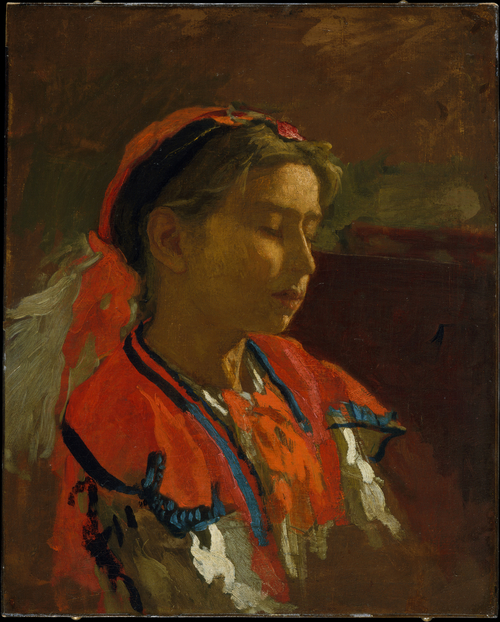
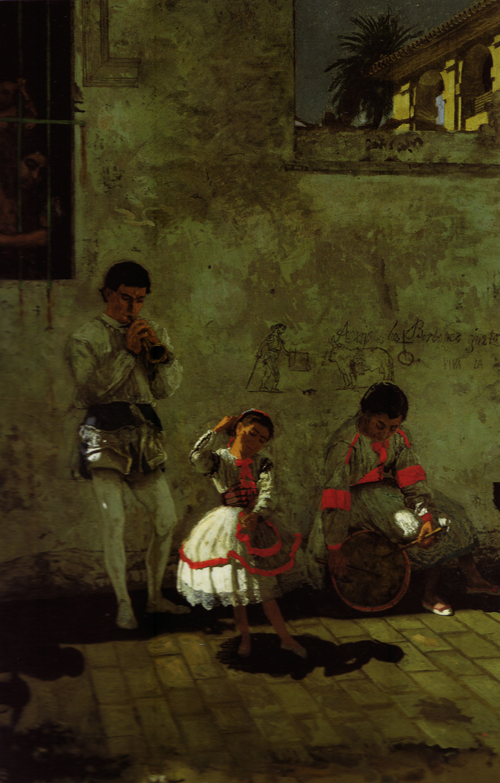
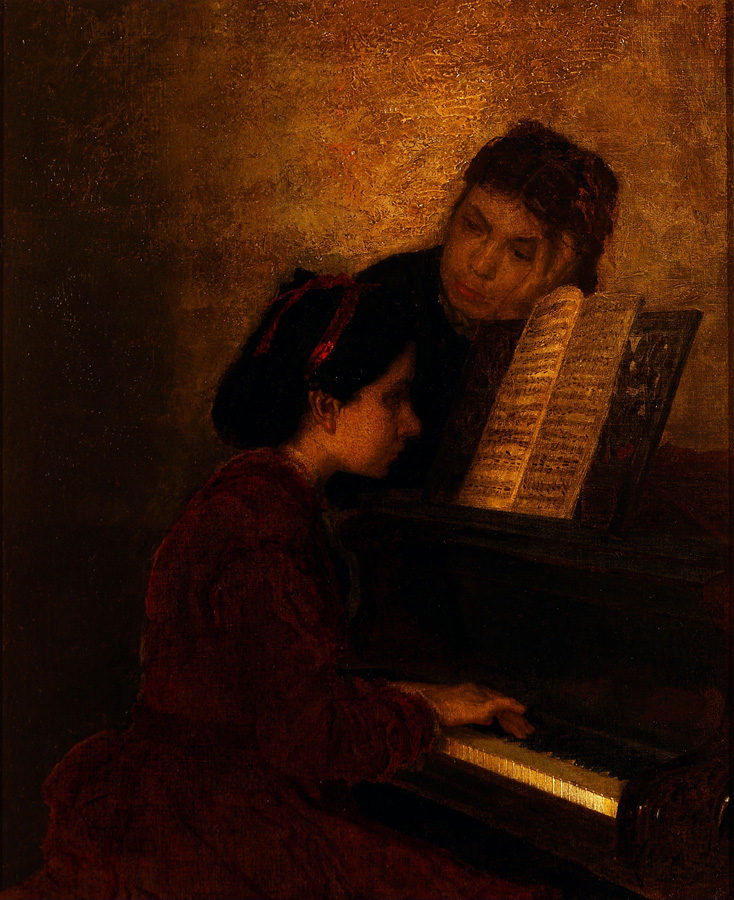
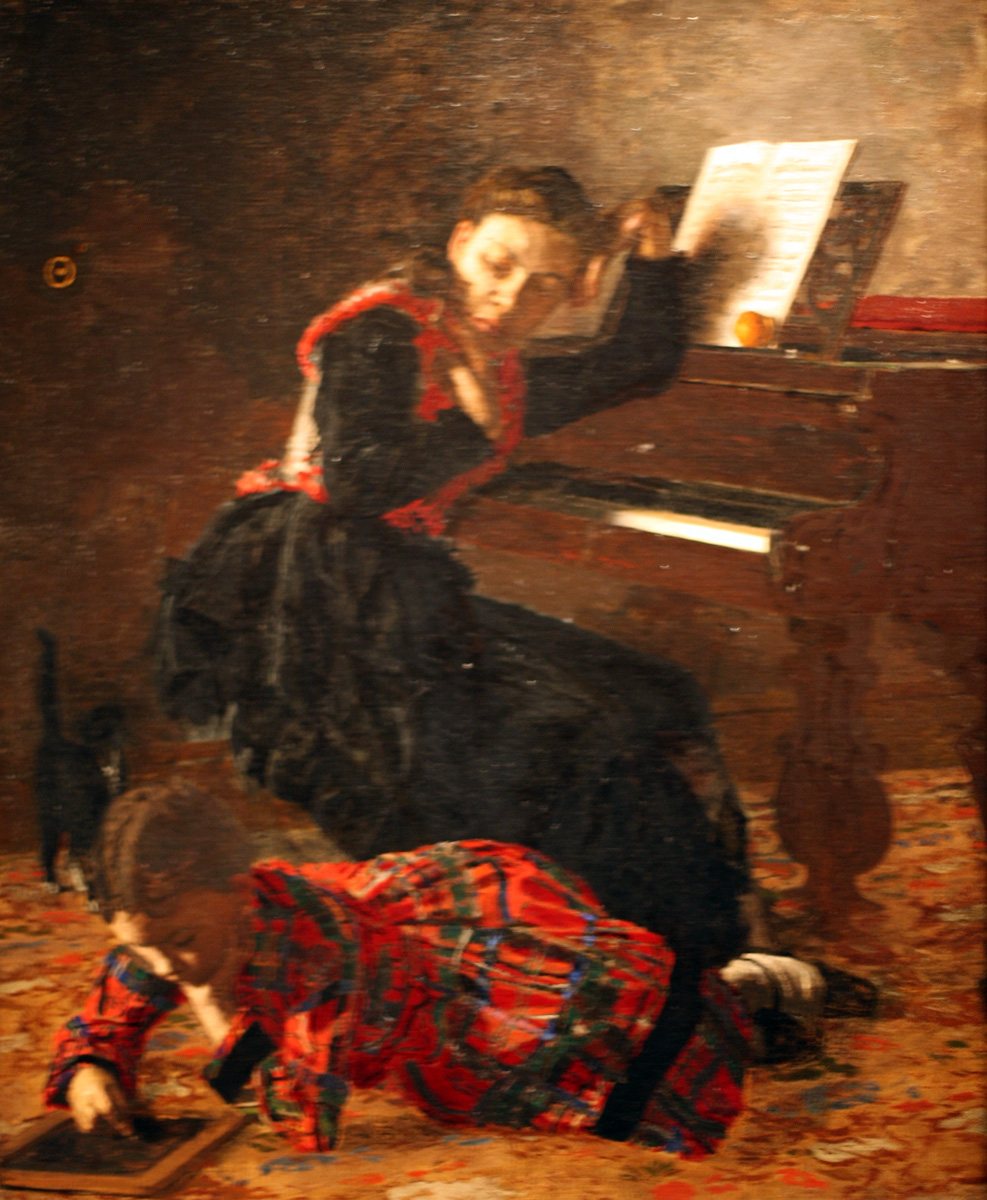
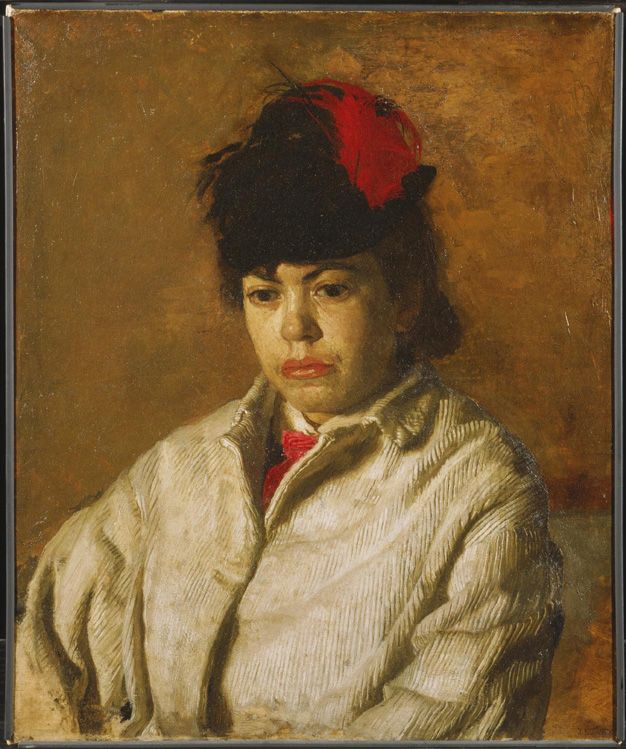

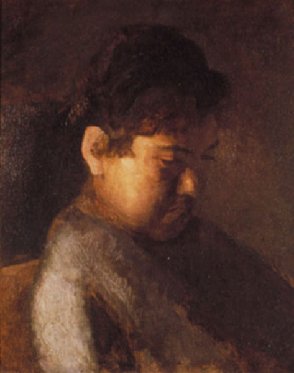

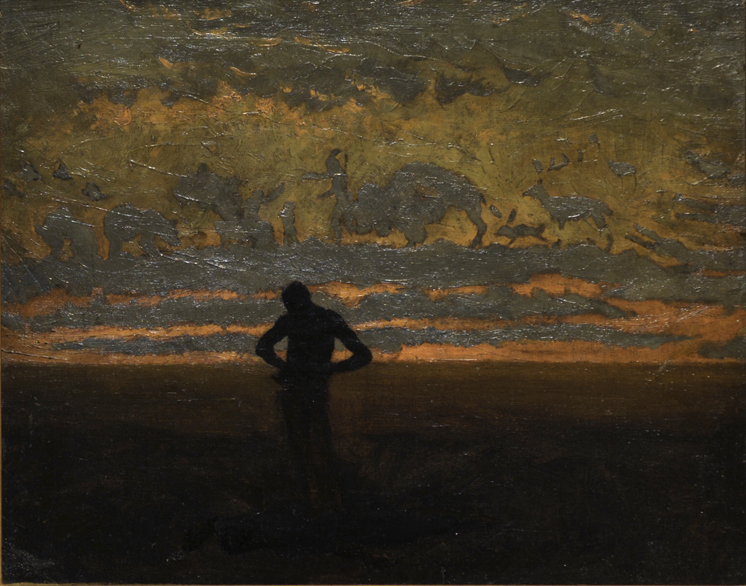


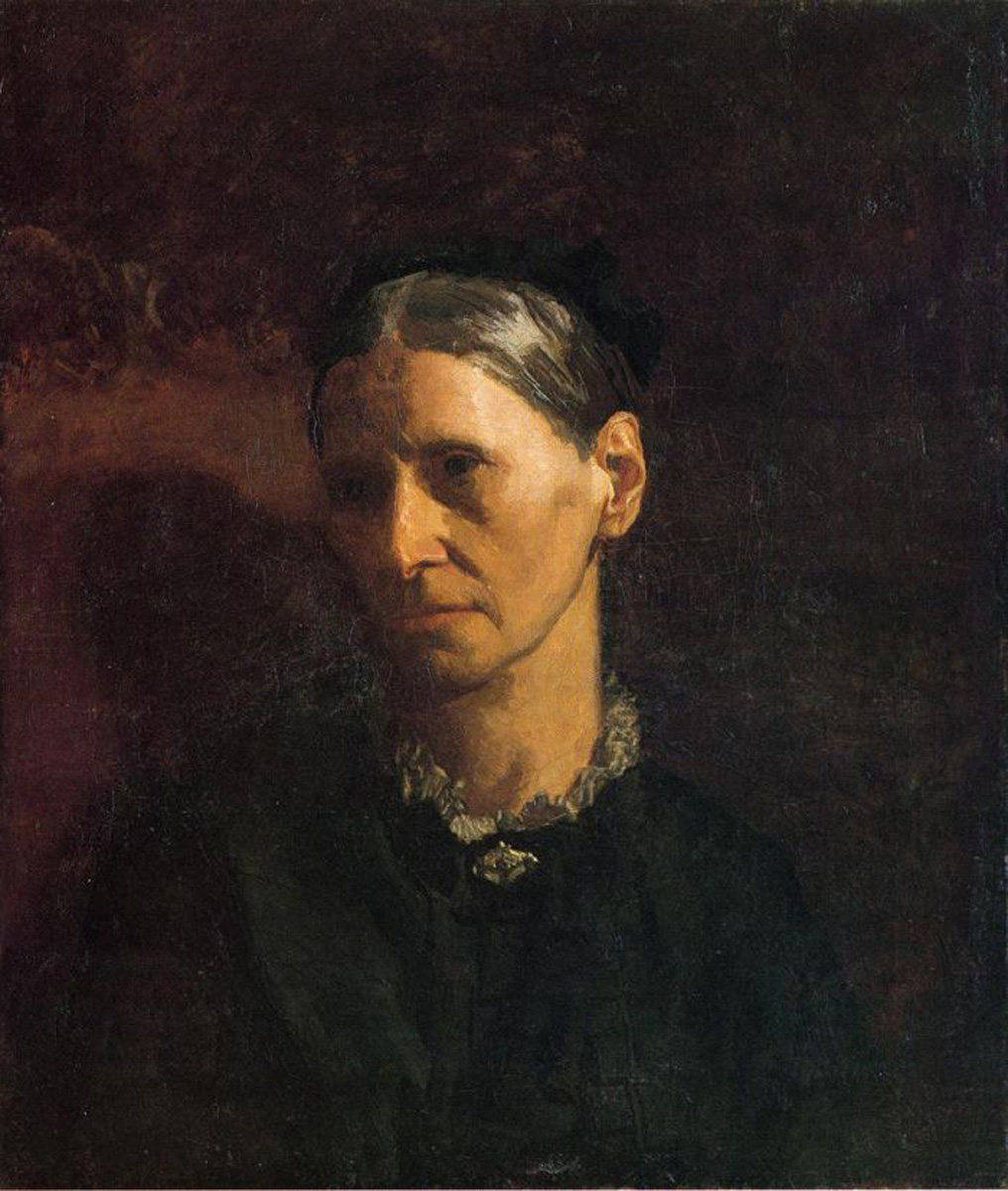
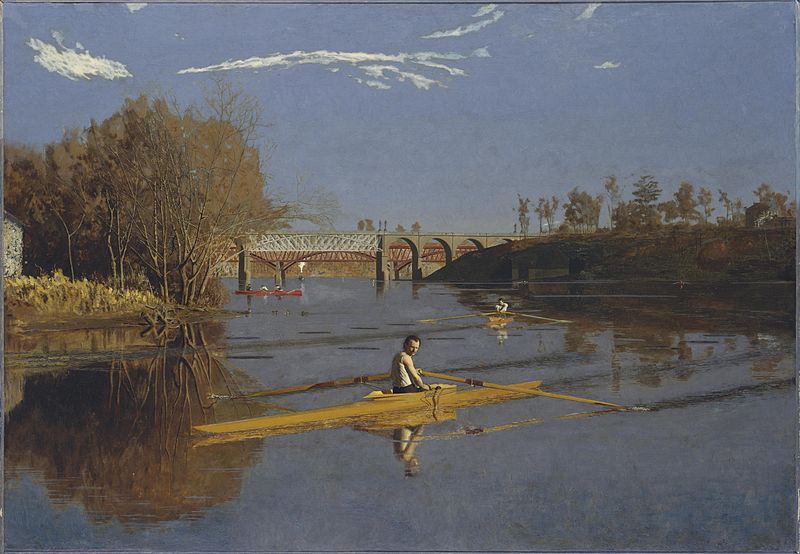
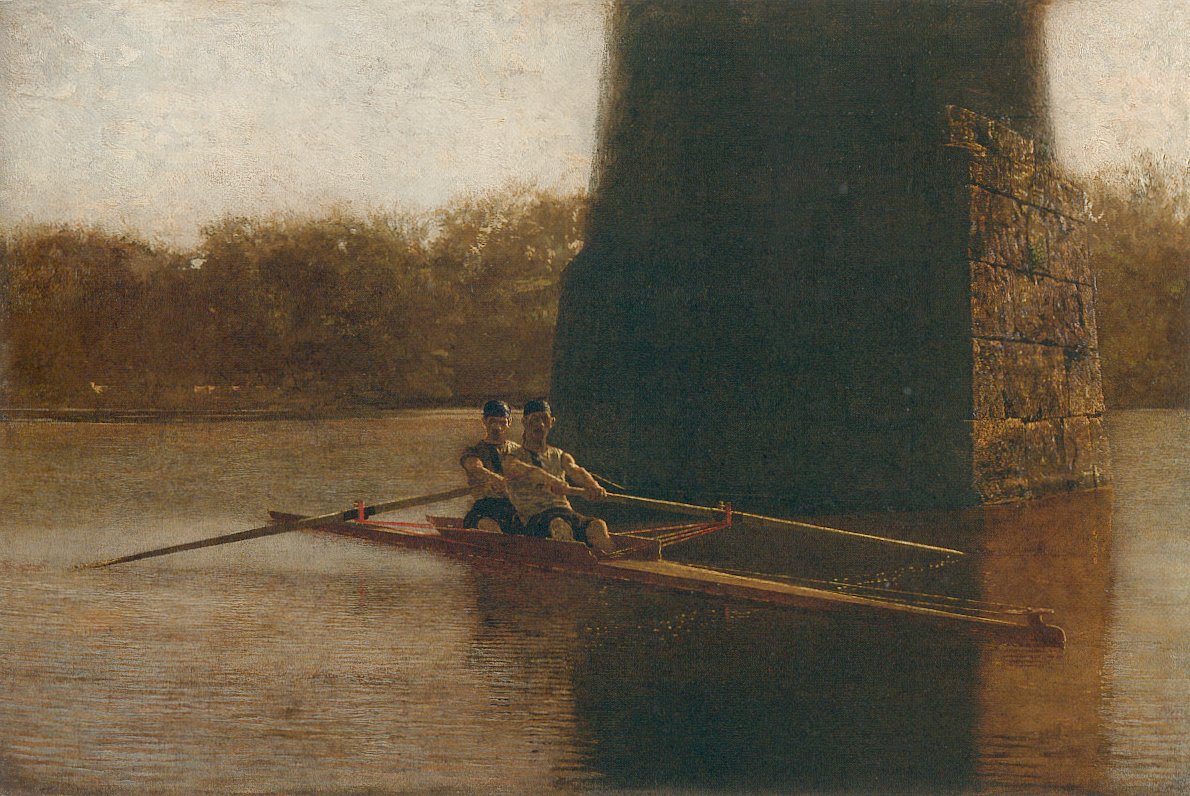
.jpg)
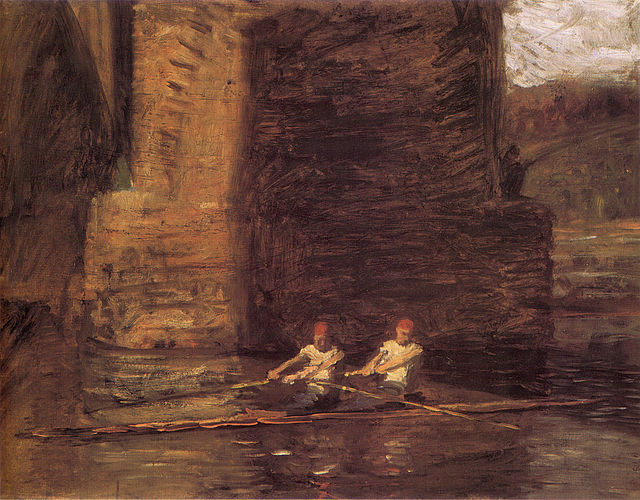

.jpeg)
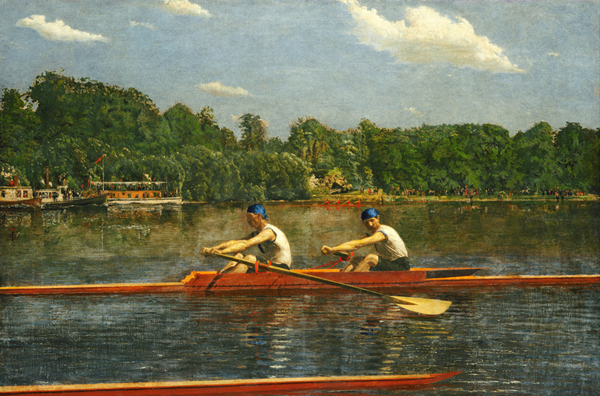


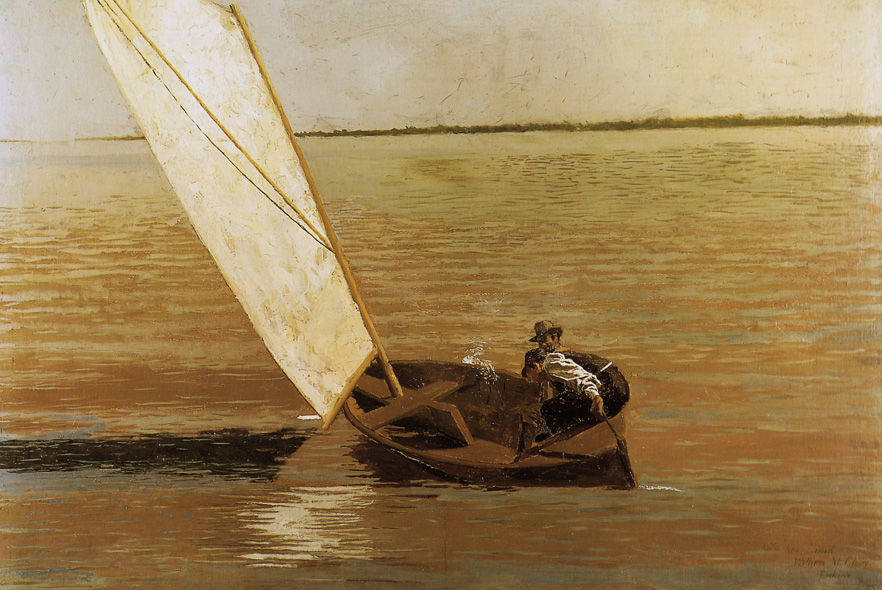
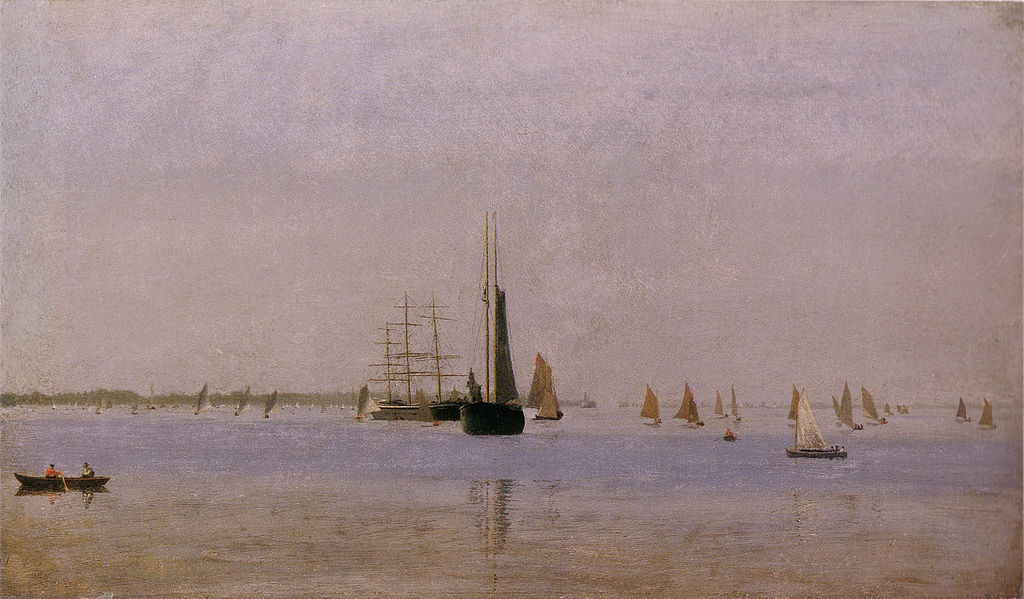
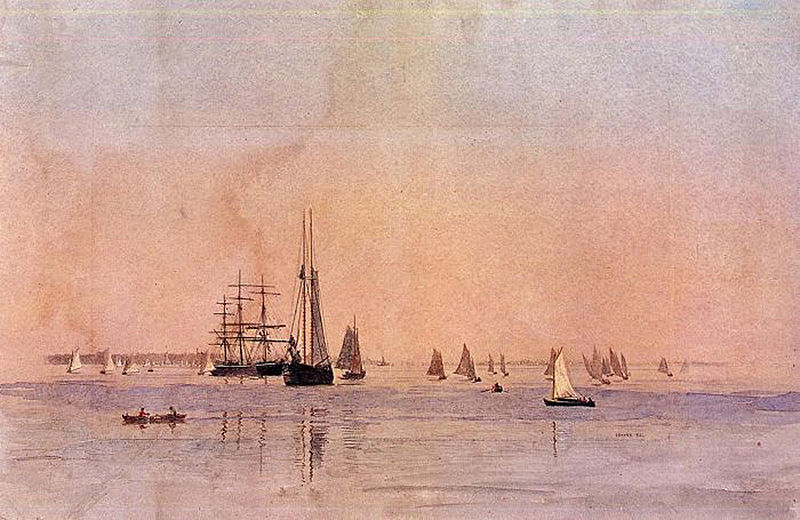
_G505.jpg)
_G504.jpg)

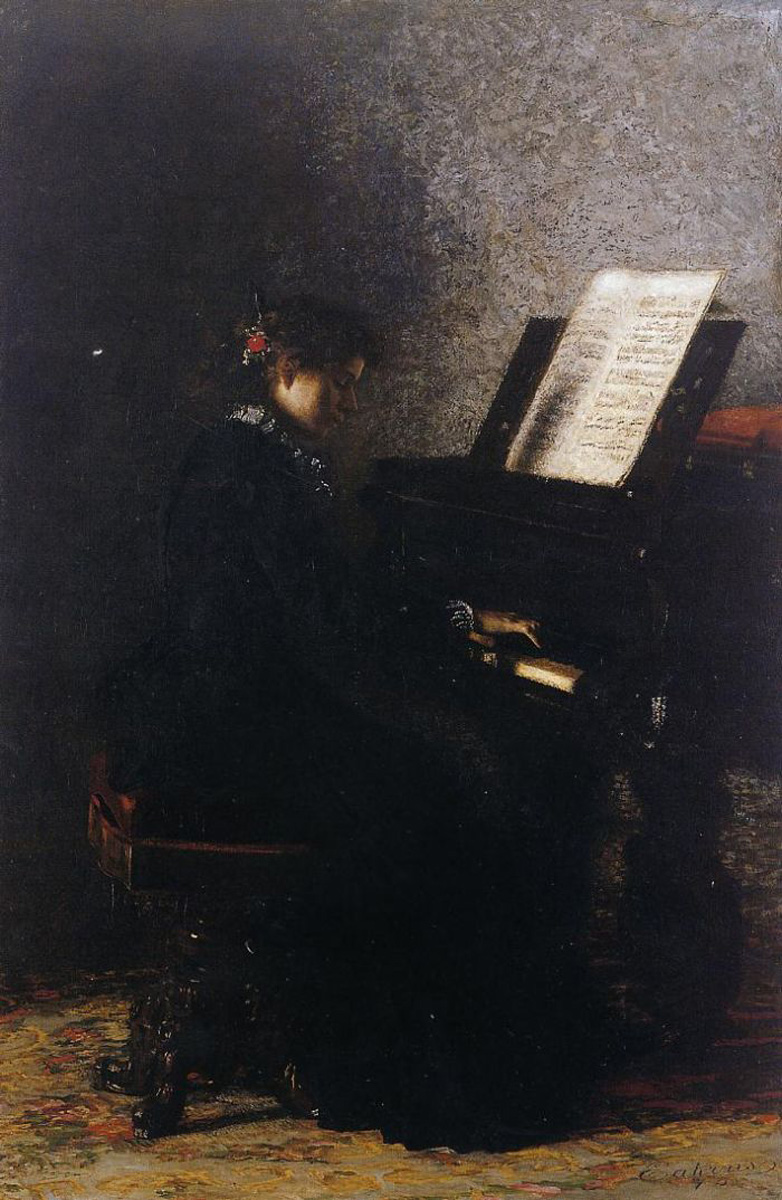

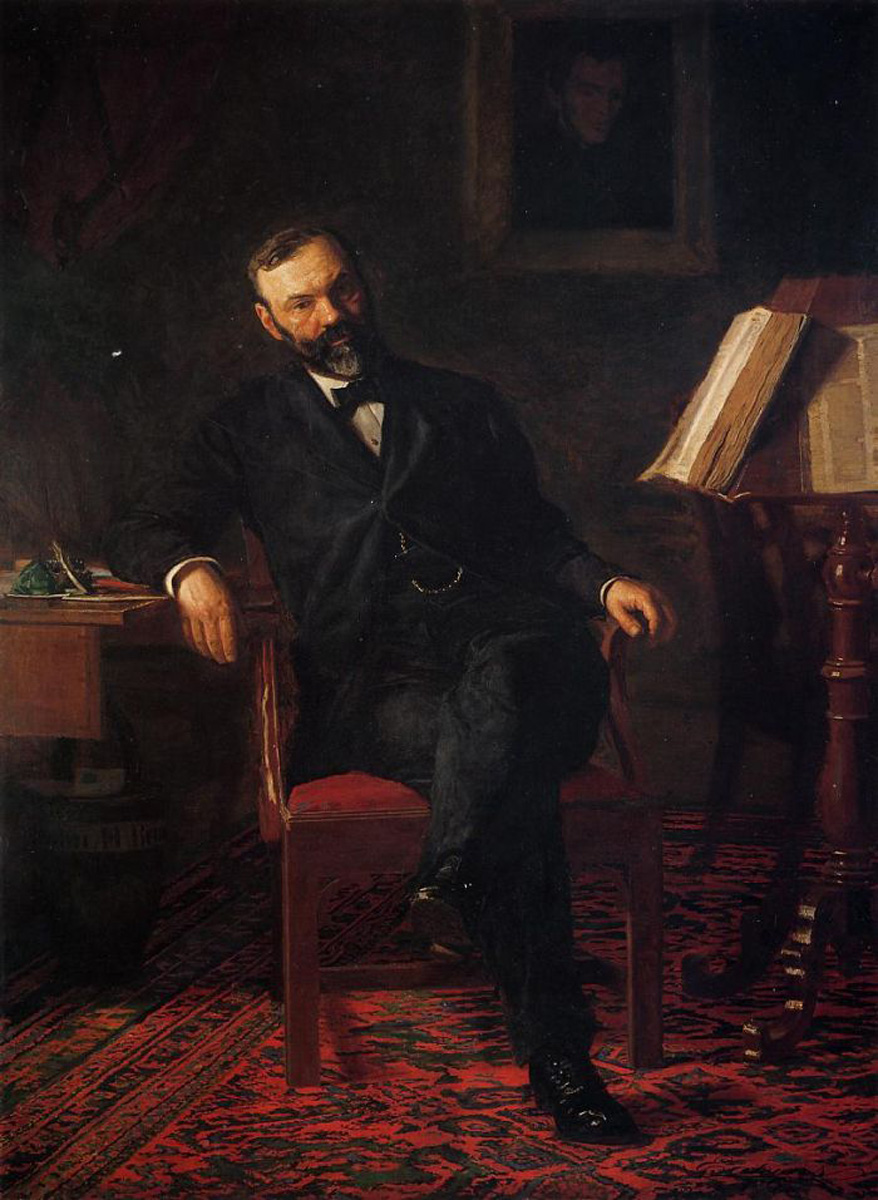
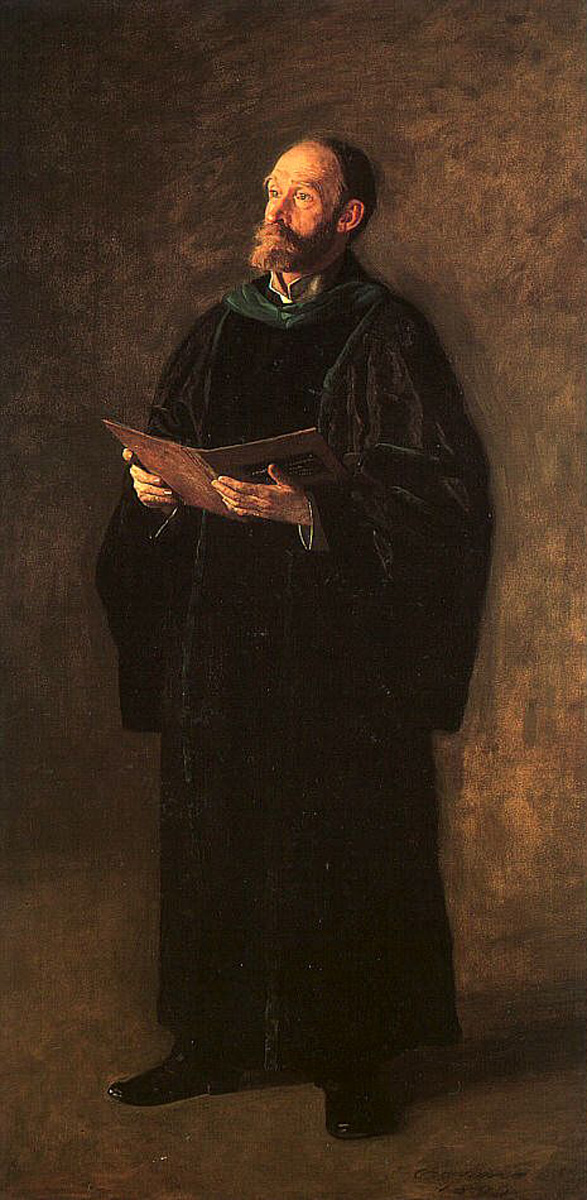
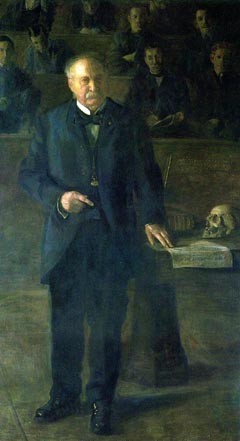
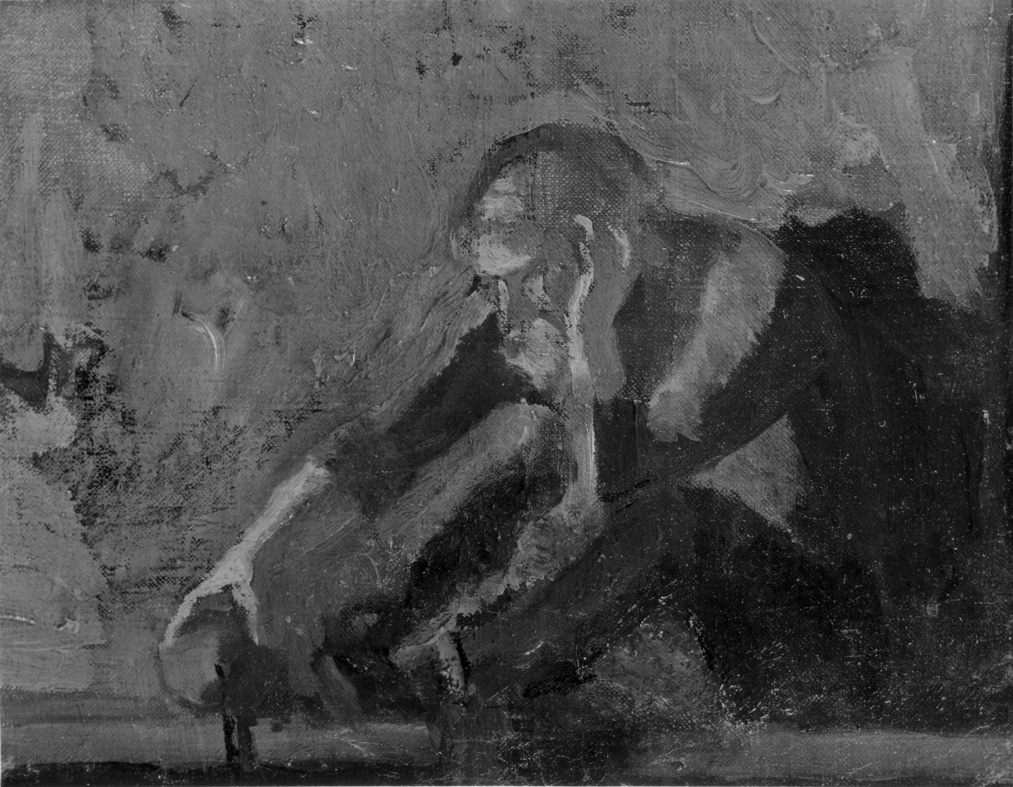
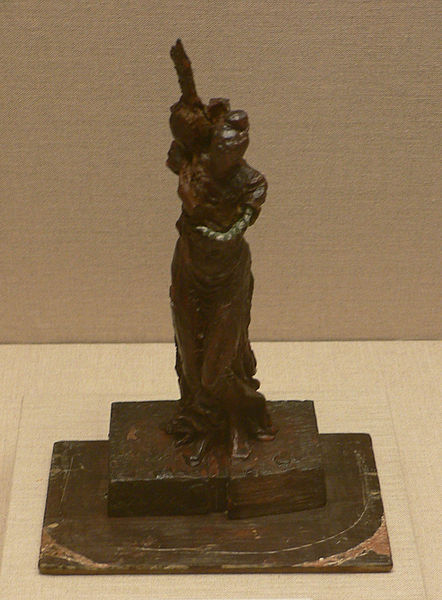

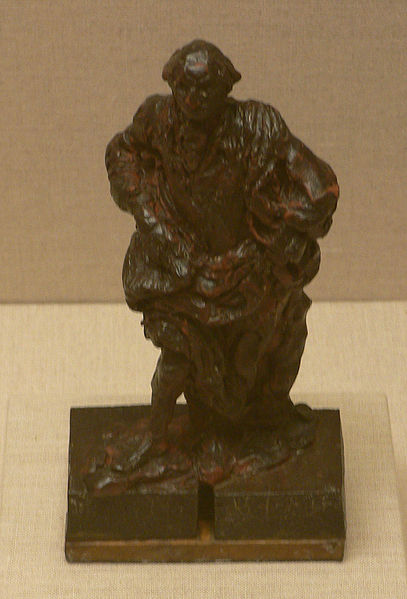
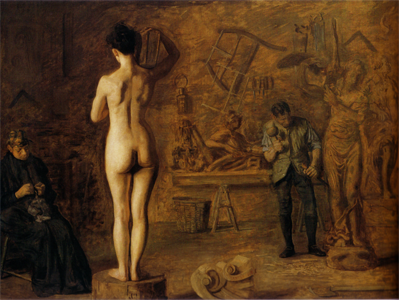
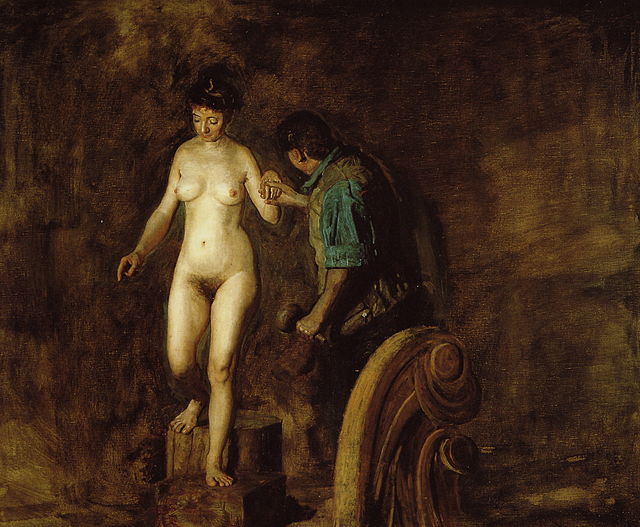
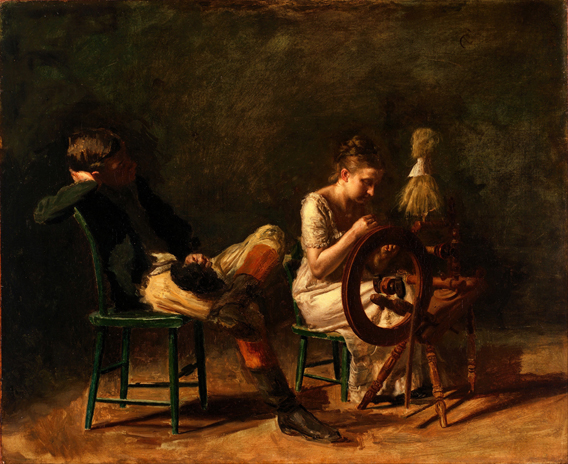

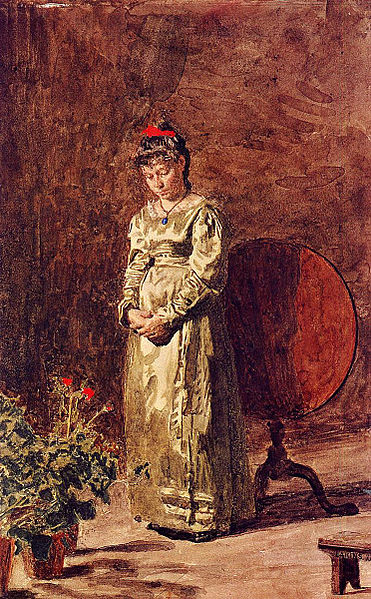


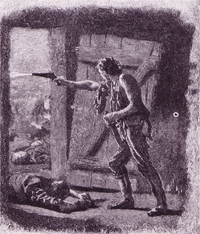
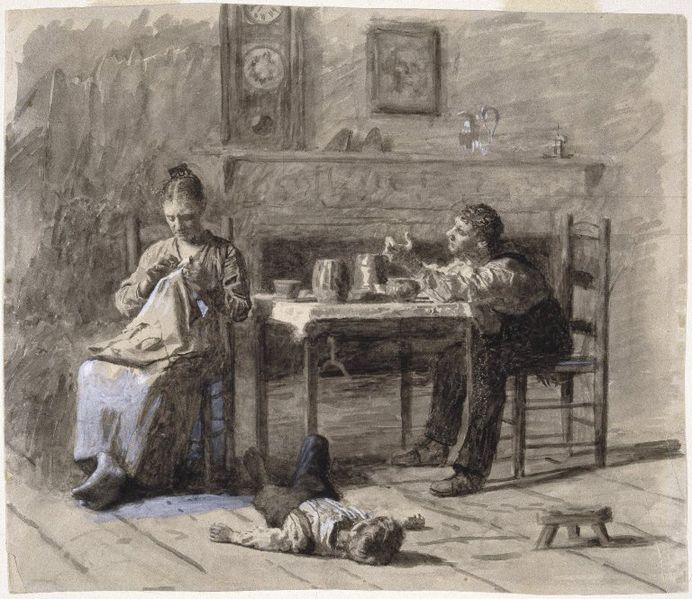

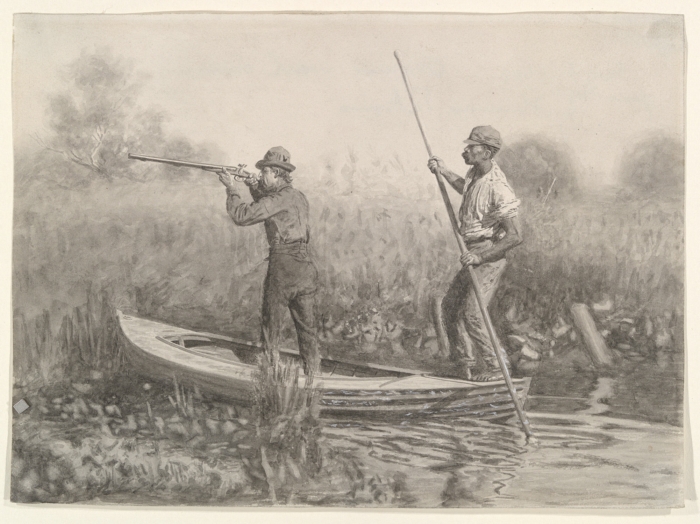
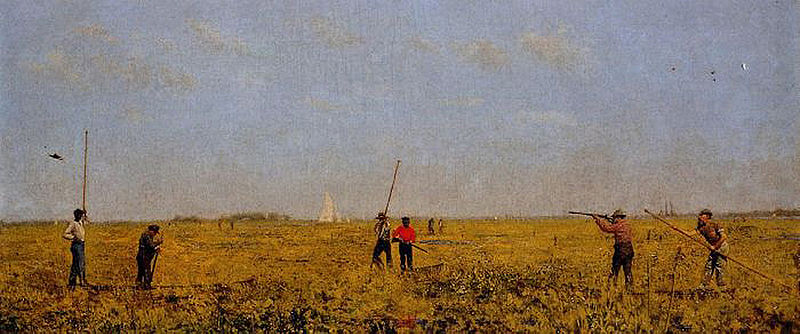
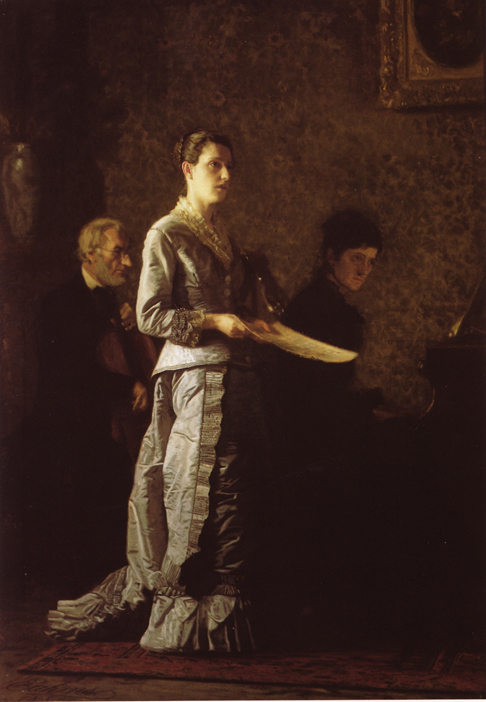



.jpg)
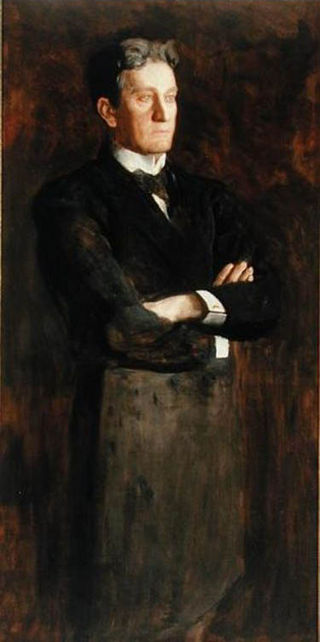


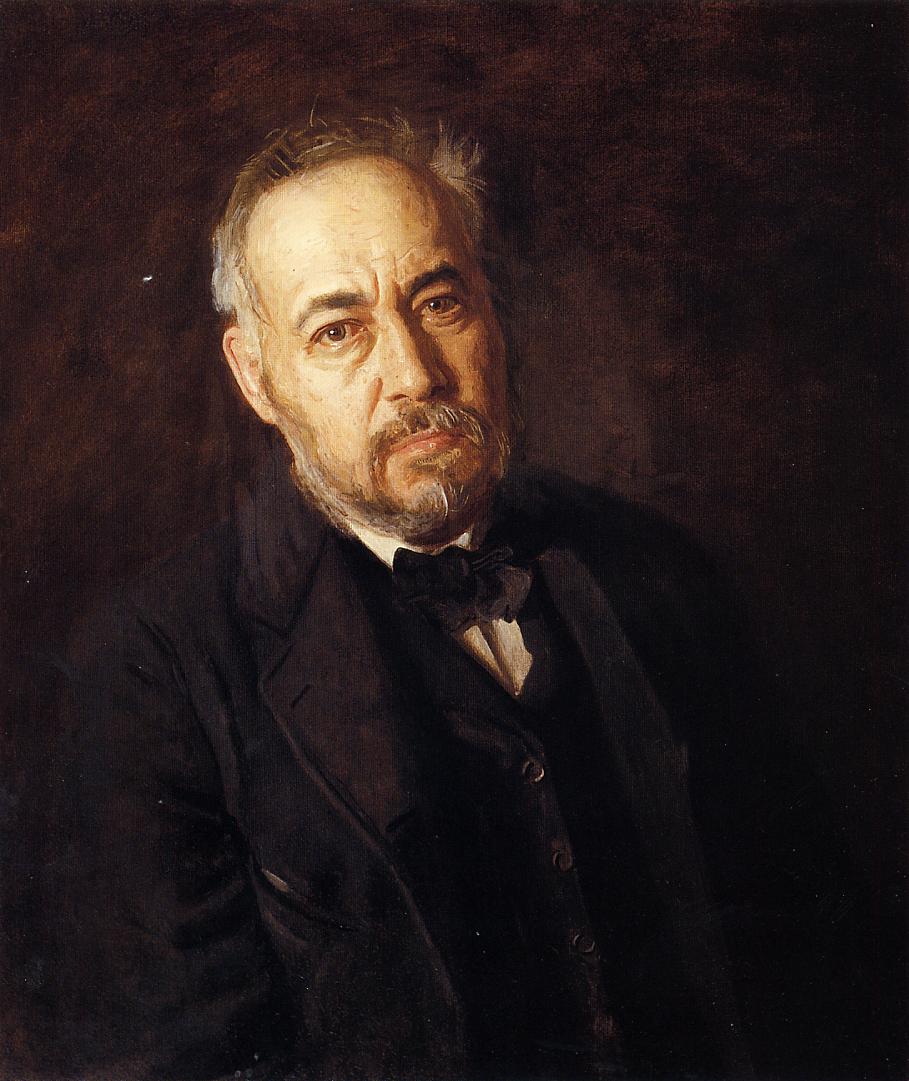
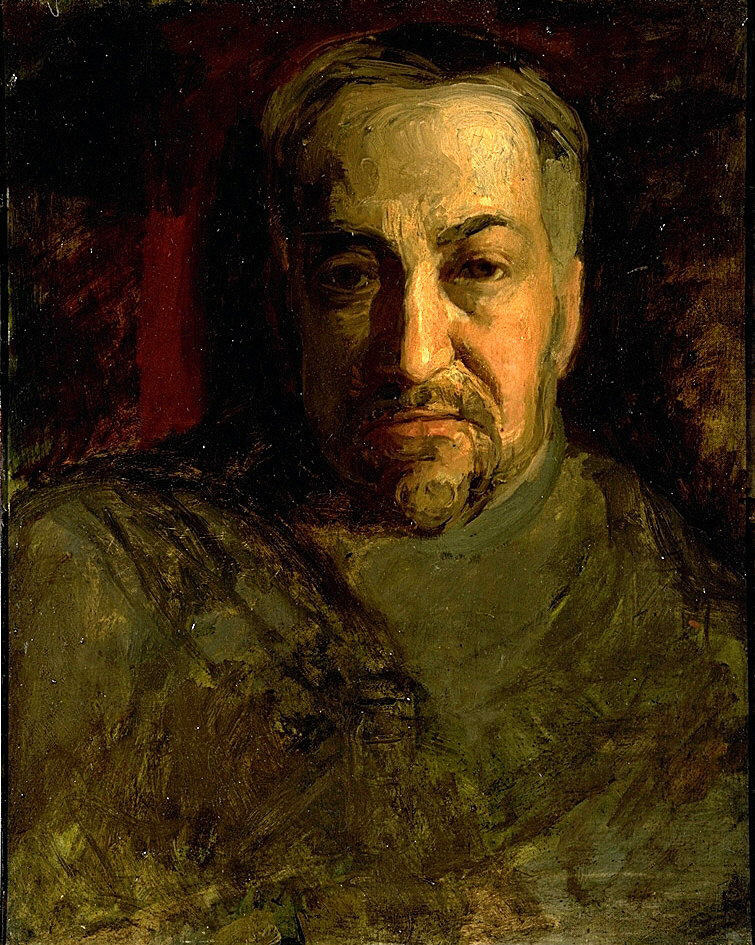



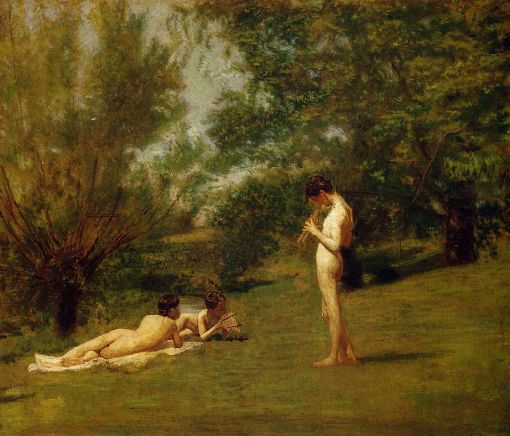

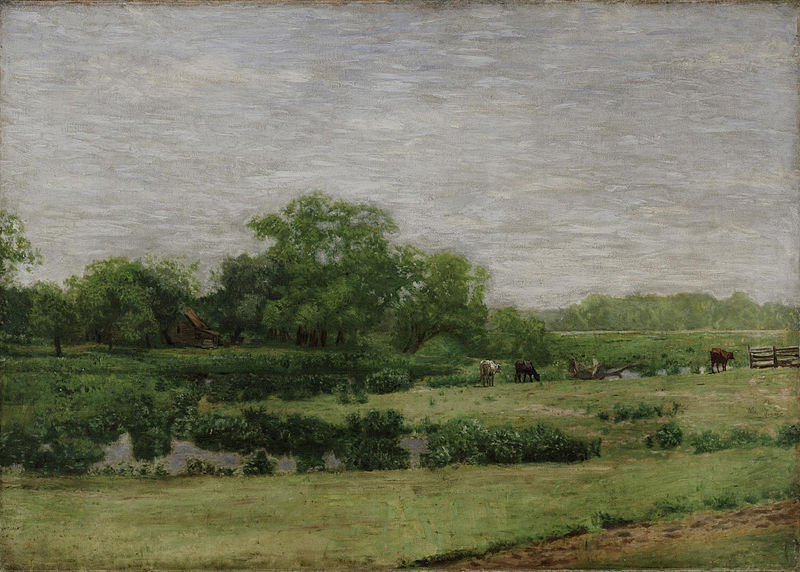
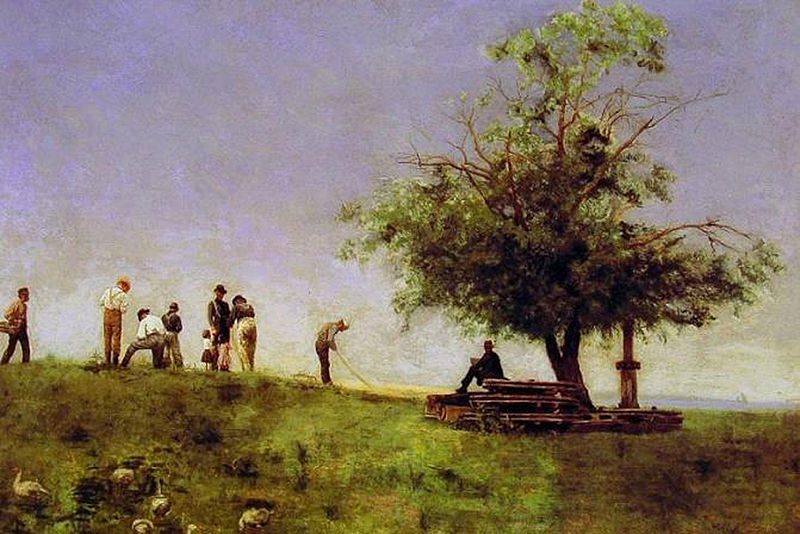
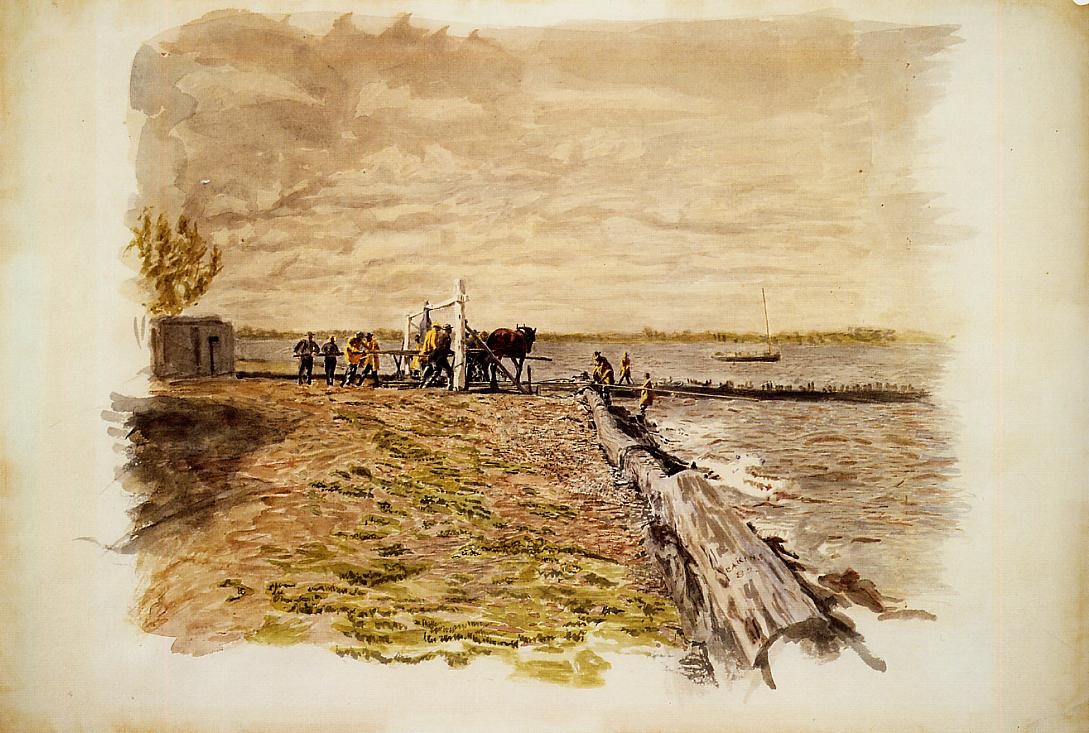
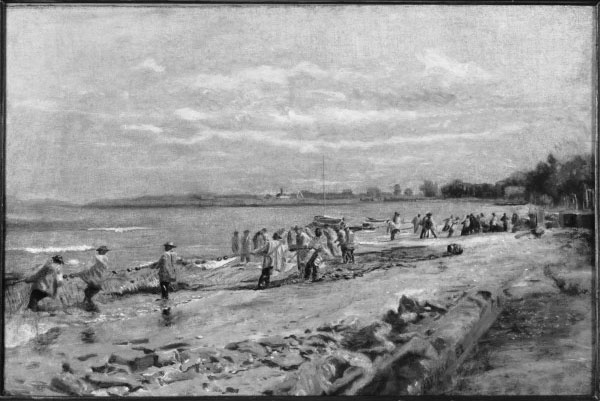

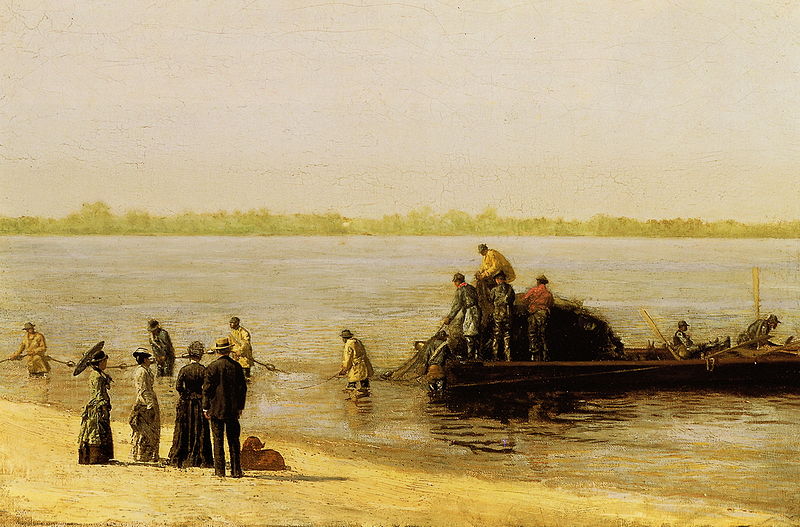
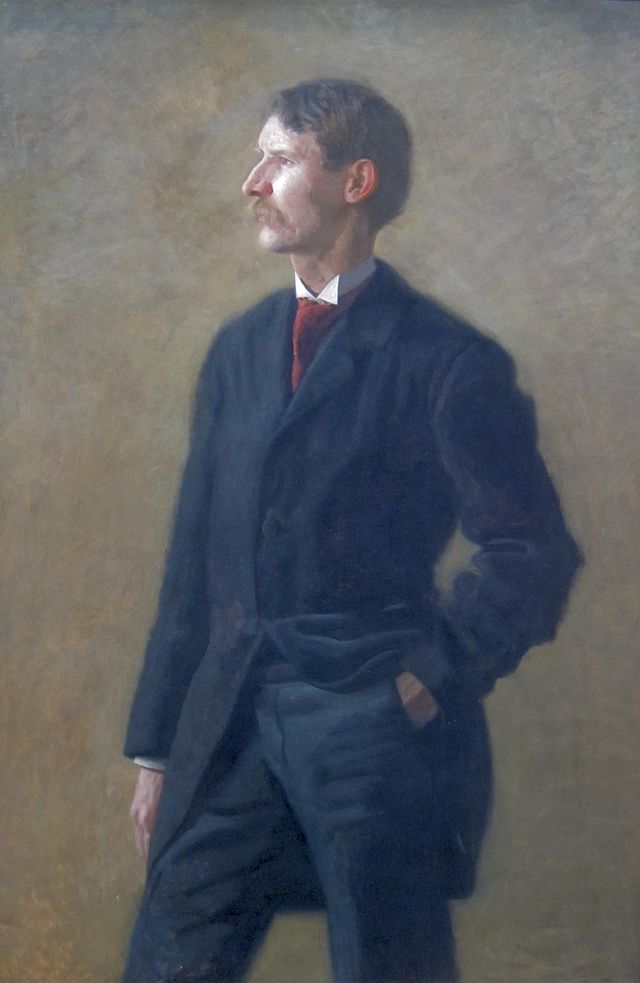
.jpeg)
.jpg)
.jpg)
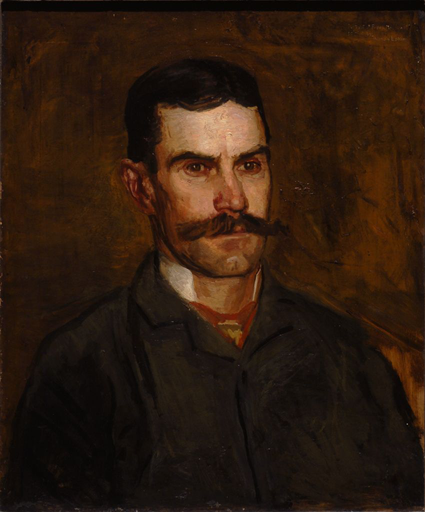
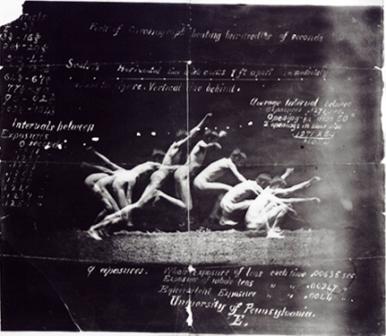
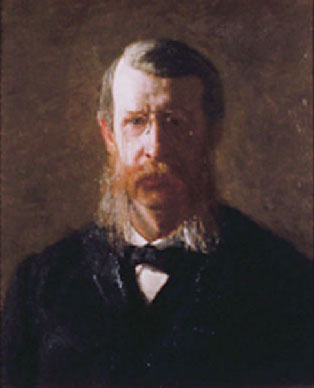
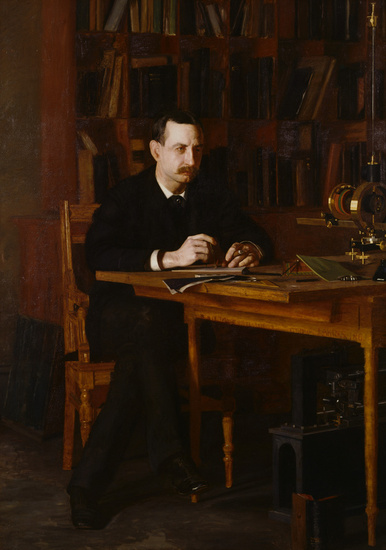

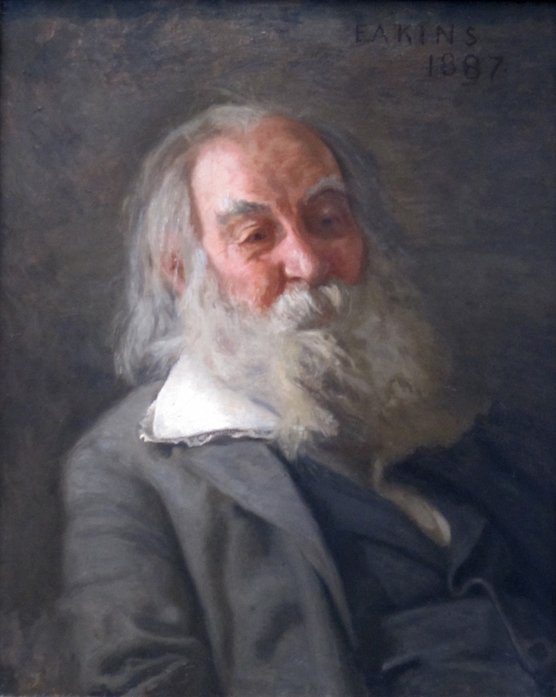
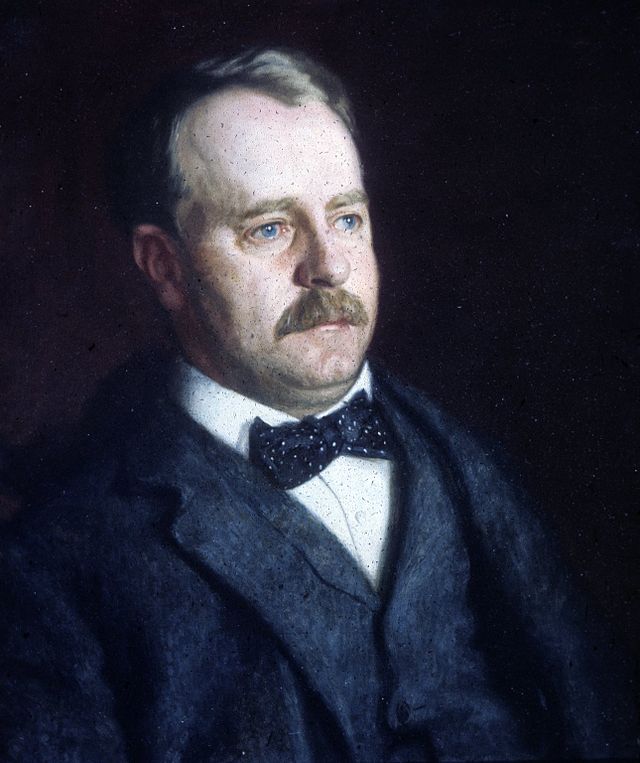

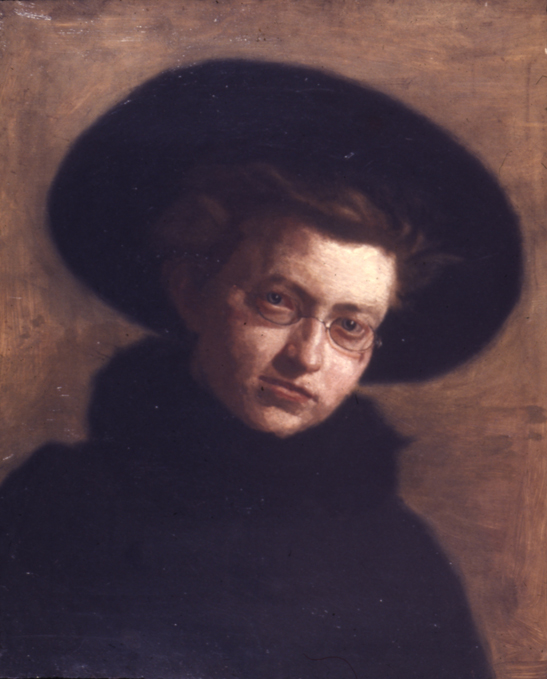

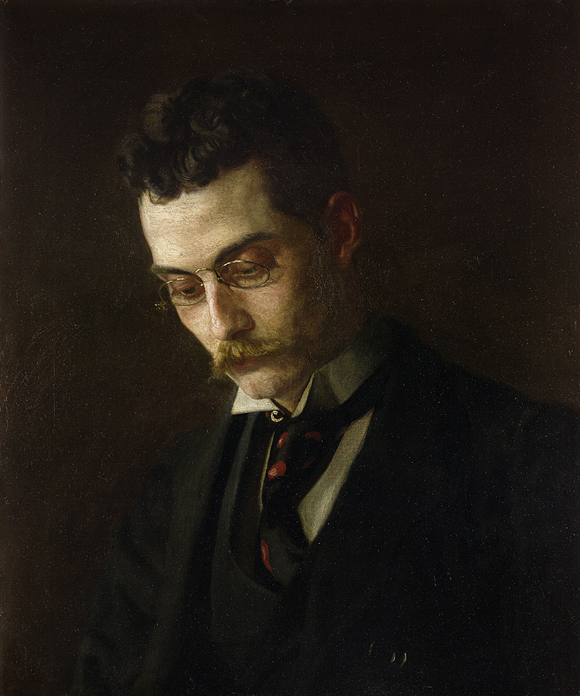

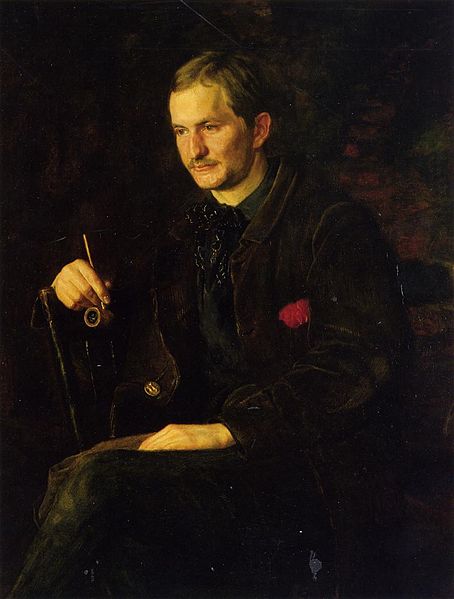
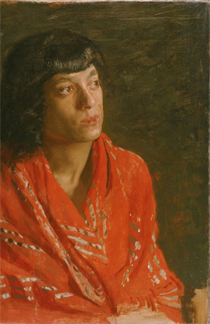
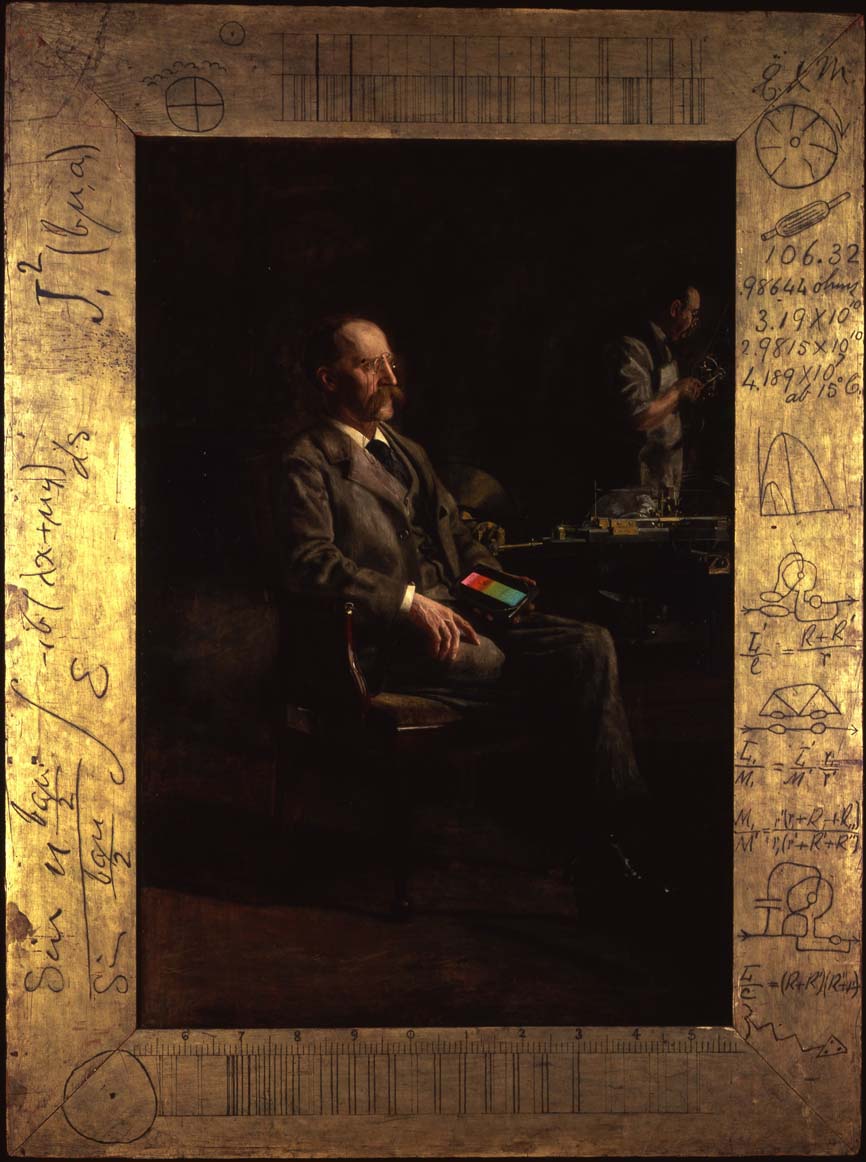

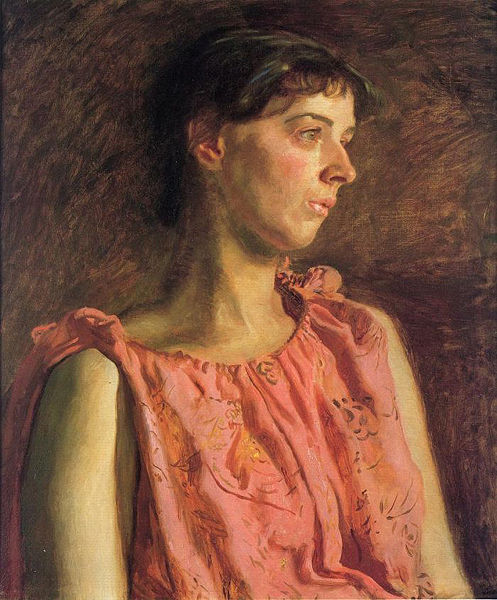
.jpg)
.jpg)
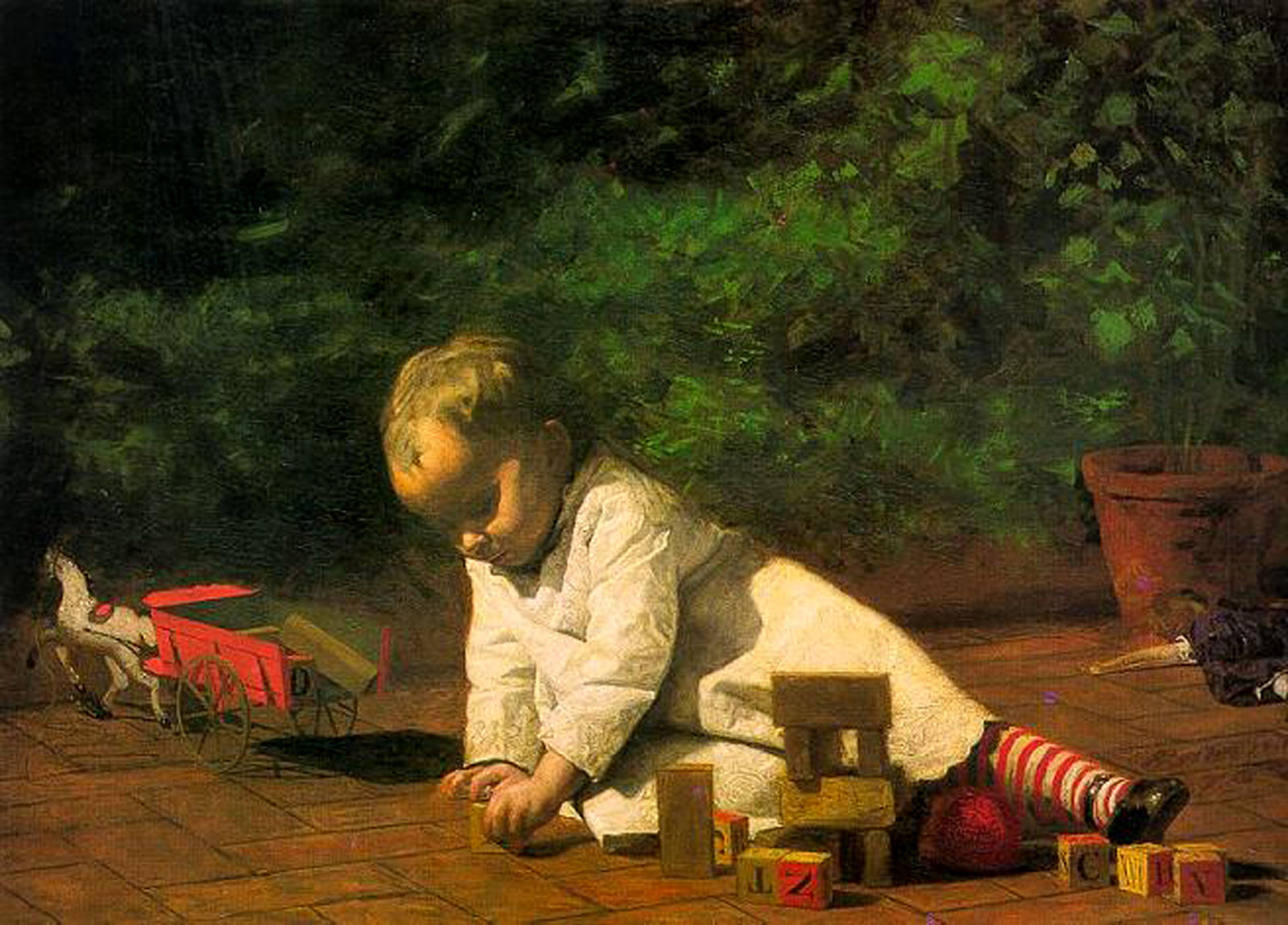

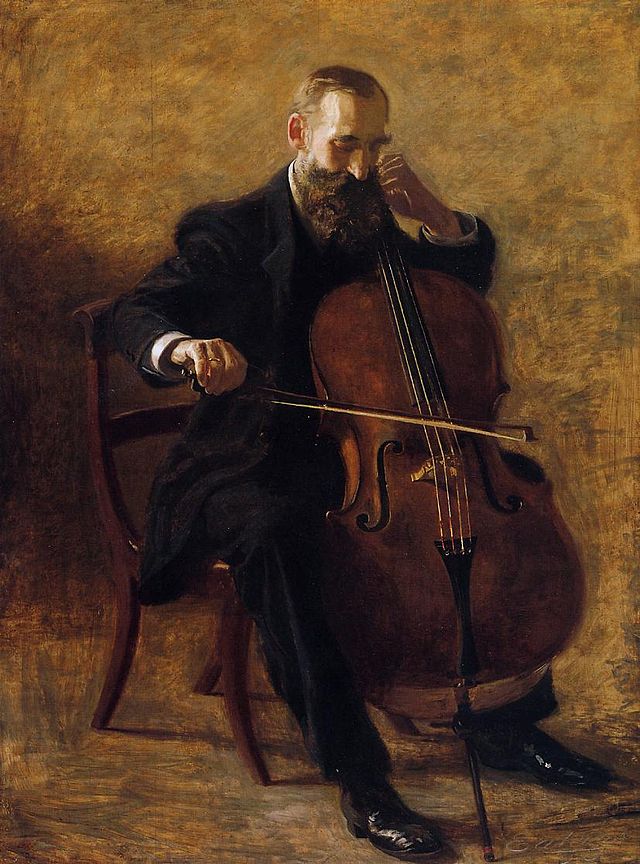
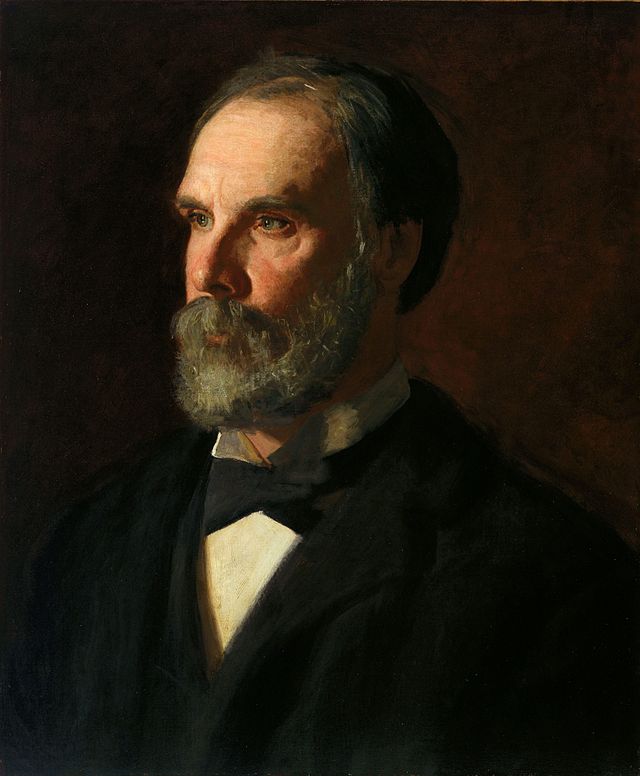
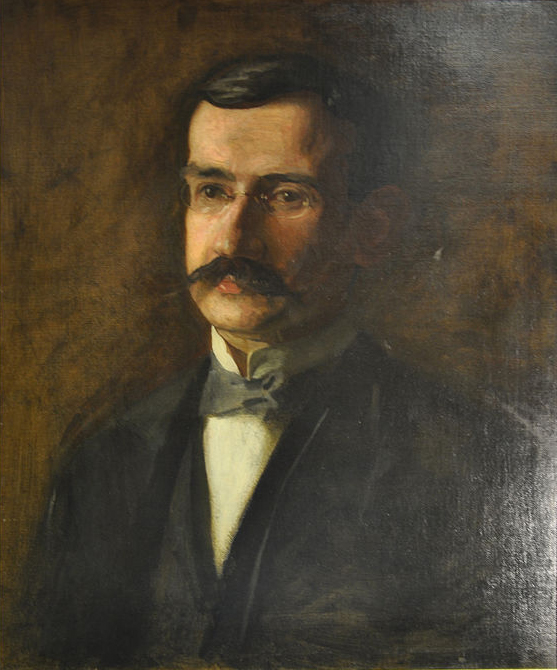
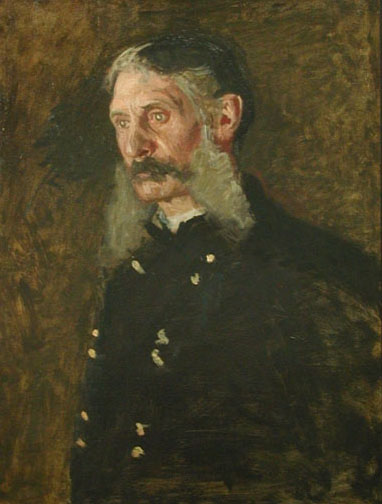


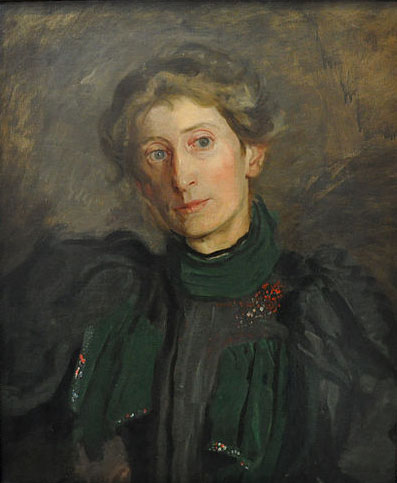




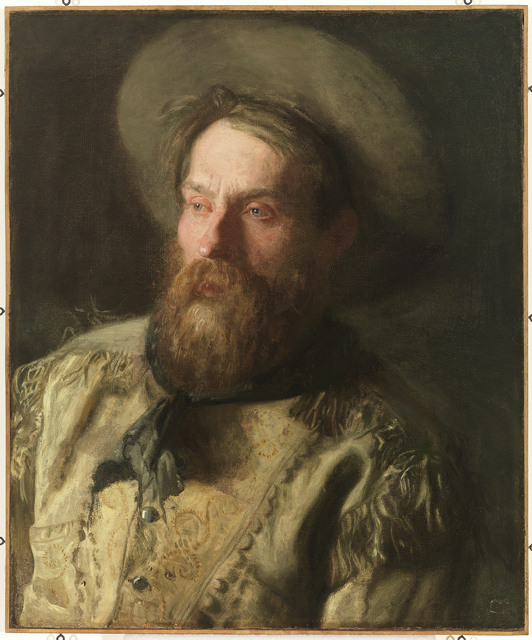



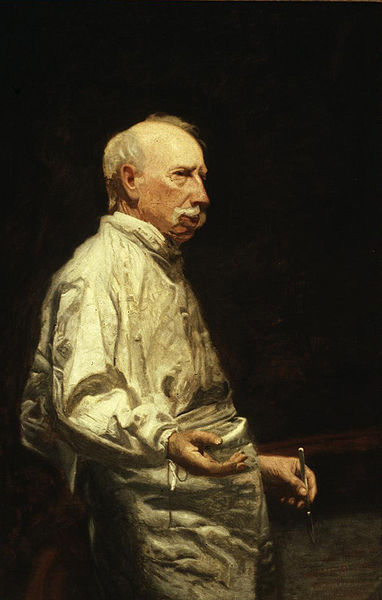

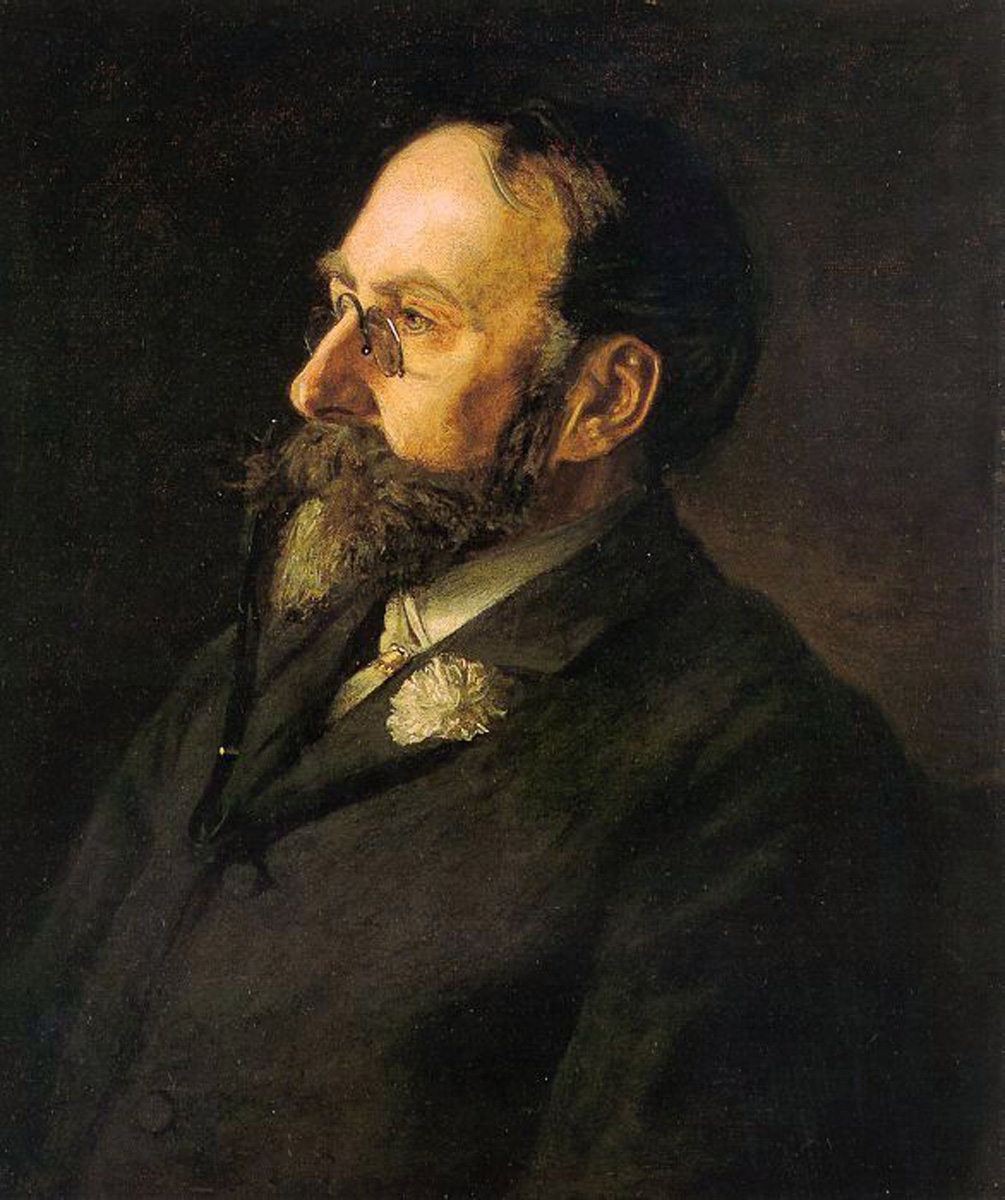

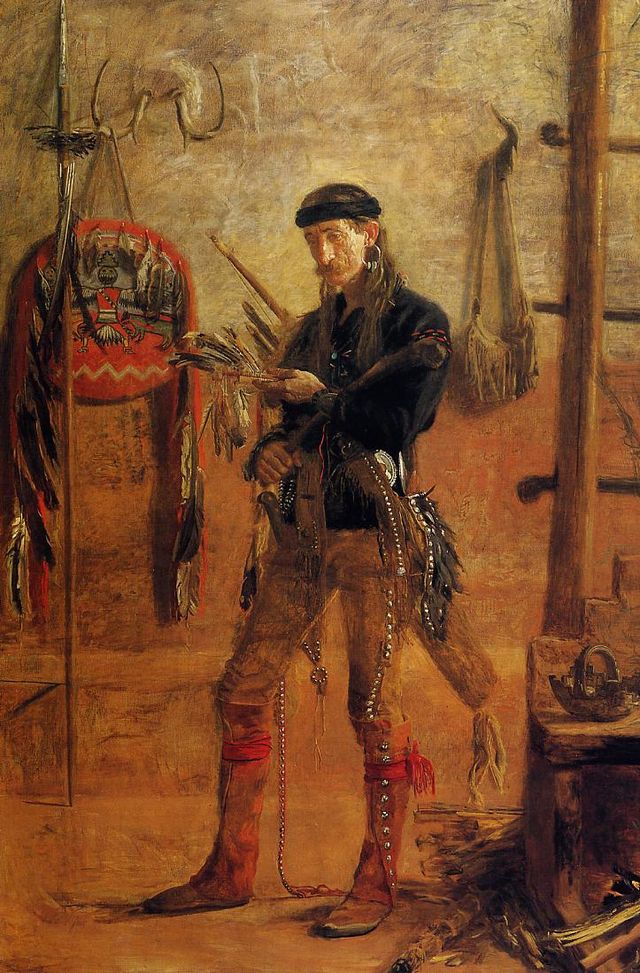



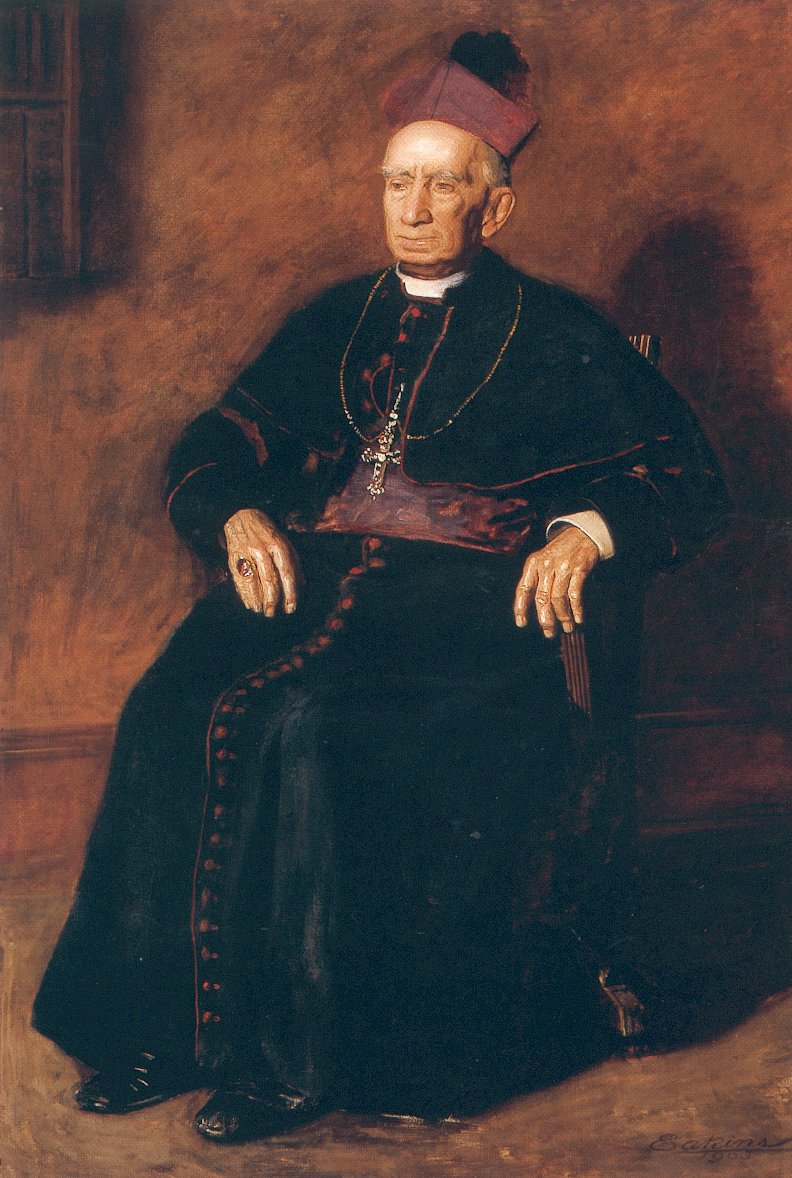

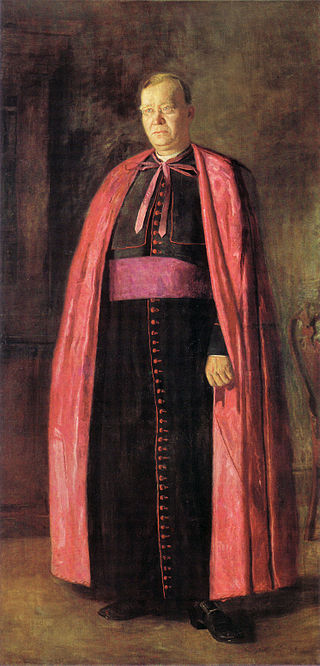
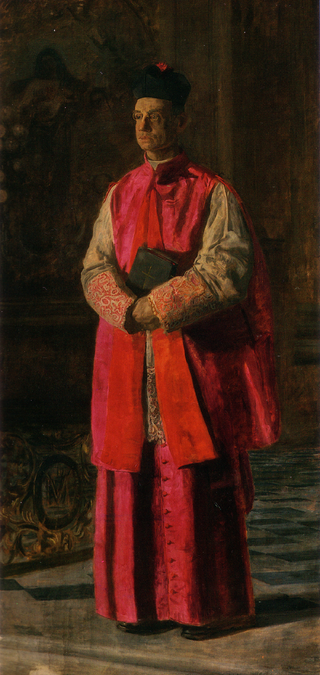

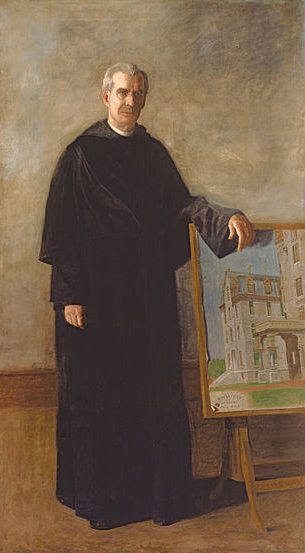
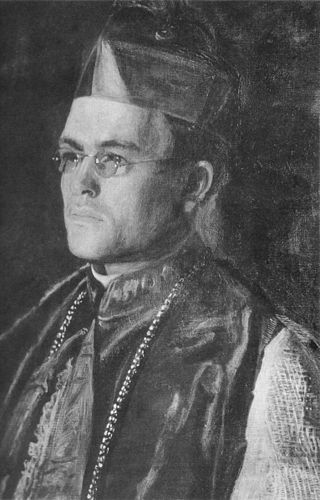

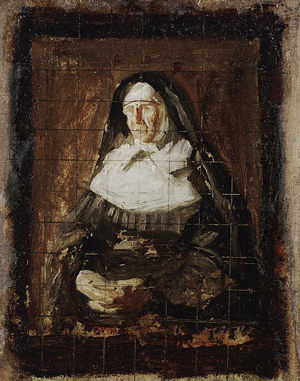
_G364.jpg)
.png)
_G368.jpg)
.jpg)
.jpg)

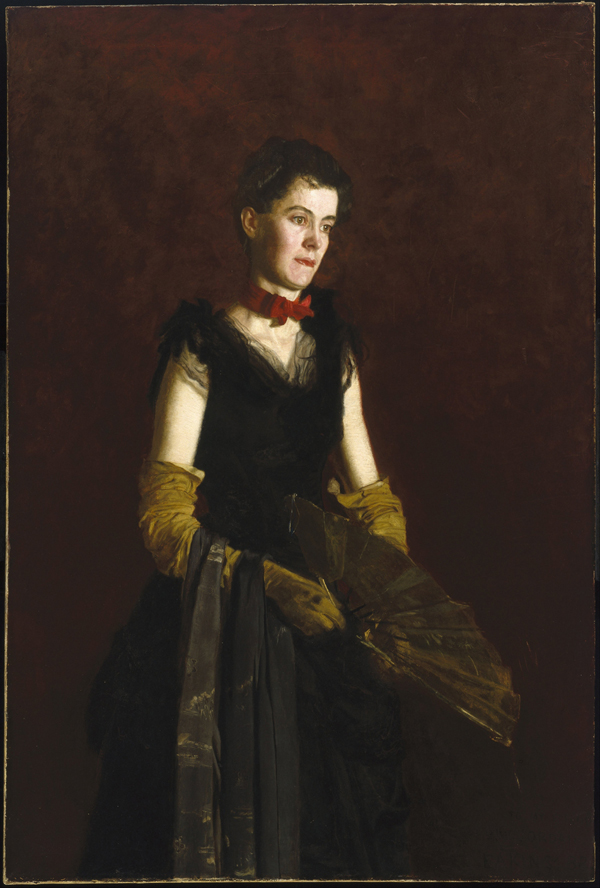

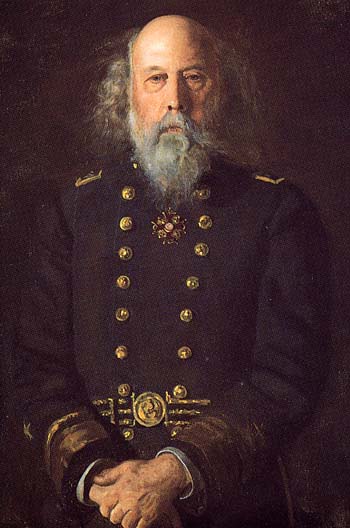
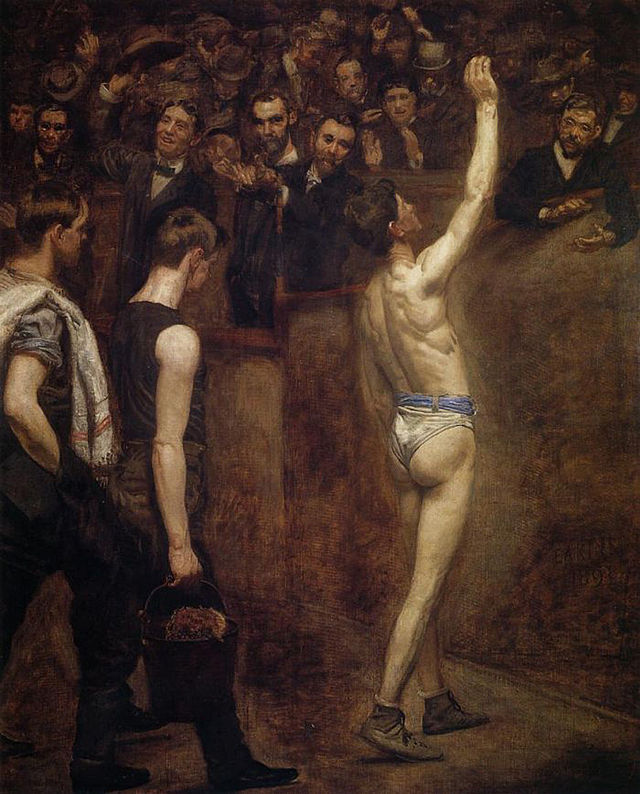
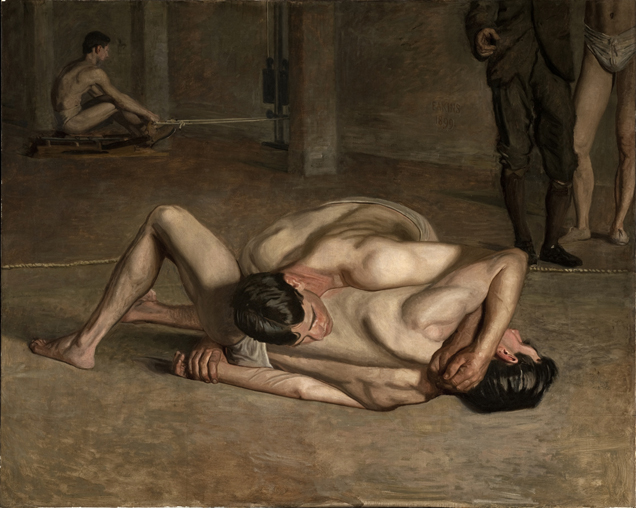

.jpg)
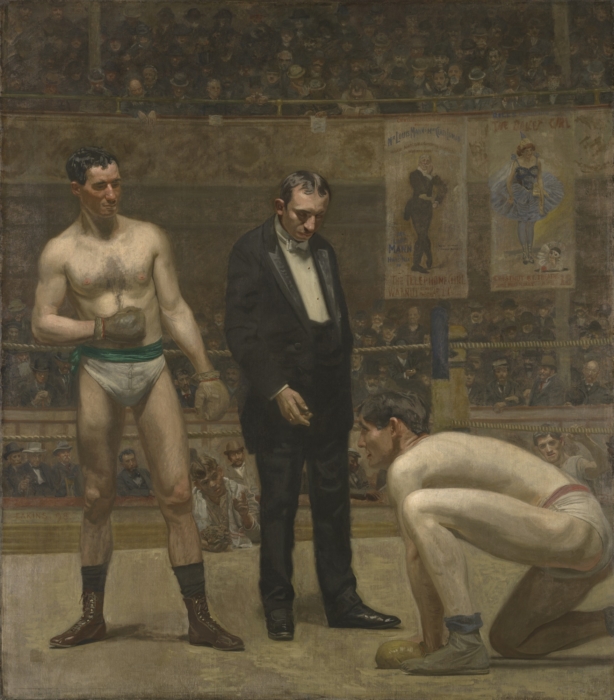
.png)
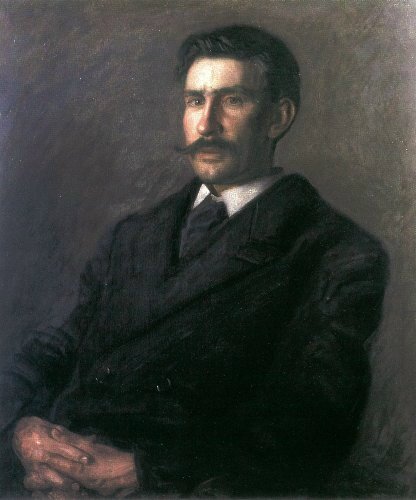
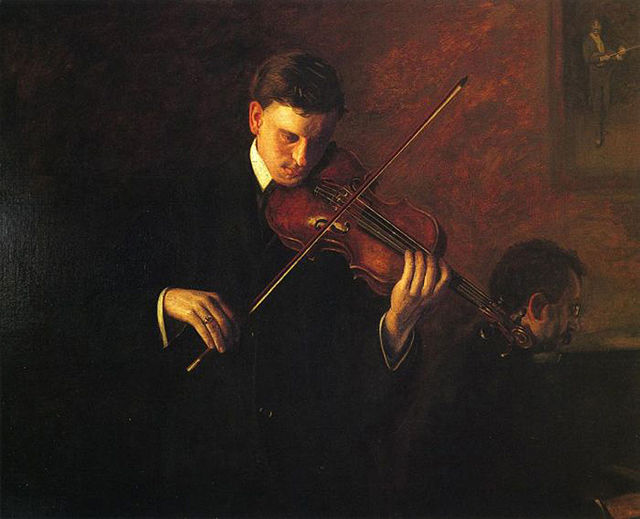


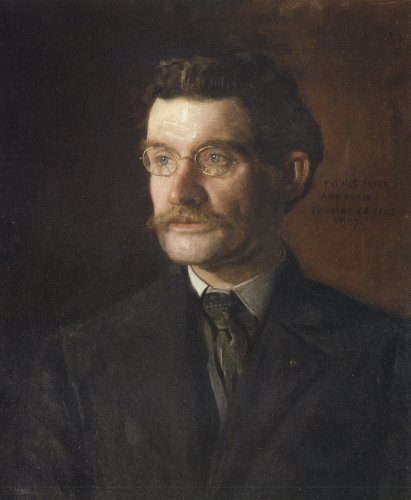
.jpg)
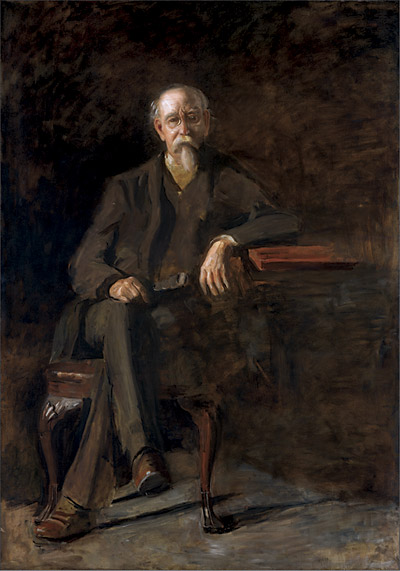
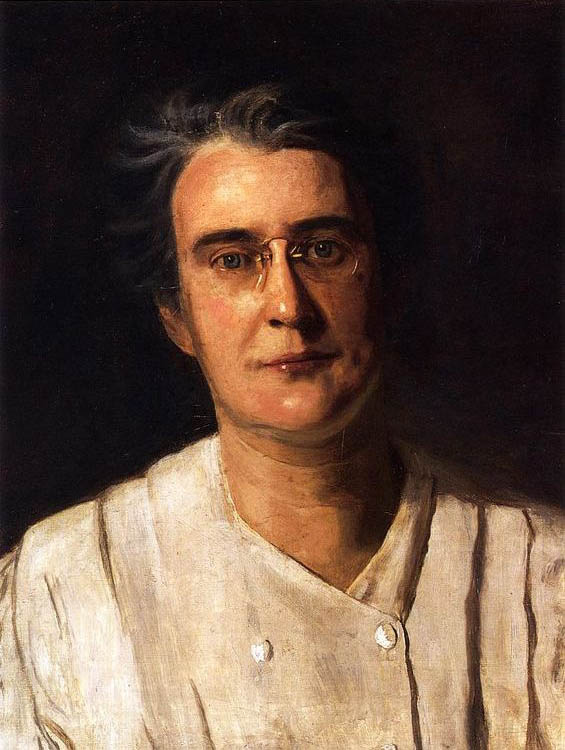
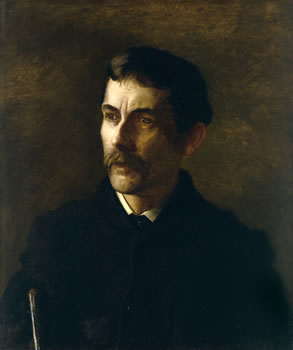
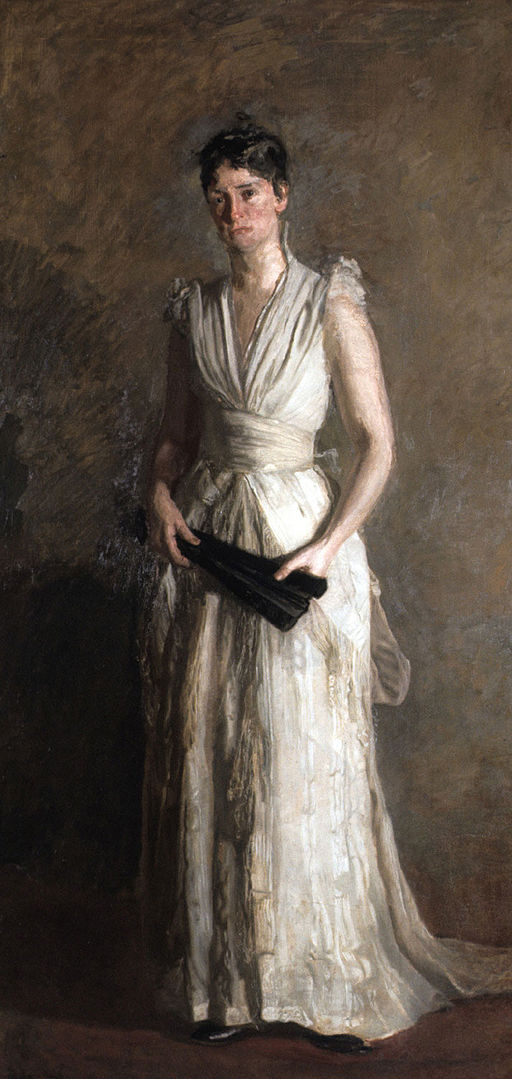
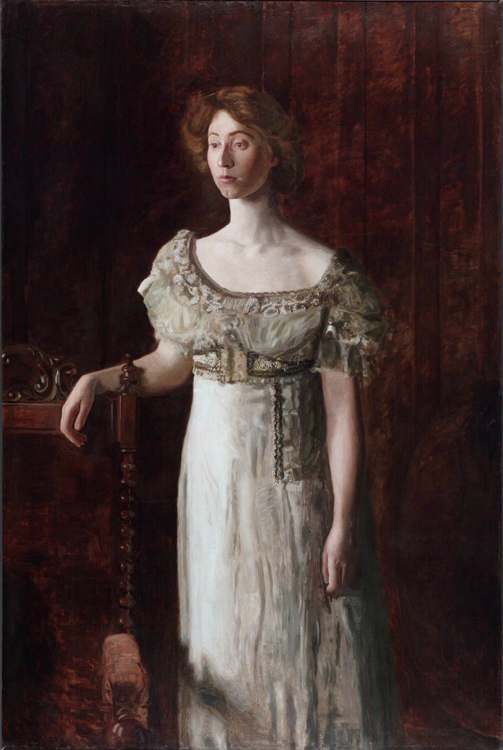

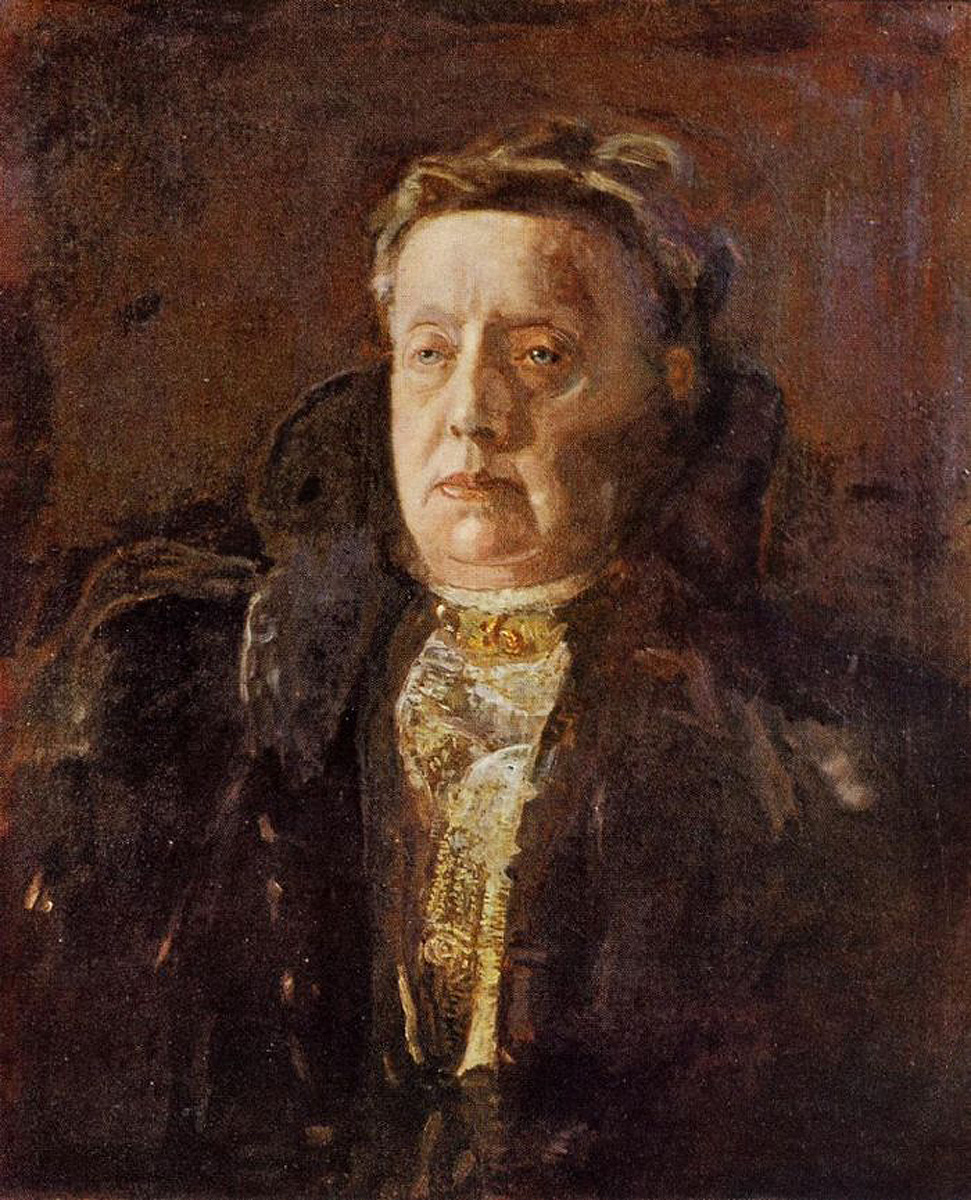
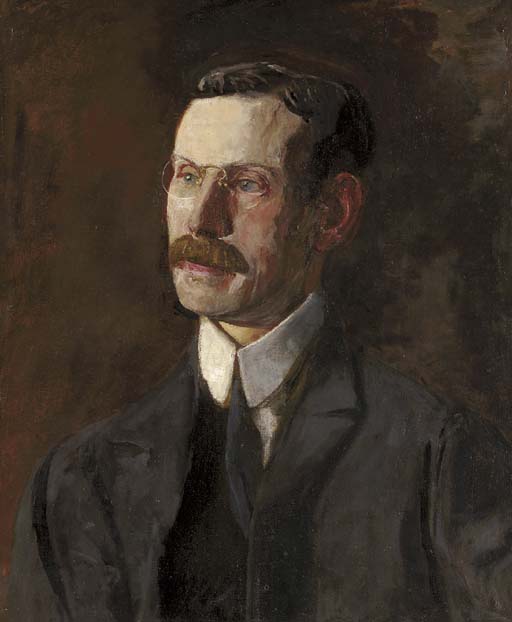


.jpg)
.jpg)
